Full coverage of our 2022 Conference and Expo


Revisiting Waikouaiti, and why lead is still important Built to poison? Leaching from in-stream structures Using native algae for nutrient pollution mitigation

| MAY 2015 ISSUE 189 water
NOVEMBER/DECEMBER 2022 ISSUE 227
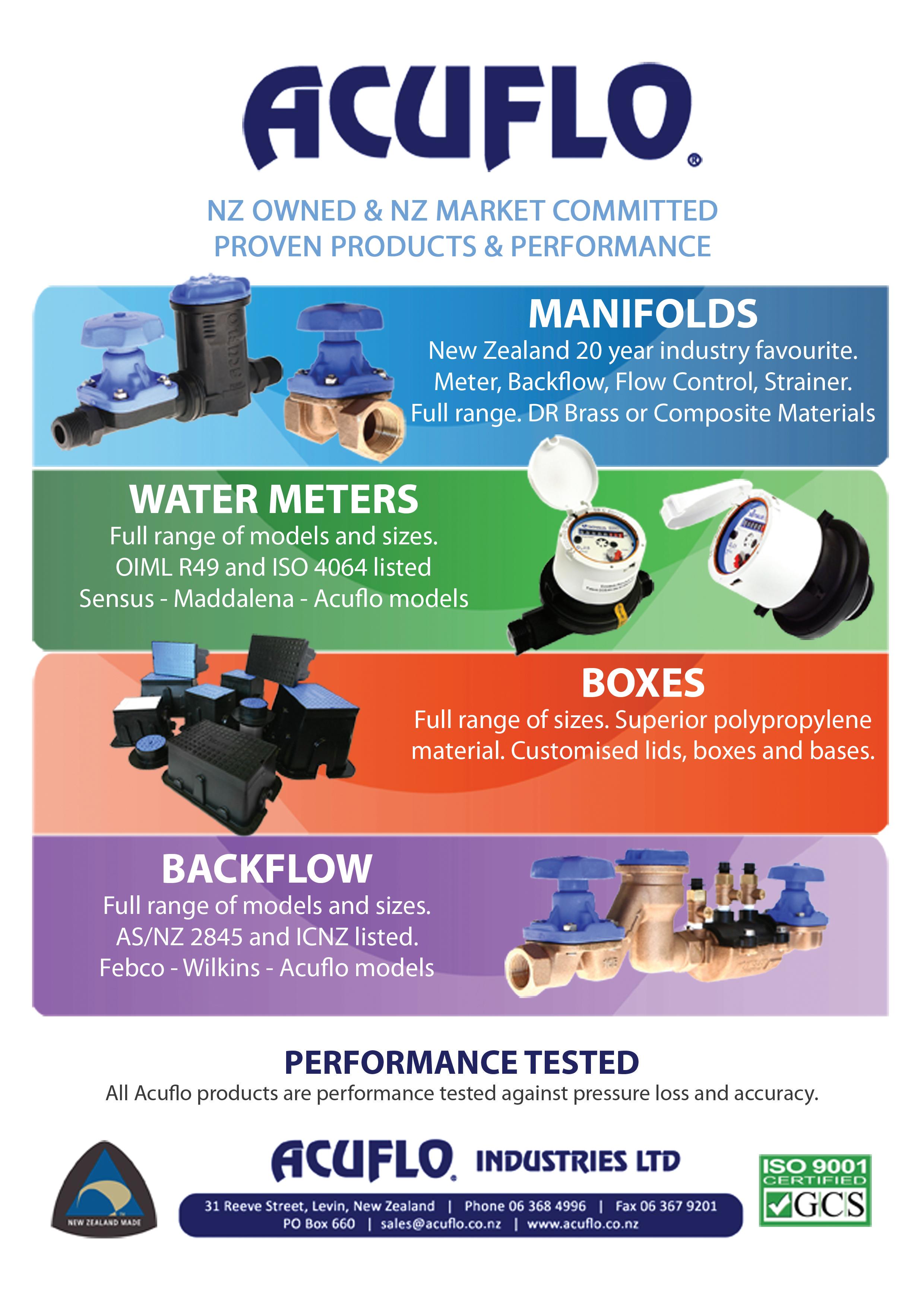
President: Lorraine Kendrick
Board Members: Helen Atkins, Troy Brockbank, Fraser Clark, Tim Gibson, Lorraine Kendrick, Priyan Perera, Dr Deborah Lind, Shelley Wharton, Chief Executive: Gillian Blythe
Water Group Co-ordinator: Katrina Guy
Administration Officer: Pip Donnelly
Technical Manager: Noel Roberts
Insight and Sustainability Advisor: Lesley Smith Training Development Manager: Mumtaz Parker Communications Manager: Debra Harrington Design and Marketing Coordinator: Paris Elwood Executive Administrator: Amy Samuelu
Bookkeeping and Administration assistant: Zoe Hubbard
SPECIAL INTEREST GROUPS
Backflow: Paul van den Berg, P: +64 27 509 9962
Climate Change: Jon Reed, P: +64 9 300 9267
Smart Water Infrastructure: Rachael Casey P +64 27 378 1401
Modelling: Fiona Macdonald, M: +64 21 390 781
Onsite Waste Water Management: Gareth Williams +64 21 985 892

Stormwater: Peter Christenson, P: +64 22 342 2164 Water Service Managers’ Group: Kalley Simpson, P: +64 21 223 3428
WeCan: Christine McCormack, P: +64 22 512 3553
Young Water Professionals:
AKL: Grace Stumbles +64 27 344 4572
WLG: Rumana Sayyad, P: +64 21 140 8271
CHC: Brad Mairs P: +64 22 107 1893
WATER JOURNAL
Editorial: Mary Searle Bell, Contrafed Publishing M: +64 21 676 034
Advertising Sales: Debbie Laing M: +64 27 455 0223
Design: Jonathan Whittaker M: +64 21 147 5591
Publishing: Contrafed Publishing, Managing Editor: Alan Titchall, 1 Grange Road, Mount Eden, Auckland 1024 PO Box 112 357, Penrose, Auckland, 1642 P: +64 9 636 5715
www.contrafed.co.nz
Distribution: Pip Donnelly P: +64 4 472 8925
DISCLAIMER: Water New Zealand reserves the right to accept or reject any editorial or advertising material submitted for publication. The opinions expressed in contributions to Water are not necessarily those of Water New Zealand. The information contained in this publication is given in good faith and has been derived from sources believed to be reliable and accurate. However, neither Water New Zealand, nor any person(s) involved in the preparation of this publication accept any form of liability whatsoever for its content including advertisements, editorials, opinions, advice or information. This extends to any consequences from its use. No part of this publication may be reproduced, stored in any retrieval system, or transmitted in any form or by any means electronic, mechanical, photocopying, recording or ink–jet printing without prior written permission of the publishers.
ISSN 1179-2949 (Print)
ISSN 2382-1906 (Online)
www.waternz.org.nz
Water NZ is printed on environmentally responsible paper, sourced from PEFC certified fibre from sustainably managed and legally harvested forests, and manufactured under strict ISO 14001 environmental management systems
INSIDE
President’s comment

Industry input needed for new water engineering master’s degree
Obituary: Nigel Hesford
CONFERENCE COVERAGE
An incredible team effort
Conference in pics
Keynote speakers
The value of water
Pūhoro students get a taste of water
Poster of the Year
Award winners
Critical wastewater pipe replacement
Over and above for the environment and community
FEATURES
Revisiting Waikouaiti, and why lead is still important
New moves to reduce lead contamination in water
Smart sensors to solve sewer network overflow and blockage issues

Auckland’s biggest water project finishes construction
Water woes over for marae
How wastewater could help native reforestation
‘Exceptional’ August atmospheric river sets record
Bridge to Bridge Project ends with staff planting day
Built to poison?
New questions about the freshwater impact of dairy farming
Using native algae for nutrient pollution mitigation
Estuary health check-up results now freely available online
Sunflowers and squash to brighten Kaipara water demonstration sites
REGULARS AND COMMENT PIECES
New suite of Acceptable Solutions provides alternative pathways for drinking water suppliers
An opportunity to create a world-class three waters system
Profile: Alexandra Hare
Profile: Silvia Vlad
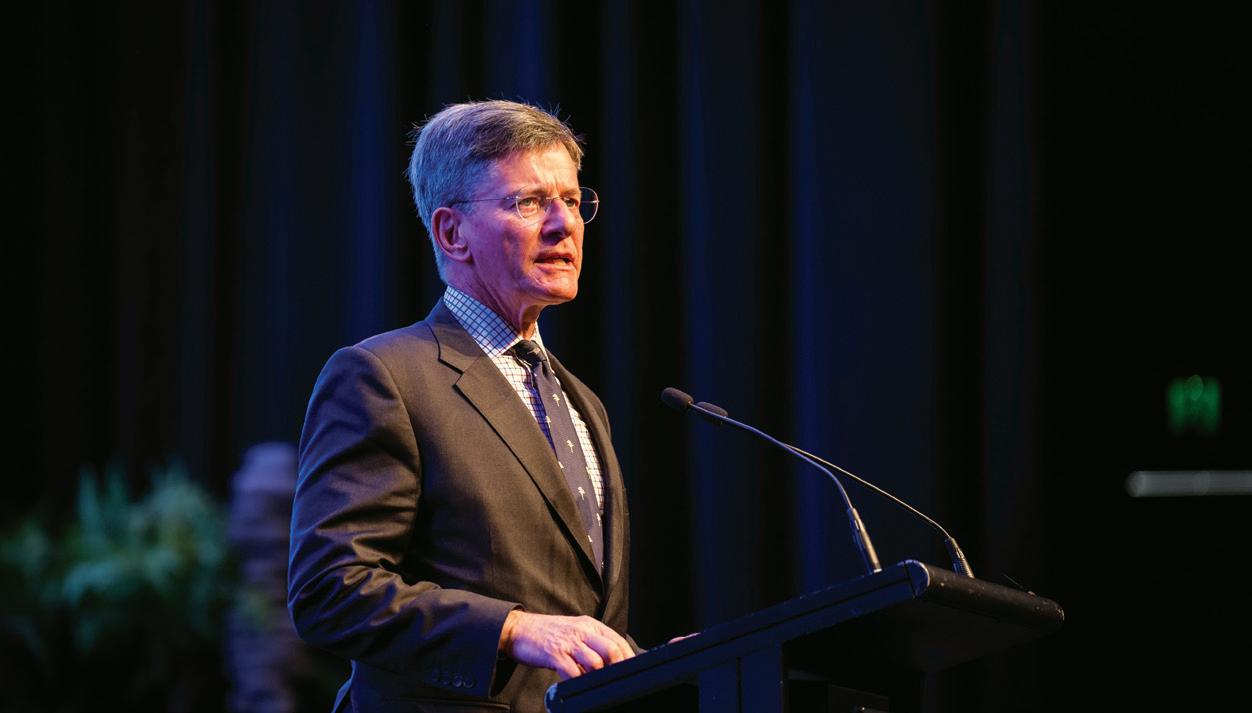
Looking at water through a different lens
Roadmap to a circular economy – What is needed for New Zealand’s three waters in a time of transformation
Recent case law and an update of freshwater reforms
OVERSEAS STORIES
The official journal of Water New Zealand – New Zealand’s only water environment periodical. Established in 1958, Water New Zealand is a non-profit organisation.

NOVEMBER/DECEMBER 2022 WATER NEW ZEALAND 3 CONTENTS WATER NEW ZEALAND
Issue 227 NOVEMBER/DECEMBER 2022
04
06
07
09
10
12
17
18
19
20
24
29
water 12
34
39
48
54
58
60
62
63
64
71
74
78
80
40
42
44
46
82
84
86
88
90
94
96
99 Responding
ka
tangata’ ‘If
-54 96
Astronomers find massive water reservoir
Plan to reshape the South East Queensland water cycle
Federal Court throws out pipeline permit for Cadiz Water Project
Robots in reservoirs
to the Ukraine conflict ‘Ka ora te wai, ka ora te whenua,
ora nga
the water is healthy, the land is healthy, the people are healthy’
Tihei mauri ora!
E ngā mana, e ngā reo, rau rangatira mā
Tēnā koutou, tēnā koutou, tēnā koutou katoa Nō Ireland ōku tūpuna I whānau mai au ki Belfast Ko Black te maunga Ko Lagan te awa Ko Lorraine Kendrick au Nō reira, tēnā koutou, tēnā koutou, tēnā koutou katoa
Kendrick President, Water New Zealand
Ifeel very privileged to be taking on the role of Water New Zealand president at such an important and pivotal time for our sector.
I joined the Water New Zealand family nearly 20 years ago when I moved to Te Awamutu in the mighty Waikato – a long way from my original home of Belfast.
Over the past two decades I’ve seen Water New Zealand grow from strength to strength and I am pleased to say that we recently reached a new milestone in our membership. We now represent 3000 members from across the many and varied roles of the water sector. It’s not surprising – this is a dynamic time to be working in water.
Whatever your views about the best way to resolve our long term systemic problems, there is now agreement from all sides that we need to address these issues. Water New Zealand will continue to support all our members through this process.
Our recent conference at Te Pae reflected the huge enthusiasm within our membership and the wider sector for meeting our challenges. The presentations were outstanding across so many streams, from te ao Māori to sustainability to asset management, along with workshops, panel discussions, forums and so on.
The conference was a great time for discussion and learning and it certainly reflected the huge and important sector that is water. I felt very proud to be part of this.
If you’re one of our newer members, I urge you to check out
the Water New Zealand 2022 Annual Review report – available on our website. I am always amazed how much this organisation manages to achieve in a year.
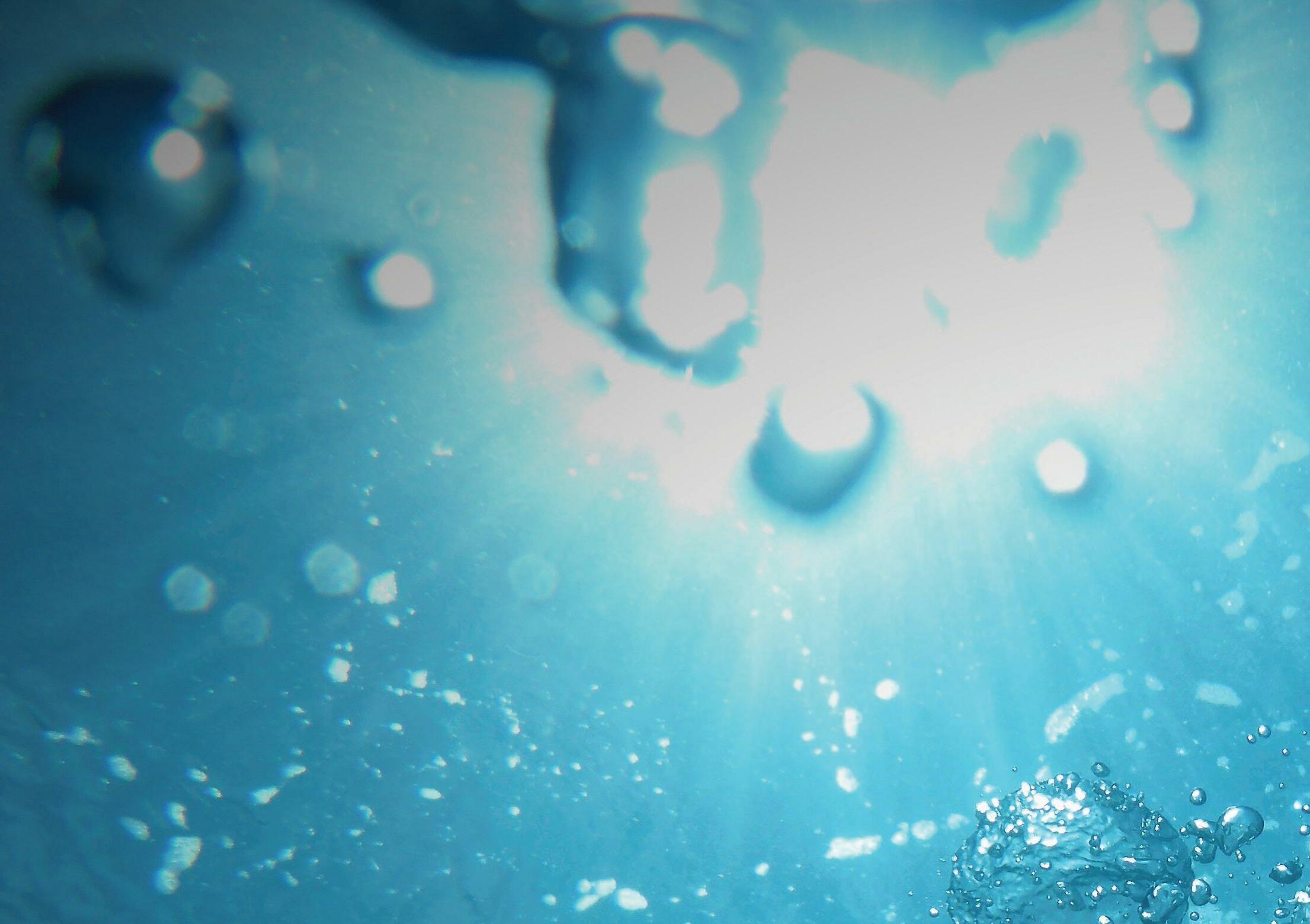

There are many different pathways for members to get involved in Water New Zealand – whether it is attending the Water Utility Association, Waters Services Managers Group, or participating in the numerous special interest groups. When you get a chance please have a read, as you may get inspired to get involved further.
I’d like to thank everyone who has supported and worked so hard to make us the ‘go-to’ water sector organisation that it is. This includes our chief executive, Gillian Blythe, my fellow board members, and especially my predecessor, Helen Atkins, who moves to the new role of immediate past-president. Her continued enthusiasm and support will be invaluable over the next two years.
In the meantime I wish you a very merry festive season and hope that you will take the opportunity to relax, enjoy time with friends and family, and come back in 2023 recharged and refreshed. Next year is set to be another busy and eventful year.
‘Ka ora te wai, ka ora te whenua, ka ora ngā tāngata’
‘If the water is healthy, the land is healthy, the people are healthy’
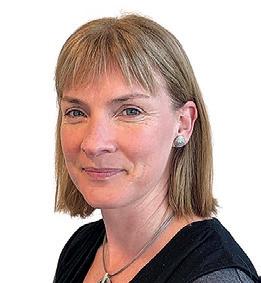
Ka kite anō
Lorraine Kendrick President
4 www.waternz.org.nz WATER NEW ZEALAND FROM THE PRESIDENT
Lorraine
When every drop counts

For over 90 years ADR has been there for New Zealand water authorities and Councils with our fieldsmart technology. From metering to control systems to pump controllers, we offer insight and expertise in the technology that helps you manage water and waste water to a high standard, with resources that are always limited.



www.adriley.co.nz
Industry input needed for new water engineering master’s degree
A proposed new degree aimed at improving tertiary education for specialised engineers is being developed, and proponents are seeking industry input into the scope and structure of the new qualification.

The new master’s degree in water and wastewater engineering is aimed at ensuring improving workforce skills to meet the rapidly changing environment.
The degree is aimed at ensuring a long term commitment to technical excellence, Te Mana o te Wai, and innovation. The scope includes the following:
• Improving education/research connections to support the long-term development of local research needed to put New Zealand at the forefront of engineering advancements;
• That Māori feel welcome and their viewpoints respected, with an emphasis on improving pathways into the degree;
• All graduates are biculturally competent and confident;
• Graduates have the proper mix of professional and technical skills to reduce the immediate training demands of employer;
• Knowledge and application courses are taught to a mix of degree students and professional development practitioners;
• Graduates are able to engage with innovative international best-practice, present at conferences, join international industry-leading working groups, and be considered peers at world-leading water service organisation;
• Students earn credits by working on applied projects designed by organisations through ongoing arrangements;
• Most students receive direct (fee payment for employees) or indirect (project employment) financial support from New Zealand employers;
• The degree is accredited at a master’s level by Engineering NZ;
• 25 graduates are ready for local employment each year.
The water services sector is undergoing rapid changes to improve outcomes for communities and the environment. It faces immense pressure to upskill the technical workforce to deliver on the stringent treatment standards and
higher expectations of organisational efficiency.
The sector will need an estimated 6000-9000 additional skilled workers over the next 30 years to meet these requirements.
While great effort is underway to prepare the previously underdeveloped trades skills needed, there is also a need to improve tertiary education for specialised engineers and continuing professional development (CPD) for those in the workforce to step up to new demands.
The current situation is a dispersed set of efforts in multiple universities, in-house education at employers, overseas new hires with stronger educational development, and one-off professional short courses run by sector associations such as Water New Zealand and Carbon & Energy Professionals.
Our country lacks critical mass to achieve its goals without coordination between multiple universities, employers, and sector associations.
By demonstrating a long-term commitment to supporting Te Mana o te Wai, we can create a new culture of technical excellence and innovation where the country is looked to as one of the world leaders in the water sector.
If the engineers with the specialised training could improve the efficiency of the new investment by even one percent, it could create a $1 billion value, or $1 million for each graduate in a programme of 25 students per year, over the next 40 years.
A small investment in a new programme could bring vastly greater benefits to the nation.
If you would like to support this initiative, we are looking for members to participate in a team to advance the development plans. If interested, please email n.singhal@auckland.ac.nz.
Content supplied by Mark Milke, Department of Civil and Natural Resource Engineering, University of Canterbury; Naresh Singhal, Department of Civil Engineering, University of Auckland; Nicola Brown, Department of Operations and Engineering Innovation, Massey University; and Raveen Jaduram of Jaduram Ltd.
WATER NEW ZEALAND UPFRONT
Thirst for cultural knowledge
The popularity of Water New Zealand’s training programmes over the past year is an indication that members are keen to upskill and meet the future challenges of the sector.
One of the most popular and over-subscribed training modules of 2022 has been the Cultural Significance and Importance of Wai module.
The course, which began in March 2021, helps participants gain greater cultural awareness, respect and understanding of Te Ao Māori (the Māori world view) within the water sector and what it means to give effect to Te Mana o te Wai – a concept introduced in the National Policy Statement for Freshwater Management 2020 (NPS-FM 2020) and included in the water services legislation.
Recognising and working to enhance the mana of the water, the importance of clean, healthy water and the connections and interdependencies of water through a Te Ao Māori lens will underpin the work of the sector in the future, and there’s been a huge appetite to understand more.
Water New Zealand training and development manager, Mumtaz Parker says it was important to keep numbers for each module limited to ensure an inclusive experience for all participants but it also meant that many people missed out, despite scheduling an extra module.
“Our calendar is already set for next year so I would encourage people to get in and register early so that they don’t miss out.”
The digital badge series, designed to give
people who work in the water sector a basic understanding of various aspects that make up the sector, has also been going from strength to strength.
The year began with Drinking Water 101, Wastewater 101, Stormwater 101, as well as Backflow 101.
During the year, a new digital badge was added – Small Water Supplies 101, with Drinking Water 201 now well in development.
Other courses already underway include Sampling 101 and SCADA 101.
“Looking ahead to next year, we’ll be working to develop new courses around further understanding of wastewater processes and other digital badge opportunities.”
Modelling and stormwater professionals gather
More than 60 Water New Zealand members came together in Auckland in September for a joint event hosted by the Modelling and Stormwater groups.
Auckland Council’s principal –hydrometric analysis, Kris Fordham presented his Stormwater 2022 Conference paper, ‘Where is the rain? –
The future of Rainfall Data’, and 5S YWP conference attendance winner from the
Obituary: Nigel Hesford
We were very saddened to learn of the recent passing of Nigel Hesford, not long after attending the Water New Zealand Conference & Expo in October.
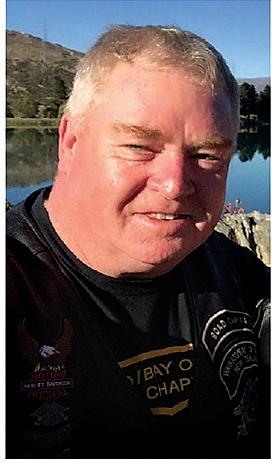
Nigel was very passionate about the water industry and particularly training. He was well known for his professionalism and integrity and respected in drinking and wastewater reticulation.
Nigel worked at Connexis as a water training consultant, with a particular focus on the North Island, but also assessed Level 5 and provided advice nationally.
Our condolences to his family, colleagues, and friends.
Water Conference and Expo 2022, Ashleigh Dick, spoke to the gathering about young water professionals embracing the culture shift in the three waters sector.
Modelling Group chair, Fiona Macdonald noted the energy in the room and signalled that there will be more Modelling Group events over the next few months. Watch this space.
Stormwater Training & Education sub-group chair, Clare Feeney told the gathering how
delighted she was when Fiona suggested that the Stormwater Training & Education group co-host this event.
“Our special interest groups have a lot to offer each other, and meetings like these help us make a real difference in the water world.”
The groups would like to thank Hydraulic Analysis for its sponsorship and ongoing support, and in particular to Elliot Egan for his organisation of the event logistics.
New water management guide for exterior cleaning
The Exterior Cleaning Industry Association (ECIA) was formed in direct response to the 2020 Auckland drought and associated water restrictions.
ECIA’s members undertake work such as the cleaning of driveways, gutters, pathways, playing surfaces, roofs, windows, wall claddings and vehicles.
Water restrictions impacted directly on the operations of its members. In response, the ECIA Code of Practice (CoP) was developed, which covers off on good water management practices.
The guide can be downloaded from www.ecia.co.nz.
NOVEMBER/DECEMBER 2022 WATER NEW ZEALAND 7

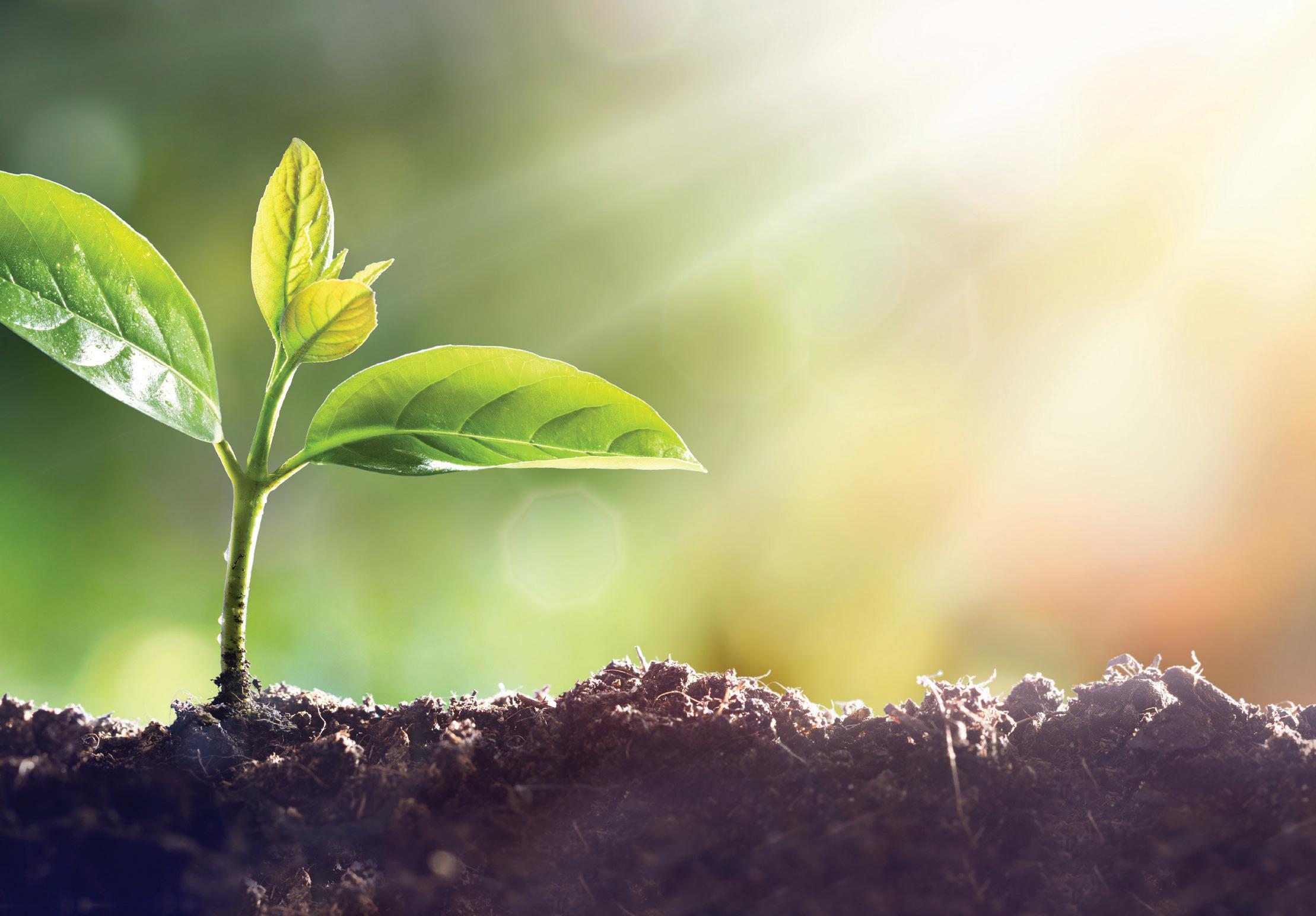



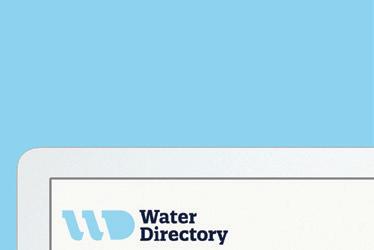




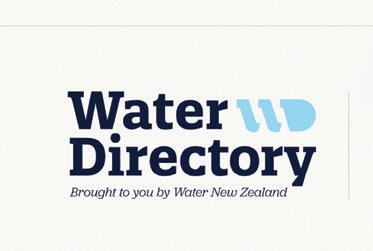
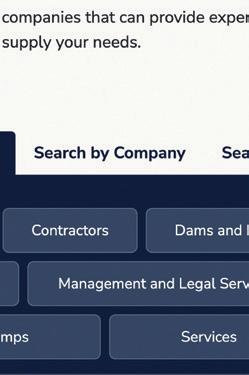


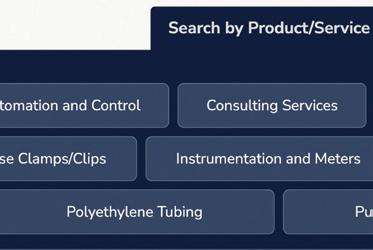

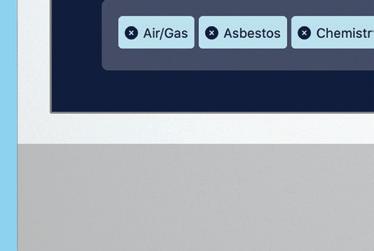
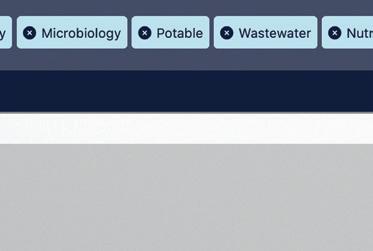







8 www.waternz.org.nz WATER NEW ZEALAND UPFRONT 8 & 9 February 2023 | UTS, Sydney View Program & Register waterdirectory.org.nz “The Water Directory is gold for identifying suppliers” Brett Eaton, Stantec Sector Lead – Water Infrastructure Principal – Water/Wastewater Infrastructure and services in the water sector Water Directory
An incredible team effort
By Gillian Blythe, Water New Zealand chief executive

Thank you to everyone who helped make the record-breaking Water New Zealand Conference & Expo 2022 such an awesome event.
We welcomed more than 1000 delegates over the two-anda-half days of presentations, workshops, social events, and gala dinner. We also welcomed more than 400 extra visitors to more than 230 stands – not forgetting the Taumata Arowai/ Department of Internal Affairs National Transition Unit preconference workshop attended by 300.
This was a huge team effort over many months which all came together at Te Pae to ensure that our days were filled with rich discussions and learnings.
There was so much to talk about – from reforms and innovation, Te Mana o te Wai, partnerships, sustainability – the list goes on. What was evident to me was the enthusiasm and optimism of the people who work in water or who have an interest in water.
This conference reflected the dynamic industry that we’re lucky enough to work in and the passion of the people who work in water.
At our AGM, held in conjunction with the conference, the president’s mantle was passed from Helen Atkins to Lorraine Kendrick.
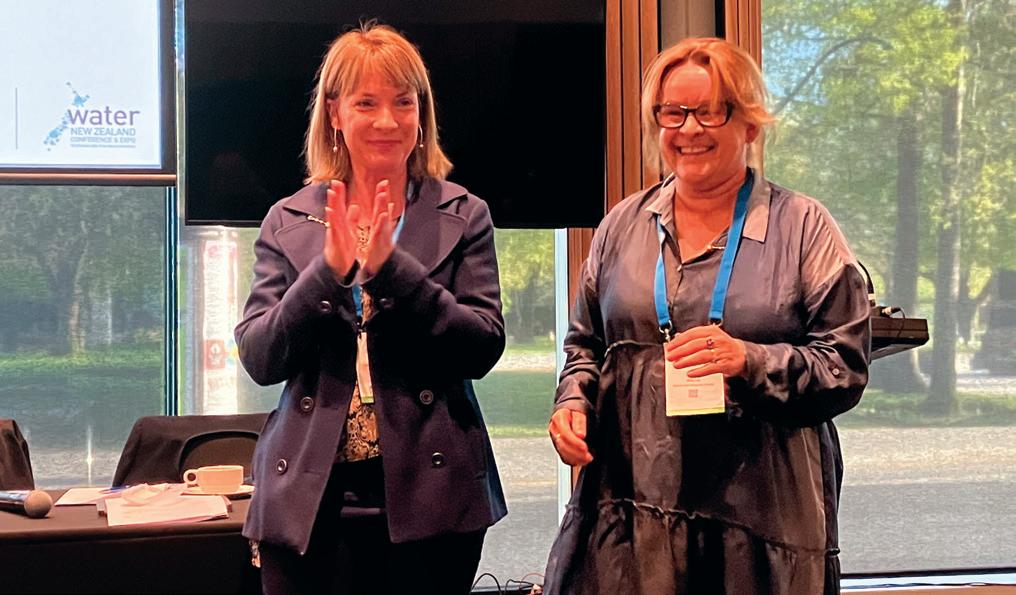
We all appreciate the great support and contribution from Helen during her time in the role and we’re delighted that she will remain on the board in the newly-created past president position.
We welcome Lorraine’s tenure as new Water New Zealand president for the next two years.

With that, please remember that our conference isn’t the only opportunity to get together with us. There are many other opportunities for you to stay in contact.
With major changes to the delivery of Three Waters on the horizon, it’s important that we are able to continue to engage with our members and ensure you have every opportunity to take part in discussions about the future shape of the sector.
Please keep an eye on our website and LinkedIn pages, sign up to our Pipeline e-newsletter, attend or record our monthly Virtual Coffee Catch ups, join our special interest groups, and keep up to date through webinars and regional get togethers.
Our membership is at an all-time high and we want to ensure we’re continuing to work for you.
NOVEMBER/DECEMBER 2022 WATER NEW ZEALAND 9
Immediate past president Helen Atkins (right) with incoming president Lorraine Kendrick.
Conference in pics
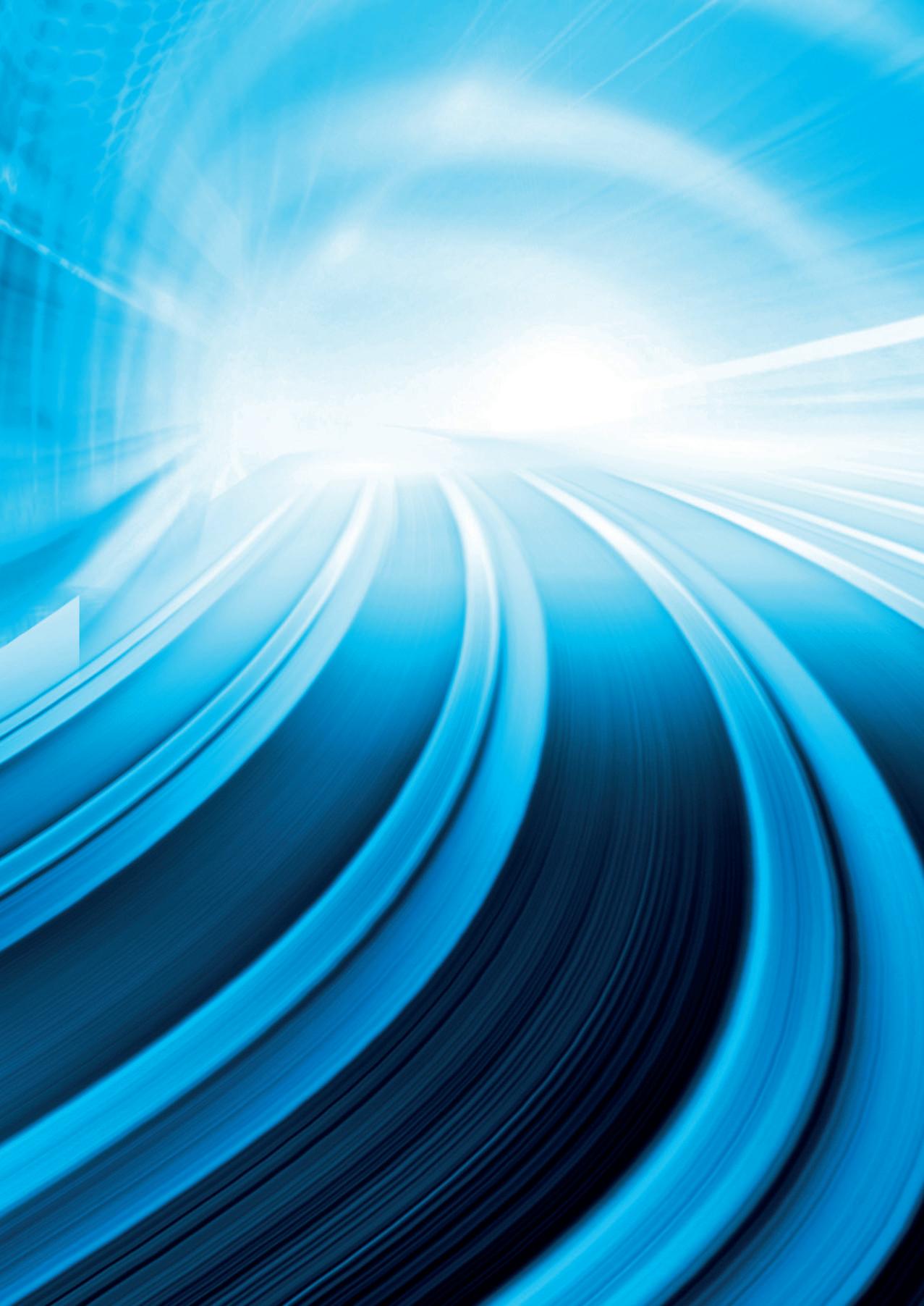

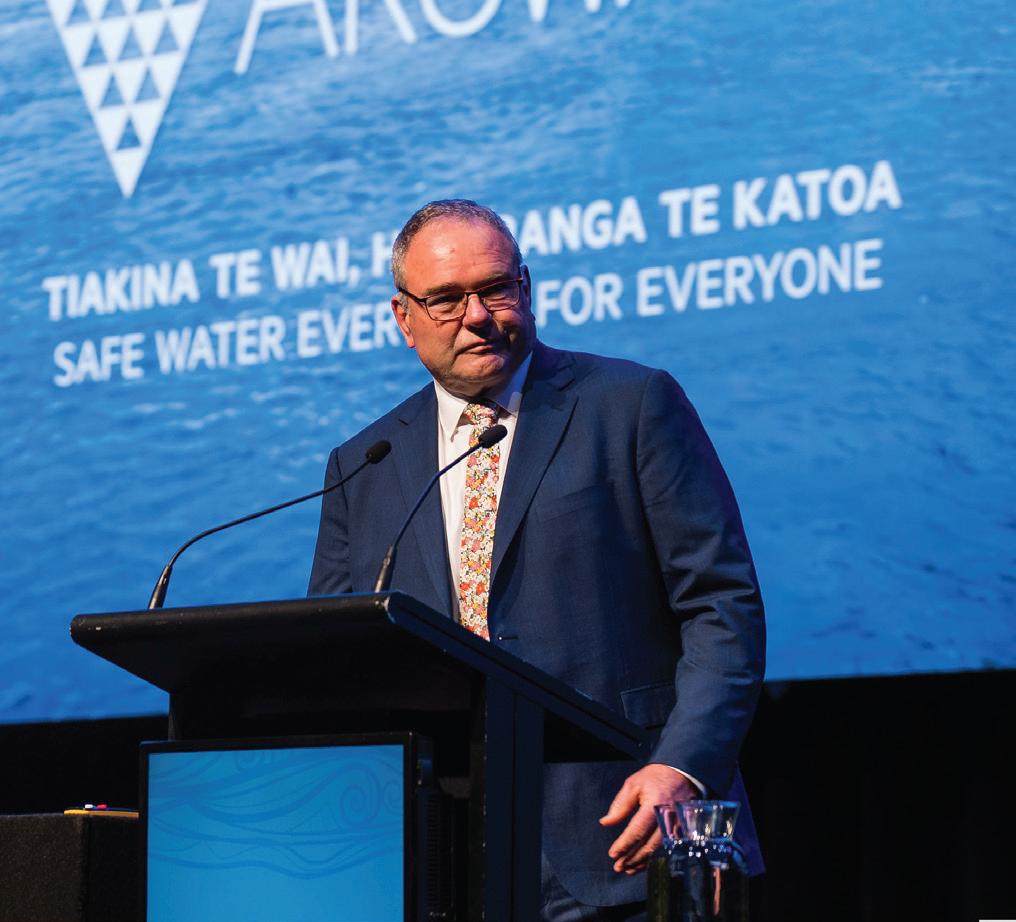

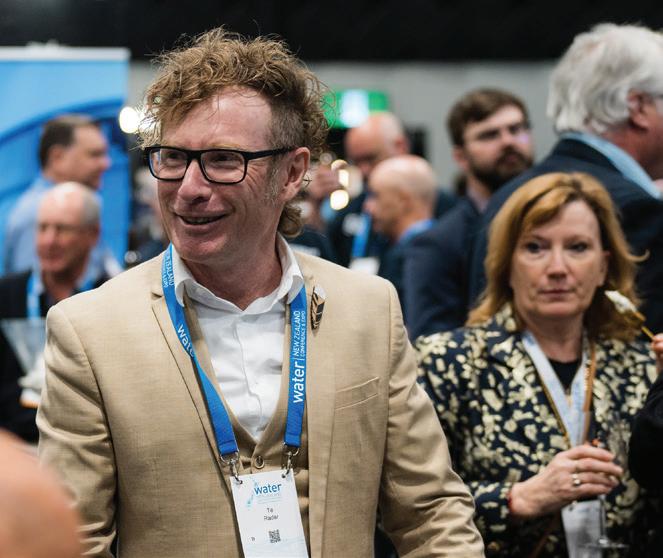
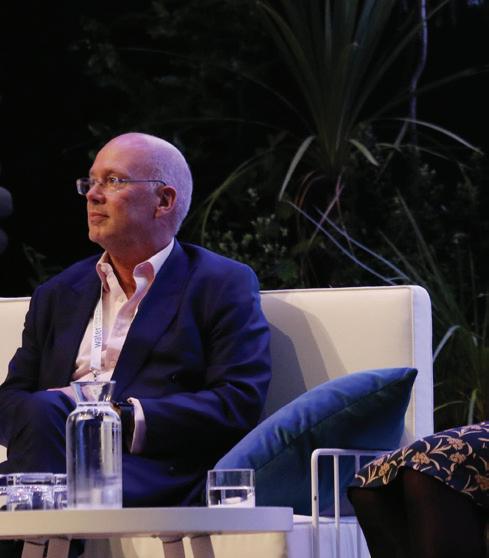

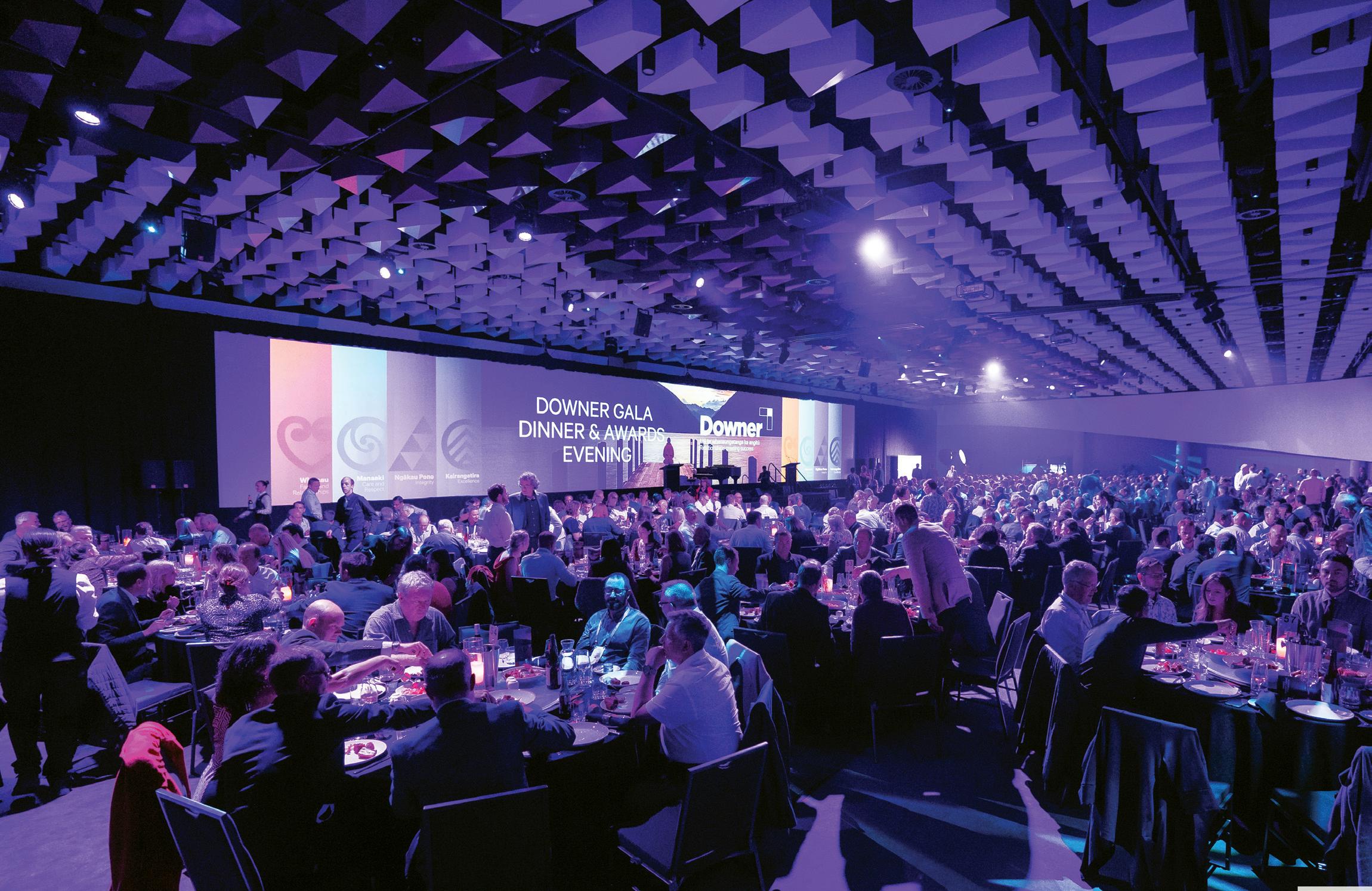
WATER NEW ZEALAND CONFERENCE
3 6 4 7
1. Downer Gala dinner and awards. 2. Singer songwriter Stella Maris performs at the predinner welcome. 3. Bill Bayfield, CEO of Taumata Arowai, gives his keynote address. 4. Liz Brown, Te Rūnanga o Ngāi Tahu, and Craig Pauling, Environment Canterbury councillor, presenting at the Te Ao Māori Thought Leadership stream on co-governance. 5.Young water professionals get together at Young Water Professionals (YWP) breakfast. 6. Joan Davidson of Morrison Low chats with fellow guests at the welcome function. 7. Conference MC Te Radar at the Intergroup welcome function. 8. Fireside chat with Watercare chief executive Jon Lamonte, Emily Afoa (centre) and Hannah Edmond (right). 9. Will Rowson of Christchurch City Council chats with Water New Zealand's Lesley Smith. 10. More than 142 companies exhibited across 236 stands.


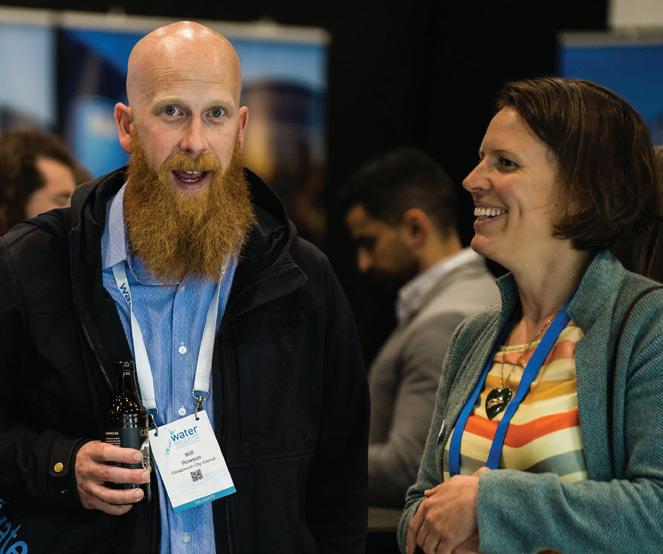


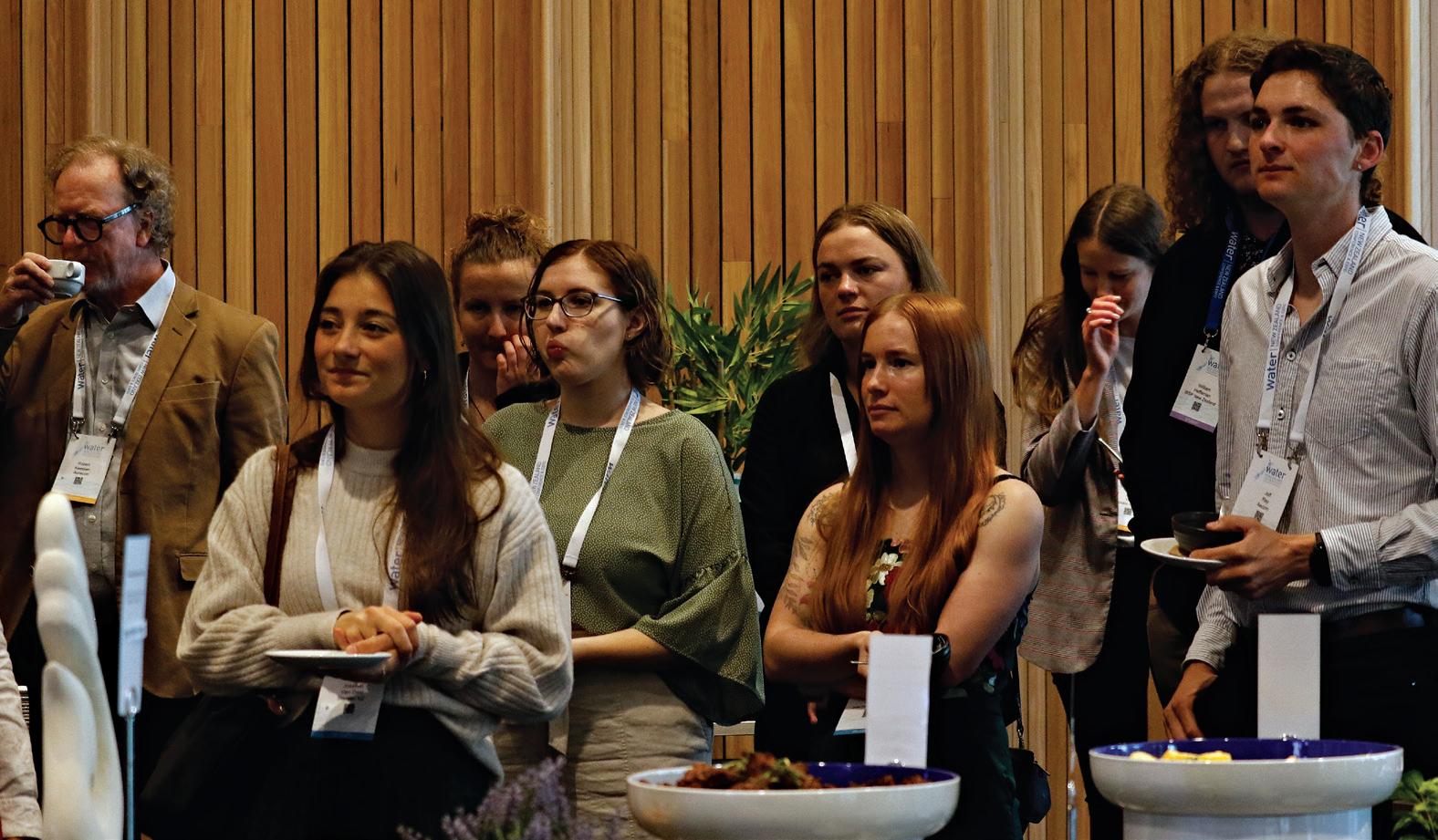
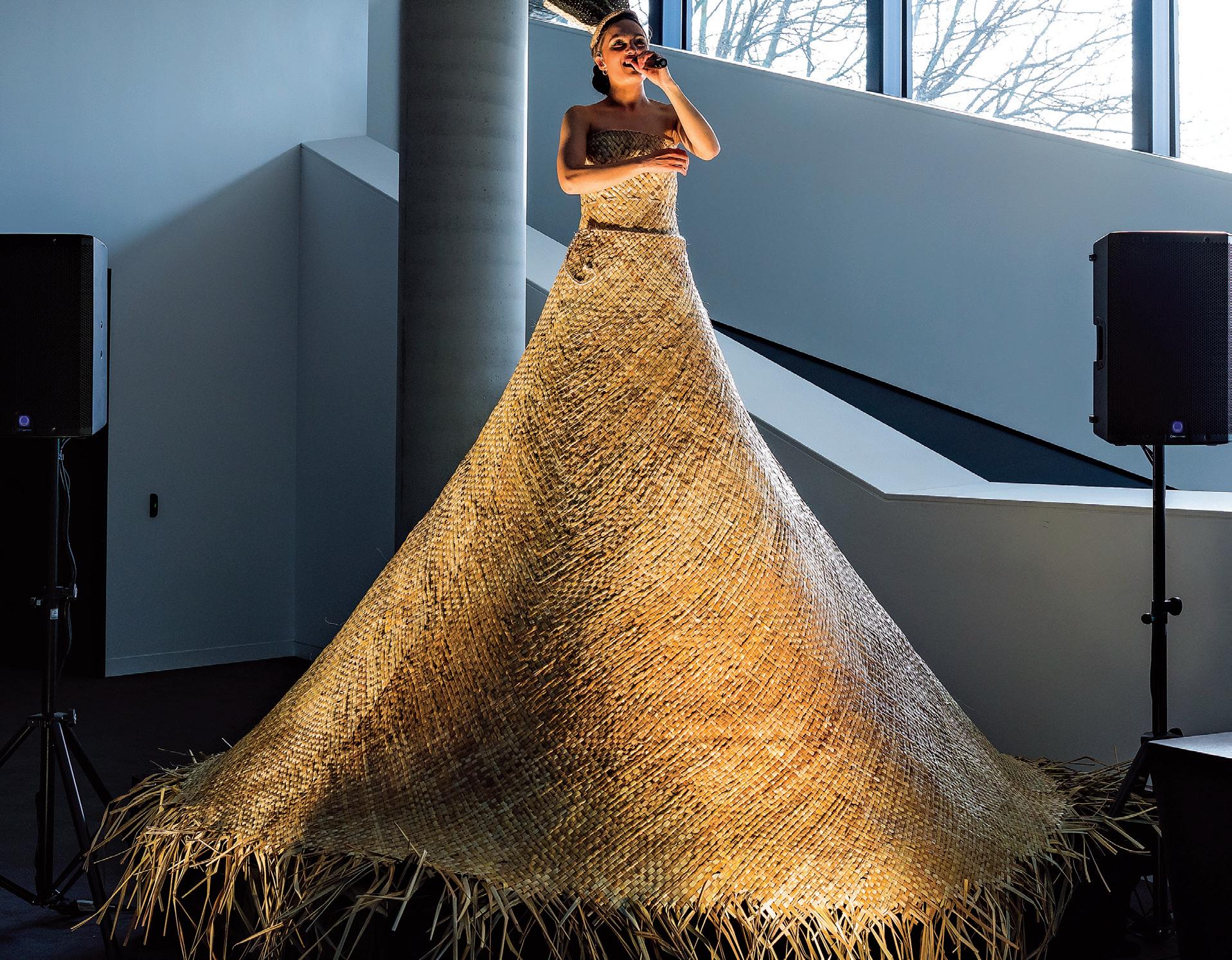
1 2 5 8 9 10
Keynote speakers
Co-governance – a poorly understood concept
Treaty Negotiations Minister in the Key government, Chris Finlayson told conference delegates that much of the controversy around co-governance is because it is not well understood by many commentators.
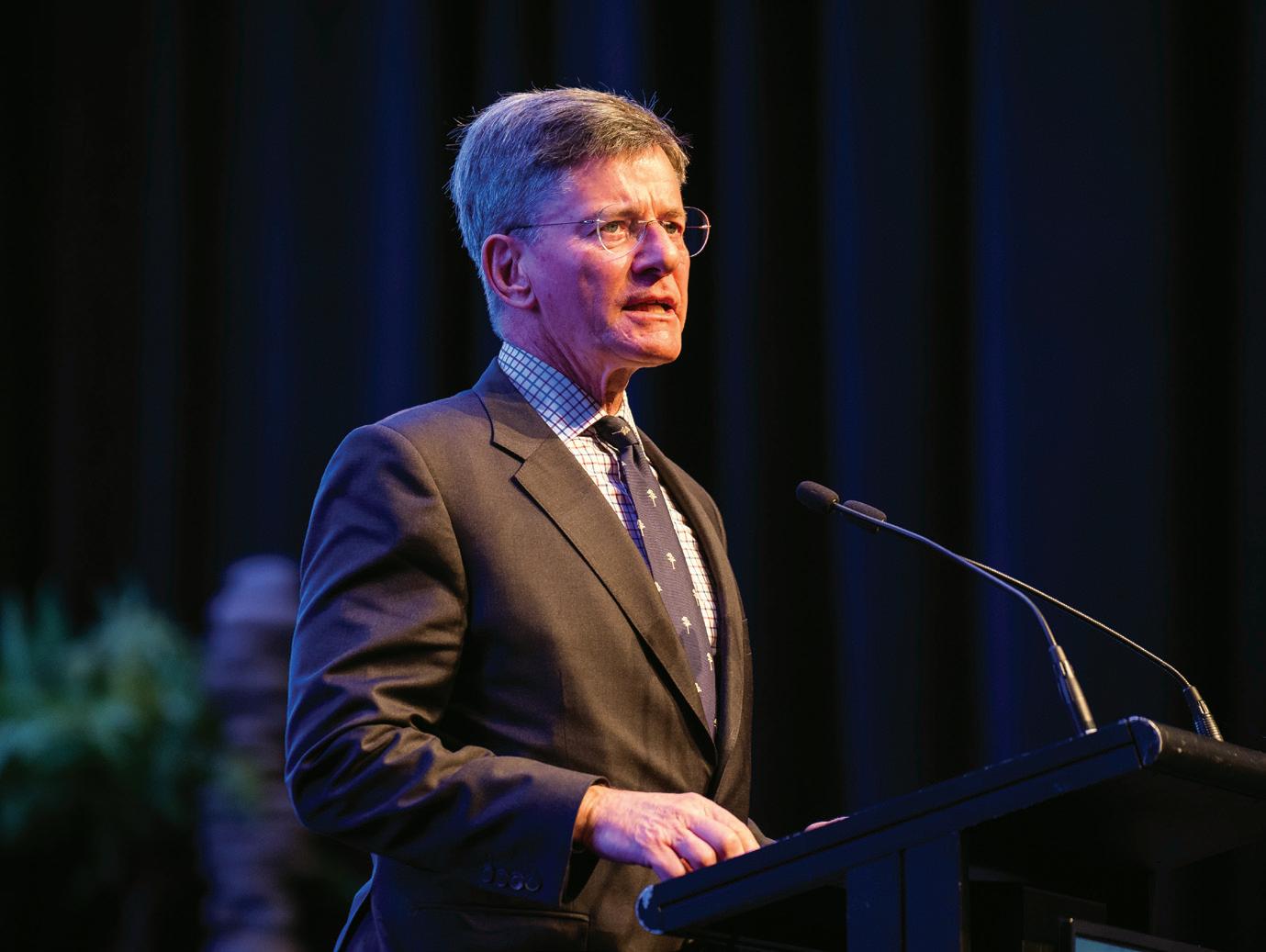
He stressed that co-governance does not mean co-government. Co-governance arrangements, he says, are joint management or treaty partnership agreements.
During his time as minister and beyond there have been a number of signficant cogovernance agreements with iwi, both as part of treaty settlements as well as through local arrangements.
Co-governance, he says, represents the idea that in some areas of policy, particularly in conservation and the environment, it makes sense for central and local government to work in equal partnership with iwi to try to address a particular problem.
“When we talk about co-governing a natural resource, we’re talking about the Crown, local government and the treaty partner working through issues to improve matters.
“Co-governance is appropriate from a treaty perspective because it recognises that iwi have a role in managing significant natural resources that are of significance to all of us.
“This was an issue that I faced as treaty minister, that iwi had been prevented from being able to step up, exercise their rangatiratanga and look after the environment, for almost two centuries.
He pointed out that co-governance can also make practical sense.
“Why not have iwi who are usually the most connected to, and who have a great deal of knowledge about a natural resource, why not have them at the table? Everyone can benefit from that.”

He says take for instance the state of fresh water in Te Waipounamu – the South Island.
“In many areas, it’s not flash. So it’s not as if the Crown with all the power it’s had over the last century has had a great deal of success in managing resources – quite the opposite.”
So the Ngāi Tahu view, he says, is that they can step up and work with central and local government to improve matters.
“From a practical viewpoint, I would have thought that is something that all New Zealanders would want.”
Speaking as a now private citizen, the former minister pointed out that co-govenance with indigenous popoulations is not new, or even confined, to New Zealand.
In the United States for instance, the state of New Mexico has a long history of co-governance arrangements with the Native American population.
He says there have been a number of cogovernance arrangements between central, local
government, and iwi over the years.
One example is the Waikato River Authority model where the authority has significant regulatory power over the Waikato and Waipa rivers.
Other arrangments include over the Whanganui river arrangements (legal personality) which reflect the deep connection of more than 600 years of Whanganui iwi and their awa.
The Auckland Maunga Authority looks after the city’s volcanoes, albeit with slightly less authority than Waikato River Authority.
Further south, the Hawkes Bay Regional Planning Committee was set up to avoid having a series of different river boards while there are other arrangements such as the Manawatu river advisory group working with Horizons.
“At its core, these are (set up) to facilitate just and durable settlements but also to care for the environment and get better outcomes for all.”
12 www.waternz.org.nz WATER NEW ZEALAND CONFERENCE
Treaty Negotiations Minister in the Key government, Chris Finlayson.
Learning to thrive
Motivational speaker Abbas Nazari inspired delegates with his tale of being a refugee from the Taliban and his family’s escape. He wrote a book detailing the saga, After the Tampa, from Afghanistan to New Zealand.
Abbas grew up in the small village of Sungjoy, in the mountains of Afghanistan at a time when civil war saw fighting between the different cultural groups. By 1996, the Taliban had taken over most of the major centres.
Overnight, we had a new country, new rules, new flag, says Abbas. We soon realised this new country was one no one wanted to live in.
“Every day there were fewer kids in school, more houses boarded up, less livestock as people sold up their assets and left.
“It was only a matter of time before dad said, we have to leave as well.”
In 2001, the family climbed into the back of a friend’s truck, covered themselves in tarpaulins and boxes, and travelled through the mountain passes to a refugee camp outside Quetta, Pakistan.
In refugee camps, Abbas said, you have two choices: One, wait it out – and hope the situation improves so you can return home; or two, apply
through the UN refugee agency for resettlement in another country.
“Either way, an endless waiting game.”
But, if you have the means, the money, the risk aptitude, you look for another way out, he said – the third alternative is to seek asylum.
Abbas’ family’s choice was to try and get to Australia. They made it to Indonesia then hopped on a boat to cross the Indian Ocean – however, it was a rickety old wooden fishing boat, and the engine soon gave out.
Then the overcrowded boat hit a massive storm – Abbas said that in the huge swell, bodies, luggage, human waste, and water were constantly rocked back and forth.
“It was the scariest experience of my life.”
The next day, the Norwegian freighter MV Tampa comes to the rescue, picking up the 433 asylum seekers and five crew, and headed to Australia’s Christmas Island.
However, before they arrive, Captain Rinnan is told Australia is closed to refugees, triggering a political controversy, and the Tampa making headline news around the world.
The refugees end up living on deck of the ship for weeks – Abbas says the crew opened a few
empty containers to use as sleeping quarters and as bathrooms – while the debate over where the ship could offload them raged.
Prime Minister Helen Clark offered to take some of the refugees and Abbas, with around 140 others, headed to New Zealand.
After six weeks at the Mangere Refugee Centre where “they fattened us up”, his family was resettled in Christchurch.
“Our starting position was zero. We had nothing. Didn’t speak the language. We were dependent on others every step of the way.”
He says it was very demoralising, especially for his parents. “But eventually we learnt to stand up on our own two feet.”
Having arrived as an eight-year-old with no English, Abbas went on to place third in the national Spelling Bee a few years later, play representative rugby, and graduated from the University of Canterbury with a Bachelor’s in Diplomacy and International Relations. In 2019 he was awarded a Fulbright scholarship where he has completed a Master’s at Georgetown University in Washington DC.
“It’s not where you come from but where you are now,” he told conference delegates.
“We’ve all come from somewhere else. Some have more direct journeys than others, but now we’re here, we have to make the most of it.”
Te Roopu Wai Awhatanga
If these resonate with you, or you have another stormwater interest – submit an abstract and paper for the conference or participate at the conference.
Be a part of the discussion.
There are two options for abstracts:
Short Abstract, Full Paper & Presentation: A 500-word abstract is to be submitted for review. On acceptance to the programme a full paper is to be prepared and submitted for review by Thursday, 6 April 2023
the Three Waters Reform affect you?

Do you want to share your knowledge of any of the below?
Long Abstract & Presentation Only: A longer 1,500-word abstract is to be submitted for review. On acceptance to the programme presentation materials are to be prepared and submitted by Wednesday, 19 April 2023.
NOVEMBER/DECEMBER 2022 WATER NEW ZEALAND 13
BROUGHT TO YOU BY Proudly brought to you by Water New Zealand
23 25 May | Cordis, Tamaki Makaurau Auckland Find out more at stormwaterconference.org.nz Welcome | Nau mai to western science/knowledge and mātauranga Māori practitioners alike The call for abstracts is now open for the Stormwater Conference & Expo 2023, and will close at Tuesday, 31 January Do you want to improve or share your understanding of kaupapa Māori? How can stormwater respond to the to National Objectives Framework and Te Mana o te Wai? Want to be ahead of the game on climate change? Are you an innovator? How does
Mātauranga Māori Resilient communities Sustainability Water quality Industry capability Flood management Science & Engineering Operations Engagement Technology Freshwater Research Karanga | Call for Abstracts for Next Year’s
Stormwater Conference
Keynote speakers cont'd
New opportunities to innovate and collaborate
In her conference opening address, Local Government Minister Nanaia Mahuta said the scale of the four new water entities will provide new development opportunities for the people currently in the sector as well as attracting new people.
The additional capacity and capability will enable a highly skilled and adaptable water workforce whose ability to innovate and collaborate will drive positive outcomes.
She said the reform programme is focused on delivering a seamless transition, laying the foundations for long-term transformation.
The minister spoke about the need to maintain certainty and stability through the transition process as well as maintaining momentum.
The Water Services Entities Bill is due to be reported back from the Select Committee this month (November).
It sets up the framework to create a new service delivery system with “the scale and structural change to enable the significant investment required in water infrastructure which is currently out of reach of individual councils and a huge cost burden on current and future ratepayers”.

“We want a system which benefits all
New Zealanders through being focused on delivering for the communities they serve and leveraging new technologies, while also building awareness around the role every New Zealander has in the water system to value our taonga – our precious water resource.”
She said the reforms will deliver healthy and safe water to all households through a uniquely New Zealand approach guided by the principles of Te Mana o te Wai and upholding the Treaty of Waitangi.
“While councils will continue to own the assets, the entities will operate independently enabling strategic long-term investment in water services that is not dependent on other demands on council funding.”
Further legislation will set out the detailed functions and powers of the entities, provide the means to transfer assets and liabilities from local authorities to the entities, and ensure their effective integration into planning systems including resource management.
There will also be further legislation to establish an economic regulation and consumer protection system.
She said it is crucial to continue to refine aspects of the proposed new system as well as mechanisms for transition through
continued partnership with the local government sector, iwi/mana whenua, and industry.
She urged the sector to continue to engage with the Government as further legislation is introduced.
The National Transition Unit is currently partnering with councils and iwi to develop ‘Entity Initial Asset Management Plans’ which will set out the capital and operating work programme for 10 years.
The Entity Initial Asset management plans will be approved by the Entity Boards by mid-2023.
“These plans will ensure that the existing three waters infrastructure investment pipeline continues and the transition from councils to the water service entities does not interrupt the supply chain.”
The minister concluded by reiterating that the changes and reforms present an opportunity to be aspirational about how we want key services to be delivered in the future.
“Through our engagement with iwi/Māori we have worked to ensure that Te Mana o te Wai considerations will be front and centre of the new delivery system – this approach will benefit the whole system of reform.”
We need a more enlightened view of our natural waters
The journey of Ngāi Tahu settlement in Te Waipounamu, the tribe’s treaty claim and eventual apology and settlement in the 1990s, and the vital importance of water to mana whenua laid the foundations for a wide-ranging discussion between former long-serving chair of the Ngāi Tahu Māori Trust Board, Sir Tipene O’Regan and Water New Zealand chief executive Gillian Bythe.
The conversation was pre-recorded, and an abridged version of the hour-long discussion was played to an attentive audience towards the close of the Water New Zealand Conference & Expo 2022.
“I felt very privileged to have had this opportunity to speak with such an eminent leader and I appreciate his generosity in sharing his huge wisdom and knowledge,” says Gillian.
Tā Tipene explained how water has always been at the core of Ngāi Tahu’s heritage, customs, and traditions.
He spoke of the huge change in attitude towards treaty issues in recent decades but how they have come about over a very broad front.
He also addressed the importance of understanding and applying the principles of the treaty rather than arguing over the actual wording of the treaty because, he says, it’s the
principles that survive changes of events and circumstances.
Looking into the future, Tā Tipene is optimistic that issues around water rights will continue to be addressed and resolved but his big concern is for the long-term sustainability of this precious taonga.
“I’m very keen to make sure that we as a people as a nation, we take a much more enlightened view of the utilisation, maintenance and protection of our natural waters.”
E te rangatira, Nō mātou te tino whiwhi ki te noho i raro i to tino mōhiotanga. Nā reira, ka nui te mihi maioha kia koe.
14 www.waternz.org.nz WATER NEW ZEALAND CONFERENCE
Rivers too dirty to swim in
In her keynote address, Gabrielle Huria, chief executive of Te Kura Taka Pini (Te Rūnanga o Ngāi Tahu), explained why her iwi supports Three Waters reform.
Gabrielle lives on a Māori reserve between Kaiapoi and Rangiora in an area where her ancestors lived, walked and fished for many generations. A key river for Gabrielle’s iwi is the Ashley-Rakahuri, a waterway that has always provided a rich source of mahinga kai.
But she told delegates at the conference that, during the course of her life, the wider environment and the river have become filthy. Each year it is getting worse and she now doesn’t see a future where the next generations will be able to enjoy the river and harvest from it as she and previous generations have.
“Over my lifetime, I’ve seen the deterioration of waterways, lakes, rivers. I now have young people working in my team in their late 20s who have never swum in a Canterbury river.
“Today when you whitebait you have to
disinfect your hands before you have your lunch because the water is dirty.”
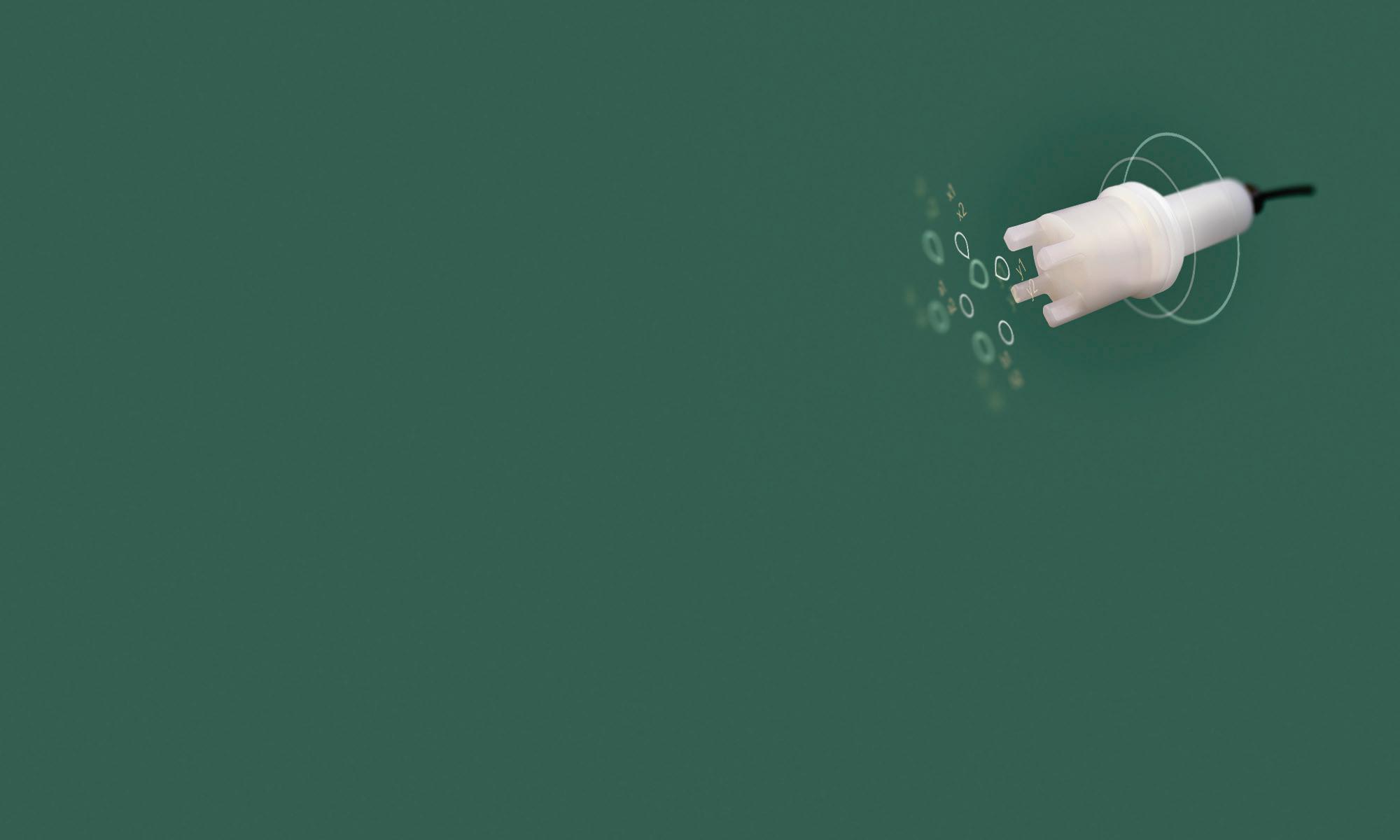
She told the audience that Ngāi Tahu does not accept the current state of fresh water.
“We have rights and interests that need to be recognised and we want to use our authority to improve the state of fresh water in our tribal territory.”
This is part of the reason Ngai Tahu support the three waters reforms. The tribe, she says, will no longer accept the historical under investment in the three waters.
She pointed out that Māori communities have been disporportionately overlooked by councils for reticulated water supply.
“Ngāi Tahu has 18 territories across the takiwā, only six have reticulated water supplies. Still today, waste and stormwater is discharged on traditional food gathering grounds and wāhi tapu. We’ve had to bear the cost of lack of suitable planning and management.”
She said the tribe supports the intent of the three waters reform because all New Zealanders have a
right to clean drinking water.
“For Ngāi Tahu, we seek reform as a way to shift services away from 67 councils who have all done things in different ways and the cost of this inefficiency has become too great.
“We know people do best, but as a politician with competing demands, it’s difficult to choose to invest in underground infrastructure in favour of a beautiful resource for the community such as a library.”
Ngāi Tahu doesn’t agree with the views of the bigger better off councils that say they have the capacity to go it alone.
“We’re all citizens of the South Island and we need to do this together. Bigger councils need to think about the smaller communites that don’t have the resources.”
Gabrielle also spoke about concerns over the huge spike in nitrates in water and lack of equity across the region, as well as the recent Court of Appeal decision over water bottling, and Te Mana o te Wai. You can listen to her full speech on the Water New Zealand website.
The multi-beam difference
Phathom’s technology offers new levels of accuracy. Single-beam sensors struggle to deal with contamination and grab sampling is hit-and-miss, so we coupled near-infrared light with a ratio-metric algorithm to give you unrivalled insight into turbidity and TSS. Housed in a rugged case, connected by a broad range of telemetry options, and compatible with solar power, we’ve taken turbidity and TSS monitoring to new levels of reliability and performance.
For more information: Scan the QR code with your smartphone camera, visit phathom.co.nz/why-phathom or call 09 238 4609.
 insight underwater
insight underwater
The value of water
At a conference workshop, hosted by the Water New Zealand Water Efficiency and Conservation Network (WECAN), ideas were shared on sparking a national water conservation and literacy conversation. Chris Green and Julian Fyfe from Wellington Water explain.
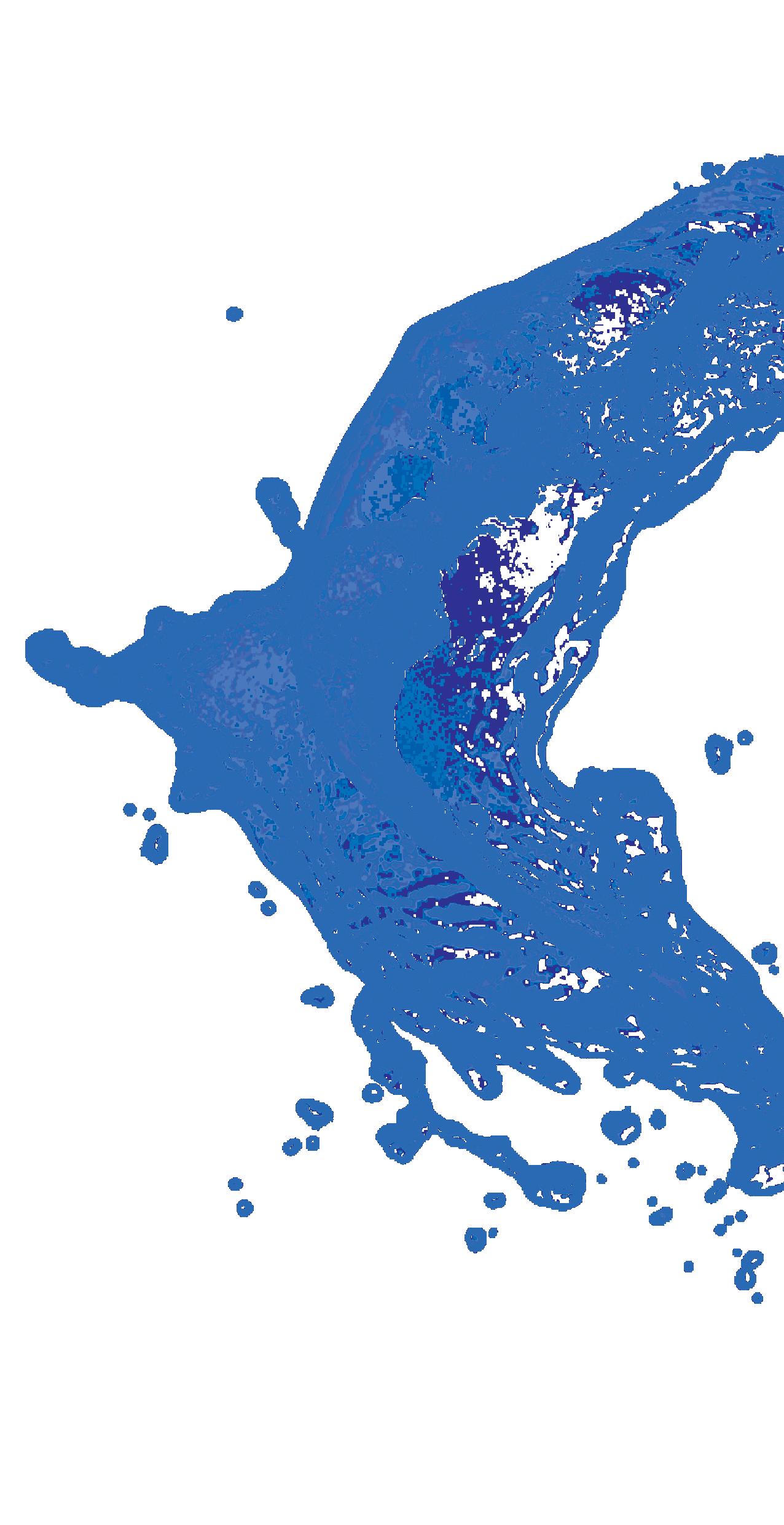

Water literacy is in its infancy here, as we look to adapt to our changing industry. The workshop grappled with key challenges around consumer behaviour – something faced by water companies both here and in Australia.
Presentations from Watercare in Auckland, Smart Water in Waikato, and The Water Conservancy in Australia, pointed to many similar challenges in getting people to not only understand the importance of water supply sustainability and conservation, but how they can do something about it personally.
Despite different drivers for water conservation across the three regions, there were many common themes.

Watercare experienced an extreme drought in 2019-20, which prompted a campaign to reduce demand amongst its customers.
The comprehensiveness and level of collaboration involved across their campaign really stuck out.
Rachel Hughes and Priya Thurai highlighted how the work done with Auckland Council helped to significantly amplify the message. Getting community groups and large companies to buy in to encouraging public action were crucial, as were water restrictions and creative messaging.
In Waikato, Smart Water is a partnership between local councils to coordinate and deliver water conservation projects and campaigns.
Leading this work, Michelle Templeton drove behaviour change through community outreach and collaboration. This included emphasising water as a precious resource for the Hamilton, Waipā and Waitomo communities and upholding
16 www.waternz.org.nz WATER NEW ZEALAND WATER EFFICIENCY WORKSHOP
principles of the Te Ture Whaimana strategy and the message of Te Mana o te Wai.
Smart Water took a community-based, social marketing approach, using psychological techniques to overcome barriers to behaviour change. The approach was aimed at fostering longterm modification of water usage.
The Water Conservancy in Australia talked about the fundamental equation to getting water conservation messaging across: Education + Experience = Endearment.
Engagement through the school curriculum, combined with fun excursions, encouraged students to learn first-hand about where their water came from.
The Water Conservancy’s CEO Chris Philpot said understanding attitudes to water was central to informing this work, and they had undertaken significant research to back up their thinking.
A key highlight was the Water Night campaign encouraging households to not use water between 5pm and 10pm on
October 20 – no taps, no showers, no running water. We could see an opportunity for this to work in New Zealand in 2023.
The workshop concluded with a poll and group conversations about the barriers facing water professionals in building water literacy and a water conservation ethic amongst customers.
It found barriers to changing attitudes and behaviour included budget constraints, the management of leaks, reporting and data collection, customer engagement with the utility and a lack of knowledge among customers about what they were paying for.
There was agreement that increased funding for running campaigns, education materials that use simple language rather than jargon, and water metering to drive better understanding of consumption, would all help consumers understand the value of water in their region.
The workshop provided a starting point for growing our shared focus to increase water conservation.
The group is keen to hear from other people who’d like to be involved in starting a shared community to foster collaboration or who are looking into mounting a water literacy campaign or conservation ethos amongst their customer base.
If you want to know more or have ideas you’d like to share, email Julian Fyfe, programme manager sustainable water supply and demand, Wellington Water; Julian.Fyfe@wellingtonwater.co.nz.



Modelling Symposium
NOVEMBER/DECEMBER 2022 WATER NEW ZEALAND 17
Modelling for an uncertain future
15 - 16 March 2023 Join us at Copthorne Hotel Te Whanganui-a-Tara Wellington Call for abstracts and earlybird registrations are now open Visit our website for more information www.waternz.org.nz
Watercare experienced an extreme drought in 2019-20, which prompted a campaign to reduce demand amongst its customers.
Pūhoro students get a taste of water

The students, who attend different local high schools, began the day listening to Abbas Nazari’s keynote presentation (see page 13) about his journey from Afghanistan to New Zealand. They then explored the expo and were able to talk to exhibitors about technology and innovative solutions.
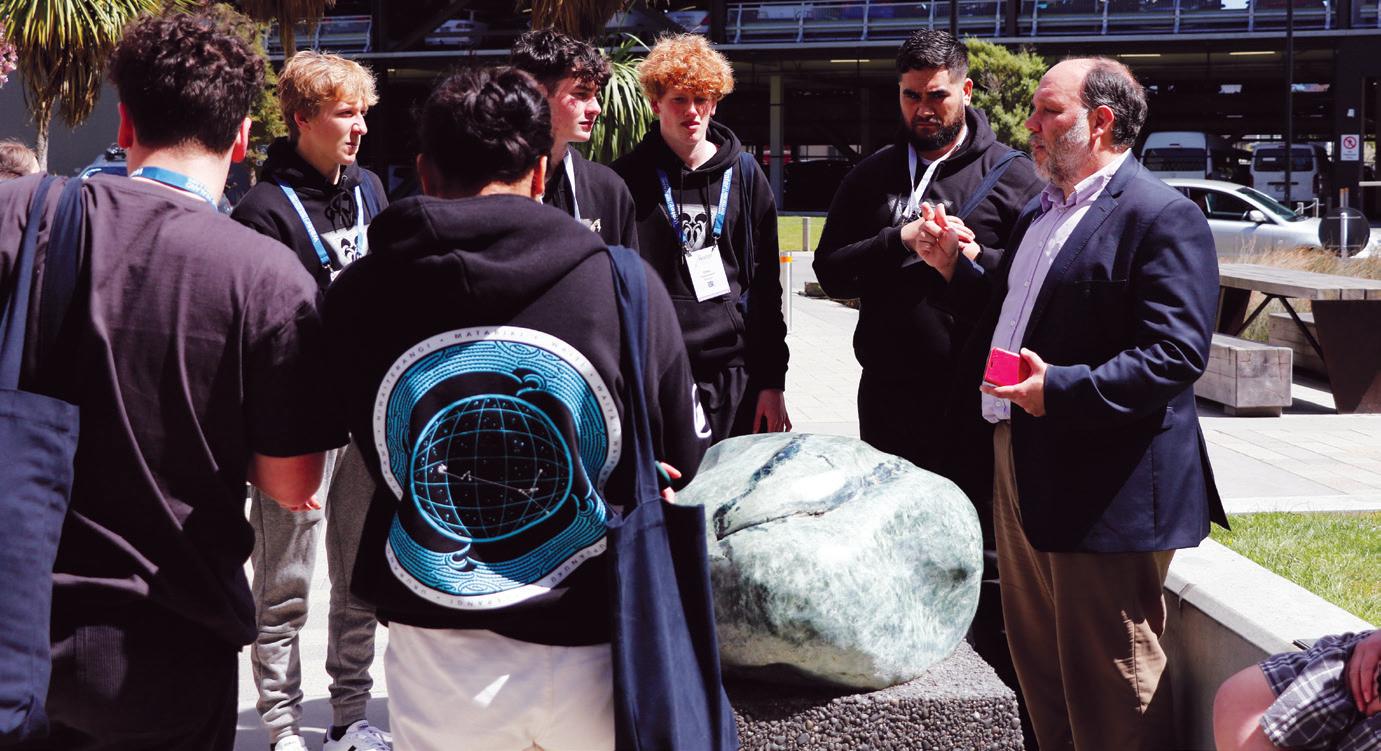
It was a busy day, squeezing in the Te Ao Māori focused presentations and exploring the wider environment. Many students agreed the presentations exposed them to practical ideas of projects within the water sector that can relate to Te Ao Māori.
The students also enjoyed a walk around the Ōtakaro river, led by Liam Foster of WSP who explained its significant features while getting them to think about potential risks of having a river in the CBD.
To end the day, Anton Matthews of Hustle Group spoke about the relation of ‘Māori workers and water’.
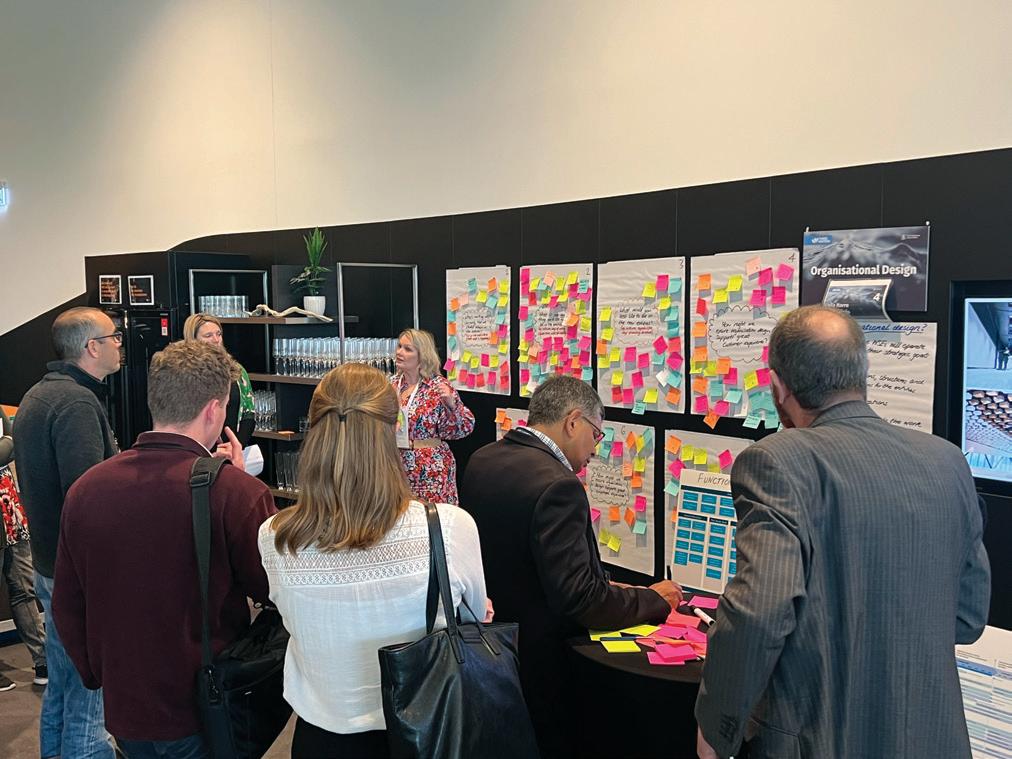
The day’s outing was organised by Zoe Hubbard of Water New Zealand. A Pūhoro STEMM graduate herself, she says the conference provided a great opportunity for the students to get some insight into the many career opportunities the water sector has to offer.

What is Pūhoro STEMM?
Its purpose is ‘To advance Māori leadership and capability to deliver a world class science
community’. Pūhoro is designed to help Māori students excel in STEMM fields (Science, Technology, Engineering, Mathematics, mātauranga Māori) due to the current lack of Māori representation, participation, and success in these areas.
Beginning in high school, Māori students can join Pūhoro and are provided with tutoring in science and maths subjects for NCEA Level 1 to 3. Each term, Pūhoro hosts wānanga (learning experiences) in each region where all students can come together, connect and explore pathways in STEMM.
Pūhoro continues to support the students after finishing high school as they move into tertiary studies and the workforce.
Top: Students talking with Liam Foster about urban river protection. Above: Students experience the new virtual reality tool on display at the conference. The tool gives job-seekers a chance to see and experience roles in the water sector.
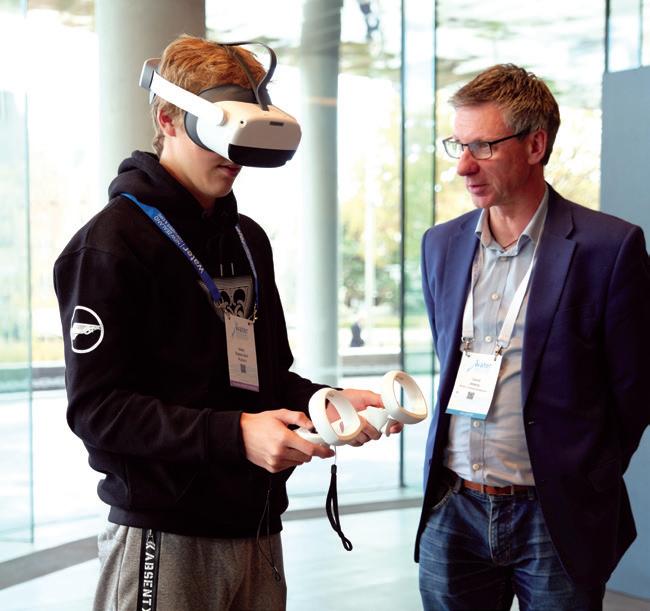
18 www.waternz.org.nz WATER NEW ZEALAND CONFERENCE
Around 300 people attended the Taumata Arowai and National Transition Unit Pre-conference workshop, where they heard about the risk management landscape from the new water services regulator, and the work programme for setting up the new water services entities, followed by an interactive discussion with workstream leads.
Ten Pūhoro STEMM students and three staff members spent a day at the conference learning about water technology and career options.
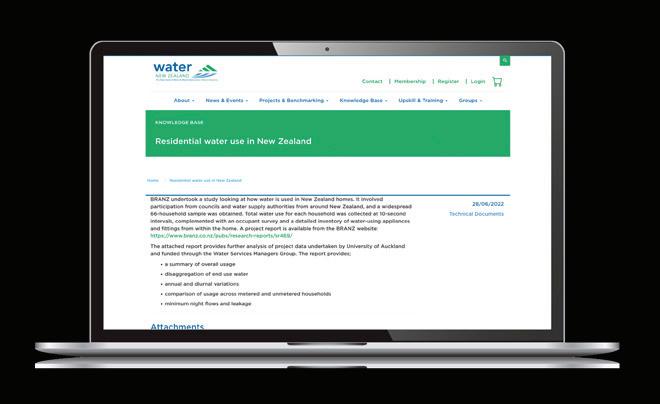

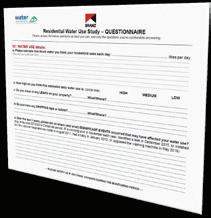
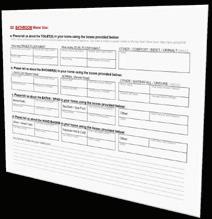
NOVEMBER/DECEMBER 2022 WATER NEW ZEALAND 19
RESIDENTIAL WATER USE Outputs Full summary of results, methodology, limitiations, and opportunities for future research are listed in project report available at: BRANZ PROJECT REPORT: www.branz.co.nz/pubs/research-reports/sr469/ UNIVERSITY OF AUCKLAND DATA ANALYSIS: www.waternz.org.nz/Resources/Article?Action=View&Article_id=2243 PROJECT SUMMARY WEBINAR: www.waternz.org.nz/Resources/Article?Action=View&Article_id=2258 Acknowledgements Did not participate Surveyed Surveyed with high-res metering Participating councils Use breakdown Toilet Shower Dishwasher Washing machine Tap High flow or outdoor Undefined Leak/drip Seasonal Use breakdown Hour of the day (24h format) Proportion of use Temporal variations by use type Survey questions 1. Human (Demographic) Number of people Life stage Ownership Ethnicity Household income How long in the shower How they irrigate How they wash their cars 2. Behavioural Age Size Number of bedrooms Typology 3. Building Number and size of each end-use (i.e. toilets, showers etc.) 5. Appliance (End-use) Characteristics Size of garden Size of section Swimming pool/spa? 4. Outdoors (Physical) Jan Feb Mar Apr May Jun Jul Aug Sept Oct Nov Dec Seasonal variations by use type Overall use summary All households Metered and volumetrically charged Not metered and volumetrically charged Average Daily Volume (litres) 543 424 682 Median Daily Volume (litres) 397 319 551 Average Daily Volume Per Person (litres)* 237 198 304 Median Daily Volume Per Person (litres)* 165 127 266 Average hourly flows and minimum night flows Average Hourly Flow (litres/hour) Median Hourly Flow (litres/ hour) Average MNF (litres/hour) Median MNF (litres/hour) All households 25.7 19.6 8.4 2.1 Metered and volumetrically charged 20.8 16.7 9.1 1.6 Not metered and volumetrically charged 31.3 25.2 7.6 3.1 Hour of the day (24h format) Peaking factor Weekday Weekend Weekday and weekend peaking factors 24% 13% 3% 2% 7% 19% 31% 1% 29% 16% 24% 15% 2% 4% 9% 1% Spring 27% 13% 3% 18% 17% 2% 20% 1% Summer 29% 17% 23% 13% 2% 2% 6% 9% 27% 14% 8% 2% 10% 16% 2% 21% Autumn Winter Water use (litres per day) Usage – per household Summer daily usage, n=34 Winter daily usage, n=51 Average = 544 L/day Median = 435 L/day Average = 213 L/pp/day Median = 159 L/pp/day Average = 735 L/day Median = 504 L/day Average = 292 L/pp/day Median = 231 L/pp/day 0 0 10 10 15 15 400 400 800 800 1200 1200 1600 1600 2000 2000 2400 2400 2800 2800 Frequency Frequency Water use (litres per day) Water use (litres per day) Water use variability A reported average water use (e.g. 640 litres per day) fails to capture the variability in the water used by a household, as shown in the figure below. Water use also varies considerably between households and during the year. Daily consumption (litres) 0 500 19 Jul 2018 07 Sept 2018 27 Oct 2018 16 Dec 2018 04 Feb 2019 3000 2500 2000 1500 1000 640
This national study shows us when and where New Zealanders are using water in their homes. Results draw on hundreds of household surveys and 66 high-resolution meters from around the motu. Data has been analysed to inform water efficiency programmes, demand forecasting and infrastructure design. This research was funded by the Building Research Levy with the Water Services Managers Group at Water New Zealand providing additional funding. Wellington Water provided the University of Auckland specific funding to allow for additional analysis to be completed. BRANZ – past and present staff members: Andrew Pollard, Lee Bint, Amber Garnett, Sandi Sirikhanchai, Riaan Labuschagne, Andrea Simpson, Nick Brunsdon, Anne Duncan, Jill Ross and Nic Guerrero. Lesley Smith from Water New Zealand. Colin Whittaker, Teresa Scott and Kobus van Zyl from the Department of Civil and Environmental Engineering, Faculty of Engineering at the University of Auckland. Thanks also to participating councils, illustrated on the map.
Poster of the year
Award winners






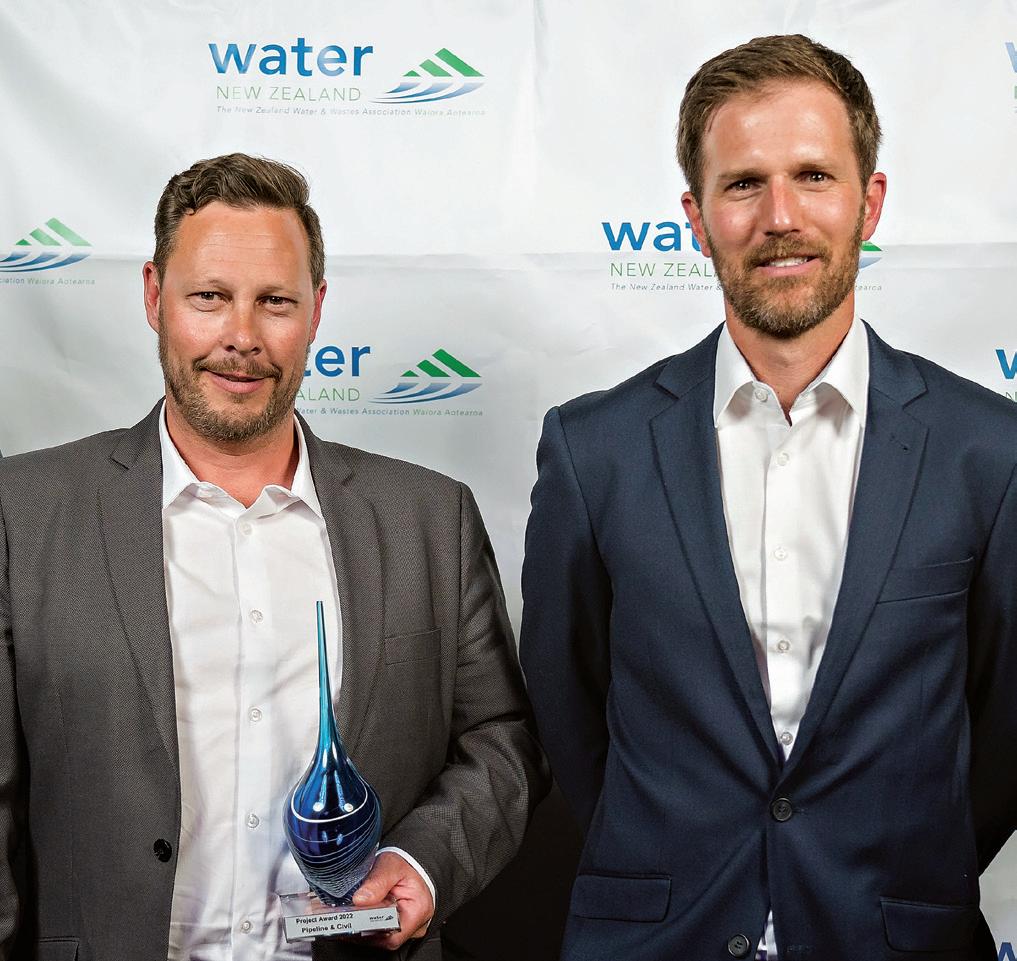 The Pipeline and Civil Project Award Frankton Flats Trunk Main Rehabilitation. With their trophy are Jason Climo and Simon Mason of Veolia Water. (Read about the project on page 24.)
The Hynds Paper of the Year Award ‘Using Remote on-line Data Analytics to Identify Your Sewer Rats’, by Hugh Ratsey of The Wastewater Specialists, Andre Dine and Phil de Groot of Trility.
The IXOM Operations Award for the Waiohine Treated Water Reservoir: Nick Hewer-Hewitt of Wellington Water
The Pipeline and Civil Project Award Frankton Flats Trunk Main Rehabilitation. With their trophy are Jason Climo and Simon Mason of Veolia Water. (Read about the project on page 24.)
The Hynds Paper of the Year Award ‘Using Remote on-line Data Analytics to Identify Your Sewer Rats’, by Hugh Ratsey of The Wastewater Specialists, Andre Dine and Phil de Groot of Trility.
The IXOM Operations Award for the Waiohine Treated Water Reservoir: Nick Hewer-Hewitt of Wellington Water
WATER NEW ZEALAND CONFERENCE
The Ronald Hicks Memorial Award , sponsored by Mott MacDonald, went to ‘A Pilot Study of Wastewater Monitoring for SARS-CoV-2 in New Zealand’ by Brent Gilpin and Joanne Hewitt – ESR. Brent (left), is congratulated by Thomas Haarhoff from Mott MacDonald.
The
The
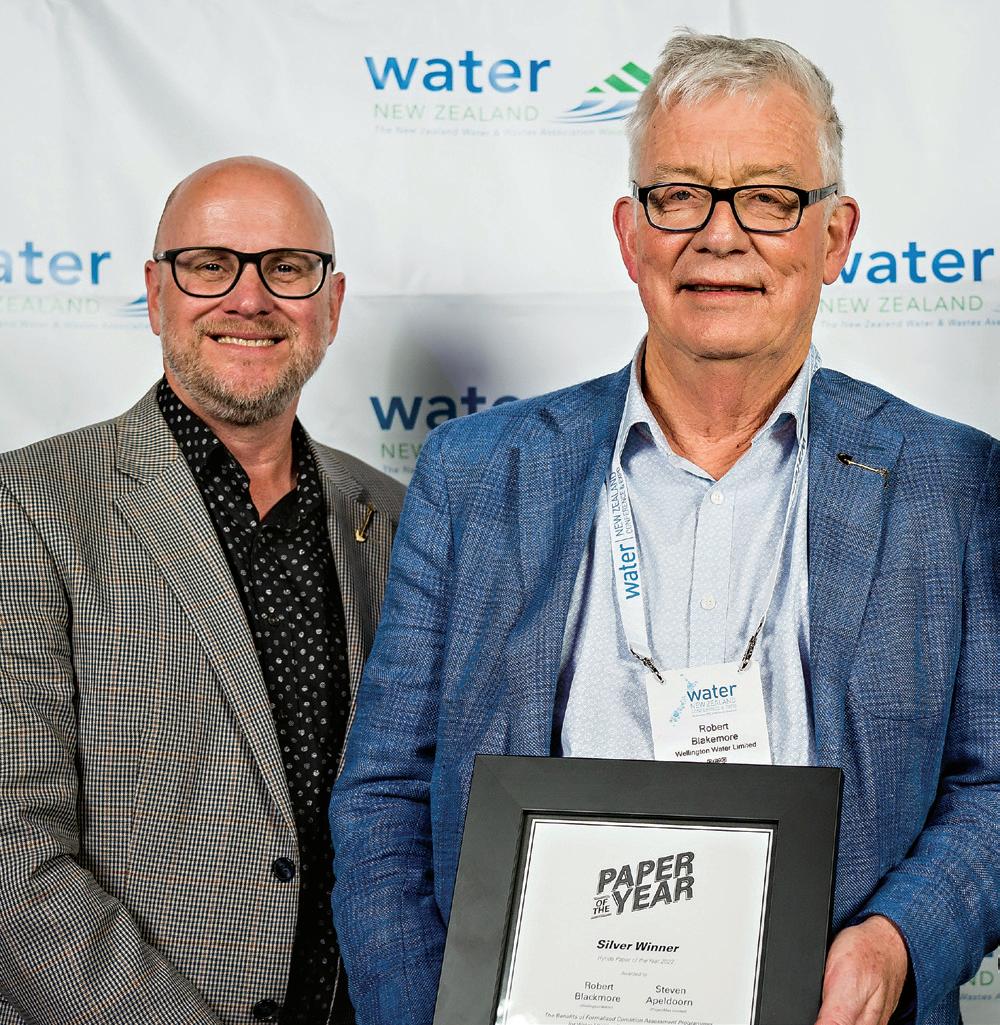




 Environmental Sustainability Project Award , sponsored by Morphum Environmental, was won by Christchurch City Council for the Eastman Wetland and Cashmere Stream Restoration Project. With the trophy are Mark Penrace and Peter Christensen of Storm Environmental. (Read about the project on page 29.)
The Water New Zealand Poster of the Year BRANZ et al., University of Auckland and Water New Zealand for ‘How Kiwis use Water in their Homes’. With the trophy are Lesley Smith and Gillian Blythe of Water New Zealand. (See the winning poster on page 19.)
The Hynds Paper of the Year Silver Award ‘The Benefits of Formalised Condition Assessment Programmes for Water Utilities Based on Lessons Learned’, by Steven Apeldoorn of ProjectMax and Robert Blakemore of Wellington Water.
The Hynds Presentation of the Year Dr Matt Savage of Apex Water for ‘Innovative Wastewater Treatment Systems for Extreme Alpine Environments’.
Site Safe New Zealand Health and Safety Innovation Award Wellington Water for its Water Industry Specific Asbestos Awareness Training. With the trophy are Anna Bridgeman of Stantec and Robert Mackie, Wellington Water.
Environmental Sustainability Project Award , sponsored by Morphum Environmental, was won by Christchurch City Council for the Eastman Wetland and Cashmere Stream Restoration Project. With the trophy are Mark Penrace and Peter Christensen of Storm Environmental. (Read about the project on page 29.)
The Water New Zealand Poster of the Year BRANZ et al., University of Auckland and Water New Zealand for ‘How Kiwis use Water in their Homes’. With the trophy are Lesley Smith and Gillian Blythe of Water New Zealand. (See the winning poster on page 19.)
The Hynds Paper of the Year Silver Award ‘The Benefits of Formalised Condition Assessment Programmes for Water Utilities Based on Lessons Learned’, by Steven Apeldoorn of ProjectMax and Robert Blakemore of Wellington Water.
The Hynds Presentation of the Year Dr Matt Savage of Apex Water for ‘Innovative Wastewater Treatment Systems for Extreme Alpine Environments’.
Site Safe New Zealand Health and Safety Innovation Award Wellington Water for its Water Industry Specific Asbestos Awareness Training. With the trophy are Anna Bridgeman of Stantec and Robert Mackie, Wellington Water.
Honorary Life Members 2022
5S Emerging Water Professional Conference Prize

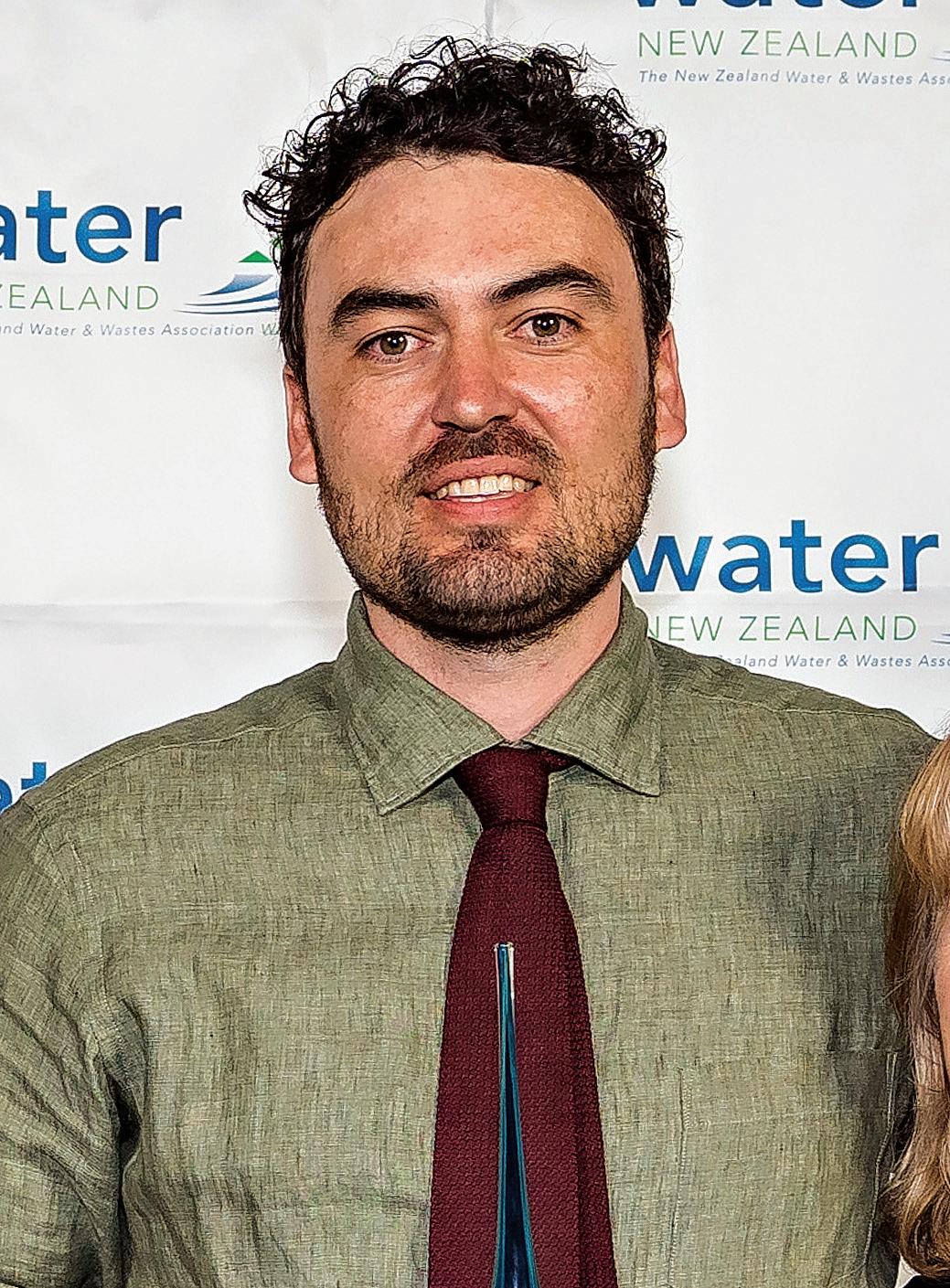
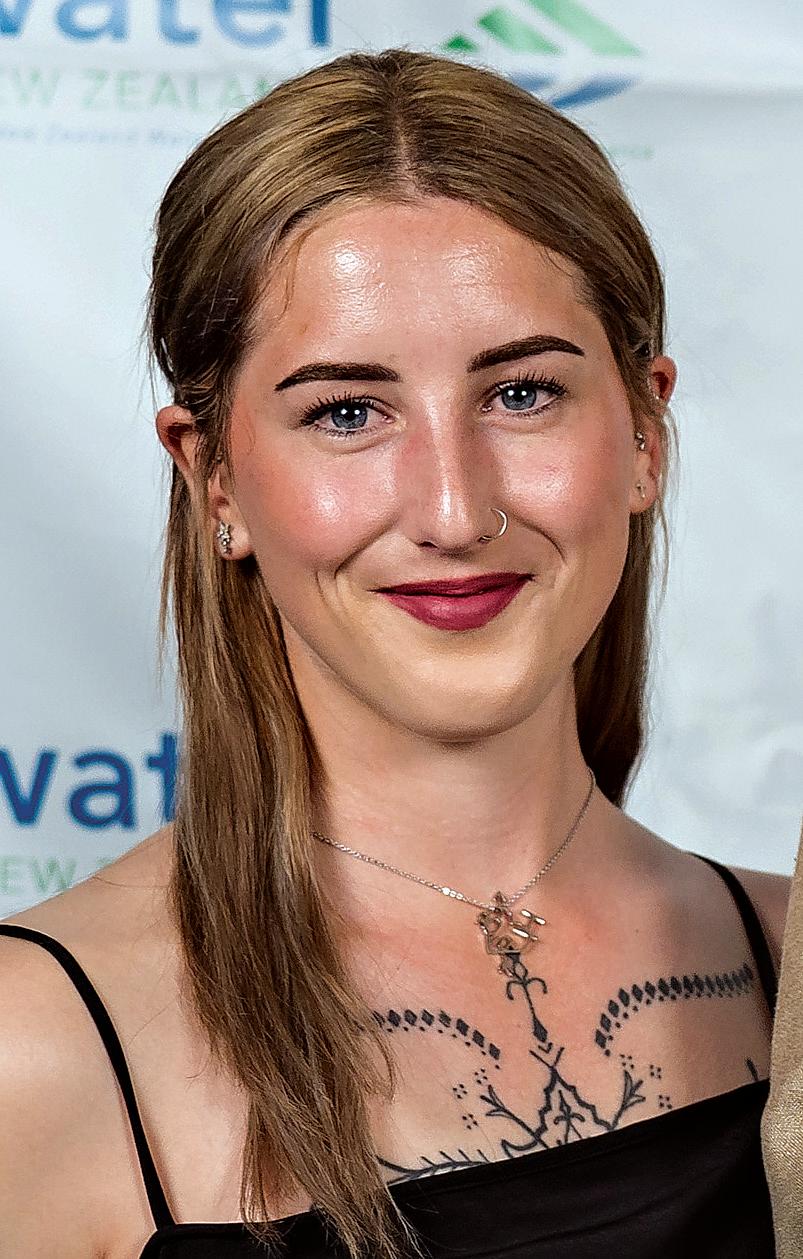


Hinewai
New members of the Select Society of Sanitary Sludge Shovelers 2022
Judy
WATER NEW ZEALAND CONFERENCE
Trility Young Author of the Year Award Emma Botha of GHD for ‘Pathway to Circular Economy – Suggestions for New Zealand’s Three Waters in a Time of Transformation’
The Citycare Water Trainee of the Year Chloe Edwards of Fulton Hogan
The Innovation Forum – Te Rere Auaha o Parawhenuamea Award Lon Hua of Ubiquitome won for ‘Using a mobile quantitative PCR machine for recreational marine water quality monitoring’
Beca Young Water Professional of the Year Ben Lunjevich of Dempsey Wood Civil
Brent Manning, DIA; Jim Graham, Taumata Arowai; Siobhan Hartwell, GHD and Steve Couper, Mott MacDonald.
Hosford, Watercare; Melissa Allfrey, Waipa District Council and Emma Buckeridge, Beca.
Blakemore; John Mackie; Tim Gibson and Lou Weaver.
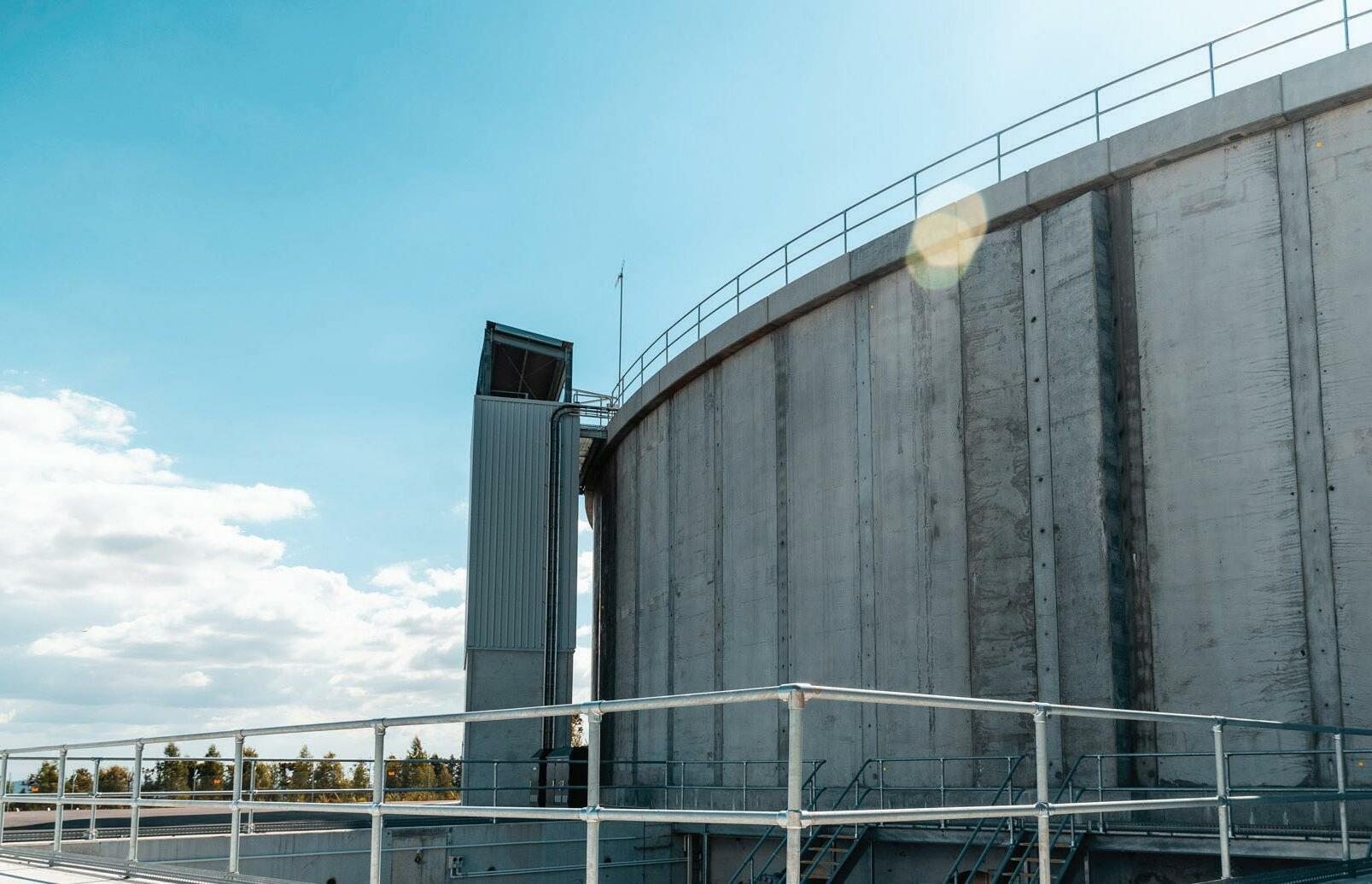



NOVEMBER/DECEMBER 2022 WATER NEW ZEALAND 23 SUPPORTING THE FINEST INFRASTRUCTURE WithPre-Engineered BarrierSystems 0800 663 339 | www.moddex.com Scan here to download our product brochure
Critical wastewater pipe replacement


24 www.waternz.org.nz WATER NEW ZEALAND PROJECT OF THE YEAR
wastewater replacement
Veolia was the winner of this year’s water Pipeline and Civil Project Award, with its spirally wound pipe solution to replacing Queenstown’s largest wastewater pipe.
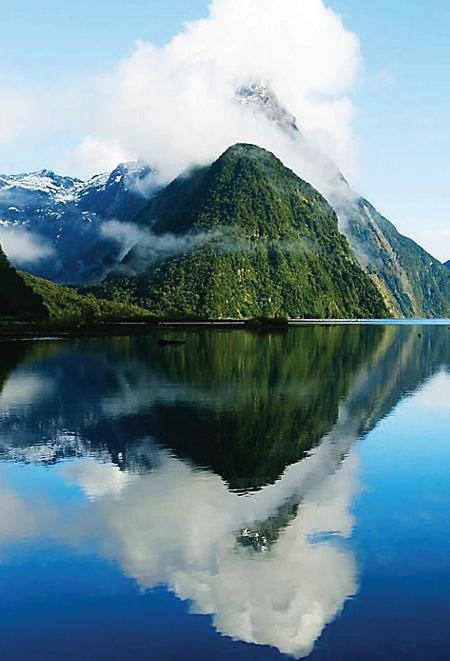
All wastewater from Queenstown, Fernhill, Arthurs Point, Kelvin Heights, Frankton, and Hanleys Farm is pumped from Frankton Beach wastewater pump station to Shotover wastewater treatment plant at flows between 200 and 400 litres per second.
The wastewater travels via a single 675mm diameter pipe, at a depth averaging four to six metres underground, with no secondary pipe or bypass. The falling sections of this discharge main run adjacent and close to the Queenstown International Airport main runway.

This DN675 RCRRJ pipe suffered from severe crown corrosion, with a section (thankfully downstream of the airport) having collapsed in about 2017. The lower sections of the main were structurally relined in May 2020, but there was no easy solution for the remaining length of pipe within the airport’s airside.
The excavation depth, length, and size made it unaffordable to replace the pipe in a conventional manner. And as the asset had been ‘sweated’, it had to be renewed.
However, flow rates would make renewal difficult – the main could not be turned off. In addition, the location close to the airport mean strict height requirements for construction work.
Veolia worked closely with Queenstown Lakes District Council’s chief engineer to develop a proposal for how to rehabilitate the main. The council took this proposal to a consultancy for benchmark pricing for an open trench solution, and to another

NOVEMBER/DECEMBER 2022 WATER NEW ZEALAND 25
Veolia New Zealand
Spirally Wound Pipe
Queenstown Regional Manager/National Construction Manager
Jason Climo
provider of lining services who was unable to price, based on the operational and constructability risks.

Based on this outcome, Veolia was engaged to deliver an innovative solution to this complex problem. This required extensive coordination by Veolia with multiple stakeholders, including QAC (Queenstown Airport).
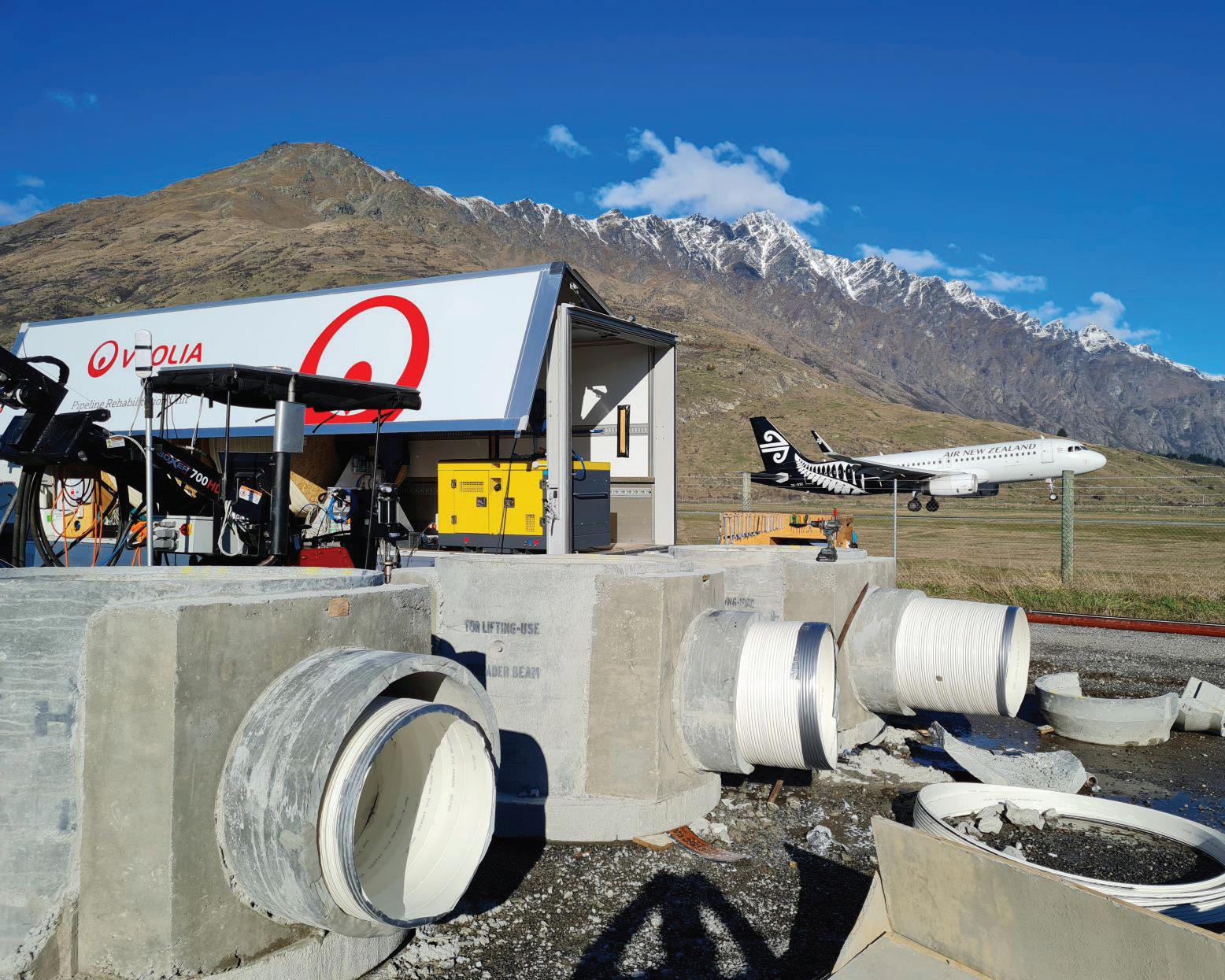
The solution was the installation of a spirally wound pipe. The use of Spiral Wound Pipe (SWP) provides a high quality structural rehabilitation that provides 100 years’ additional asset life, and that will eliminate the historical issues of hydrogen sulphide attack and crown corrosion.
The design was completed locally, with support and cross checking provided by SWP in Germany and South America.
The original pipeline was constructed without maintenance access, so strategic pits were excavated to allow Veolia to install bypass pump pipes and pump flows around
the site to enable relining.
Access chambers were also built, which will ensure that future silt and gravel build up is avoided through routine cleaning and inspection.
The smooth inner surface of the relined pipe has a low friction factor, improving the efficiency of the pipe. This, along with the removal of 100 tonnes of silt and gravel that had accumulated in the pipe over the years, immediately increased the capacity
years’ additional asset life.
of this critical piece of infrastructure, and eliminated surcharging up upstream manholes during high flows.
The project was delivered for $1.7 million, compared to the engineer’s estimate of $5.8 million for an equivalent open trenching approach.
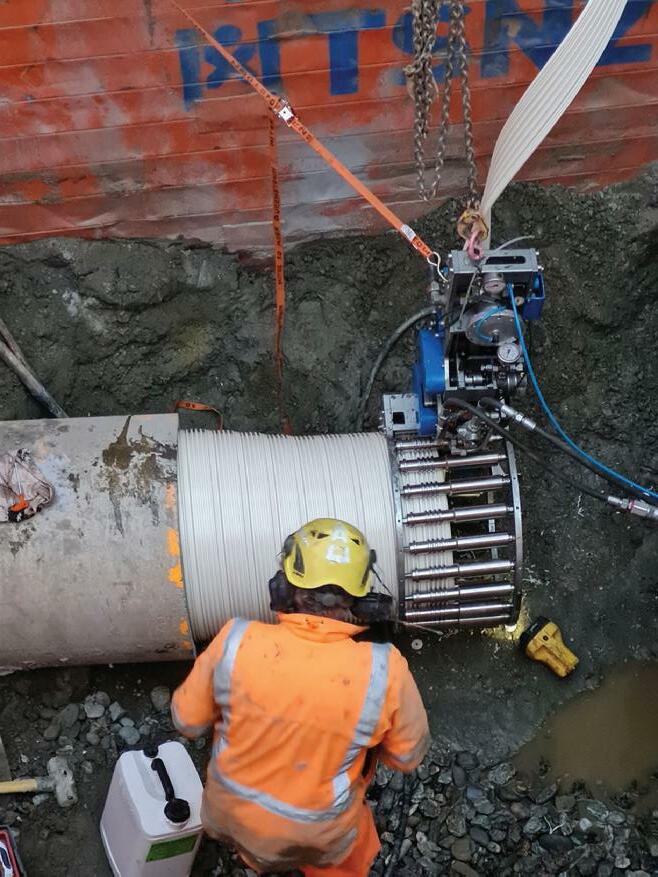
Veolia says this project delivered a costeffective, structural rehabilitation of major critical trunk infrastructure in a complex, high-stakes operating environment, and the judges agree, awarding this wastewater pipe replacement as Water New Zealand’s 2022 Project of the Year.
The content of this article has been taken from Veolia’s award entry and presentation.
26 www.waternz.org.nz WATER NEW ZEALAND PROJECT OF THE YEAR
Veolia worked closely with Queenstown Lakes District Council’s chief engineer to develop a proposal for how to rehabilitate the main. This required extensive coordination by Veolia with multiple stakeholders, including QAC (Queenstown Airport). The use of Spiral Wound Pipe (SWP) provides a high quality structural rehabilitation that provides 100
CLA-VAL PACIFIC
Looking for a reliable In-Line Check Valve?
Look no further than the Cla-Val RF-DBI-LH

Cla-Val Series RF-DBI-LH Low Headloss In-line Rubber-Flex™ Duckbill Check Valve design allows for a passive flow and allows the valve to be installed without having to do any modifications to existing structures or costly pre-install planning. The unique fold away design of the inner sleeve also allows for a near full port flow, allowing for quick drainage and low head loss.
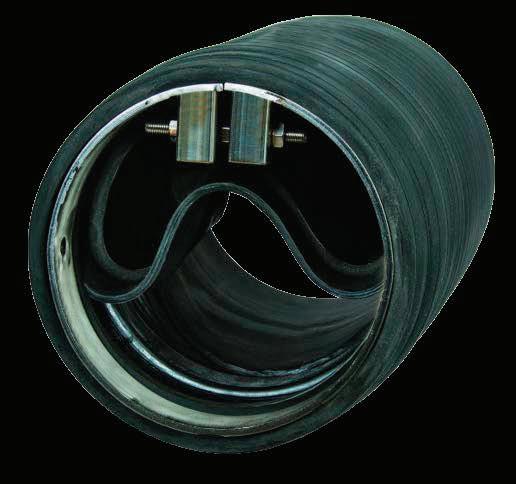


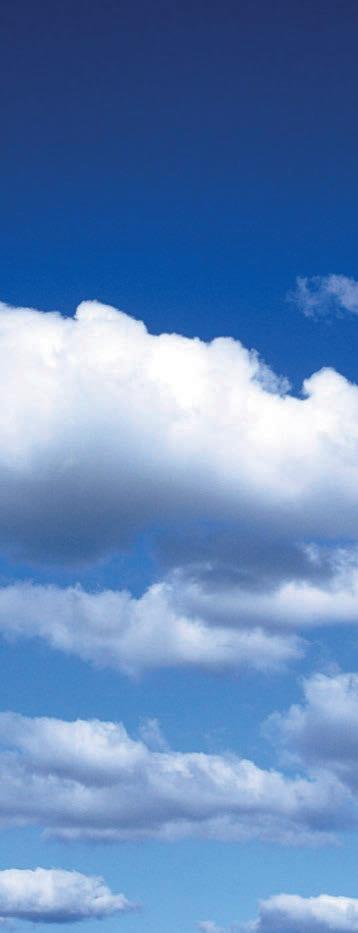
PRESSURE MANAGEMENT
Why Pressure Management?

There are many ways and reasons that pressure can and should be managed in a network from source to tap. The aim is to create a network where pressure in the pipe system is managed in such a way as to mitigate the rise of transients, which can cause pipe bursts and weaken pipe systems. The goal is to efficiently and effectively control pressure fluctuations, keeping the water network calm, and at serviceable pressure levels and reducing leakage.
The Cla-Val 390 Series of Electronically Actuated Pressure Reducing Control Valves (as pictured to the right) combine the precise control of field-proven Cla-Val hydraulic pilots and simple, remote valve control. These Pressure Reducing Control Valves automatically reduce a higher inlet pressure to a steady lower downstream pressure regardless of changing flow rate and/or varying inlet pressure.
The valves are designed to be used with supervisory control systems (SCADA), having remote analog set-point output and process variable upstream pressure input using the VC-22D Electronic Valve Controller as the interface. Cla-Val 390 Series Valves are an effective solution for lowering costs associated with “confined space” requirements by eliminating the need for an entry in valve structure for set-point adjustment. They are also ideal for pressure management and can be programmed to minimum night time and optimum daytime pressures.

!"#$%#"&'#()*)( -.//#0#123#45&633"783/5&!9:)78(9;:(95&<.0&=.#"#/4 >."?&@A+&BCDE&FA+&+GAC Cla-Val Pacific 45 Kennaway Road, Woolston, Christchurch Tel: +64 (0)3 964 4860 Email: aspacsales@cla-val.com www.cla-valpacific.com
Trust us to assist with your water analysis

For Research Use Only. Not for use in diagnostic procedures. © 2022 Thermo Fisher Scientific Inc. All rights reserved. Trademarks used are owned as indicated on thermofisher.com/trademarks COL100282AU
our latest brochure at thermofisher.com/waterqualitybrochure
View
product solution experts on
to support your needs across wastewater, drinking water, surface water and ground water analysis.
With
hand
Water analysis
Over and above for the
environment and community
The 100-hectare area in southwest Christchurch was originally a raupō wetland prior to being drained for farming in the 19th century. Identified for decades as a key area for stormwater management, there was an opportunity in the post-earthquake flood recovery programme to purchase land to develop a large multi-value facility.

The primary objective of the facility is flood management and stormwater runoff treatment. The area can store over one million cubic metres of floodwater, protecting houses downstream from severe flooding.


Stormwater treatment is provided for both urban and rural runoff through multiple wetland basins.
Alongside these primary objectives, sustainability through ecological enhancement and restoration has been maximised at every opportunity.
Working in close collaboration with mātauranga Māori advisors and stream care groups, the project team has incorporated a number of outcomes into the project.
These include more than three kilometres of stream restoration with instream features and planting, lizard habitats, natural wetland restoration, spring protection, revegetation with 110,000 native trees and 600,000 native plants, rongoā garden, social research, and recreational paths.
Christchurch City Council is investing more than $50 million in the project. The work is approximately 80 percent complete, with the first area opened to the public in September 2022.
This project began in 2012, with multiple consultants and contractors involved.
For the most recent part of the project, the Cashmere Stream restoration, there has been direct engagement and involvement with manawhenua through a subcontract with tohunga. This is to ensure the development of rongoā gardens and mahinga kai areas is within tikanga values and in line with manawhenua aspirations.
Eastmans Sutherlands Basin in flood, with skink habitat in foreground.
NOVEMBER/DECEMBER 2022 WATER NEW ZEALAND 29 ENVIRONMENTAL SUSTAINABILITY WINNER WATER NEW ZEALAND
Eastman Wetland and Cashmere Stream Restoration Project won the environmental sustainability award at the Water New Zealand Conference and Expo 2022, with the project providing stormwater treatment and flood management, along with many ecological, cultural, and recreational benefits too.
The Ōpāwaho Heathcote River Network (OHRN) and Cashmere Stream Care Group (CSCG) have been key in providing community feedback and engaging the community through newsletters and planting days, and, for stream restoration, sit on the governance group.
In addition, a ‘Nature Agents’ school group has been funded to allow students to take part in citizen science.
A key factor in the success of the project has been close collaboration between the core council staff project team, design consultants, and the contractors.
Contractors have been supported to learn about the wildlife they encounter, ensuring that hands-on workers know how to protect wildlife in their day-to-day work.
Everyone working on the project sees the significance of this project to develop an amazing ecological and recreational space in southwest Christchurch, almost ‘hiding’ the core functions of flood management and stormwater quality.

At every point in the project, a multi-value framework has been used to ask the question, ‘How can this project deliver sustainable and long-term cultural, ecological, recreational, landscape, and heritage benefits along with the core stormwater and flood management function?’
These have not been seen as ‘nice to haves’, but rather as the legacy the project will leave with the community. These values have been used to contribute to a more environmentally sustainable future in the following ways.
In addition to the cultural benefits of the rongoā gardens and mahinga kai areas, springs have been protected too.
Ecological benefits come through enhancement of waterways, with in-stream features for target species and removing urban and

rural runoff from spring-fed waterways. There are also lizard habitats and wilderness areas for birds.
Recreational benefits have been addressed with paths and connection points to waterways. Connection with the waterways encourages the protection of ecological values and enhances the well-being of those who visit.
Landscape values have been addressed through understanding the ecological context (raupo wetland and ancient forest) and planting to restore this when often grassed basins would be used instead. More than 700,000 native trees and plants will be planted,
Project collaborators
Christchurch City Council: Funding, project management, landscape architecture, ecology (aquatic, terrestrial, wetland)
Kahukura Maori Healing Clinic: Mahinga Kai and Rongoā design, manawhenua advisory services
Cashmere Stream Care Group: Part of Cashmere Stream Project Control Group, community review and co-design, planting days
Ōpāwaho Heathcote River Network: Part of Cashmere Stream Project Control Group
Contractors: GSL (majority of works), Hunter Civil, Brian Perry Civil
Consultants: Storm Environmental (concept development and design management), WSP (system-wide hydraulic design, multiple wetland designs, structural and geotechnical elements), Stantec (Eastman Bund design, Halswell Downs wetland), PDP (Milns flood basins)
University of Canterbury: Social research into stream care group success
Ministry for the Environment: Part funding of Cashmere Stream restoration
30 www.waternz.org.nz
Above: Members of the community come together for a planting day.

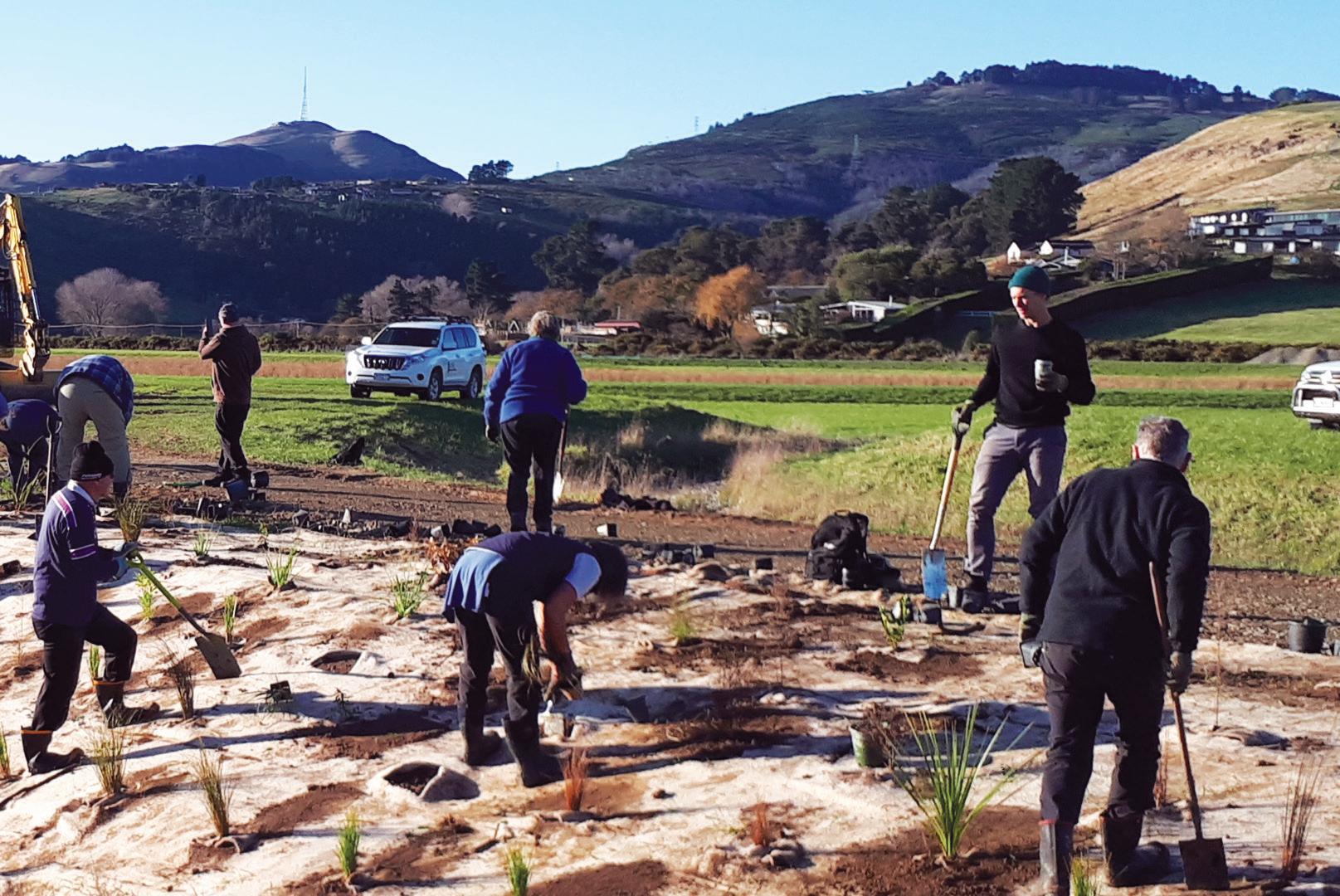

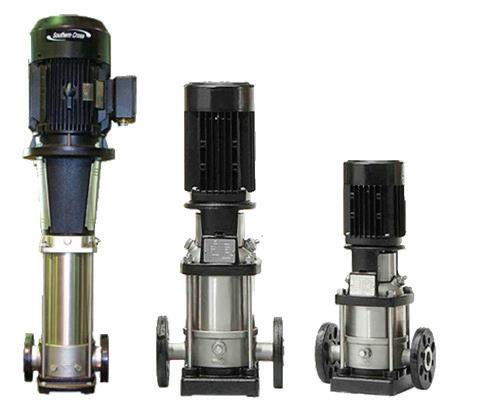

NOVEMBER/DECEMBER 2022 WATER NEW ZEALAND 31
all eco-sourced from the local area.
Heritage values were acknowledged by working with Heritage New Zealand to preserve parts of the pre-1900 drains.



In addition, other actions to improve sustainability include keeping fill largely on site to minimise cartage, while materials found on-site – such as old tree stumps and native fence posts – were reused as in-stream features. Plastic use was minimised by using biodegradable plant guards, non-plastic matting, and natural bank stabilisation materials.
Planting the basins with trees, rather than grass, will provide long-term carbon uptake, while the active management of flood gates to deliver greater flood benefit for the embedded carbon of the project.
There are many direct benefits to this project. Since the project’s initiation in 2012, over two kilometres of waterways have been enhanced with in-stream features for taonga species, which include waikōura (freshwater crayfish), kākahi (freshwater mussels), tuna (longfin eel) and īnanga (whitebait). A further kilometre of enhancement is being added over the coming 12 months.
Three stormwater treatment wetlands are already built to treat urban runoff discharging into the stream, with one more to be built. When fully complete in 2024, the system will help to reduce abovefloor level risk to over 100 houses in a one-in-50-year ARI event.
The stormwater wetlands will treat 200 hectares of urban areas, with sediment reduction basins provided for rural runoff from a further 800 hectares.
The construction of 10 kilometres of recreational paths will provide a recreation hub and enhanced cycle connectivity, while large areas of rongoā garden will be developed to provide a sustainable place to learn traditional Māori medicine.
Wildlife areas have been enhanced, with dedicated habitat areas for the mokomoko (southern grass skink), wilderness areas for native birds and enhanced habitat for freshwater species.
The engagement of the community with this environment will be a lasting co-benefit of the project.
This project is an exemplar of what can be achieved when multiple values are considered in the development of green infrastructure.
Culture, ecology, recreation, landscape, and heritage values are woven together with the key functions of stormwater quality and flood management. This restoration philosophy can be carried out at any scale.
The content of this article has been taken from the award entry by Peter Christensen of Storm Environmental who has been the design manager for Christchurch City Council for this project since 2015.
32 www.waternz.org.nz
WATER NEW ZEALAND ENVIRONMENTAL SUSTAINABILITY WINNER
Naturalised Milns Stream with flood detention bund in top left.
Performance and reliability every time.

Conveyance of dewatered sewage sludge by a KL80RQ progressive cavity pump.

WANGEN progressive cavity pumps handle sludge up to 45% TS. Trusted for their performance and reliability in WWTPs in New Zealand and around the world, they are low-wear, low maintenance and efficient to run. Distributed in New Zealand exclusively by Prime Pump.








Call now 0800 482 747 www.primepump.co.nz
Revisiting Waikouaiti, and why lead is still important
On February 2, 2021, a ‘Do Not Drink’ notice was put in place for the communities of Waikouaiti, Karitane, and Hawksbury Village in Dunedin due to elevated lead readings in the drinking-water supply. That notice was to remain until July 28, during which time a comprehensive screening of blood lead levels in the communities was undertaken.
The toxicity of lead
Lead is a cumulative neurotoxin that has no known functional role in the body. Therefore, efforts are underway worldwide to reduce exposure to this heavy metal with focused campaigns run through organisations such as the World Health Organization and the implementation of a variety of regulatory standards.

Historically, the primary mode of lead exposure was leaded petrol but after this was banned in 1996 other sources such as paint and, increasingly, drinking-water have become important exposure routes.
Lead in drinking water is more commonly associated with international situations.
From 2014 to 2017 the residents of Genesee County and the city of Flint in Michigan were exposed to high levels of lead in their drinking-water after the source water was changed. The high corrosivity of the new water source was not adjusted and lead began to leach from service lines.
In the US, the connection between the water main and the household supply line commonly uses a fitting called a gooseneck, often made from lead as it is resistant to degradation at a range of temperatures.
Lead is also added to a range of plumbing fittings as it is malleable which makes manufacture easier. However, when lead is near other metals or exposed to a high or low pH liquids then it will corrode.
From drinking-water, lead is taken up by the body and accumulates in the bones and teeth.
Children and infants absorb up to 50 percent of ingested lead while adults will absorb only 10-15 percent.
The half-life of lead in the blood is around 30 days, but in bones the half-life is 20-30 years.
As children are growing and developing, the rate of deposition of lead into the bones is considered greater. The combined effect of greater uptake and greater storage means that even in elderly patients (70 years plus), more than a third of lead present in their system can be estimated as coming from childhood and adolescent exposures.
The lead from childhood then acts as a reservoir, releasing lead into the blood stream continually over a lifetime.
Children are particularly sensitive to the toxic effects of lead. Lead causes a range of neurological effects including impacts on IQ, behavioural effects such as impulsivity
and hyperactivity, and delayed puberty.
Lead also affects the kidneys and blood and, in adults, causes increased blood pressure and hypertension, particularly in pregnant women. Lead from a pregnant mother can also be transferred to the foetus and will start to contribute to the child’s lead burden before it is even born.
Therefore, for health reasons lead is regulated as part of the New Zealand Drinking-Water Standards. The current Maximum Acceptable Value (MAV) for lead is 0.01 mg/L in a flushed sample.
As household plumbing, such as tapware, contains lead, a 500ml flush is normally performed prior to compliance sampling. This initial flush will often contain high levels of lead and other metals, particularly if the tap hasn’t been used for several hours, which is why it is recommended (in DWSNZ) to flush taps each day.
Elevations above 50 percent of the MAV are required to be investigated.
Historically in New Zealand there have been very few lead compliancy issues that have resulted in a coordinated public health response, until lead was detected in the raw water reservoir of the water supply in Waikouaiti, Dunedin.
WATER NEW ZEALAND PAPER
Initial detection timeline
Sampling outside the normal DWSNZ compliance programme was initiated in July 2020 to inform a corrosion control strategy for the Waikouaiti Water Treatment Plant as part of the planned upgrade to this facility. Lead was not regularly measured prior to this sampling programme.
The water from the Waikouaiti Treatment Plant is sourced from the Waikouaiti River and stored in a raw water reservoir. It is membrane-filtered and treated with chlorine and soda ash prior to storage and used to supply the communities of Waikouaiti, Karitane and Hawksbury, with a combined population of approximately 2000 people.
The distribution system includes four distinct distribution zones – Waikouaiti Upper, Waikouaiti Lower, Karitane and Apes Road. Hawksbury village is supplied by a private distribution network via a metered connection.

The first detection of lead was on the July 31, 2020, when a sample from a private tap at Waikouaiti Golf Club
showed 0.0295 mg/L lead present. These results were notified to Public Health South on August 14, 2020.
Further elevated readings were recorded on October 9 in Waikouaiti distribution (0.012 mg/L), October 30 at Karitane Bowls club (0.017 mg/L pre-flush), December 8 at both the Karitane Bowls Club (0.0.072 mg/L) and Waikouaiti Golf Club (0.394 mg/L) and on December 31 at the Waikouaiti Bowls Club (0.0266 mg/L pre-flush).
The results from December 8 were of particular concern as they occurred in different locations on the same day and exceeded the MAV by approximately 40 times at the Waikouaiti Golf Club.
In January of 2021, the seventh exceedance was noted, a reading of 0.0178 mg/L, again at the Waikouaiti Golf Club.
After consultation with the drinking water assessor (Wai Comply), Public Health South was notified of the elevated readings and public health support sought for the ongoing investigation.

Shortly after this, on January 20, a reading of 0.05 mg/L lead was recorded
in the raw water reservoir (prior to treatment).
The history of elevated readings with the elevated result from the reservoir led the Medical Officers of Health to recommend on February 2 that a Do Not Drink Notice (DNDN) should be issued for the Waikouaiti supply.

At this stage investigation processes were initiated, a health response and a supplier response.
Supplier response
Following the announcement of the DNDN, a dedicated response plan was developed which established a multiagency Response Management Team and included investigation, operations, public information and community engagement workstreams.
The investigation was documented in a report, which was shared publicly, and this section includes a brief overview.
The investigation team began gathering data, assisting the event response, working to understand the causes of the elevated lead results and assisting with
characterising the risks to public health, if any.
A key aspect of this investigation was to understand the cause of the exceptional values on December 8, 2020, and January 20, 2021. These results were considered ‘exceptional’ because they were not typical of readings from the respective sample locations.

An enhanced sampling programme was initiated that included increased quality assurance measures (e.g., duplicate samples), increased sampling frequency (daily at most sites), installation of an autosampler to monitor the river intake, installation of a continuous lead monitor, use of handheld lead analysers sourced from the USA, and a data sharing process across the Dunedin City Council, Public Health South and the Drinking Water Assessor (Wai Comply).
Additional locations were included in the sampling plan (including the Golden Fleece Hotel in central Waikouaiti, raw water, treatment plant, and reservoirs) and new dedicated stainless steel sampling taps were fitted at selected sites across the distribution system.
Both pre-flush and post-flush samples were collected.
Once the dedicated stainless steel sample taps were installed, results showed some fluctuating lead levels in pre-flush samples, but post flush samples were significantly lower compared to results from customer taps in the same locality.
The new stainless steel sampling tap on Bendigo Road also showed elevations in pre-flush samples with post flush samples being significantly reduced. A similar tap on Beach/Stewart streets showed consistently low lead levels in both pre and post flush samples.
Plastic sample taps were installed adjacent to the 210 Edinburgh St and Bendigo Rd taps and volumetric profile samples were also taken – these confirmed the source of pre-flush lead readings in stainless steel taps was leaching from the tap itself (which had typically been stagnated for approximately 24 hours).
In addition to water sampling, multiple possible causes of the contamination were investigated, including potential analytical errors, lead leaching in the distribution network, lead leaching in local plumbing, raw water contamination, plant operational issues, and backflow.

Sampling protocols were reviewed and some changes were made, but overall the sampling and analysis could not account for the lead detections.
Lead leaching from the distribution was a possible cause as some pipes dated from 1913 and were due for replacement. However, detailed assessments carried out by WSP showed that the lead components were not in contact with the water supply and would be unlikely to have contributed to the observed results.
Stagnation tests were performed on brass manifolds from the Waikouaiti Golf Club and the Karitane Bowling Club. The results showed that relatively high levels
of lead (more than 10 times the MAV) could originate from these fixtures.
Samples from the Karitane Bowling Club manifold were observed to contain particulates which could have contributed to the high lead reading on December 8. However, without details of the exact stagnation times and water chemistry on this particular day it is impossible to say this was indeed the direct cause.
Profile sampling of the customer taps at the Waikouaiti Golf Club and Karitane Bowls Club also showed the potential for these to act as sources for lead. Long service lines, particularly to the Waikouaiti Golf Club, meant that the
WATER NEW ZEALAND PAPER
standard flush times were insufficient for samples to be representative of the distribution system with a flushing time of over 10 minutes needed.
A catchment risk assessment, carried out by Tonkin+Taylor, showed a range of potential contamination sources but found no evidence of elevated lead results in the river or sediment.
The report concluded that sustained elevated discharges of lead within the river catchment were unlikely and there was no evidence to indicate that point sources were present, that were sufficient to cause the downstream lead elevations.
There were four breakages in the network prior to December 8, 2020, but backflow analysis concluded that it was very unlikely that one of these contributed to the elevated lead on that day. Further investigation showed that all backflow prevention devices were functioning at the times of the lead detections.
Overall, the investigation took almost six months and involved intensive work across multiple teams. The findings suggest that the most likely cause of the elevated readings at the Waikouaiti Golf Club and Karitane Bowls Club was lead leaching from pipes and fittings at the point of supply, not the drinking-water network.

The elevated reading from the raw water reservoir on January 20, 2021, was most likely to be due to lead in the sediment from the raw water or particulate material from the sample tap. This particulate matter would be expected to be removed by the water treatment process.
Health response
Water monitoring results had shown intermittent increases in lead exposure in the six months prior to the involvement of the Public Health Team. The first decision taken by the health team is that a Do Not Drink Notice should be implemented,
and this was issued by the Dunedin City Council on February 2, 2021.
Due to this unusual pattern of potential exposure, a definitive public health risk assessment could not be ascertained from the sampling data alone.
On February 4, the decision was made that screening of blood lead levels in the community would assist in determining whether there had been ongoing exposure to lead for an extended period.
A community meeting was held the following day, attended by both Public Health South and Dunedin City Council representatives. The issues with the water were discussed and the proposal for free blood lead level testing put forward.
Sampling commenced on February 9, with the majority undertaken within the local community but it was made available to residents who may be temporarily located elsewhere across the country. In total, 1512 people were tested.
As part of the screening process a questionnaire was completed to inform the health teams of other potential sources of lead exposure (e.g., paint and recreational activities such as hunting).
A total of 1159 participants were included in the final analysis. Most were over 65 years old but the data largely matched the census reports for the area, except for a noticeable lack of representation in the 18-19-year-old group.
At the time of the study, the notifiable blood lead level was 0.24 µg/dL and most people were below this threshold value. As expected, blood lead levels were generally higher in the older age groups and the data was similar to patterns observed overseas.
This was the first recent survey in New Zealand that included children under five years old but for the five to nine-yearold age group the blood lead levels were slightly higher than the previous national survey. For children 10-17 years old,
the blood lead levels were similar to the previous national survey.
For children who did have higher levels, factors such as living in an older house (pre-1945) or living in a house with peeling paint/renovations were important.
For the adults that had an elevated blood lead level, factors such as eating shellfish, drinking roof water, living with renovations, a high-risk job, working with cars and ship/boat building were important.
Across the study, there was no evidence of a difference for those who drank from the local supply with those who didn’t. This confirms that the public health risk from this event was minimal and that the drinking-water was unlikely to have caused continuous, ongoing exposure to lead.
After the health response had concluded, an academic exercise was undertaken to review the most current research on lead toxicity and also trial computer modelling of lead blood levels following intermittent exposure patterns.
It is well known that lead can be transferred from the mother’s body to a developing foetus. What is now starting to emerge from the animal experimental literature is that the effects of maternal exposure may persist for multiple generations.
Currently the evidence comes predominantly from rodent studies, where the lead exposures across multiple generations can be closely controlled. These studies show that lead exposure results in changes in epigenetic markers. Epigenetics is a rapidly developing field and involves studying the signalling molecules that surround the DNA in a cell and control how the DNA is used.
Unlike genetic changes, which are changes to the DNA itself, epigenetic changes are not directly linked to cancer.

INTEGRATED PLANNING, SURVEYING, ENGINEERING, AND ENVIRONMENTAL SOLUTIONS THAT WORK.
Auckland: 09 524 7029
Hamilton: 07 849 9921
Te Awamutu: 07 871 6144
Tauranga: 07 262 2282
info@ckl.co.nz • www.ckl.co.nz
Instead, changes in these signalling molecules can result in a range of longterm health effects and have been linked to negative health outcomes such as obesity, fertility, Parkinson’s disease, cardiovascular disease and more.
Like genetic (DNA) effects, damage to epigenetic markers can be inherited from one generation to the next. Therefore, many researchers now believe that the damaging effects of lead can influence not just the person exposed, but also their children and possibly grandchildren.
For children and grandchildren of an exposed mother, the effects potentially include low-birth weights, increased risk of preterm birth, growth restriction, birth defects and cognitive impairment.
The effects of lead may also last into adulthood where they may manifest as pre-dispositions to a range of conditions such as obesity, coronary heart disease, cancer and neurodegenerative disorders.
Given the emerging evidence of longterm effects of lead exposure, a computer modelling exercise was performed to see the potential changes in blood lead levels if action had not been undertaken.
There are two main models used to predict potential blood levels following an exposure. Both have been developed by the US EPA but have different parameters.
The Integrated Exposure Uptake Biokinetic (IEUBK) model is the most widely used and allows a range of potential exposure pathways to be included into a final prediction of blood lead levels. However, it presumes that the receptor (person being exposed) has constant exposure to the various sources of lead over a period of at least three months and is not always applicable to children. This does not apply to the current scenario whereby the sampling showed peaks of exposure on independent days.
For this, the All Ages Lead Model (AALM) is a more appropriate simulation platform. Therefore, the AALM was used to model the exposures pattern from Waikouaiti but over one-, five- or 10-year periods.
The highest reading of 400 µg/L of lead occurring in a pulsed pattern every two months was used for the possible exposure. All other lead sources were maintained at background levels (i.e., no occupational exposure or renovations occurring).
Fortunately, this modelling showed only minimal predicted impact of infrequent but recurrent spikes in lead levels. While blood lead levels did increase during the exposure time, in all scenarios the blood lead level decreased once exposure ceased.
However, in a scenario where the lead exposure was not addressed, no recovery was observed. Additionally, only blood lead levels were modelled. Therefore, no predictions on bone retention can be made.
Conclusions
Overall, the occurrence of lead in the drinking-water samples in the Waikouaiti area are likely to have been caused by corrosion of lead-containing plumbing. While some manifolds may have been involved, the major issue, like elsewhere in New Zealand, was most likely customer fittings.
Fortunately, the health investigation showed that the population of this area had not been unduly affected by the corrosion issues. However, the ongoing science investigation highlights the risks of customers not being proactive about managing lead exposure and suggests that underlying health effects may continue for many generations.
A Review of the Health Response into Waikouaiti water supply lead contamination was undertaken in March 2021. The report contains 12 recommendations relevant to incidents of this nature:
1. Laboratories must report exceedances in drinking-water to the DirectorGeneral of Health.
2. A reminder be sent to all registered drinking-water suppliers reminding them of their duties regarding exceedances of chemical contaminants, ask them to review internal communications, and agree planned monitoring projects with their Drinking Water Assessor (DWA).
3. Taumata Arowai charged with providing clear instructions, procedures and notification forms for incident and event notifications.
4. The Director-General of Health to send out communications on reporting exceedances outside the Priority 2 determined system.
5. Taumata Arowai asked to consider
mechanisms for supporting a risk management approach to drinkingwater management rather than prescriptive requirements.
6. The Director-General of Health to remind drinking-water suppliers to assess the risk of lead leaching from their infrastructure as part of the risk assessment process.
7. Expedited processes for access to expert advice for Public Health Units was recommended.
8. The relationship between Taumata Arowai and the Public Health System should be made clear.
9. That database systems allow for timely access to information which can be readily shared.

10. Taumata Arowai to consider ongoing disclosure and transparency of monitoring results.
11. The Ministry of Health, Taumata Arowai, and other relevant parties undertake a review of the current plumbing standards around allowable lead levels.
12. The Ministry of Health reviews the requirements for managing plumbosolvency and ensure notifications to consumers includes information on reducing exposure to lead.
With the changing legislative framework and the establishment of Taumata Arowai as the regulator, many of these recommendations have been either met or rendered obsolete.
In 2022, MBIE included a reduction in allowable lead within plumbing fixtures as a part of the Building Code Update proposals. Final decisions on this are due in late 2022 with changes coming into effect in 2025.
However, little continues to be done on educating consumers on plumbosolvency and the issues of lead. Under the new regulatory system, this will require a joint effort across drinking-water suppliers, Taumata Arowai and the Ministry of Health.
This article is taken from a paper by Dr Belinda Cridge, technical lead drinking water, ESR; John McAndrew, plant operations manager, Dunedin City Council; and Rosemarie Nelson, water quality and safety specialist, Tasman District Council. To read the full paper, go to www.waternzconference.org.nz
WATER NEW ZEALAND PAPER
New moves to reduce lead contamination in water
Flushing a cup of water from taps each morning before drinking or cooking is one of the key measures to stay safe from lead contamination in water.
Lead contamination is a global issue and last month the World Health Organization held its annual International Lead Poisoning Prevention Week (23-29 October) aimed at reminding governments, civil society organisations, health partners, industry, and others of the unacceptable risks of lead exposure and the need for action.
Here, lead in pipes and tapware is one of the major sources of lead contamination. Many organisations, including Water New Zealand, have been concerned about the lead content in some imported tapware currently being installed in homes.
Last year, lead spikes in drinking water in several small communities in North Otago was found which led to a coordinated public health response involving Dunedin City Council (DCC), the Ministry of Health, Public Health South (Southern DHB), and ESR.
A paper reviewing the response (see page 34) was presented at the recent Water New Zealand Conference and Expo by ESR toxicologist Dr Belinda Cridge. The review illustrated the larger potential issue of lead exposure from drinking water due to corrosion of lead plumbing fixtures.
What’s being done
Taumata Arowai is now considering options to reduce exposure to lead in drinking water, including whether the Maximum Acceptable Value (MAV) for lead in the drinking water standards should be reduced from 0.01 milligrams per litre (mg/L) to 0.005mg/L.

It follows recent public consultation by MBIE in May and June this year to limit, within the Building Code, the allowable lead content in plumbing products.
The MBIE changes would mean that products containing copper alloy and in contact with potable water for human

consumption could contain no more than 0.25 percent lead. This would include pipe fittings, valves, taps, mixers, water heaters, and water meters. For some products, it would result in a reduction in lead content. The proposal allows for a threeyear transition to give manufacturers and suppliers time to comply.
The Master Plumbers organisation says it supports MBIE’s Building Code update proposal.
“We look forward to MBIE’s final decisions on its proposals later this year,” says CEO Greg Wallace. “We’ve taken the lead out of paint and petrol – surely we’d
want it out of our drinking water.”
Water New Zealand technical manager Noel Roberts agrees this would be a positive move.
He says it is great that these changes to imported products are occurring at the same time in Australia as well.
“In the past, we have been a dumping ground for non-compliant lower quality brass products and these changes should put an end to this practice.”
Further details on MBIE’s proposals can be found on page 10 of the May/June 2022 Building Code update consultation document: bitly.ws/vZfu
LEAD CONTAMINATION WATER NEW ZEALAND
New suite of Acceptable Solutions provides alternative pathways for drinking water suppliers

A newly released suite of Acceptable Solutions will provide drinking water suppliers with different pathways for certain supply types to meet their drinking water obligations under the Water Services Act 2021. The simple, pragmatic list released by Taumata Arowai provides a range of options for the typically small scale, low complexity, and low risks associated with private supplies.
The Acceptable Solutions for roof water, spring and bores, and mixeduse rural have been developed in consultation with the sector for some time, says Bill Bayfield, Taumata Arowai chief executive.
“We used this insight to inform the approach which will make it considerably easier for thousands of drinking water suppliers throughout the country to understand what they need to do to meet the requirements of the Act.”
Some small suppliers have the option of either preparing a Drinking Water Safety Plan that meets the requirements of the Act or adopting an Acceptable Solution.
Acceptable Solutions are intended to be cost-effective and simple to follow. They are an alternative to preparing and implementing a Drinking Water Safety Plan and complying with the Drinking Water Quality Assurance Rules. They will allow for water to be treated at the end-point of a supply (often at each house or building).
Earlier versions of one of the Acceptable Solutions required central disinfection and chlorination – Taumata Arowai has responded to feedback that
end point treatment is a more practical approach, and reflected this across the suite of Acceptable Solutions.
These Acceptable Solutions will require use of cartridge filtration and UV disinfection systems that are validated against an approved international standard to ensure that, in the context of each water supply (i.e. different types of source water, etc), the system is effective, and has certain minimum features (like warnings when elements of the process are not operating correctly).
Some allowance has also been made for suppliers who already have UV treatment equipment in place, enabling this to keep being used as long as a prescribed level of UV dose is being achieved.
Cartridge filtration and UV disinfection is a tried-and-true method of ensuring drinking water is safe in small water supplies.
For anyone living rurally, chances are their drinking water will not come from a registered supply, says Bill.
“While more than 80 percent of people get their drinking water from a local council-owned and operated supply, there are thousands of smaller supplies on the likes of some farms, kāinga, rural
schools, baches/cribs, and campsites.”
It is estimated there are approximately 75,000 unregistered drinking water supplies that have previously not been included in the regulation of drinking water.
But change is on the way with Taumata Arowai working with people who operate these supplies to ensure all drinking water is safe.
“Basically, if you are supplying drinking water to anyone other than your own household you are considered a water supplier and need to make sure the water you provide is safe to drink.”
Mystery Creek’s National Fieldays
As part of its work to support private water suppliers, Taumata Arowai will have a team at Mystery Creek’s National Fieldays this summer. They are keen to hear from drinking water suppliers and answer questions they might have about the registration and compliance pathways for unregistered supplies.
Unregistered drinking water supplies have up to 2025 to be registered, with up to three years after that for suppliers to fully comply with the Water Services Act 2021.
In the interim, suppliers will need to supply safe drinking water and do their best to comply with the Drinking Water Standards, but Bill says Taumata Arowai wants to take the stress out of that process.
What if there’s not an Acceptable Solution for my supply?
Acceptable Solutions are made for particular classes of drinking water supply. Taumata Arowai will be adding to them over time, in consultation with drinking water suppliers.
From 15 November 2022, registered suppliers who can’t use one of the Acceptable Solutions made so far will need to prepare a Drinking Water Safety Plan that satisfies requirements under the Drinking Water Quality Assurance Rules.
Some of these suppliers will provide drinking water to ‘very small
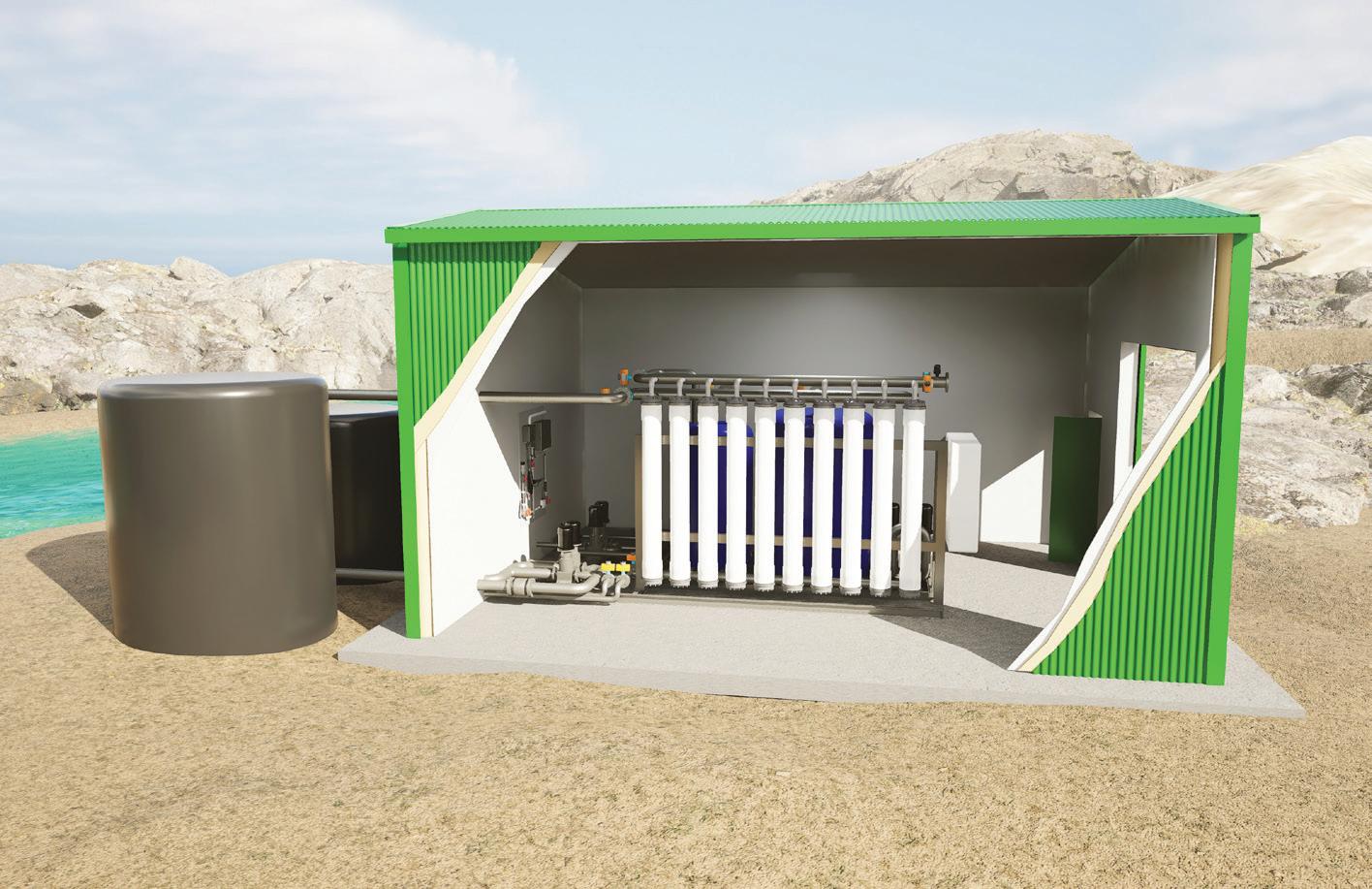
communities’ of up to 25 people (which can temporarily go up to 50 people, for up to 60 days per year).
Consultation generated helpful and practical feedback from rural communities and helped build a picture of what really matters to them.
Some of the feedback that was adopted has led to altered requirements for these very small communities so that they now only require twice yearly microbiological testing under the Drinking Water Quality Assurance Rules.
That means simply collecting a sample and having it tested by a registered laboratory for E.coli and total coliforms, which are the indicators of water quality that have been used for more than 100 years.
Suppliers and laboratories will need to let the regulator know if that testing reveals any problems and that could trigger a conversation about what the issues might be and how the supplier can address them.
“As an example, someone who might supply drinking water to their neighbour
will, in most cases, be under the 25-person limit for very small communities. But then if they had temporary staff on site or have a shearing gang visit that would take them over the 25-person limit. We agreed with feedback from the sector that if this is only for up to 60 days per year – then they should not have to do anything additional to comply.”
Bill says there are some mistruths being spread about costs to meet the rules and standards, but there is no need to panic.
“Disappointingly, there are rumours and misinformation going around communities that, among other things, private suppliers must install expensive upgrades to their supply to come up to standard. This is not the case.”
This article has been provided by Taumata Arowai, which was established as the water services regulator in response to the Havelock North incident and inquiry as part of the reform of Three Waters. It is responsible for ensuring New Zealanders who are supplied with water, receive safe and reliable drinking water.
NOVEMBER/DECEMBER 2022 WATER NEW ZEALAND 41
Murky about drinking water? Get clarity on treatment needs Future-proof regulatory changes Talk to us about how you can safeguard your community’s drinking water, with one of our cost-effective transportable water treatment plants. The ThirstResponder® M is a compact membrane treatment unit. Using the highest quality Koch™ membranes to tackle tricky turbid water sources. Prefabricated to your specifications
our Auckland workshop, each plant
footprint
pilot plant to get accurate data
to
for resource
09 272 3496 info@gfsystems.co.nz gfsystems.co.nz
at
occupies a small
requiring only minor construction work on site. Lease a
prior
applying
consent. Save on planning guesswork and get to your permanent solution sooner.
An opportunity to create a world-class three waters system
By Heather Shotter, executive director, Three Waters National Transition Unit
The three waters National Transition Unit (NTU) has been on the road engaging with councils on the roadmap to achieve the outcomes required to enable the four new Water Services Entities (WSEs) to operate in a way that is consistent with the new legislation from day one of their operation.
The immediate focus is on delivering a seamless transition, which lays the foundations for realising the more significant potential transformation opportunities from three waters reform.
We are facing the compounding impact of decades of underinvestment in water infrastructure overlaid with new demands into the future from accommodating population growth and mitigating climate change. Changes are needed in order to meet the challenges ahead so that we can ensure all New Zealanders have safe, affordable and reliable drinking water, wastewater and stormwater.
A key focus of the three waters reform is on creating the scale and other structural changes that will enable the significant investment required in ageing water pipes and treatment plants across the country that is out-of-the-reach of individual councils alone.
The transition of the three waters services is one of the most ambitious and complex programmes ever undertaken in New Zealand. The Water Services Entities Bill will shift water services from 67 councils to four new water service entities owned by each region’s councils on behalf of their local communities.
While councils will continue to own the assets, the entities would operate independently enabling strategic long-term investment in water services that is not dependent on other demands on council funding. As part of this, the NTU will oversee the seamless transition of approximately 4500 water services staff from their current organisation to their new entity.
This undertaking is a once-in-a-lifetime opportunity to create the conditions for major transformation in water services management and delivery long-term. In particular, there is the opportunity for a uniquely New Zealand approach to building a world-class water system guided by Te Mana o te Wai.
For end-customers of water services, there are the potential benefits that come from leveraging new technologies and from increasing awareness of their own role in the water system and the value of water, which helps to give the system-wide effect to Te Mana o te Wai that the reforms seek.
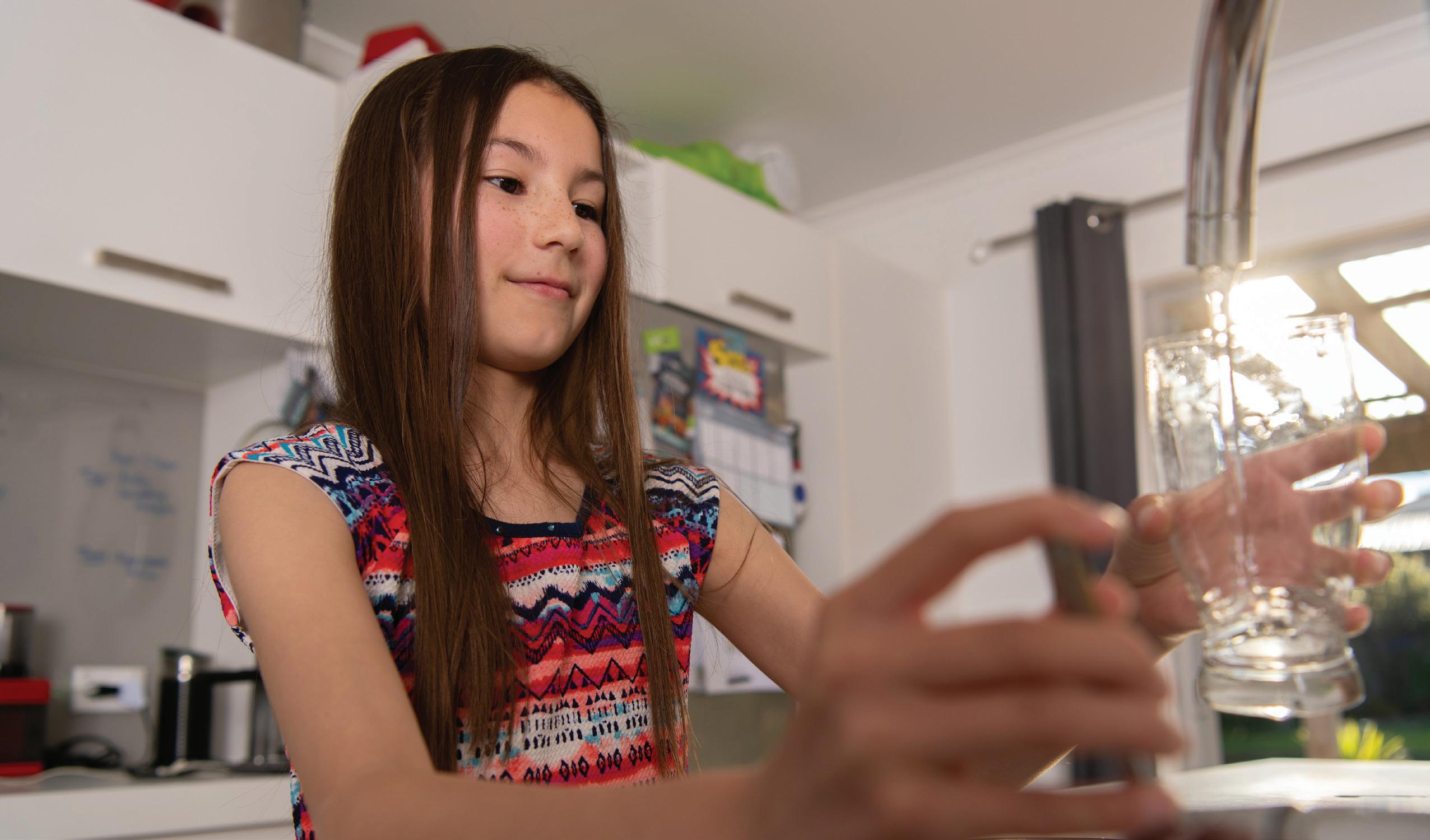
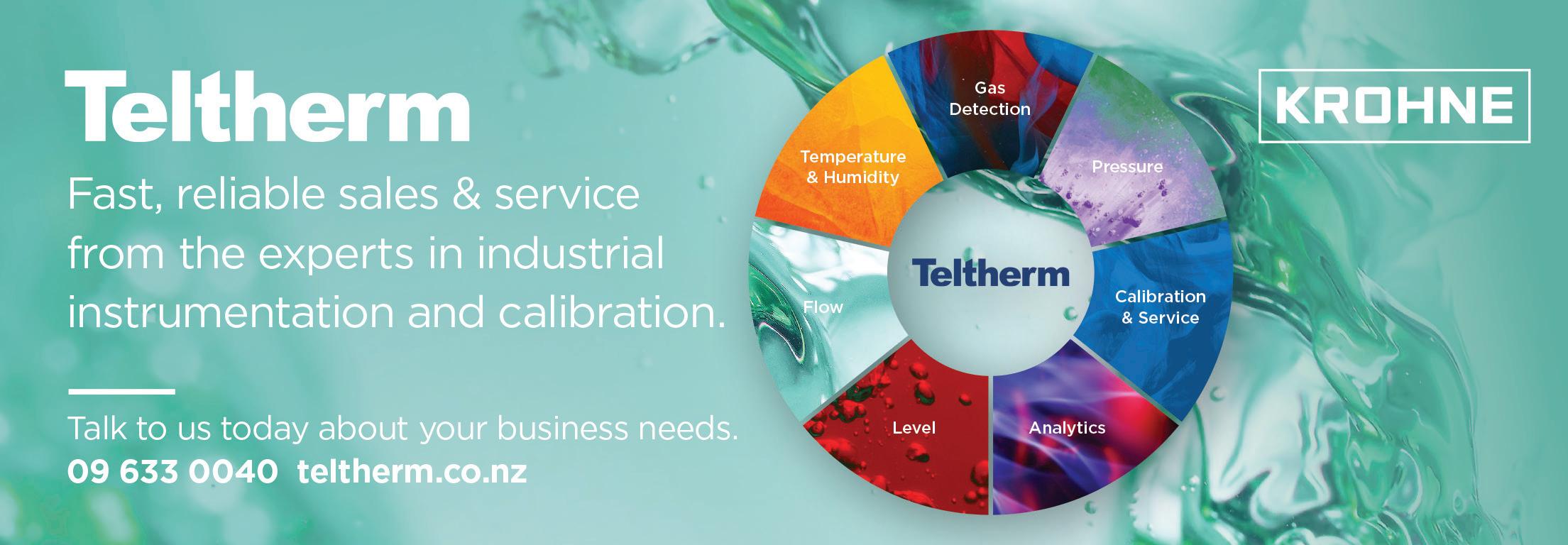
For water sector professionals, the structural changes create the conditions to build and sustain a highly skilled and adaptable workforce that can innovate and collaborate to drive outcomes. Organisations of scale enable new training and career pathways, including in R&D, as well as the ability to actively develop a more inclusive and diverse workforce.
All of this depends on a successful transition to day one of the four new WSEs, and a key element of this is workforce transition. Good progress is being made with the release to councils of the Staff Transition Guidelines in August, which generated significant feedback from councils mostly agreeing with the direction of travel on this.
Water New Zealand will be engaging with the water sector over the coming months on the long-term transformation opportunities, beyond day one transition to the four new WSEs. In the meantime, we welcome your input as part of council teams we are engaging with on all of the workstreams to deliver the transition and establish a platform for the future.
Please go to www.Slido.com #2730859 and tell us your vision for water.

42 www.waternz.org.nz WATER NEW ZEALAND COMMENT
The Water Services Act 2021 (the Act) provides a new regulatory approach for drinking water supplies and introduces some new responsibilities for drinking water suppliers.
Following public consultation, new Drinking Water Quality Assurance Rules, Drinking Water Standards, Aesthetic Values and three Acceptable Solutions have been published and will come into effect for registered suppliers on 14 November 2022.
Drinking Water Safety Plans are due soon
Registered suppliers need to submit a Drinking Water Safety Plan (DWSP) to Taumata Arowai by 15 November 2022. Submitting a DWSP is a milestone in a continuous process of improvement.
We have published guidance and DWSP templates for small suppliers and water carriers on our website. They are not mandatory to use but may be helpful for suppliers providing drinking water to populations of up to 500 people.
Acceptable Solutions provide a different compliance pathway
Acceptable Solutions are a useful way for certain supply types to demonstrate that they meet the requirements of the Act. They are an alternative to complying with the Drinking Water Quality Assurance Rules, and preparing and implementing a DWSP.
Our first suite of Acceptable Solutions are for Roof Water Supplies, Spring and Bore Drinking Water Supplies, and Mixed-use Rural Supplies. They allow for water to be treated at the end-point of a supply (often at each house or building) and without residual disinfection.
Unregistered suppliers can relax
Unregistered suppliers have time to find out more and get the advice and support they need. They have up to November 2025 to register with Taumata Arowai and up to November 2028 to fully comply with the Act.
Find out more at: taumataarowai.govt.nz/for-water-suppliers

Wai ora. Tangata ora. Healthy water. Healthy people.
We’re here to help make sure everyone has access to safe and reliable drinking water every day.
The cut of her jib
Recently appointed as independent board member for Wellington Water, Alexandra Hare has learned the benefits of working together when facing complex challenges as a high performance team – whether that’s in the boardroom, out on the project site, or when sailing the seas. By Mary Searle Bell.
With her childhood spent in rural Taranaki, Alex grew up with a strong connection to the land and the curiosity that comes with that. This background lends itself to a career in applied science, where she has grown from a junior scientist, to two decades later still being dedicated to the industry where she began.
“At school, I wasn’t the strongest in the class in science compared with my counterparts, with school life holding a mixture of sports, science, and academically, I loved English literature. I guess you could say I was well rounded.”
That being said, she did sit the International Baccalaureate exam in geography, achieving a mark that saw her ranked top in the world.
After finishing high school she headed to Otago University to do science and, perhaps unsurprisingly, excelled in her major of physical geography.
“At Otago, the Bachelor of Science degree was very applied and we spent a lot of time out in the field sampling or surveying. But we also covered international policy, emerging climate change issues, and human and physical geography.”
Growing up rural and having always been hard working, she was keen to start her professional career. As soon as she graduated, she got a job at Environment Waikato in its environmental division.

“I wanted to get out and experience application of my studies. My job at the regional council did exactly that. It was a mix of roles including water quality testing, environmental education, consenting, and compliance work.
“It was wonderful for me as I have a strong affinity for community and public service.
“It was a great team too. The people were excellent mentors. They taught me the value of authenticity in the workplace, and a supportive culture with candour – something I have taken into my leadership roles.”
Alex says that as a young graduate she was very fortunate to be tasked with enabling and enhancing the connection with research and community relations in Whāingaroa Raglan Habour and surrounds.
“There were a lot of council, environmental, and community groups studying the harbour and it was my job to ensure the different groups were talking to each other, and with community and mana whenua.
Her work saw her spend time listening to each of the different groups, which encompassed community leadership through to land care leadership, and bringing it all into an easy-to-read resource for the community. This was coupled with a community day to showcase the broad range of research in the area and for experts to liaise and engage with the people of Raglan.
“I was tasked with digesting complex information and sharing it in a way anyone could understand it. It was a brilliant job for a graduate.”
Alex then made the move to Lake Taupō , taking a role with the Wairakei Power Station.
“It was a tough job for a young environmental advisor as the business was going through a significant change with planned capacity increase of the geothermal fields.
“I learned all about the dynamics of holding oneself as an environmentalist in a traditionally industrial setting, the dynamics of the environment court process, and I also got to work with some amazing geothermal reservoir engineers who are some of our best leaders in the field of engineering, yet who are incredibly humble.”
This work launched Alex’s career in the energy sector, and she headed to Australia.
“Early in my career I focused towards the technical practice of environmental and social impact analysis in large scale energy projects. This is where I found my progression through project management and delivery, team management, and then unit management and leadership, particularly being the behind the scenes support and pastoral care to diverse technical teams.”
She spent seven years in Australia, from where she also undertook project work in the Middle East.
“Whenever I am asked to do something, I say yes. I took every opportunity I could early in my career.
“I found, like many Kiwis working internationally, our authentic ‘can do’ attitude opens doors and our grit allows us the resilience to work in difficult conditions.”
When Alex returned home she was asked to lead a “diverse and exciting” water and engineering design division for Opus.
“It had a really excellent mixed group of disciplines, thanks to its rich history of the Ministry of Works. My job was reshaping and supporting the team to be a part a swiftly evolving water sector, and with a higher frequency and need to respond to natural disasters or seasonal impacts in our rivers, communities and roads each

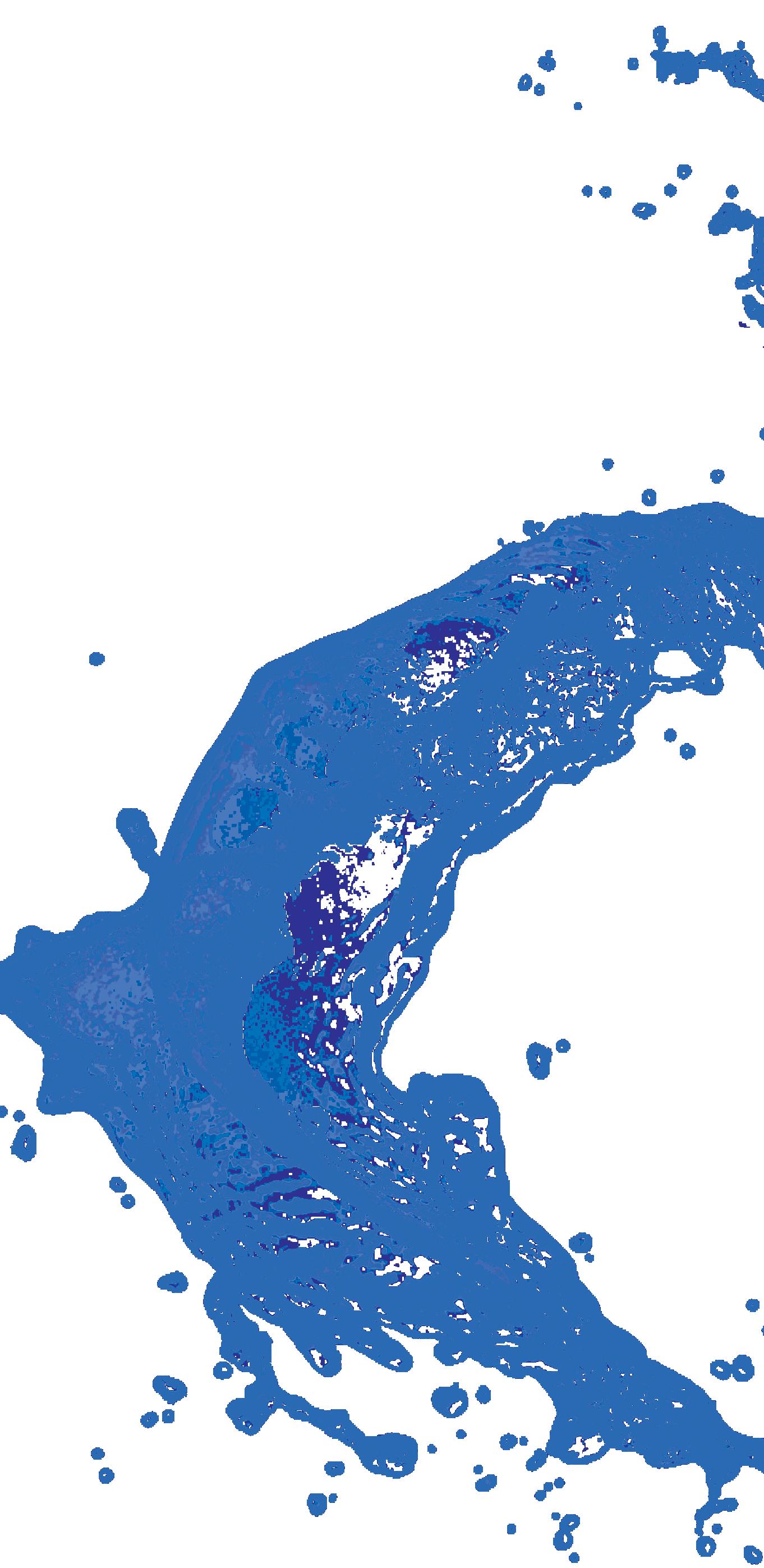
“In the region at the time, Wellington Water had just been formed, and I lead our team who became part of the multi-year design panel team.
“It was a great evolution of procurement and collaboration for the industry to really support a more partnership-style delivery, and I felt at the time we were all a part of really exciting and healthy change in the way infrastructure outcomes for communities were to be delivered.”
In 2017, Alex tackled a very different challenge; sailing from the UK to South
44 www.waternz.org.nz WATER NEW ZEALAND PROFILE
America then South Africa as part of the Clipper Round the World Yacht Race.
“When I moved to Wellington I was looking to create a community and as a pragmatist thought – Wellington… wind… harbour… and so took up sailing.
“Out on the harbour, status, age, job title, don’t matter. You’re all connected by a common goal. It’s an awesomely levelling place.
“Then my father died unexpectedly, and the grief gave me the desire to live as much as I could, so when the race popped up in my feed one day, I clicked on the link and committed.
“The fact that it was also connected to Unicef played a big part in my decision too, and the race gave me the opportunity to learn more and raise awareness about the shocking child welfare situation around the world.”
After a year of balancing her day job with the training of a performance athlete and learning how to sail, Alex sailed two legs of the race, part of the teams that raised £374,000 for Unicef in 2017/2018.
“It was an amazing experience and it reinforced for me that you can pull a diverse group of people together and perform, if you all have a common goal and drive.”
The 55 days and over 11,000 nautical miles at sea took a toll on Alex however, with a crippling spinal injury a year or so later forcing her to retire permanently from racing the sport, and take nearly a year’s sabbatical to relearn to use the right side of her body.
“To go from a very busy person to being bed-bound was extremely tough and it has taught me how to physically slow down and be gentler on the body – its isn’t easy and is a daily balancing act.”
Over recent years Alex has been working back in the public service alongside “some excellent engineers and scientists and policy leaders”.
She helped during early days of establishing the Climate Change Commission, worked with the Taranaki region as part of economic transition, and the formation of the new water regulator and the water reform, spending time linking central and local government agendas during a significant period of change in the infrastructure sector.
Last year Alex returned to the private sector, joining Aurecon as a
director of infrastructure advisory and water industry leader, and just a few months ago, she also joined the board of Wellington Water as an independent director.
In the past eight years in the water industry, Alex has been part of what she describes as an excellent community of people working together to deliver services for the communities they serve.
“From our front line workforce, operators, engineers, and scientists, its truly an honest and hardworking community and industry to be a part of.”
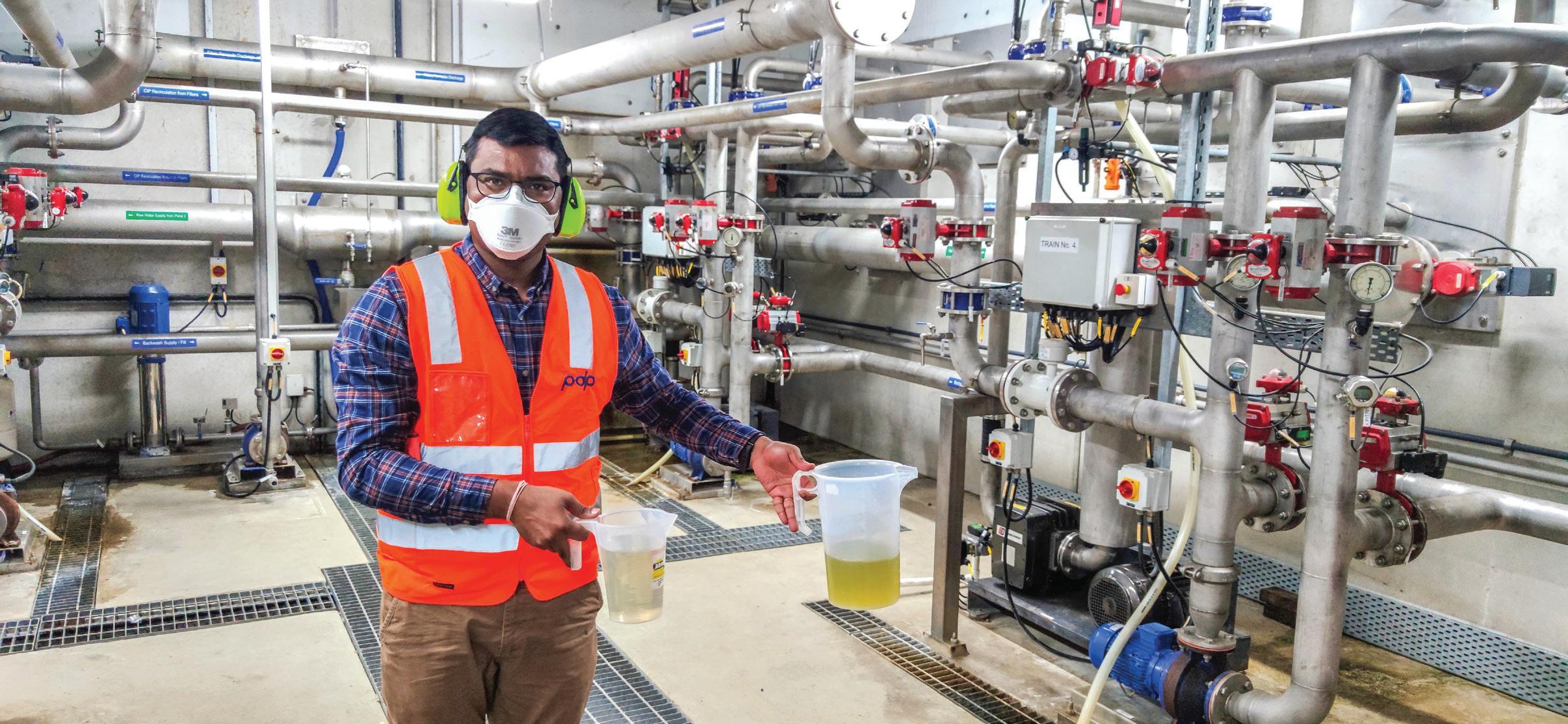
Alex has held a volunteer governance career for a decade and she is currently a board trustee of the Engineering New Zealand Foundation supporting engineers during hardship, and a board trustee for Eureka!, which fosters the next generation of leaders in STEM.
She is currently also spending her spare time getting dirt under her fingernails while test planting a native forest and micro new wetland area on the Kāpiti Coast.
She is equally passionate about helping transform the water industry with the need for stronger water literacy and good partnerships across the sector and between the public and private sector.

“Communication is key. It was highlighted at the recent Water New Zealand conference that the water transformation process is peppered with misinformation and disinformation.
“It’s our time to be courageous as practitioners in the water sector, to explain clearly the need for change and bring our communities along this journey.
“Water literacy is key to this journey – sharing lived experiences and stories about our waterways and infrastructure journey that resonates with people.
“The problems we face are generational, and will require an all-in crew to genuinely partner together and push in the same direction –bringing together different skills, ages, experiences, and backgrounds to work together to lift our performance with regards to the well-being, conservation and management of water.
“We are small, diverse, and hard-working, these attributes is what set us apart globally and what is needed to get the complex jobs done.”
NOVEMBER/DECEMBER 2022 WATER NEW ZEALAND 45
Embracing opportunity
With the boom in water infrastructure work and the ongoing skills shortage, it makes sense for companies to recruit engineers and scientists from around the globe. Silvia Vlad is one of those new immigrants, working in water and learning to call New Zealand home.
Silvia hails from Canada but she’s actually Romanian born, emigrating to Toronto with her family as a six year old. Perhaps that is why, now in her 30s, she had no fear in moving around the world once again.
And perhaps, along with an inclination to travel, she also inherited a love of engineering.
“My parents are both engineers by training, and the sciences have always been prized in my family,” she says.
“My mother has a master’s degree in thermodynamics, but is now working in finance, and my father has a PhD in robotics, although he too has moved into finance, working in the technology side of a bank.
“As I child, I thought I’d like to be a doctor – I wanted to help people and was interested in public health. However, I took a biology class and quickly realised my aptitudes might be more inclined to engineering.”
While she was at junior high, Lake Erie, just 125 kilometres south of Toronto, was battling a blue-green algae problem. This came after Lake Erie was heralded as a paragon of environmental care following extensive work in the 1970s, 80s and 90s to clean it up after years of point-source pollution.
Point-source pollution is relatively easy to deal with. The culprits
This time, however, it was diffuse pollution – predominantly fertilisers from runoff – and consequently much harder to fix, says Silvia.
“I was very interested in it, and did a project on it at school with the head of science, but then left the topic until I did my masters years later.”
Her influences, aptitudes, and interests converged, and ultimately, Silvia opted to do engineering at university following a visit from Engineers Without Borders.

“They sent a group of young professionals to my school to talk to us. They seemed vastly experienced and knowledgeable about the world. I was impressed with their ambition – and they helped make the ‘hypothetical’ idea that engineers could support public health more concrete and tangible for me.
“I soon found when I started my degree, that engineering has a very strong sense of community – perhaps as a result of students having to tackle ‘adversity’ together; we were facing more challenges than we’d ever seen and that forges friendships fast.
“I loved it.”
In her third year, Silvia spent a little over a semester in Singapore looking at how the tiny yet populous country manages its drinking
“Singapore’s NEWater Visitor Centre is like an amusement park showing the way the city reuses its water. It’s fascinating.
“And public discourse on drinking water is very high – taxi drivers would chat about it, telling me ‘we drink our pee!’.
There is a very different value system affixed to water in Singapore. While the Singaporean public are used to turning on the tap and having potable water flow on-demand, the path the water takes to the tap can be very different from the Canadian context.
Canada, like New Zealand, has been lucky to have relatively good water quality, and relatively high water availability to support its
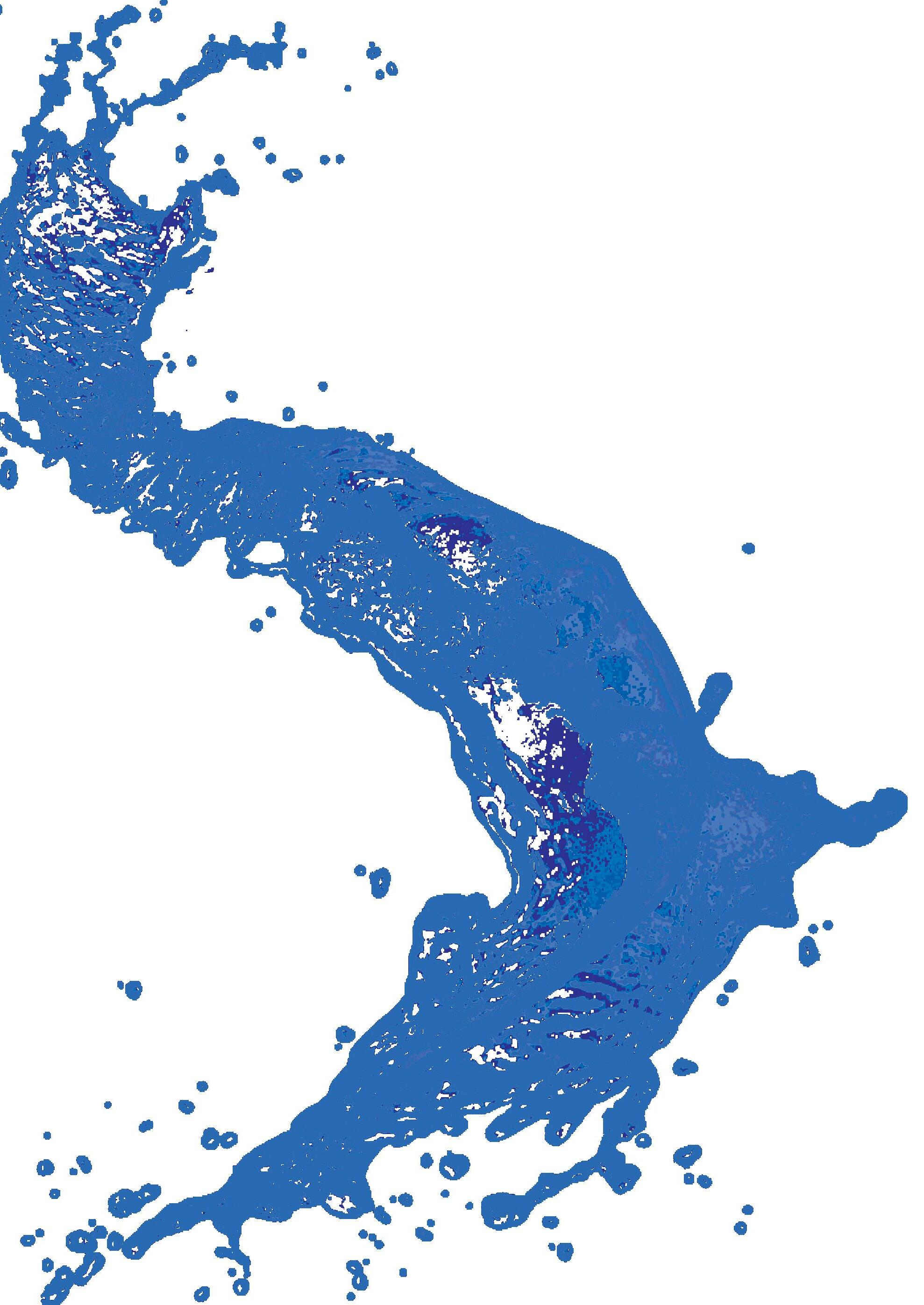
“Singapore is the opposite – a lot of people and not a lot of water. Their options were to either store rainfall, or buy water from neighbouring countries, or reuse it. As a result, the public has a keen understanding of the costs and value of drinking water.”
After graduating, Silvia spent a year working in a consultancy before undertaking a research project. By now, her focus on drinking
For her thesis she returned to the issue of cyanobacteria and cyanotoxins, specifically, the use of activated carbon to remove them
WATER NEW ZEALAND PROFILE
“It turned out to be a timely topic. In 2014, half a million people in Toledo, Ohio were left without water to drink, cook, or brush their teeth with, because of cyanotoxins from the algal blooms in Lake Erie.
“There was a surge of interest in cyanobacteria more broadly, and my thesis on the subject had me accepted to speak at various conferences which were a great start to my career.”
While she enjoyed the research and “did a lot of neat, interesting things”, she found it isolating, so on completing her master’s degree, Silvia returned to corporate life.
She joined CH2M in 2015, where she worked predominately in its water team, while dabbling in wastewater and asset management as well.
“When CH2M was acquired by Jacobs in 2017, a lot of energy was put into consolidating teams working on digital solutions; I had the opportunity to spend about 25 percent of my time working with the global digital team at that strategic level for a few years, and getting to see what was happening in other industries outside of water.

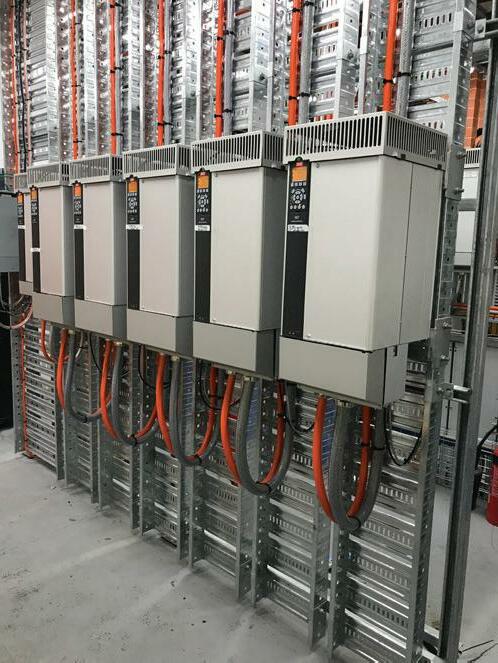
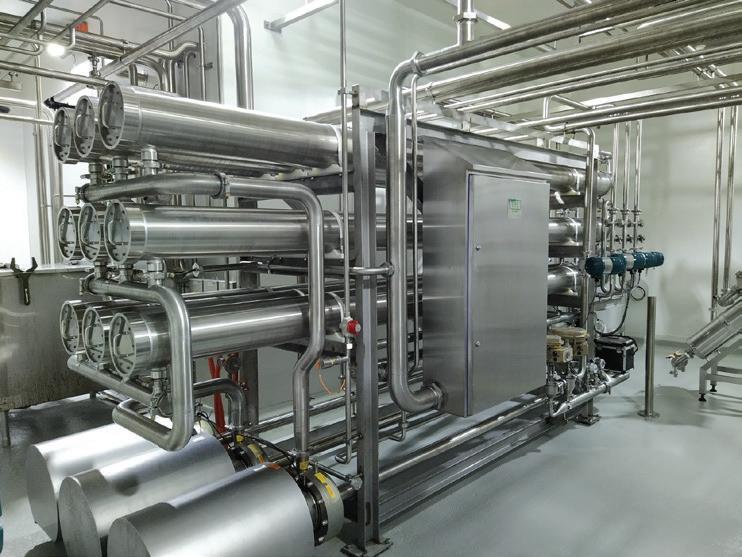
“The other 75 percent of my time was working as a process engineer in the Toronto office. For the last several years, I have been working in the intersection of the digital space and drinking water, and I get excited about things like building digital twins and looking at machine learning optimisation.”
Then, earlier this year, Silvia was given the opportunity to move to Jacobs’ Auckland office.
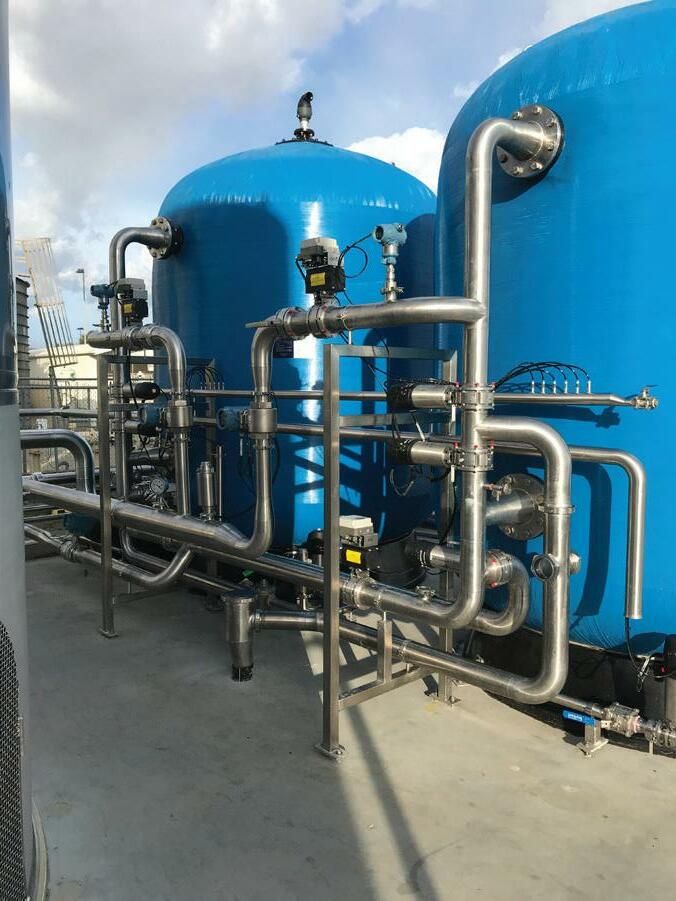
“My boss convinced me to move out in the middle of a pandemic, sight unseen.
“But you’d be hard pressed to find anywhere else in the world going through what New Zealand’s water sector is right now – it’s an interesting time to be here, and an opportunity to make a positive contribution to the industry.
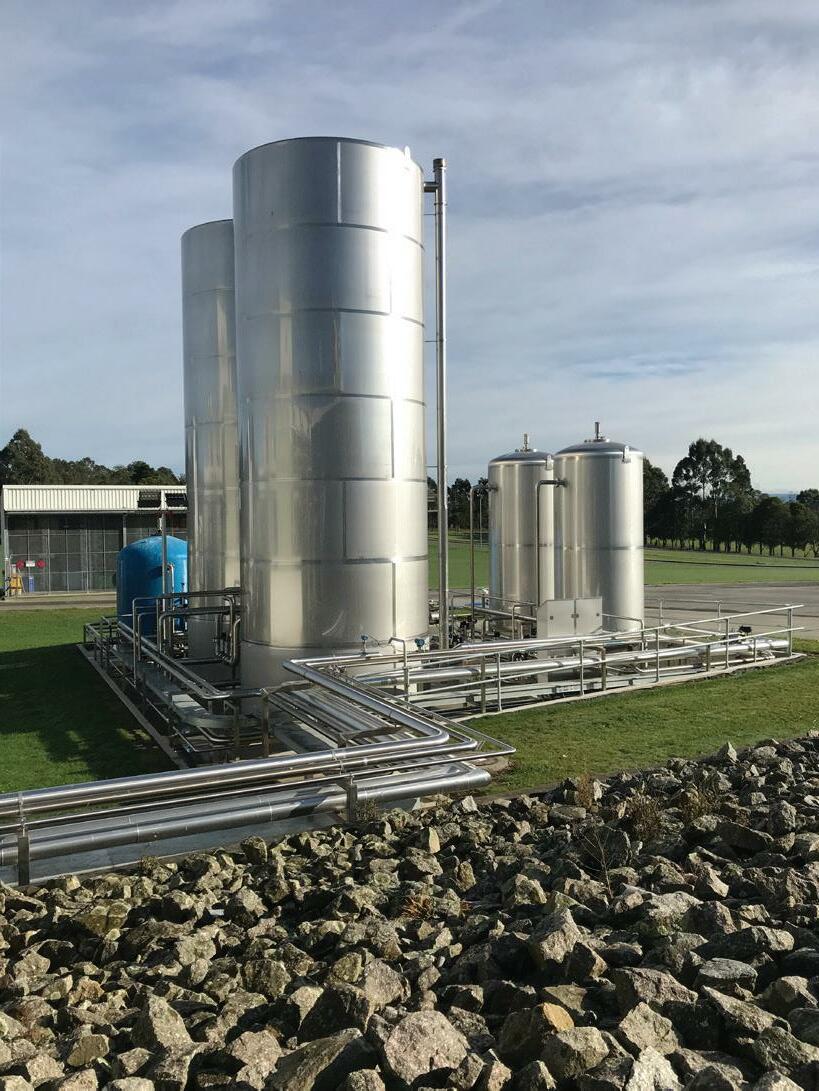
“Ontario went through significant water reforms in the wake of the Walkerton water incident. It’s fascinating to see the preamble to reforms, in contrast to the aftermath which was my experience in Canada.
“I’m also personally a big fan of working in different spaces – seeing how different places and people deal with similar problems. There’s always more than one way to fry an egg.”
Silvia has been here for about five months now, working between Jacobs’ Auckland and Christchurch offices, and says it’s been wonderful so far.
“It’s been a great experience – not only have my colleagues been incredibly welcoming, but so too has the wider water community.”
Her plan is to become really engaged in the water industry – joining various technical groups across the Pacific – and deepening her knowledge and experience in drinking water and also digital water.
“This is one beautiful thing about working for a global company, you get so much opportunity to cross borders and sectors.”

And Silvia is not the only ‘bright young thing’ Jacobs’ Auckland branch has recruited from abroad, with two more Canadians recently joining the team.
“It’s a great time to be in water and a great time to be in New Zealand.”
Turnkey Water Solu�ons Call us +64 9 579 6172 Email us enquiries@epil.co.nz Design & Delivery Potable Industrial Automated Systems Plant Upgrades Portable Skids www.epil.co.nz
Smart sensors to solve sewer network overflow and blockage issues
A team from Auckland University has now completed their study into smart sensors, and the results confirmed their earlier findings that the radio frequency identification (UHF-RFID)-based smart sensors could provide a valuable, cost-effective tool for finding blockages in sewer pipes. The project team includes Drs Sundra Ramireddy Tatiparthi and Yashika De Costa, both environmental engineers at Pattle Delamore Partners, and Drs Wei-Qin Zhuang and Colin Whittaker, academics from the University of Auckland.
Sewer and stormwater drainage systems are critical urban infrastructure assets. These systems are essential for protecting the urban water environments and public health. In particular, increased fat, oil, and grease (collectively known as FOGs), reduced per-capita water usage, rapid urbanisation, ageing infrastructures, and climate changerelated weather events are stressing the sewer networks and associated infrastructure across all cities.
When combined with un-flushable products (e.g., wet wipes), solid deposition in networks becomes more frequent and easier, resulting in the ultimate blockage of sewer pipes. Some severe consequences from sewer blockages include network failure, crown corrosion, raw sewage overflow, and abhorrent odour problems.
Furthermore, issues such as inflow and infiltration (I/I) and illicit- or crossconnections in sewer networks are also problematic.
Combined with blockages, these issues can release human pathogens into receiving water bodies, deteriorating water quality in marine and freshwater systems.
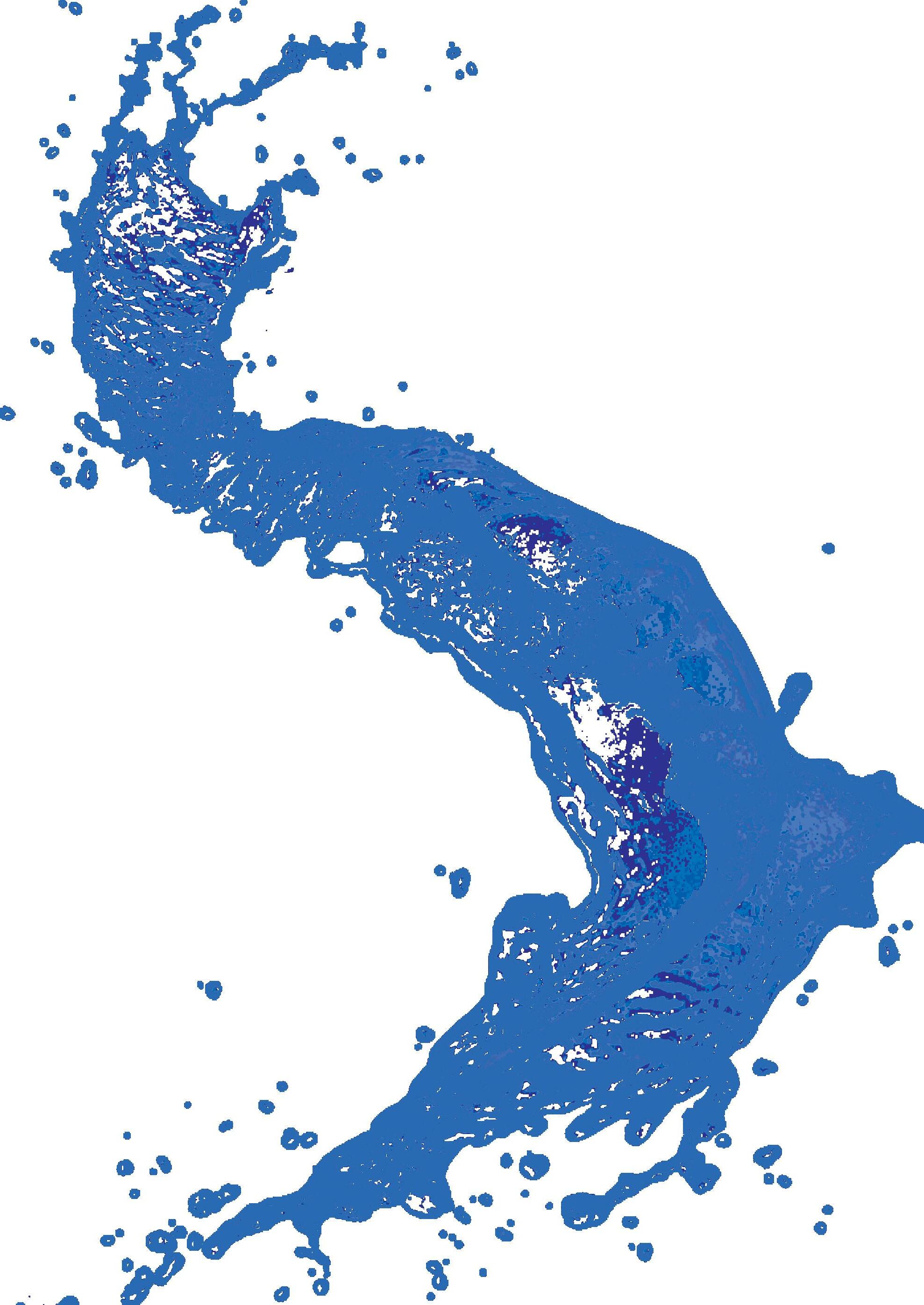
The conventional techniques for identifying blockages and I/I rely on regression-based models, dye testing, smoke testing, fibre-optic distributed temperature sensing (DTS), or closed-circuit television (CCTV) visualisation. These techniques are time-consuming, labour-intensive, and costly when used for preventive interventions.
To better address sewer blockage and I/I
issues, the team of researchers came together to develop an ultra-high-frequency (865–928 MHz) radio frequency identification (UHFRFID)-based smart sensor system. These smart sensors are able to collect quantitative information cost-effectively on sewer networks to detect sewer blockages, monitor flow velocities, and identify I/I in real-time.
In many fields and within some largescale Internet of Things (IoT) developments, the UHF-RFID technology is preferred due to its simple architecture, real-time sensing capability, and versatile detection ranges.
Although using UHF-RFID sensors in sewer systems is still rare, the team envisages many benefits of using this type of sensors in sewer systems, including battery-free, long lifespan, reusability, small size, and low costs.
Each UHF-RFID sensor used in this project has a unique serial number and a microchip that can store and correlate a broad spectrum of information, including property names, street numbers, utility holes, pump stations, and other network asset information. Also, the cheapest UHF-RFID sensor used in this study was under NZ$2.
In their study, RFID sensors were encapsulated using 3D printing with various environmentally friendly polymer materials such as polylactic acid (PLA) and polyvinyl alcohol (PVA). The PLA and PVA encapsulated UHF-RFID sensors were tested in the laboratory and then the field to ensure they remained buoyant or floating on wastewater surfaces throughout their travel time within a sewer system.
The research team also ensured that 3D-encapsulated sensors achieved substantial detection ranges in sewer systems with high moisture. PLA is a biodegradable and stable material that can be used for making heavyduty sensors. PVA is a hydrophilic polymer that readily dissolves in wastewater and does not create additional solid loading in sewer environments.
Both encapsulation approaches are environmentally friendly and sustainable for sewer network monitoring applications.
The finished UHF-RFID sensors are designed to be small enough to be directly released through a gully trap or flushed through a toilet bowl.
Field trials conducted in Auckland demonstrated that the sensors were suitable for detecting blockages and illicitconnections. The trials also confirmed that the sensors were 100 percent flushable and thus suitable for quick surveys of sanitary and stormwater pipes.
The design ensures that the various functionalities of UHF-RFID (e.g., accuracy, long reading distance) are not compromised by regular flow conditions and the presence of common sewer solids, such as toilet paper and human waste.
The operating costs associated with the UHF-RFID methodology are also significantly lower than other methods.
The team also developed a novel UHFRFID-based ‘water level gauge’ sensor to provide an accuracy of 10 mm in measuring sewage depth. The accuracy compares
WATER NEW ZEALAND INNOVATION

NOVEMBER/DECEMBER
49
2022 WATER NEW ZEALAND
A 30 tonne, 70 metre long fatberg clogging the Cathedral Street sewer in London in 2017.
To better address sewer blockage and I/I issues, the team of researchers came together to develop an ultra-high-frequency (865–928 MHz) radio frequency identification (UHF-RFID)-based smart sensor system. These smart sensors are able to collect quantitative infor mation cost-effectively on sewer networks to detect sewer blockages, monitor flow velocities, and identify I/I in real-time.

Water level measurement using UHF-RFID sensors. (A) Schematic diagram of RFID sensors application in sewer utility holes for flow measurements and overflow monitoring. (B) UHF-RFID gauge. Note. Figures not drawn to scale.
RFID sensor movement in flume. (A) No-blockage condition is a typical movement for RFID sensors without dispersion. (B) The increased blockage size caused the increased water level on the upstream side of the blockage, which created eddies and reduced the velocities of the sensors. (C) Increased sensor travel time with increasing blockages.

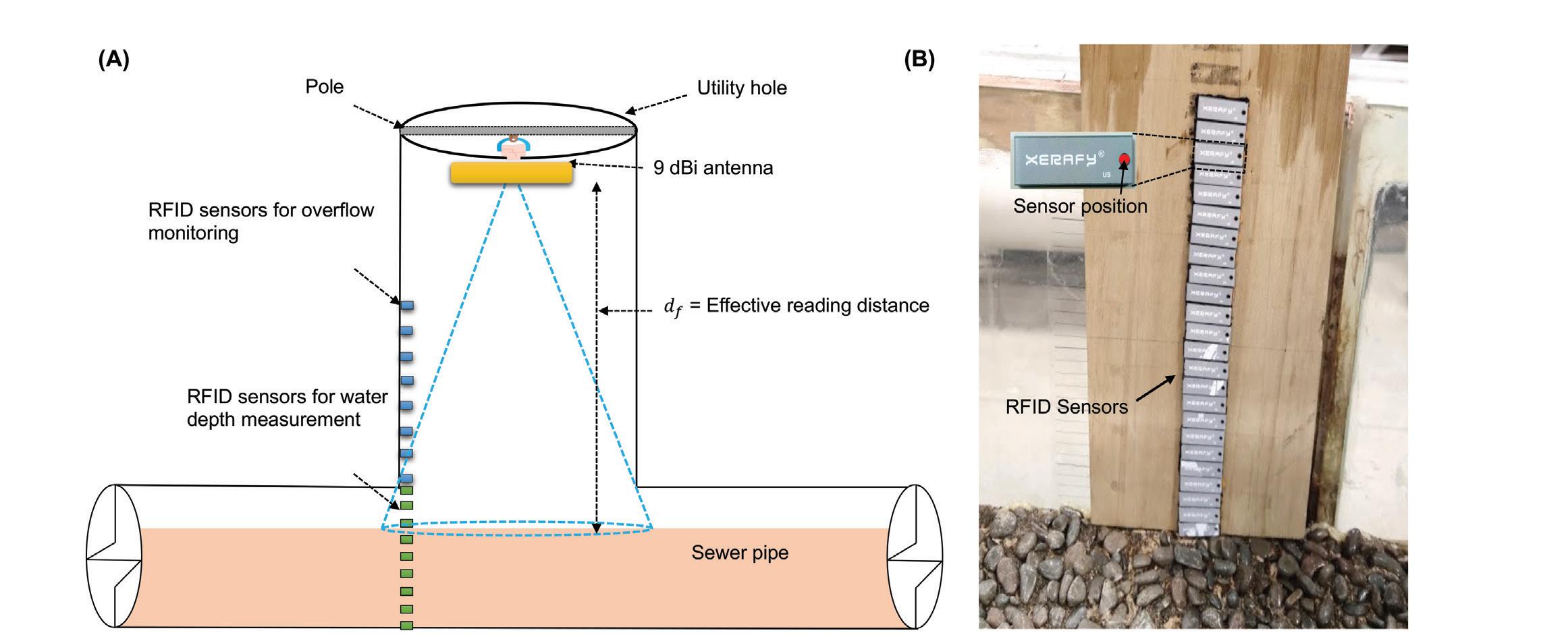

50 www.waternz.org.nz WATER NEW ZEALAND INNOVATION
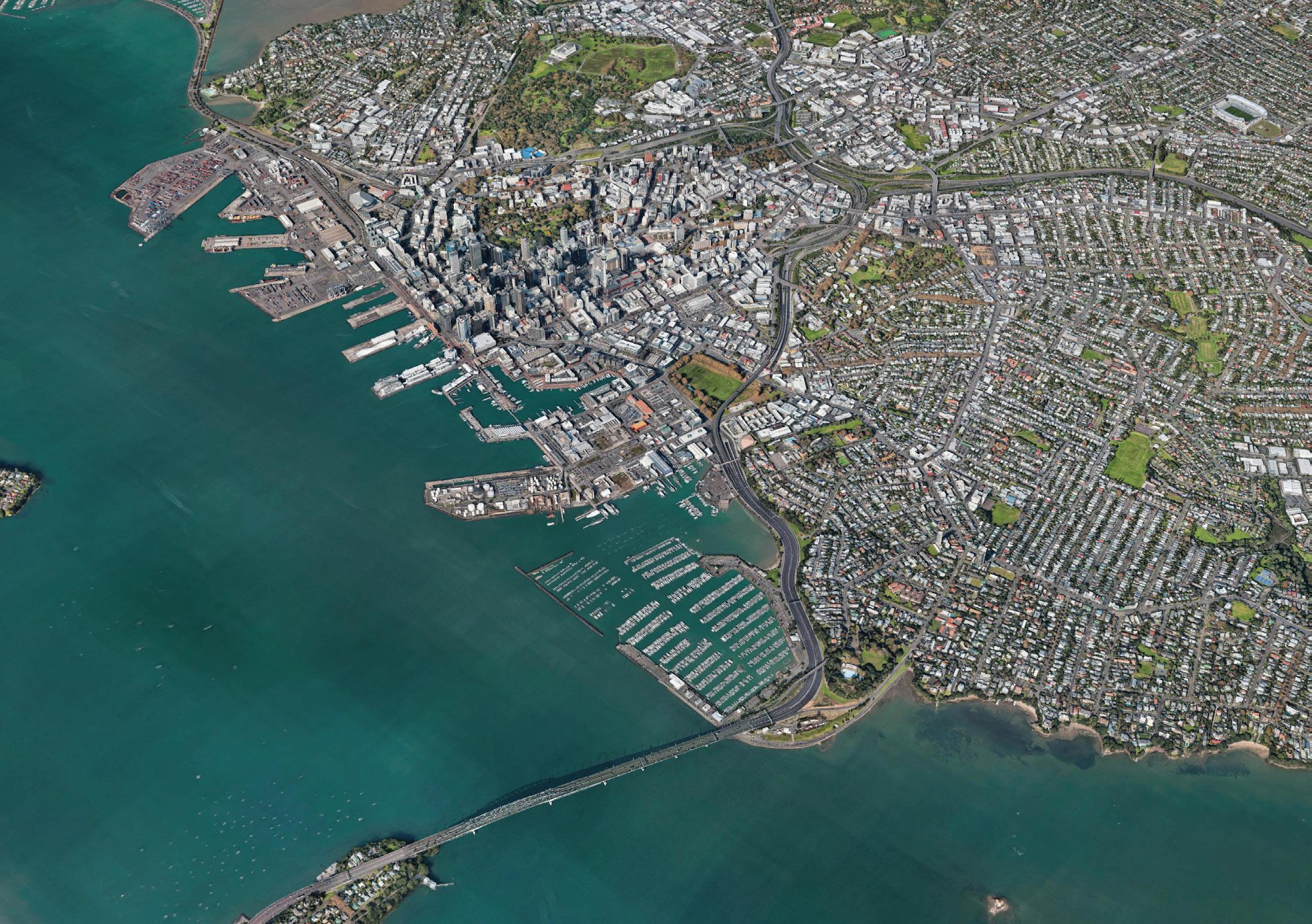

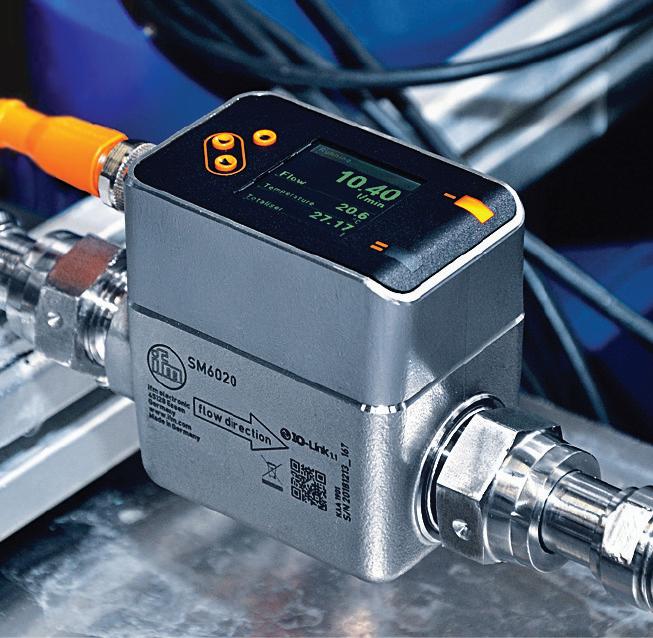
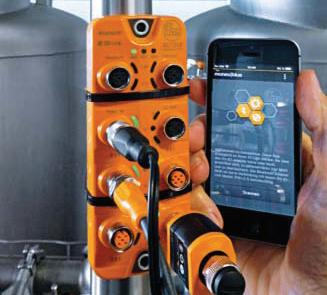
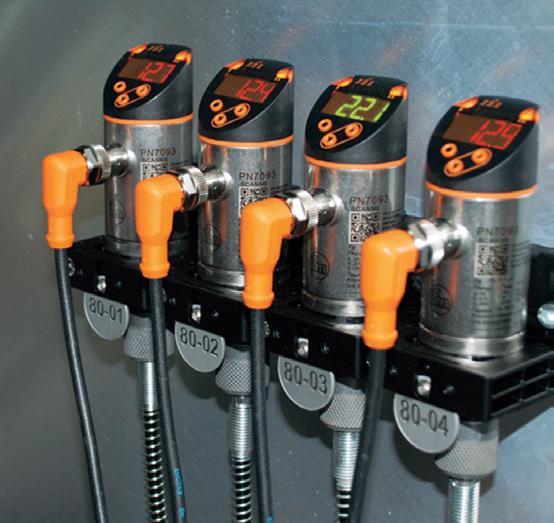

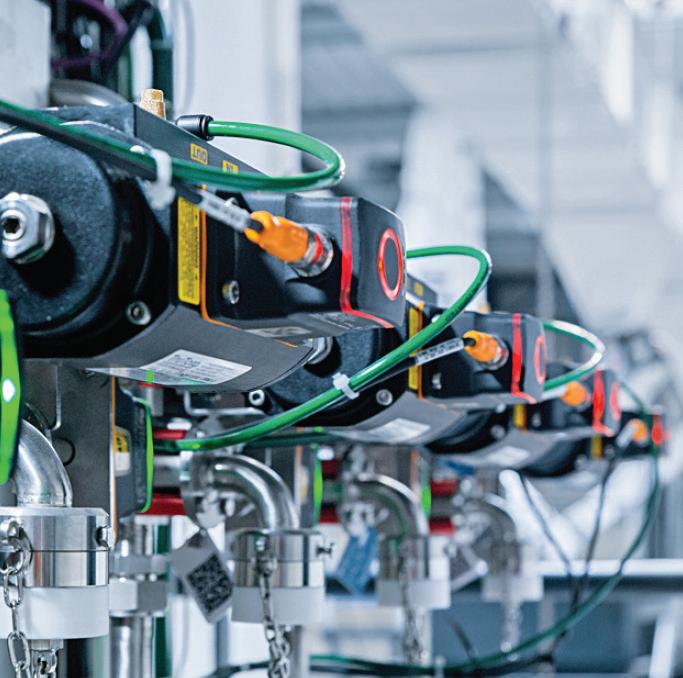
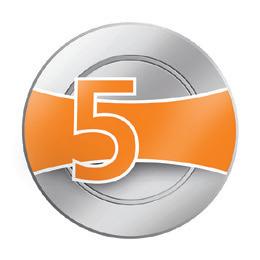
NOVEMBER/DECEMBER 2022 WATER NEW ZEALAND 51 Engineered Solutions for Sustainable Three Waters Infrastructure FLOW / TEMPERATURE PRESSURE VALVE POSITION RADAR LEVEL CONTROL BLUE TOOTH IO-LINK COMMS VIBRATION MONITORING ifm offer the most comprehensive range of industrial digital sensors & fieldbus interface modules available today - ex-stock NZ! IP69k, IO-Link (Digital) technology is now used in the most advanced WT & WWT plants, globally. German quality - supported by local engineers. Time to upgrade? years WARRANTY on ifm products www.ifm.com/nz ph: 0800 803 444 Sensors ifm_WaterNZ_Jan_2022.indd 1 21/12/21 9:57 PM
favourably to other methods used for buried pipe applications, such as approximately 9mm for radar, 10mm for liquid-solid tubular triboelectric nanogenerator, 26mm for fiber bragg grating sensor, 15mm for image analysis, and 5mm for laser scanner.


By using the UHF-RFID sensors and the gauge in concert, the research team measured the surface velocity in real-time in the Hydraulics Laboratory at UoA.
During the laboratory tests, the surface velocities were measured at about 0.40–1.2 m/s in those flows (corresponding to controlled flow rates of 7 to 71 L/s). The surface velocity measurements using the UHF-RFID sensors were not compromised, even under high flow conditions.

Furthermore, the sensors performed consistently under both steady and unsteady flow regimes. The results indicated that our UHF-RFID sensor system is suitable for monitoring sewer network surface velocities in a cost-effective and non-invasive fashion.
For blockage identification, several tests were conducted in flumes to determine
the behaviour of the sensor. In particular, a sensor’s velocities measured upstream and downstream within a segment of the pipe/flume can be a strong parameter of sedimentation-type of blockage.
The team observed that, as the blockage size increased, the water depth level increased in the upstream, resulting in a hydraulic jump on the downstream side of the blockage. Hydraulic jumps are associated with strong turbulence, forming eddies that trap the sensors and increase their travel time.
Partial blockages also affect travel times from multiple sensors; thus, by measuring the surface velocities, blockages or partial blockages can be identified in the segment of the pipe.
It should be noted that blockages had the greatest effect on travel time for low discharges; however, changes in travel time were detected even at relatively large discharges.
The research team identified that using the UHF-RFID gauge and sensors could compute
both significant changes in wastewater levels in the pipe between various locations in sewer segments and identify average velocity variations between utility holes and identify potential blockages.
Overall, the UHF-RFID sensor systems developed by the team can be used to obtain hydraulic information on sewer networks, providing real-time input to hydraulic models that predict flow variations, and identify blockages and illicit connections. Sewer blockages and I/I events can be deduced using the hydraulic information collected from a specific sewer network and pinpointed to a particular segment.
The sensors can also be used as digital tracers to provide cost-effective and efficient network re-mapping solutions and determine buried property drainage flow directions. The low cost and relative ease of deployment make these sensors a valuable tool that complements existing wastewater network monitoring approaches.
For more information, contact Wei-Qin Zhuang at wq.zhuang@auckland.ac.nz.
52 www.waternz.org.nz WATER NEW ZEALAND INNOVATION 0800 99 77 33 www.pandfglobal.com sales@pandfglobal.com SN8 pipe made to AS/NZS 5065:2005 and suitable for drainage and sewer applications MAKING YOUR PROJECTS POSSIBLE THROUGH: • Extensive size range • Stock held from Kaitaia to Invercargill • Comprehensive technical calculations SPECIFY EUROFLO® FOR YOUR NEXT PROJECT
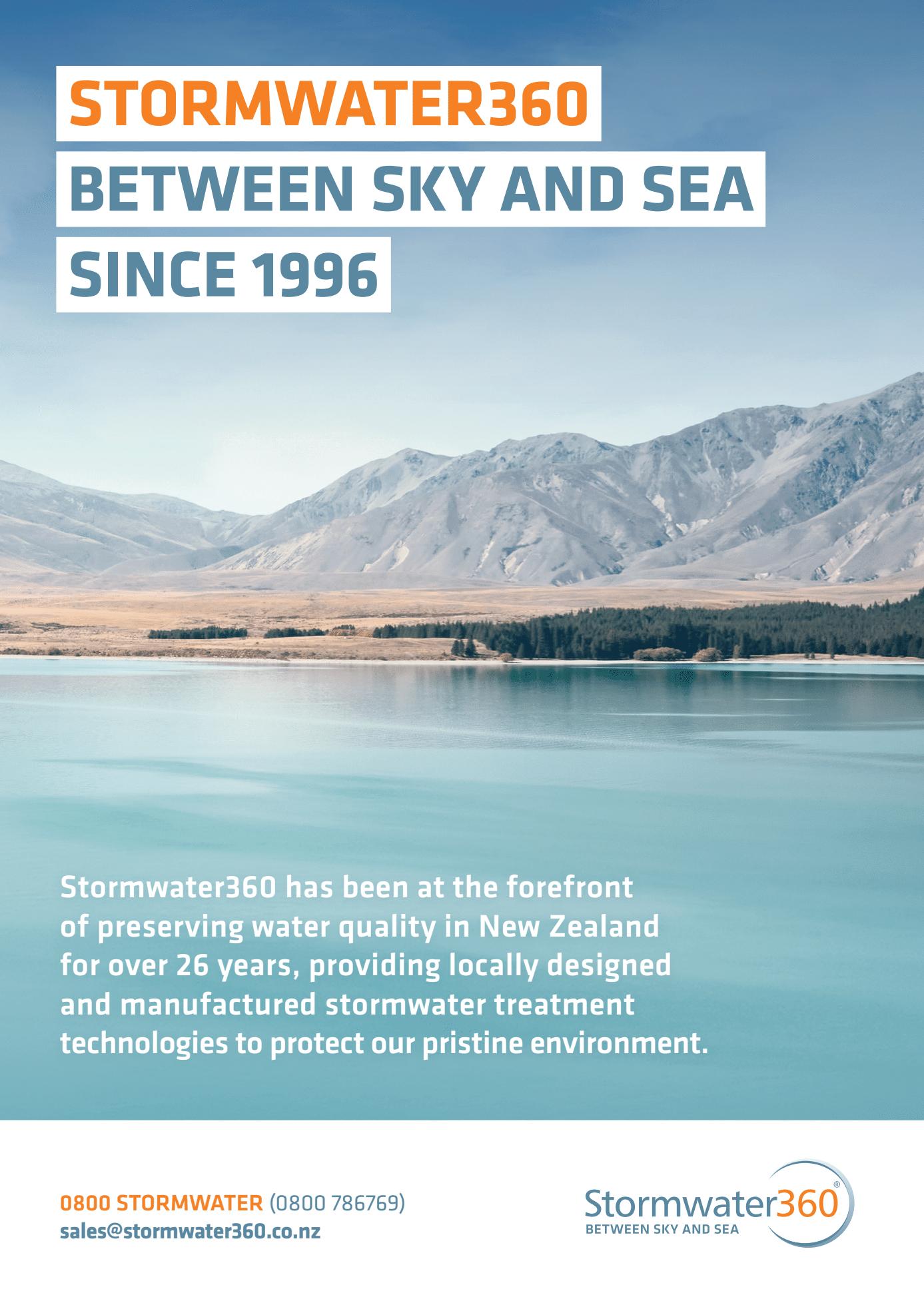
Auckland’s biggest water project finishes construction

Auckland’s biggest-ever water project, the mammoth Hūnua 4 water pipeline project, has been completed after more than a decade in construction and is now in the testing/commissioning phase.
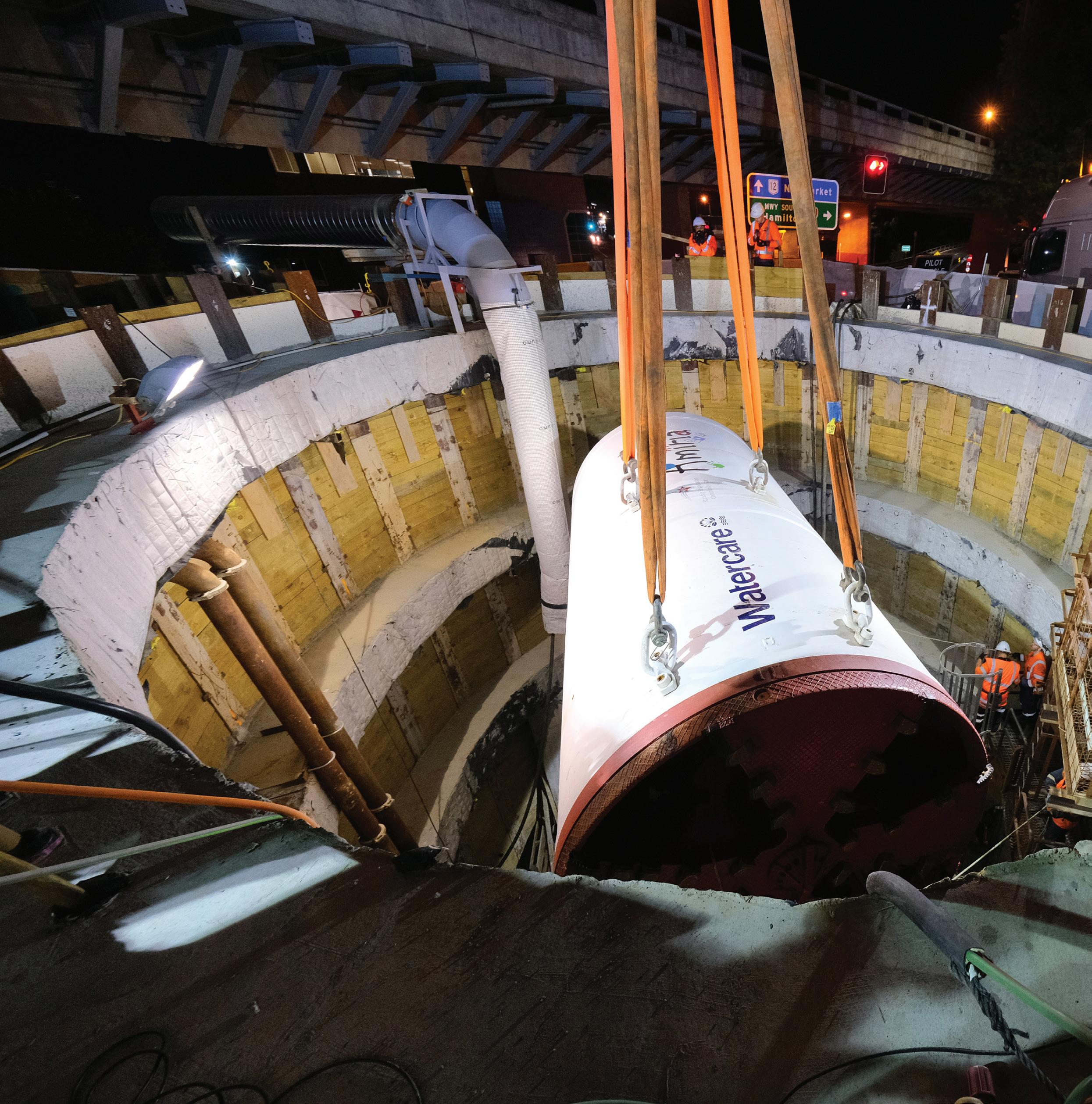
54 www.waternz.org.nz
WATER NEW ZEALAND INFRASTRUCTURE
The connection of Watercare’s Hūnua 4 water transmission pipeline to the Khyber Pass reservoir marked the colossal $400 million pipeline’s completion. It will now undergo a series of tests before the final stage is put into service.

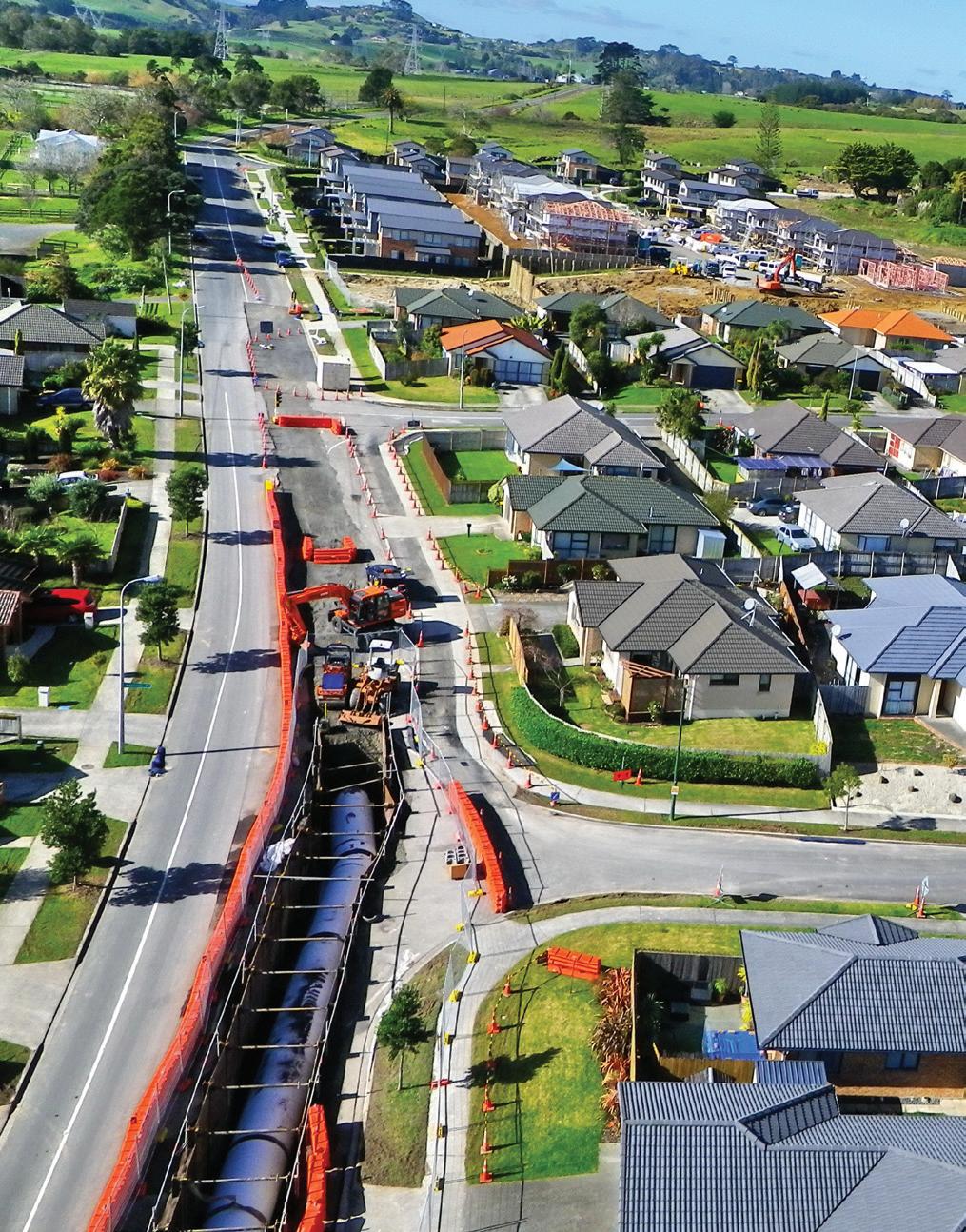
Work on the 31-kilometre watermain, which goes from Manukau to Khyber Pass, started in 2008 and has been carried out in 11 stages. As each stage has been completed, the pipe has been connected to its neighbouring suburbs, boosting resilience and providing for population growth.
Watercare chief infrastructure officer Steve Webster says the colossal project caters for our growing population and provides resilience in the event of a natural disaster.
“As far as water pipes go, Hūnua 4 is massive. With a diameter ranging from 1.6 to 1.9 metres, it carries huge volumes of water – up to 3000 litres per second.
“This means that as our city grows, we can continue to provide uninterrupted, high-quality water supply.
“The geographic separation between Hūnua 4 and our other major water transmission lines gives us a great deal of resilience in the event of an earthquake or other disaster that could damage our network.
“It also means we can take our other large pipes out of service for maintenance, without disrupting anyone’s water supply.
“And Hūnua 4 does all this beneath our feet, without us even realising it – she’s a bit of a quiet achiever.”
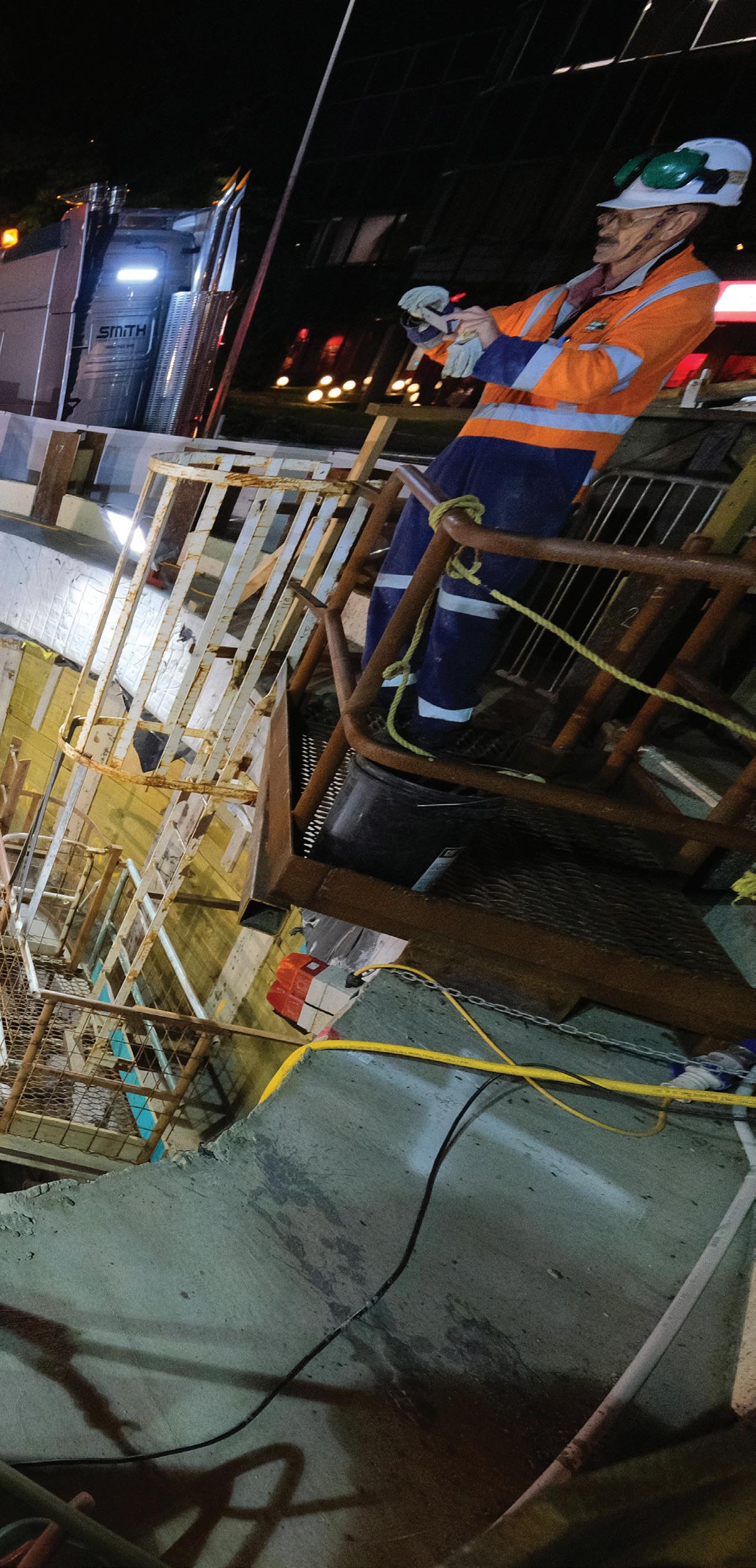
While Steve is pleased to see the pipe in service, he acknowledges the project was not without its challenges.
“Sadly, there was an incident in 2011 that resulted in the death of a highly-valued staff member – Philomen Gulland – and seriously injured some others. It was our darkest day at Watercare and led to us transforming how we work in confined spaces.”
NOVEMBER/DECEMBER 2022 WATER NEW ZEALAND 55
Hunua 4 watermain tunnel boring machine, named Amiria, is lowered into place.
Top right: Open trenching in Flat Bush 2012. Bottom right: Watercare project manager David Moore, McConnell Dowell project manager, Richard Atkin and Watercare graduate engineer, Hinewai Hosford at Hunua 4 final connection site.
The benefits of the pipe reach as far as the North Shore and west Auckland, as well as the communities it connects to along its route.
“Hūnua 4 carries water from our Ardmore and Waikato treatment plants between our Redoubt Road reservoirs in Manukau to our Khyber Pass reservoirs. From there, the water can make its way into town, out west and across the Harbour Bridge, boosting the water supply to the North Shore and supporting population growth in these areas too.”
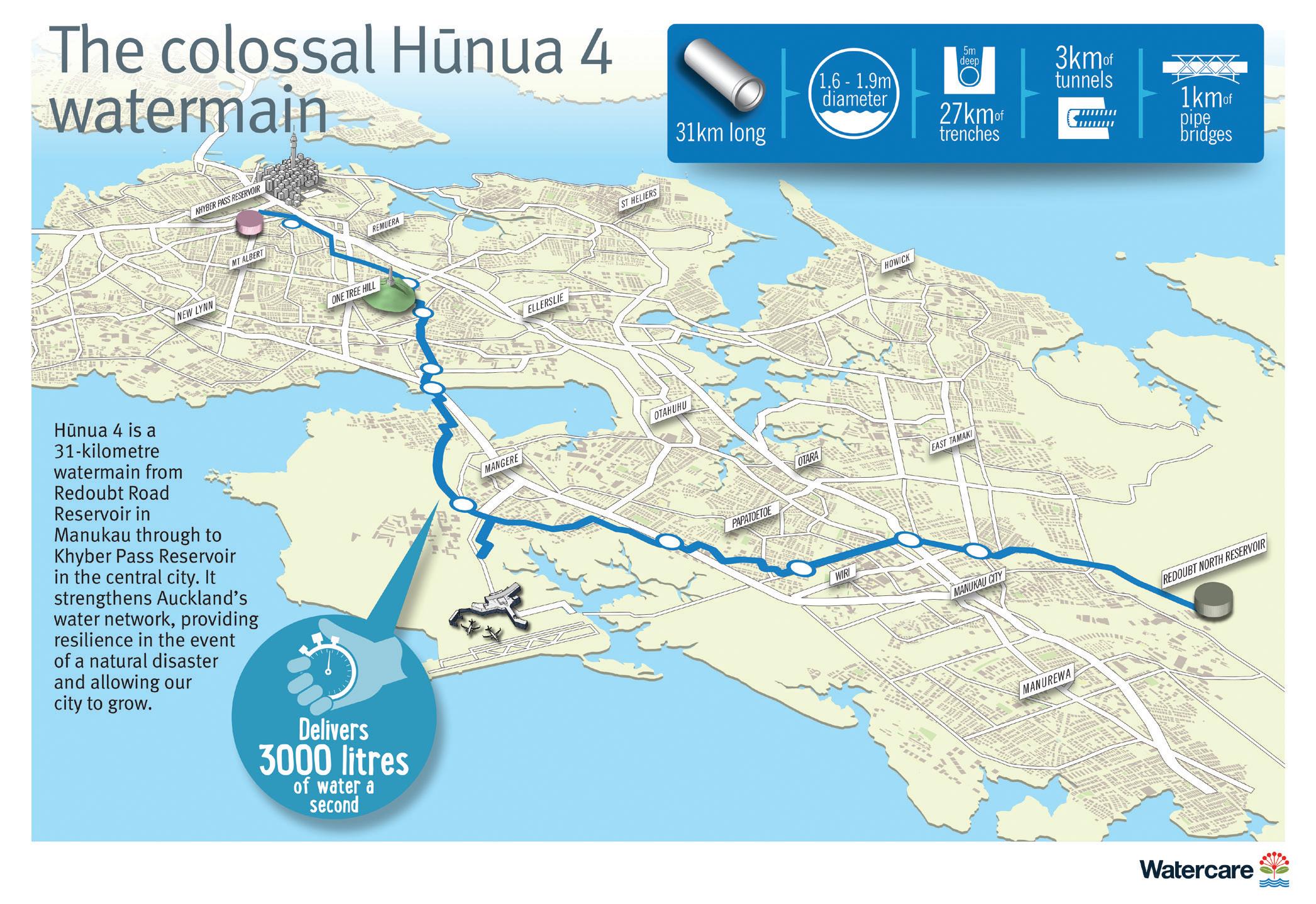
Tunnelling specialists McConnell Dowell constructed the final section of the pipeline, from Epsom to Khyber Pass, connecting the final bend in June.
“Hūnua 4 has been a technically challenging project so it’s incredibly satisfying to see the construction completed,” McConnell Dowell project manager Richard Atkin says.
“The hard work and perseverance of the team has been phenomenal, and we are all very proud to have helped deliver this important new water pipeline for Aucklanders.”
Watercare project manager David Moore, who has worked on the project for the past seven years, found the complexities rewarding. Most of the pipe has been laid in the road reserve in highly-populated areas.
“This pipe has three state highway crossings, three rail crossings, crosses the Manukau Harbour beneath the southwestern motorway and passes through many arterial roads,” he says.
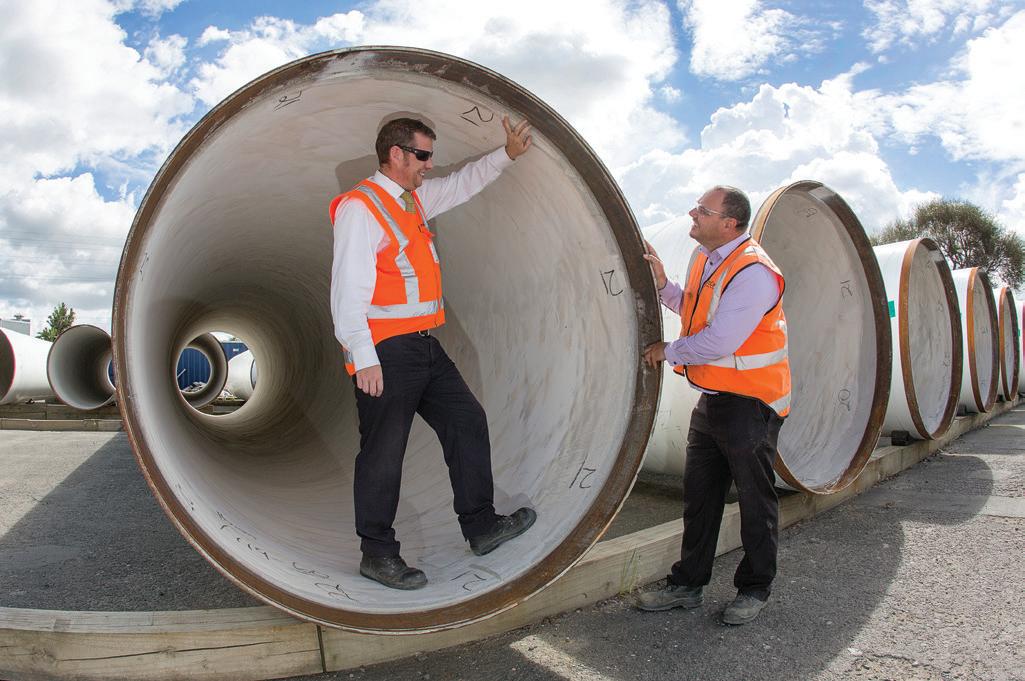
“The project discovered many lava caves, with one large lava cave at Ngatiawa Street in One Tree Hill and others discovered while tunnelling through Newmarket.”
About 27 kilometres of the pipeline was laid by open-trenching, and one kilometre is suspended under the southwestern motorway where it crosses the Manukau Harbour.
“The last three kilometres of the pipe – between Newmarket and Khyber Pass and including a long section under State
Highway One – was largely built by a tunnel-boring machine to minimise disruption in this high-traffic area,” David says.
While construction work began in earnest in 2012, the need for Hūnua 4 had been identified in the late 1990s. Preliminary works were carried out from 2008 to install the section of the pipe that’s tucked under State Highway 20 where it crosses the harbour. Watercare partnered with NZTA on this work to coincide with the highway extension, saving time and money.

“Huge infrastructure projects of this scale typically take 20 to 25 years from the initial concept discussions to the delivery of the project,” Steve says. “This is why we look far into the future to assess our growing city’s needs and make sure we can cater to them.”
Article supplied by Watercare.
56 www.waternz.org.nz WATER NEW ZEALAND INFRASTRUCTURE
Top: Watercare Hunua4 service infographic; the main takes a different route under the city than other water pipes. Above: David Moore demonstrating first hand the size of the water pipe. Opposite: Welding takes place as part of the final connection of the Hunua 4 watermain to Khyber Pass reservoir.

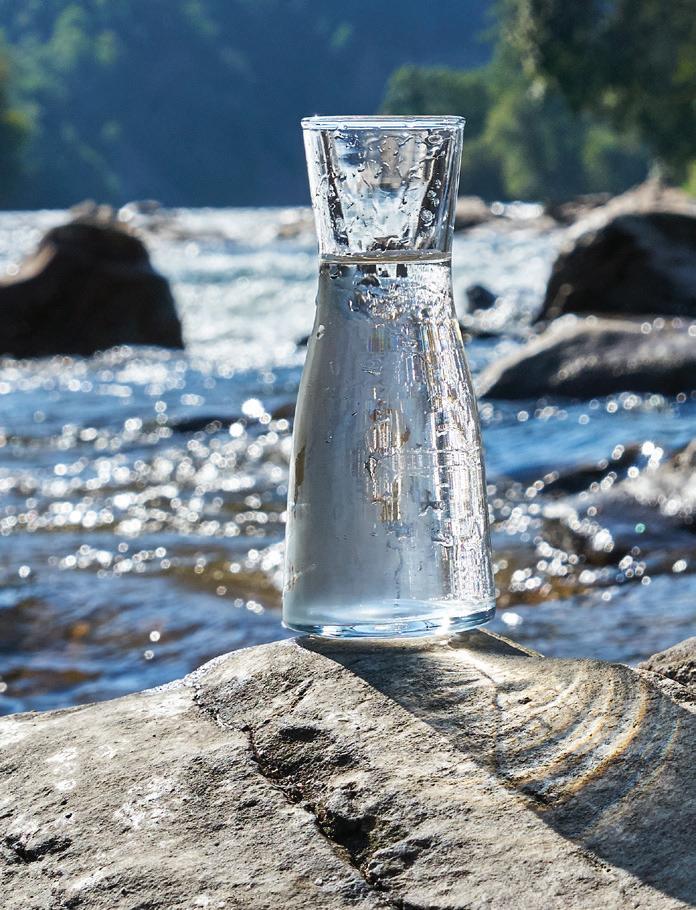

NOVEMBER/DECEMBER 2022 WATER NEW ZEALAND 57 Making Wa t er Safer infonz@filtecwater.com | 09 274 4223 | FILTECWATER.COM Contact us or more information *Horowhenua Marae UV systems supplied by FILTEC’s local partner Campbell’s Water Centre Four sizes for multiple applications and simplicity of operation IoT connectivity and monitoring Safe and clean water Installed, maintained and commissioned by local partners* Safe compliant drinking water in a cost-effective way Acceptable Solutions
Water woes over for marae

Hapu and visitors at all 13 marae within the Horowhenua District Council boundaries can now be confident their drinking water is plentiful and healthy, thanks to the Three Waters Reform Stimulus Fund. By Karlum Lattimore.
“It was a gift from the heavens,” says Ngati Wehi Wehi Marae chair Paddy Jacobs. The small Manakau marae had been limping along with old tanks, a faulty filter system, and no real hope of raising the funds to make big improvements to their drinking water.
“We have lots of tangi here with hundreds of people attending. We now have peace of mind that we won’t run out of water, and the water is safe.”
She says the funding shows how much the Three Waters reform is needed, and says it is supported by most Māori she knows.
Paddy says about 10 years ago, Public Health staff tested the marae bore water and found E.coli in the sample.
“We put in a new filter system but it never worked properly and often the pump broke down.”
Another test, done by the council before upgrading the Ngati Wehi Wehi water services, showed the bore water quality had improved and could be used to top up the rain water holding tanks when needed.
“There will be future discussions about the possibility of the marae being available for other community or civil defence purposes”.
Horowhenua District Council was first off the blocks to upgrade marae water services using the Government’s $761 million stimulus funding. It was allocated to local authorities to maintain and improve infrastructure and support reform of local government water services delivery arrangements. It also supported the operation of Taumata Arowai.
The council was allocated $4.35 million and spent $520,000 on upgrades to marae wastewater, stormwater and drinking water services (only two marae are connected to the town water supply). This

included the installation of 23 big green 30,000 litre water tanks and nine water treatment systems.
Funding is also being sought for electric backup generators, to keep the systems running should there be a power cut.
The council’s water and waste services manager, Asli Crawford, says, “The Three Water Stimulus funding was used for several other local projects. These included installation of more firefighting water tanks, a stormwater treatment device, and inspection, repair and cleaning of all critical sewer pipe infrastructure.”
The council also invested $150,000 in Matauranga Māori scholarships for five students studying Three Waters-related subjects at university.
North of Foxton, Motuiti Marae is another site that now enjoys plenty of clean water.
Marae committee chair George Davis says before the upgrade they had four concrete tanks, three of them cracked and leaking. The water was unfiltered and often ran out.
“Having basic access to safe filtered water and not having to worry about that any more means our children, and our children’s children, won’t have to bear the burden further down the track,” he says.
With 90,000 litres on site, the marae will no longer have to buy in water when it hosts large gatherings.
“We have a very good relationship with the council, with honest discussions. We hope to have this sort of relationship in the future and keep advocating for ourselves, other hapu and iwi and the community.
“Conversations and compromise will lead to the solutions needed from the wider reforms.”
58 www.waternz.org.nz
WATER NEW ZEALAND TE AO MĀORI
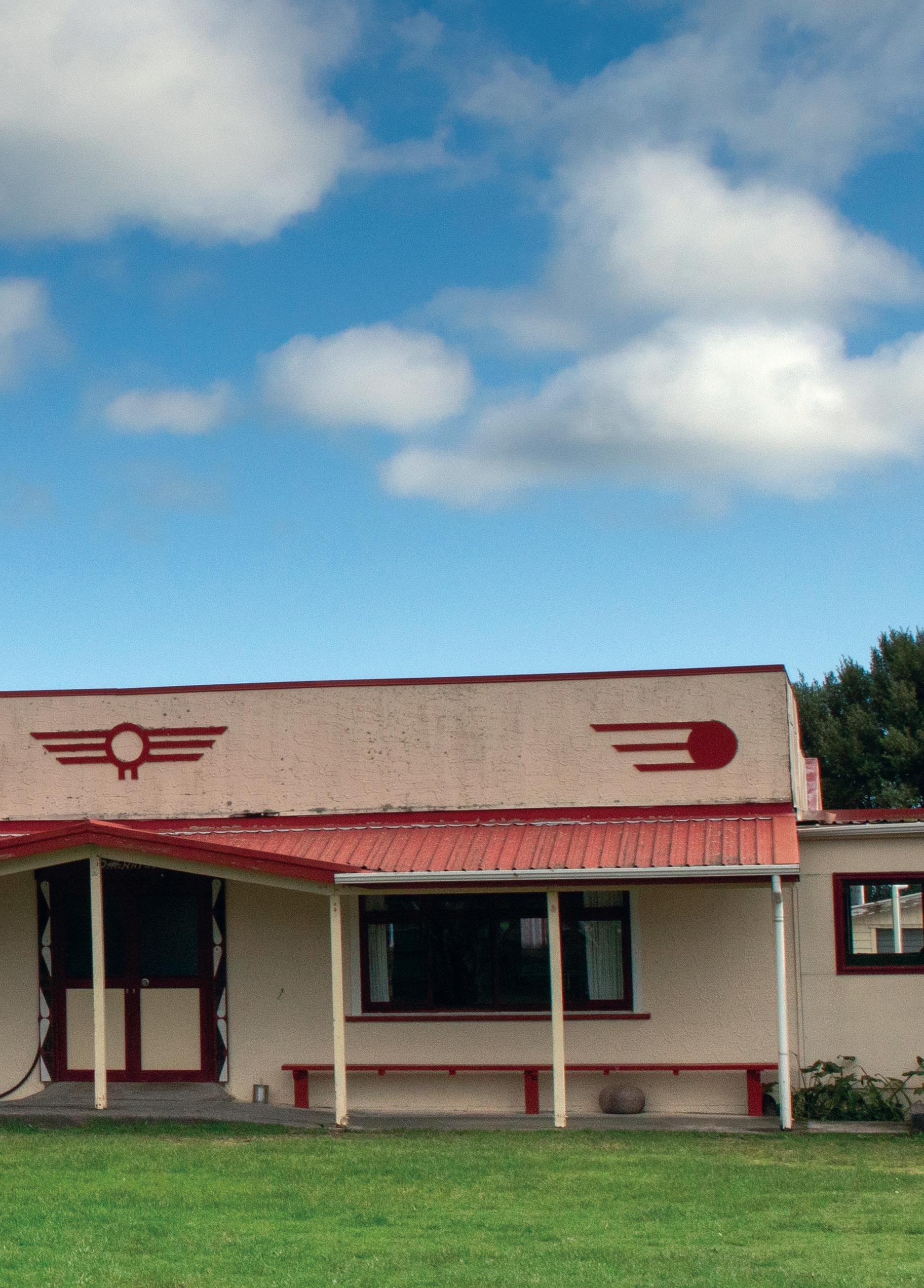
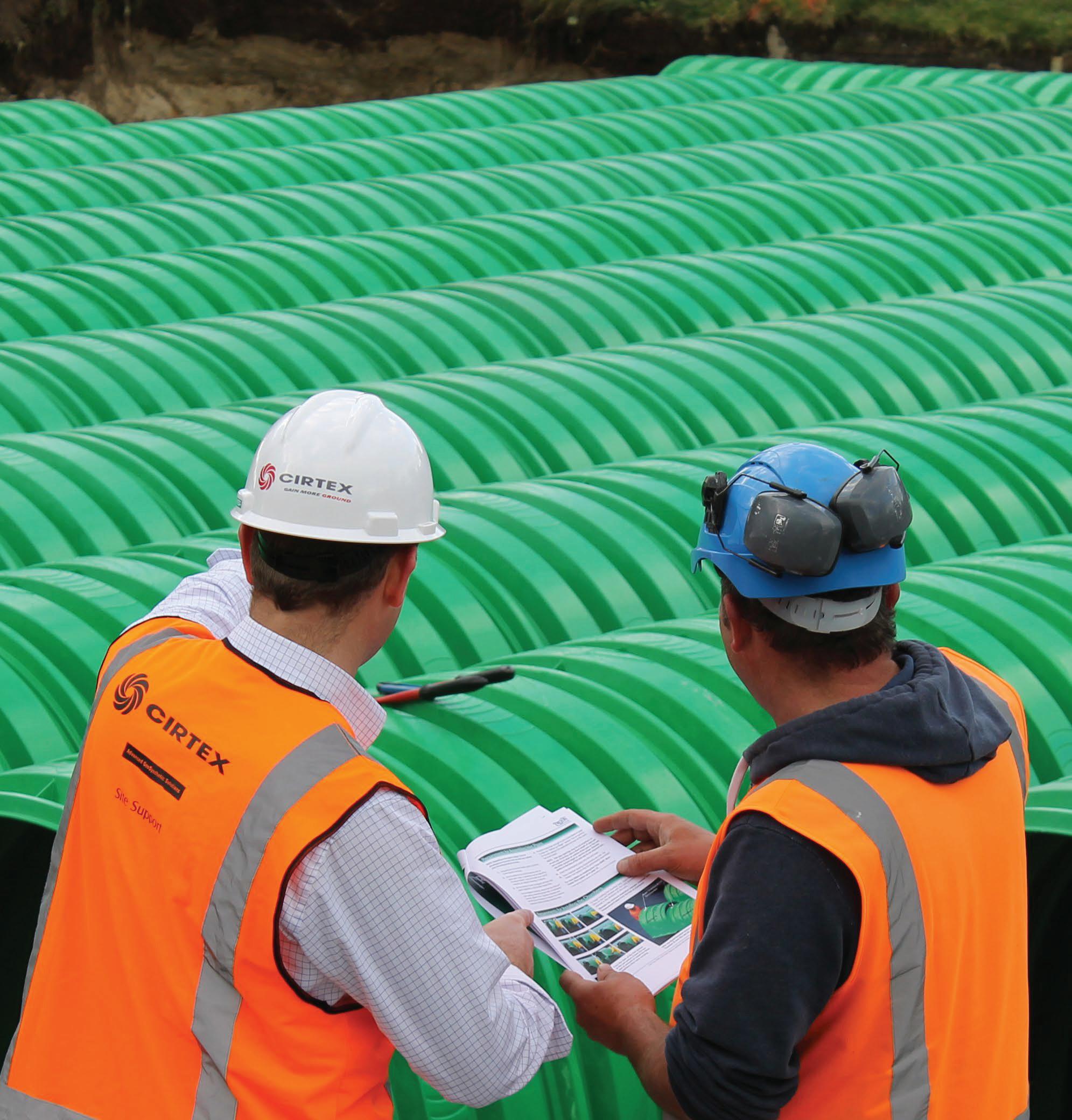
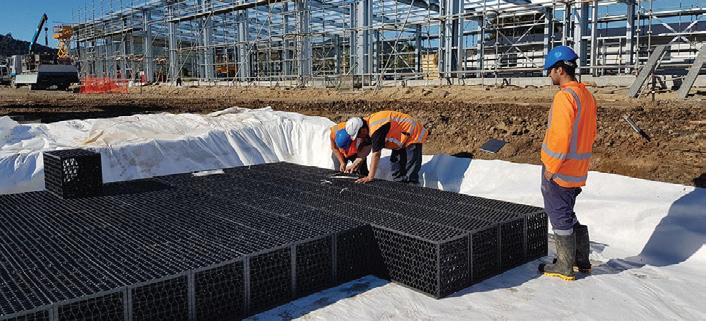


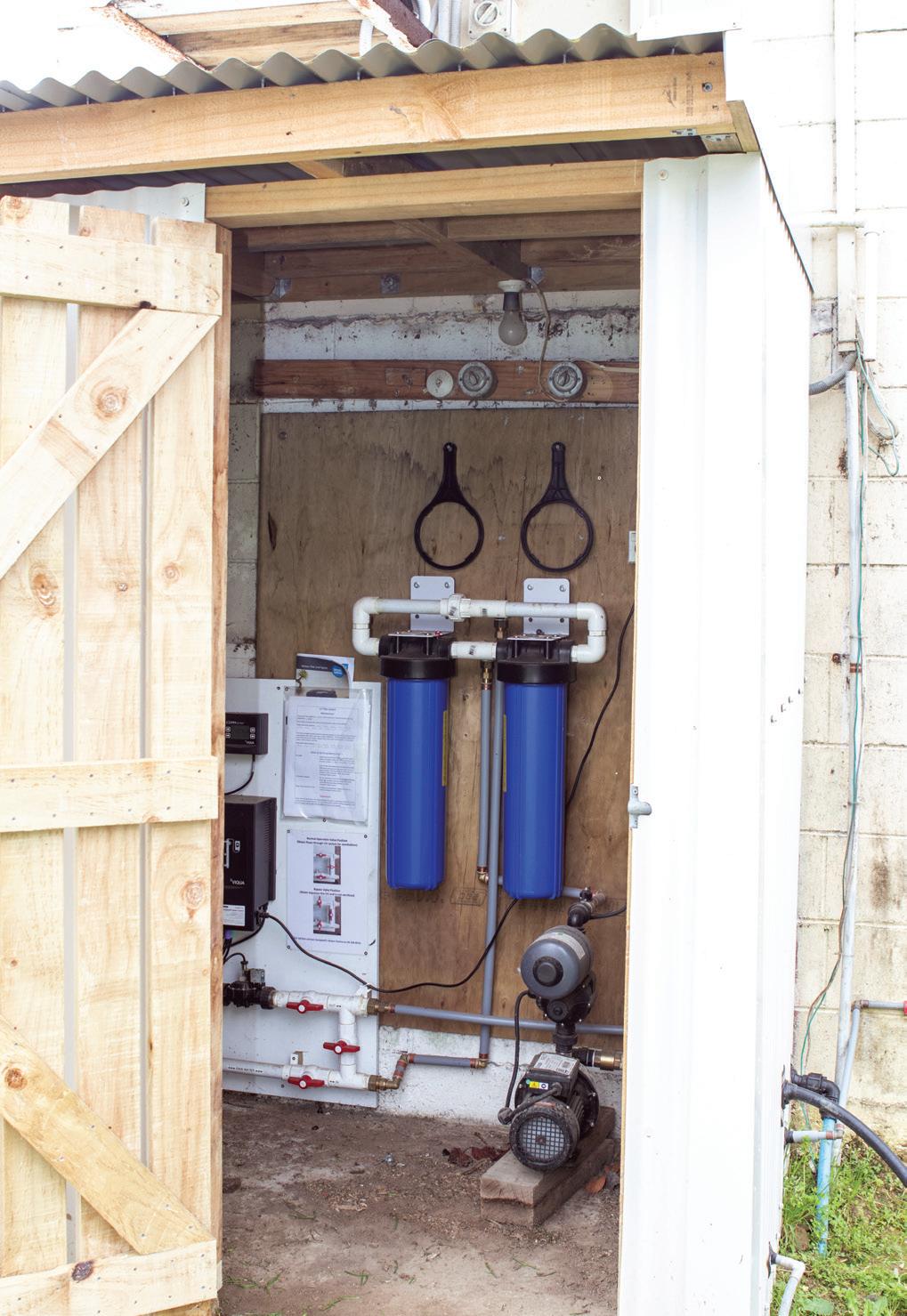
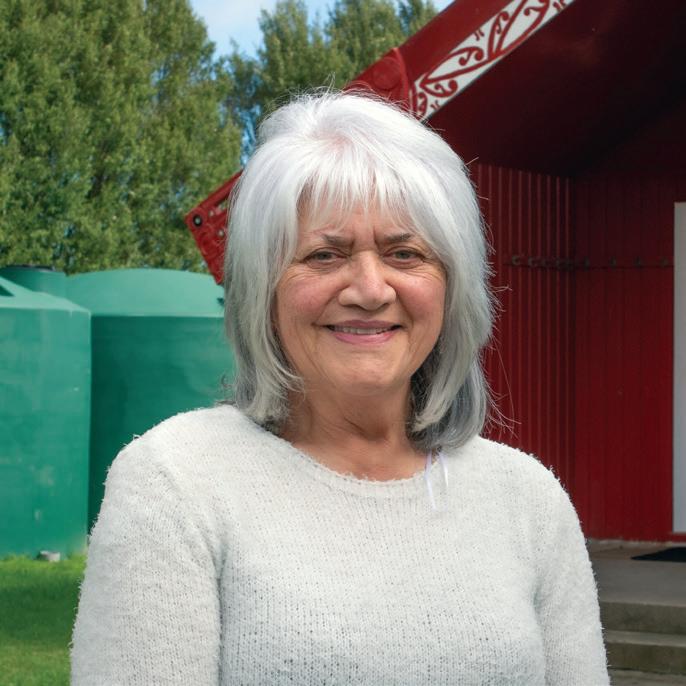
NOVEMBER/DECEMBER 2022 WATER NEW ZEALAND 59 0800 247 839 WWW.CIRTEX.CO.NZ WITH YOU EVERY STEP OF THE WAY! Supporting your stormwater storage projects from the initial design to completed installation
Main image: Ngati Wehi Wehi marae. Left: Ngati Wehi Wehi Marae chair Paddy Jacobs. Above: Horowhenua water marae pump Wehi Wehi.
How wastewater could help native reforestation
This project came out of the larger research mission of the biowaste team at ESR – to treat wastewater as a resource, rather than a waste product to be thrown out.
Dumping biowaste into waterways introduces lots of nutrients, which causes problems like algal blooms that pollute water and harm native ecosystems.
While nutrients in wastewater cause issues in aquatic ecosystems, previous research by ESR’s biowaste team has shown that native plants like mānuka can reduce the leaching of nutrients into water and can also accelerate die-off of pathogens in soil.
Using wastewater for irrigation of native plants could divert it from water bodies, prevent nutrient and pathogen contamination, and improve outcomes for vegetation restoration projects.
For this research, the team used two experimental sites planted with native vegetation. One of the experimental sites is in Banks Peninsula. After irrigating this site with treated municipal wastewater from the local wastewater treatment plant for three years, the research team found negligible effects on the soil chemistry.

There was also no increase in any elements that could pose a risk to humans or ecosystems. And not only was the wastewater a safe irrigation source, it also helped some species to grow taller!
As Alexandra explains, we already know that native plants can grow well in low fertility soils, but now we know they can thrive with wastewater too. The findings are significant because they show the potential to combine the restoration of native vegetation with the re-use of wastewater on land.
“It’s an opportunity to reduce the discharge of wastewater into water bodies while at the same time increasing the areas that are reforested with native vegetation.” And if you have more native vegetation, you’re likely to have more native biodiversity.
However, results from a second experimental site in the Horowhenua District suggests that more research is needed before wastewater irrigation can be used routinely.
Native vegetation at this site was also irrigated with treated municipal wastewater from a local wastewater treatment plant for four years, but the wastewater was applied at a rate more than four times higher than the plot in Banks Peninsula. The research team found weed growth was higher and native plant survival was lower within irrigated plots, suggesting that wastewater irrigation might promote the growth of weeds that harm the survival of natives.
Within plots that had both wastewater irrigation and weed control, native plant survival was higher, and plants grew taller than their non-irrigated counterparts. These results suggest that weed management, especially early on, might be important
when using wastewater irrigation.
To further improve the use of wastewater for irrigation, Alexandra and the biowaste team are running experiments that involve different plant species, different soils, and different amounts of irrigation. This research will help determine which conditions make wastewater irrigation most effective for native plantings.
Alexandra undertook her research project in partnership with the University of Canterbury and Lowe Environmental Impact, with funding by the Christchurch City Council, Horowhenua District Council, the Ministry for the Environment Freshwater Improvement Fund and ESR’s Strategic Science Investment Funding from the Ministry of Business, Innovation and Employment.
To find out more, read Alexandra’s paper about this research project on the Water New Zealand website.
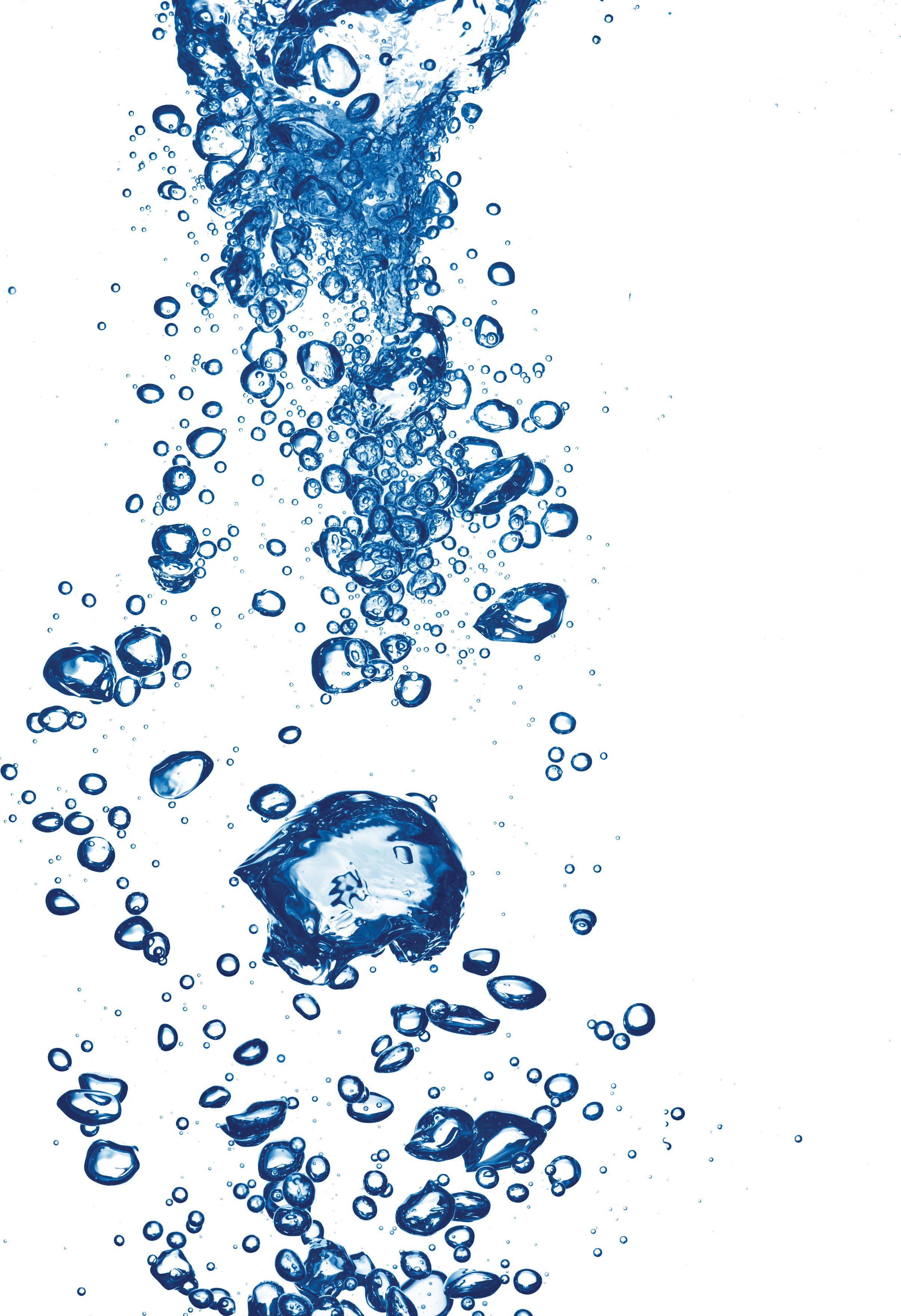
Can wastewater be used for the irrigation of native plants?
That’s the question that ESR biowaste scientist Dr Alexandra Meister investigated in a research project. By Molly Magid of ESR.
The experimental native vegetation site in Banks Peninsula.









'Exceptional'August atmospheric river sets record
NIWA meteorologists say the atmospheric river, which was responsible for widespread devastation in both the North and South Islands in August, was a record-breaker.

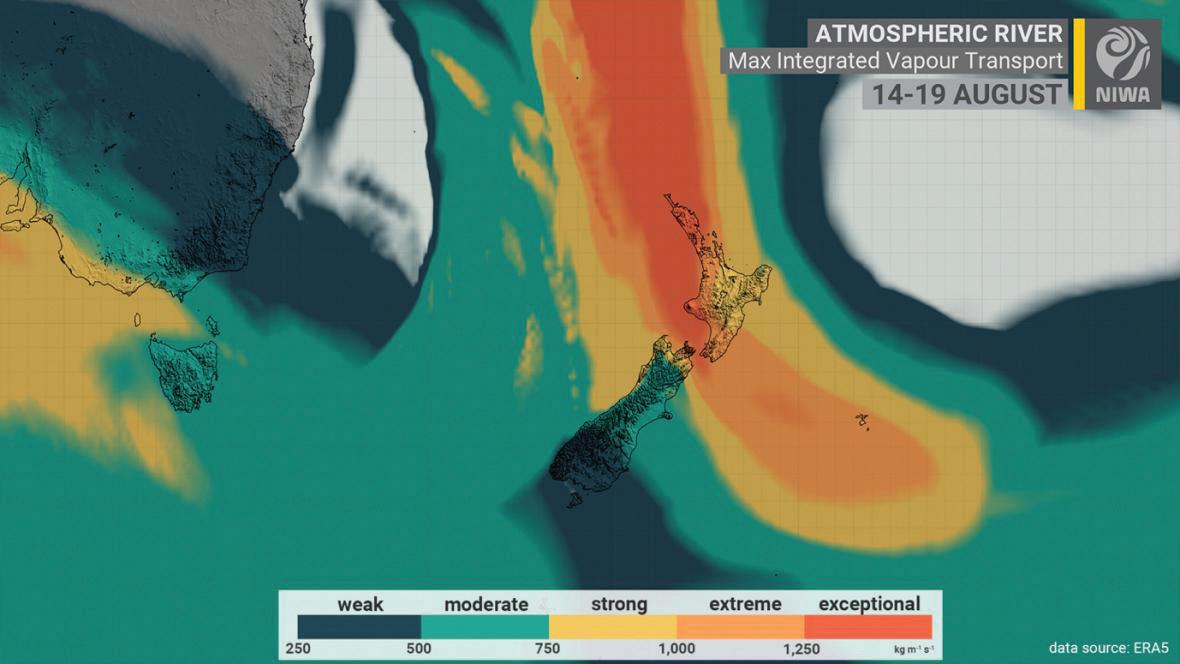
The AR (Atmospheric River), a huge plume of moisture from the tropics, was New Zealand’s strongest ever for August since records began in 1959.
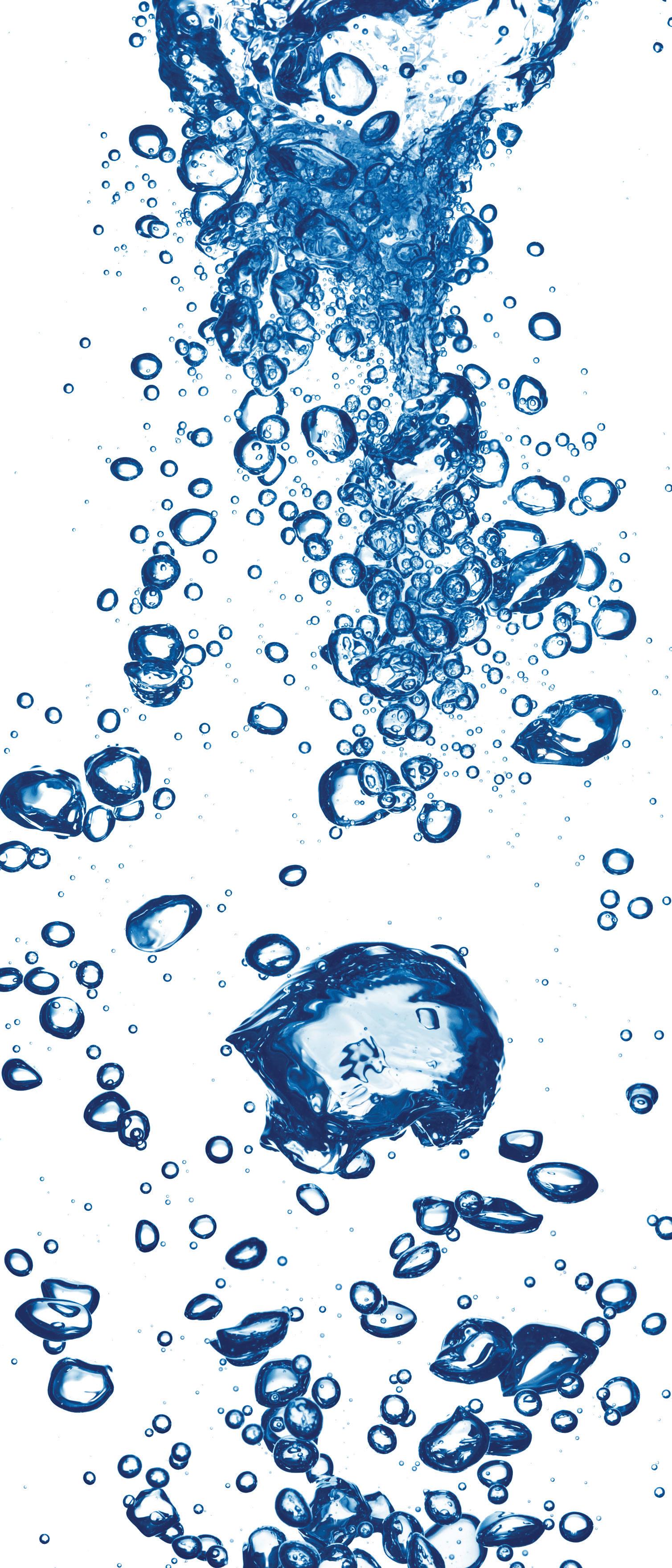
NIWA meteorologist Ben Noll says it was also the second strongest for winter as a whole (June-August), pipped to the post only by an AR in July 1998. The AR which caused widespread flooding and devastating slips in August was responsible for a 1 in 120-year rainfall event in Nelson and one third of Tākaka’s annual rainfall in three days.
ARs are measured by integrated water vapour transport (IVT) values, which have been ranked around New Zealand for every hour since 1959.
IVT indicates an AR’s magnitude by calculating the amount and flow of moisture in the atmosphere, both of which are crucial to the occurrence of heavy rainfall. IVT values above 1250 kg m -1 s -1 are considered “exceptional”.
Ben says that this AR greatly exceeded that threshold, with the top value reaching 1749 kg m-1 s-1.
“ARs are a normal feature of New Zealand’s climate. However, this analysis demonstrates that the flood-inducing AR was extremely unusual for the time of year, being both long-lasting and very moisture-laden. Atmospheric moisture was the highest it’s ever been in August’s climate data, going back to 1959,” Ben says.

The New Zealand region usually sees its moistest AR events in summer, not winter.
In fact, August is usually the annual minimum for regional water vapour content.
“It was a perfect storm of climate drivers that contributed to this AR, including La Niña, a negative Indian Ocean Dipole, warmer than average sea water in the Southwest Pacific, and a subsequent synoptic (weather) set up that fostered a long-lived atmospheric river, including a blocking high pressure system to our east.”
Climate scientist Peter Gibson says that climate change could have a big influence on the future strength of ARs and their resulting weather impacts.
“A warmer atmosphere can hold more water vapour, so it’s likely that we will see more intense ARs as climate change continues. The challenging part will be figuring out precisely which locations will see the biggest increases.
“Other elements that impact their occurrence and strength include blocking areas of high pressure to the east of the country, which can lock an AR in place for several days,” Peter says.
“Extreme precipitation from ARs is already being enhanced by climate change. Research is ongoing at NIWA to understand how these conditions may change in the future.”
WATER NEW ZEALAND WEATHER
Top: The Maitai River, central Nelson, on August 17, 2022. Above: The atmospheric river that impacted New Zealand during 16-19 August 2022. Values are maximum integrated water vapour (IVT) over that timeframe, with scale adapted from Ralph, F.M. et al. (2019).
Bridge to Bridge Project ends with staff planting day
A three-year community-led project to replant the riparian margins of the Waitoa River between the Puketutu and Station Road bridges near Matamata has been completed.
Landowners on either side of the river between the two bridges have upgraded eight kilometres of fencing and, with funding and support from Waikato Regional Council (WRC) and Fonterra’s Sustainable Catchments programme, planted about 17,000 native plants and trees.
WRC Hauraki catchment team leader Aniwa Tawa says the project wrapped up with a final planting day involving staff from both Fonterra and WRC infill planting a further 200 trees and doing some weeding to release young plants put in the ground in previous years.
“The effort that has been put into this project by everyone has just been so awesome,” says Aniwa. “All that is required to be done now is some ongoing maintenance by the landowners to keep the young plants free of weeds so they can flourish and grow to be big and strong.”
The Bridge to Bridge project (B2B) was started in 2019 after some landowners approached the council and Fonterra for support to plant the riparian margin of the Waitoa River between the two bridges.
“We got all the landowners involved, and each had an Environment Programme Agreement with WRC that identified areas for restoration to help improve the mauri of the Waitoa River.
“They really wanted to help improve the water quality of the river and restore the margins to create habitat for native birds and insects and even bats.”
The project included the removal of pest plants, relocating fencing from the river’s edge to create bigger riparian margins and the planting of native plants and trees.
“The planting has included taonga species such as kahikatea and totara which dominated the area in years past, so returning these to the land was a really important part of the project.”
Landowner John van Hueven says he’s thrilled with the work that has been done on his farm.
“It’s fantastic seeing the previous year’s plantings coming up now; I can’t wait to see what it will look like in 10 or so years.”
WRC catchment management officer Amy Tsao says all the landowners were keen to jump on board with the project and were a pleasure to work with.
“It’s so rewarding to see the progress that’s been made.”
Fonterra’s local government and stakeholder affairs manager Philippa Fourie says, “it’s always a good day when staff get to go out in the field and help landowners with planting”.
The Fonterra staff were part of the Matamata-Piako Committee, which oversees Fonterra’s support to local community projects under its new Hapori programme.
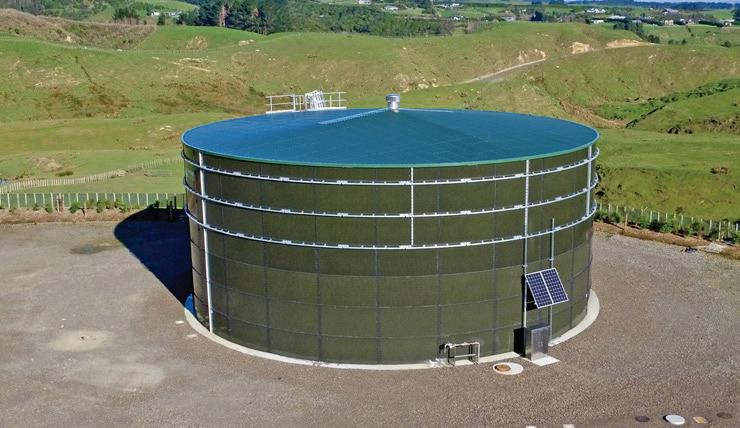
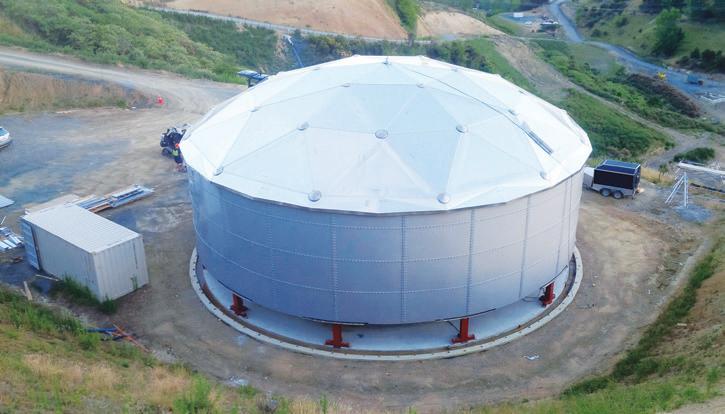


“We’re proud of the commitment shown by the farmers involved in this project.
“Our Sustainable Catchments initiative is all about achieving sustainable water catchments where we operate, and we know that by working with others we can achieve more when it comes to protecting and regenerating waterways and biodiversity.”
Article provided by Waikato District Council.

NOVEMBER/DECEMBER 2022 WATER NEW ZEALAND 63 RIPARIAN PLANTING WATER NEW ZEALAND
Built to poison?
The Christchurch City Council has been investigating the use of three commonly used materials for instream structures; copper-chrome-arsenate (CCA) treated timber, galvanised steel, and concrete, and their effects on plant and animal life within waterways. By Dr Belinda Margetts, principal waterways ecologist, Christchurch City Council.
Christchurch grew through the draining of wetlands during European settlement and, as a result, has more than 187 kilometres of waterways in its network within the city.
A number of temporary and permanent in-stream structures are used within these waterways, such as culverts, linings, and retaining walls. For example, 110 kilometres of the city’s waterways are lined with timber, concrete and/or rock, and there are over 800 known council culverts within Christchurch and Banks Peninsula.
Some of these structures may leach contaminants into waterbodies, such as arsenic from treated timber, affecting both water quality and the animals that live in the water.
Christchurch City Council has investigated the use of three commonly used materials within waterbodies and their effects on aquatic biota: copper-chrome-arsenate (CCA) treated timber, galvanised steel, and concrete.
CCA is used to impregnate timber and other wood products to protect them from microbes and insects. CCA treated timber is used in waterway linings and retaining walls. Galvanised steel is coated in zinc to prevent corrosion and biofouling.
Galvanised steel is used for things like angles, plates, nails, bolts, grates, gates, manhole fittings (e.g., ladders and orifice plates), and pump station structures. It is often used over stainless steel, as it is more cost effective.
Concrete is used for bridges, culverts, and waterway linings. Calcium hydroxide can leach from concrete, causing water to become alkaline. The pH of water may also cause the leaching of zinc, nickel, and chromium from concrete.

Literature review
A review of the literature identified a number of studies on the effects of leaching from CCA treated wood (Table 1: Marshall & Margetts, 2020. See table below). There were few for galvanised steel and concrete.
CCA Treated Timber
The effects from CCA timber are reasonably understood. Leachate has been recorded in water and sediment, and has resulted in negative impacts on biota, such as algae, barnacles, mussels, oysters, snails, sea urchins, fiddler crabs, and fish. These include adverse effects on fertilisation, larval development, and DNA structure, causing in some cases mortality.
Trophic transfer of copper, chromium, and arsenic through the ecosystem has been recorded.
Leaching from in-stream structures
Leaching from CCA timber has caused lower species richness, diversity, and abundance.
The most harmful effects on biota appear to be due to copper. However, chromium (Cr(VI)) used in CCA treated timber is also highly genotoxic, meaning the chemical damages the genetic information of animals, causing a cell to mutate.
Out of the three structures investigated, CCA timber poses the greatest risk to aquatic biota. However, there are often limited alternatives to timber and if timber is properly treated, this risk is greatly reduced.
South Africa, Italy, South America, and Turkey
Sweden, Australia, Turkey
Literature investigating the effects of leaching in waterbodies from Copper-Chrome-Arsenate (CCA) treated wood, galvanised steel, and concrete.
64 www.waternz.org.nz WATER NEW ZEALAND STREAM HEALTH
CCA Timber Galvanised
Concrete No. studies 34 4 4 No. literature reviews 4 0 0 Study types Laboratory and field
Study locations
Steel
Laboratory and field Laboratory
Mostly USA, but also Germany, Sweden, Canada, Ireland, UK, Hong Kong, and India
Leaching from Copper-Chrome-Arsenate (CCA) timber has caused lower species richness, diversity, and abundance.
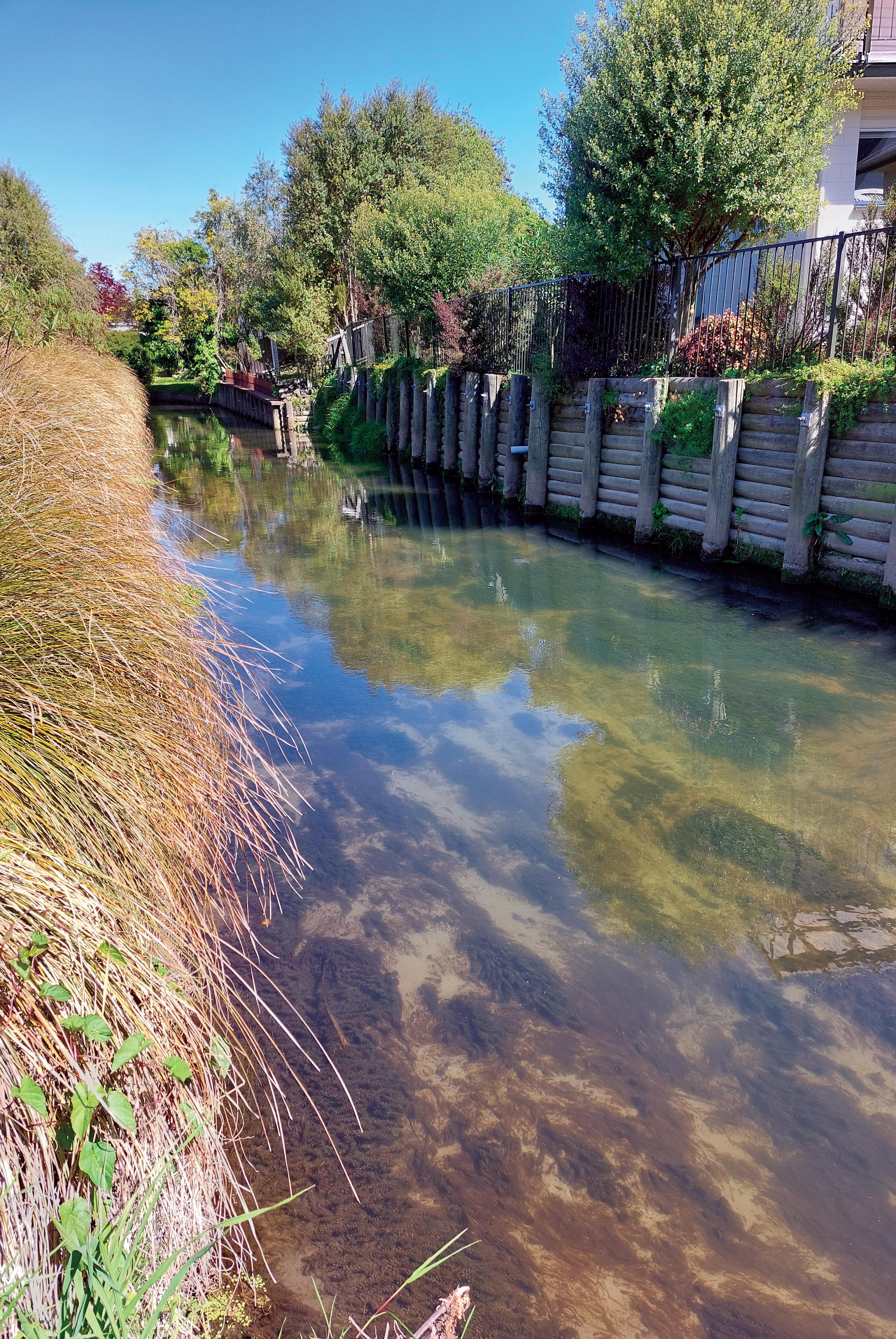
NOVEMBER/DECEMBER 2022
NEW ZEALAND 65
WATER
In Christchurch, 110 kilometres of the city’s waterways are lined with timber, concrete and/or rock.


66 www.waternz.org.nz WATER NEW ZEALAND STREAM HEALTH
Leaching rates are typically impacted by pH, temperature, salinity, surface area-to-volume ratio, fixation method, quality of wood, time since fixation, flushing of water in the environment, and estuarine and coastal waters.
To reduce leaching effects, the review recommended that timber:
• Is stored by the supplier until fixation is achieved.
• Fixation is determined using New Zealand standards and guidelines, using a Merck test or equivalent (Standards New Zealand, 2003; New Zealand Timber Preservation Council Incorporated, 2005; Standards Australia and Standards New Zealand, 2008).
• Is pressure treated – H5 for freshwater, and H6 for coastal and estuarine waters.
• Is pre-soaked for several months, especially where it will be used in coastal/estuarine waterways or poorly flushed waterways, or where a large volume of timber is required.
• Suppliers provide details on how the timber has been treated and stored, etc., to determine environmental risk.
Galvanised steel
Galvanised steel is durable in most soft waters, which is the case for Christchurch, and therefore this product provides low environmental risk. However, durability (and therefore potential zinc leaching) needs to be considered in very soft, low conductivity waters, where water hardness cannot form a protective scale over the metal.

Treated timber can also corrode galvanised steel and in these cases, pre-soaked H5 and H6 treated timber should be used.

Metrinet
Galvanised steel should not be used when sulphur reducing bacteria (found in anoxic, sulphate rich sediment) is present, as they can cause corrosion of the steel. In these cases, alternative products, such as stainless steel, may be more appropriate.
Concrete
The risk factors that increase leaching from concrete include low water velocities of the surrounding environment, the aggressiveness of the water (soft water, or water containing corrosive substances, such as carbonic acid), marine waters (as they typically have more carbonic acid than freshwater), and porous concrete.
The widespread coverage of concrete and ageing cement infrastructure can contribute to river alkalinisation.
There are often limited alternatives to using concrete and therefore to reduce leaching effects, the review recommended that:
• Prefabricated structures are soaked for at least 24 hours in isolation from the waterbody (using dewatering for in-situ structures with soakage water pumped out and removed), especially in waterways with low velocity; the exception being concrete pipes, as they are typically machine made, producing dense, high strength concrete with low permeability.
• Suppliers provide details on how the concrete was produced and stored, to determine environmental risk.
• Heavily cracked and damaged concrete currently within waterbodies is replaced.
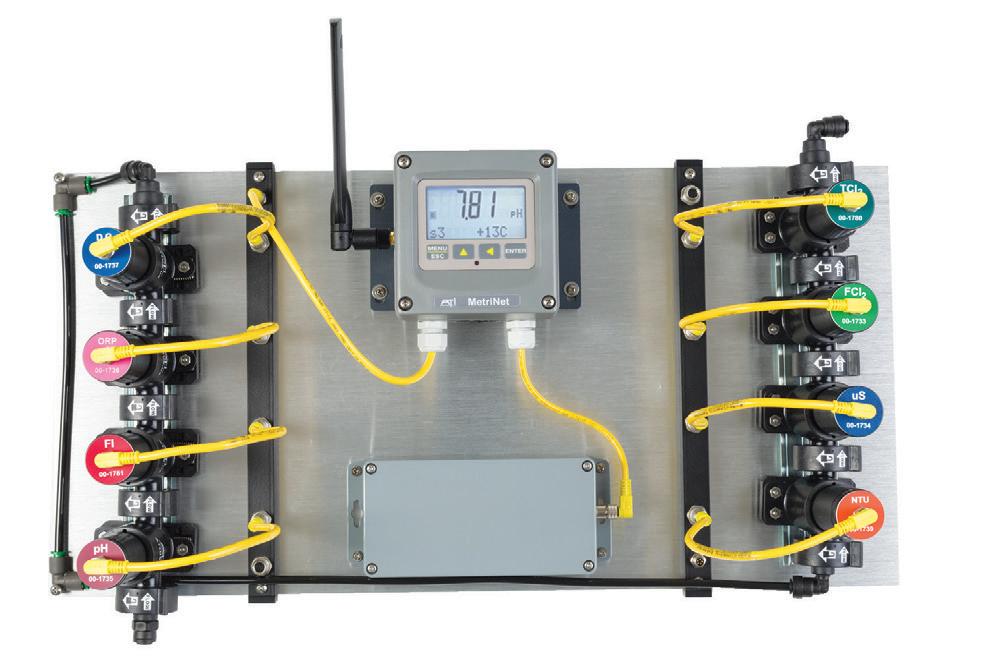
Smart Sensors
NOVEMBER/DECEMBER 2022 WATER NEW ZEALAND 67 Telephone: +64 (09) 579 2633 Email: engineer@applied-inst.co.nz www.applied-inst.co.nz
For more information please contact... ANALYTICAL TECHNOLOGY, INC. Multi-Parameter Water Monitoring & Data Collection for Remote Sites Controller • Monitor up to 8 different parameters via smart sensors. • Connect to SCADA via cellular modem, Wi-Fi or wired Modbus, Ethernet I/P or Profibus • Stores over 300,000 values on Micro SD ram.
from
• 15 different parameters to select from including Chlorine, pH, Turbidity, Water Pressure, Conductivity • Calibration data stored internally so calibration can be done anywhere.
Industry survey


A survey was undertaken of council contractors to determine the awareness of the potential adverse effects from leaching on aquatic biota, what methods are used by industry to prevent leaching, and whether the recommendations from the literature review were achievable (White et al., 2021).

The industry understands the potential environmental effects of leaching. Several of the recommendations in the literature review are already being carried out. However, timber fixation should be specifically incorporated into New Zealand standards and further awareness of proper timber fixation should be raised.


The use of concrete follows strict industry standard practice, which limits leaching.
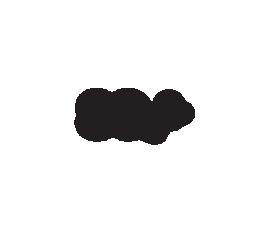
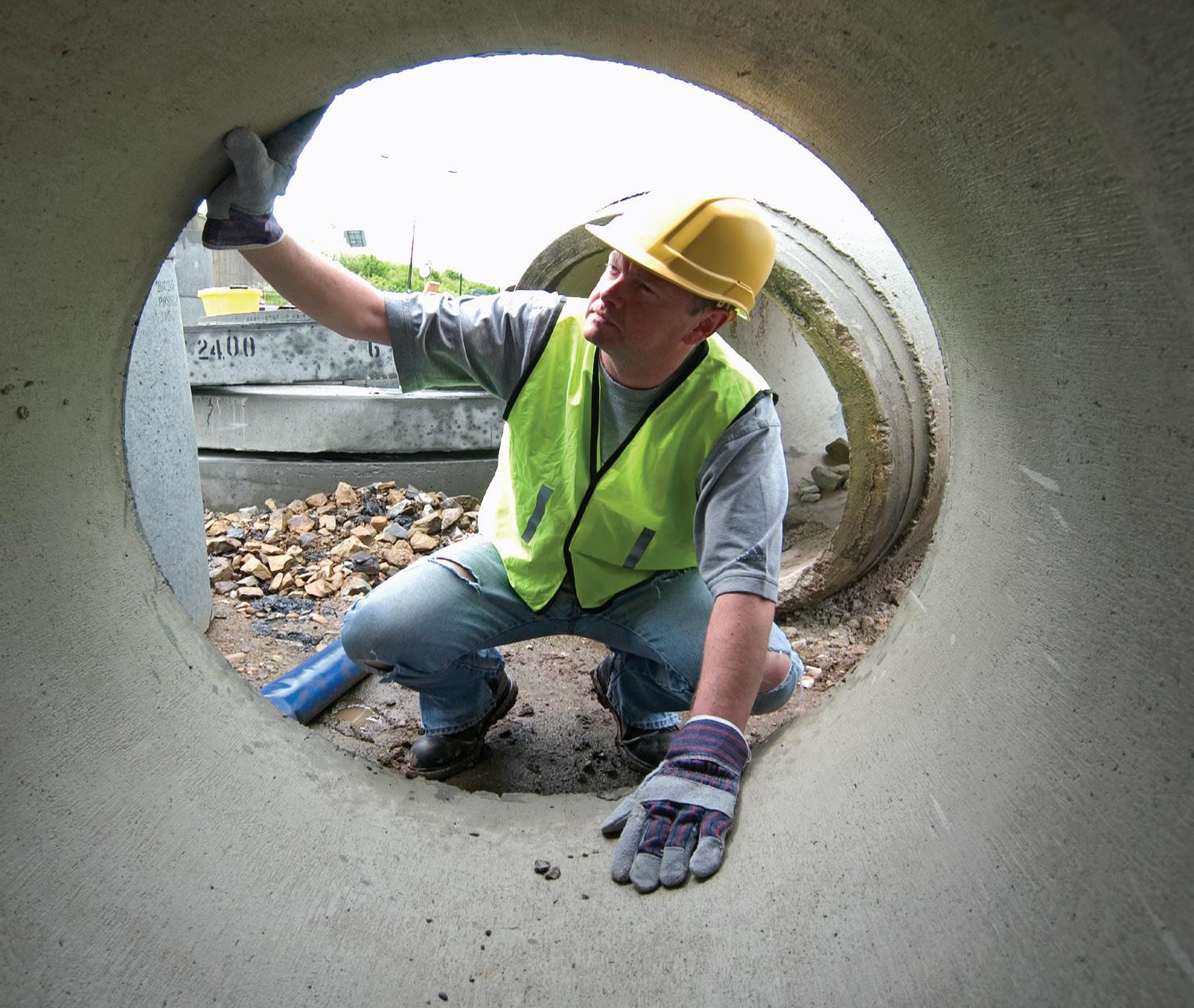







The soaking of timber and concrete would be the most difficult recommendation from the literature review to achieve. Based on the procedures already in place to reduce leaching, more information is required as to whether soaking is required.
The survey also highlighted the importance of considering the entire life-cycle of each material. For example, although poorly treated timber in this investigation posed the greatest risk for leaching, galvanised steel and concrete emit larger quantities of CO2 during manufacturing. In contrast, timber

manufacturing can have a carbon negative output during its lifecycle.

Where to from here?
The council will include the recommendations to reduce leaching in its Construction Specification Standard. Regional and national policy around the use of instream structures should also be implemented to reduce impacts on waterbody health. This is particularly important in areas with sensitive or threatened species.
New Zealand standards for the production of these materials should also include measures to prevent the leaching of contaminants.
Further research would be beneficial around whether other materials used in waterbodies leach contaminants, the specific effects on local aquatic biota from leaching, catchment geochemistry changes due to urbanisation, and how to further reduce the effects of leaching. The latter should consider the requirements and methods around soaking of timber and concrete.
Timber type should also be investigated – fast growing wood may be of lower quality and may leach more readily compared to wood used overseas and our use of faster growing pine may result in higher leaching rates in our waterbodies.
68 www.waternz.org.nz WATER NEW ZEALAND STREAM HEALTH C500 Antimicrobial Crystalline Technology For maximum protection of concrete in severe sewage conditions H2S H2S H2S H2S H2S H2S H2S T E WATER ANAEROBIC Moisture CONDITIONS C500 TREATED CONCRETE 2. HYDROGEN SULPHIDE PROTECTION 1. KILLS MICROBES 6. SULPHATE RESISTANCE 3. PREVENTS INFILTRATION & EXFILTRATION 5. ACID RESISTANCE Ideal for pre-cast & cast-in-place concrete • Added to the concrete at �me of batching • No need for liners and coa�ngs • Saves �me in produc�on and installa�on • Extends the service life of concrete in wastewater structures P: 07 575 5410 E: info@demden.co.nz demden.co.nz
SRP-EXP System is the perfect
Rehabilitation Solution for circular sewer and storm water gravity mains from DN150 to DN1200 pipes.
The SRP-EXP System is a “close fitting”, structural spiral ribbed PVC trenchless pipe lining system.
Aussie Spiral
The special winding machine is positioned into an access chamber or pit and then helically winds the SRP-EXP ribbed strip to produce a pipe within the existing pipeline.
Aussie’s SRP-EXP system is first installed at a smaller diameter and then expanded to be a close fit against the internal surface of the existing pipe.

It is possible to install SRP-EXP under live flow conditions.
The SRP-EXP profile strip has a dual action lock.
Spiral Pipe Lock
During the initial wind-in process this functions to hold the spiral wound pipe tight at the initial smaller diameter.
Spiral Pipe Rehabilitation Expansion

When the far end of the installation length is reached the SRP-EXP Liner end is then torsionally restrained, with the
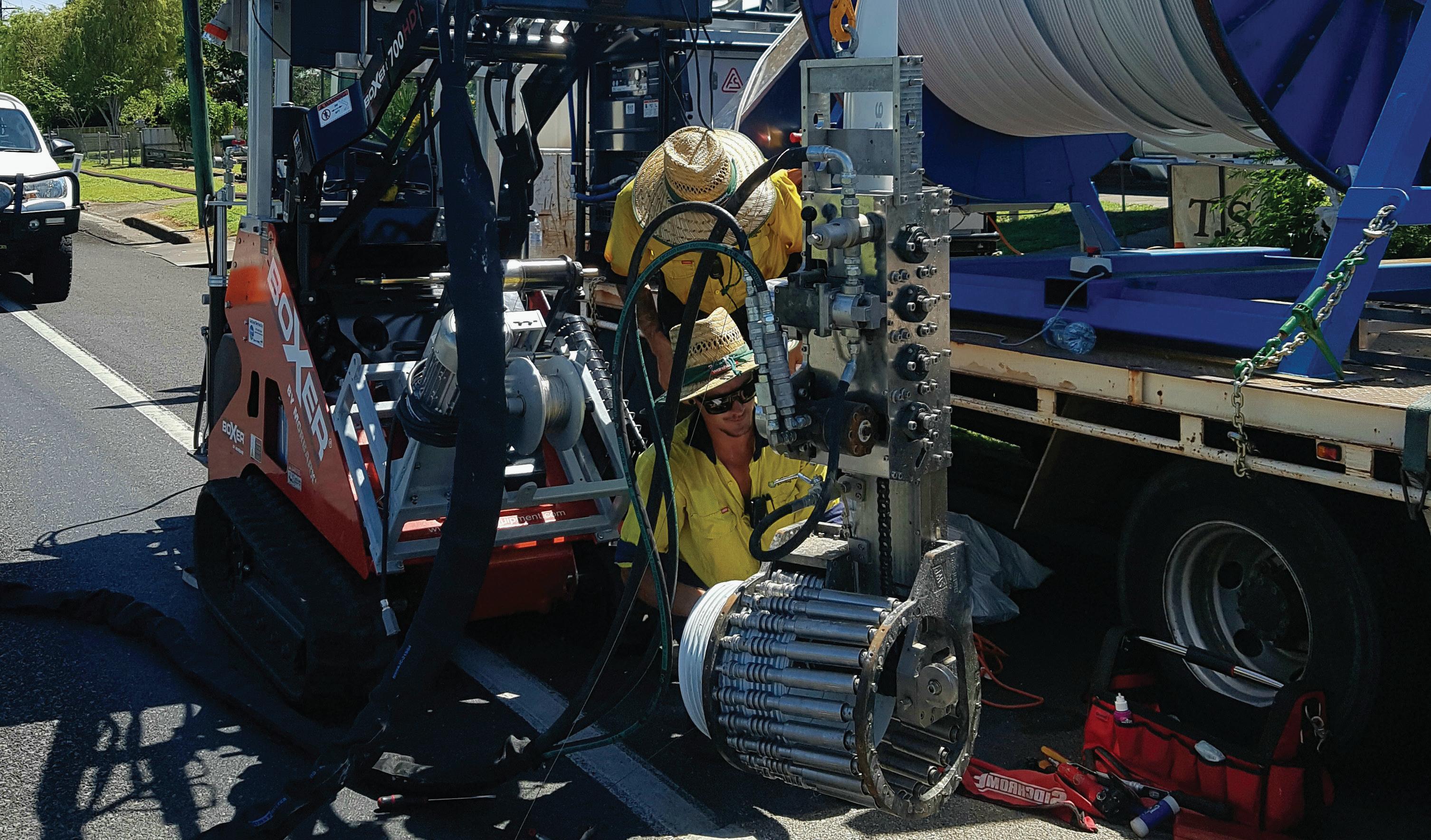
Aussie Trenchless Spiralling to the Top

lock area sequentially released such that the SRP-EXP pipe expands in a controlled manner until it is pressed hard against the inside wall of the existing pipe.
SRP- EXP Product Benefits
Flow Control is generally not required thus avoiding the inconvenience & risks of by-pass pumping.
Tight fitting lining solution
Small site footprint for the installation equipment
Minimal product material wastage which can be recycled
Ambient temperature hazard free Installation – (No Steam or Hot Water)
Able to be installed under high infiltration conditions
Minimum 50 year design life
Suitable for circular non-pressure pipe diameters ranging from 150mm to 1200mm
SRP- EXP Product Detail
A Spiral Ribbed Pipe lining method whereby a liner pipe is formed in-situ by helically winding a PVC profile strip into a host pipe, usually from an existing access chamber.
Spiral
Pipe for Rehabilitation

The winding machine is initially set to a smaller diameter than the host pipe and as profile is continuously fed into the winding machine the lead end of the PVC Ribbed Pipe rotates as it is wound into the host pipe.
The SRP-EXP pipe will thus ride over displaced joints and negotiate slight bends and damaged areas.
Upon reaching the other end of the host pipe the SRP-EXP is made to expand in diameter until it is in close contact with the internal surface of the existing pipe. The result is a new PVC pipe within the existing damaged pipe without the need for excavation.
SRP- EXP linings are designed in accordance with existing industry standards such as ASTM F1741-08 (2016) to provide a stand-alone structural liner.
+61 418 691 989
6/58 Box Road, Taren Point NSW 2229 PO Box 2386 Taren Point NSW 2229 enquiries@aussietrenchless.com www.aussietrenchless.com
Advertorial
The SRP EXP Spiral Lining System is available to ALL pipe relining contractors not just a privileged few.
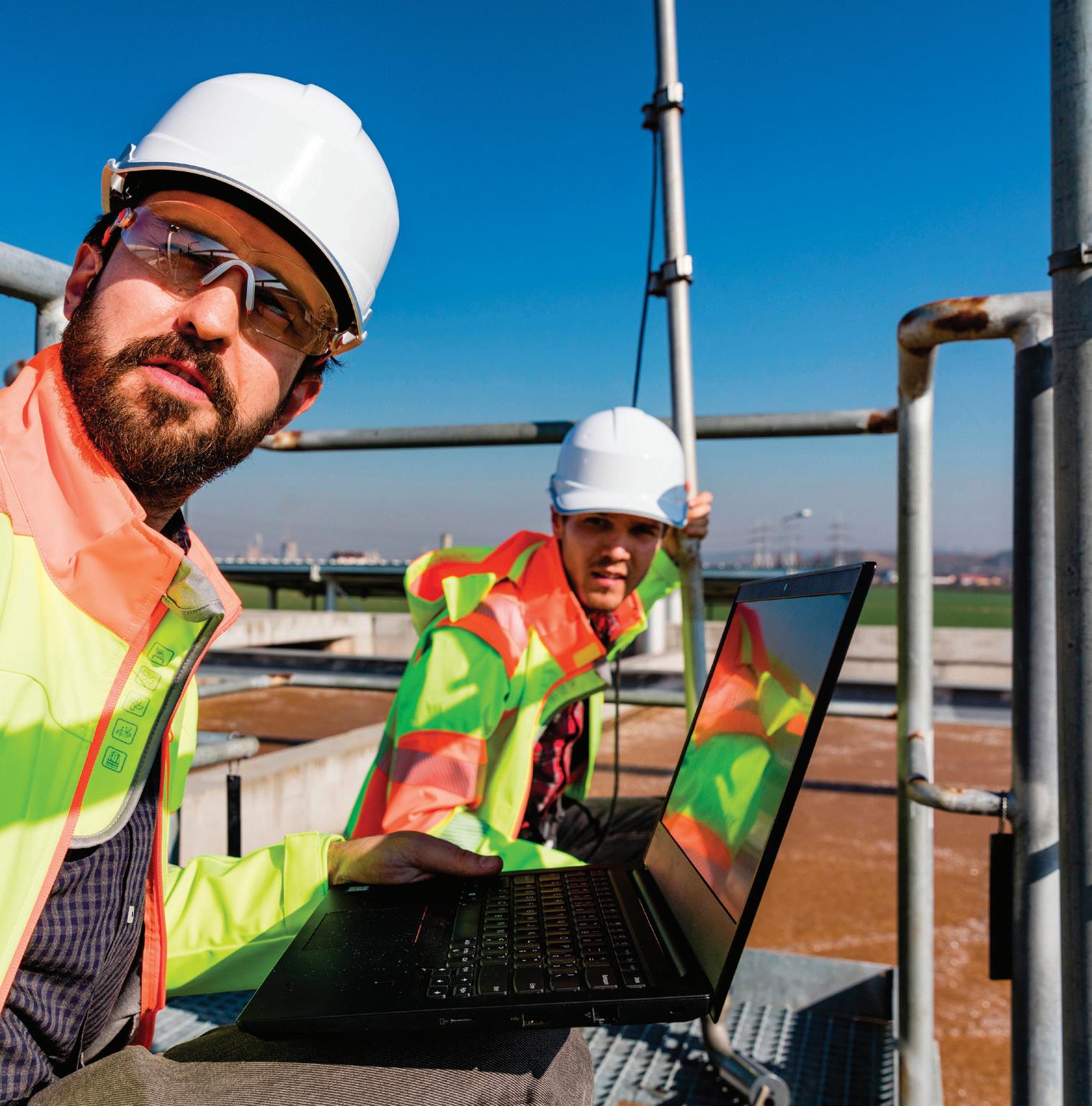







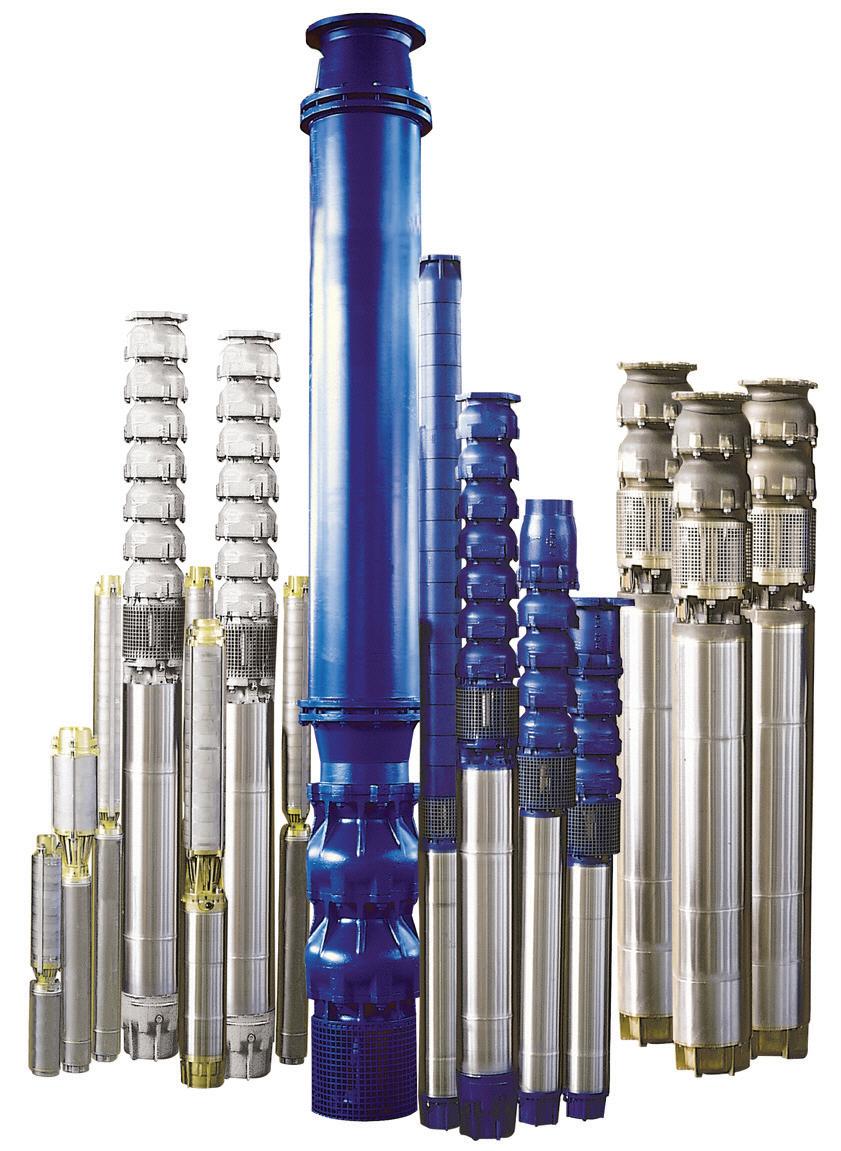
70 www.waternz.org.nz Industrial Water prefer to partner with us See why BEST-IN-CLASS SUBMERSIBLE PUMP AND MOTOR SOLUTIONS FROM THE RELIABILITY EXPERTS BORE HOLE | FLOOD | PRESSURE BOOSTERS | BOTTOM INTAKE New Zealand’s Exclusive Distributor for Pleuger Products PUMP SUPPLIES NZ LTD 18 Hammersmith Drive, Wigram, Christchurch | 0800 PLEUGER | www.pumpsupplies.co.nz ENGINEERED PUMPING SOLUTIONS – Sales | Service| Technical Support
Eleven thousand litres of water to make one litre of milk?
New questions about the freshwater impact of dairy farming
By freshwater ecologist and environmental scientist Dr Mike Joy, senior researcher, Institute for Governance and Policy Studies, Te Herenga Waka – Victoria University of Wellington
Water scarcity and water pollution are increasingly critical global issues. Water scarcity is driven not only by shortages of water, but also by rendering water unusable through pollution. New Zealand is no exception to these trends.
Demand for water has rapidly increased, and New Zealand now has the highest per capita take of water for agriculture among OECD countries. Regulatory failures have also led to overallocation of many ground and surface water resources.
Some water sources are also well on the way to being unusable. Over the past few decades, nutrient and sediment emissions into waterways have increased, driven by agricultural and horticultural intensification.
Much is made of the environmental benefits of New Zealand’s ‘grass-fed’ dairy systems. But a major downside of high-intensity outdoor farming systems is the nitrate leaching from animal waste and synthetic fertilisers that contaminates fresh water.
Milk’s grey water footprint
Our new paper focuses on nitrate pollution in Canterbury. We comprehensively quantify, for the first time, the nitrate ‘grey water’ footprint of milk production in the region.
A water footprint (WF) is a measure of the volume of fresh water used to produce a given mass or volume of product (in this case, milk).
It’s made up of both ‘consumptive’ and ‘degradative’ components. The consumption component is rainwater (green WF) and groundwater or surface water (blue WF) used in irrigation.
Grey water is the degradative part – the volume of water needed to dilute the pollutants produced to the extent the receiving water remains above water quality standards.
Most water footprint studies of food systems highlight the consumptive water component and often neglect the degradative component. However, we found Canterbury’s pasture-based systems mean grey water is the biggest component.
Standards and thresholds
Our analysis found the nitrate grey water footprint for Canterbury ranged from 433 to 11,110 litres of water per litre of milk, depending on the water standards applied and their nitrate thresholds.
The 11,110 litre figure is to meet the Australasian guideline level to protect aquatic ecosystems, and the 433 litre figure is to meet current drinking water limits.
(Drinking water having lower limits may seem counter-

intuitive, but the limit is based on 70-year-old research that has been superseded without legislation catching up.)
The larger footprint is higher than many estimates for global milk production. It reveals that footprints are very dependent on the inputs (such as feed and fertiliser) included in analyses and water quality standards.
A previous dairy water footprint study in Canterbury gave a grey water footprint of about 400 litres of water to make a litre of milk. However, it used the New Zealand drinking water standard for nitrate-nitrogen (nitrogen present in the form of nitrate ion) of 11.3 milligrams per litre (mg/l).
This vastly underestimates the problem. The Water Footprint Assessment Manual, which sets a global standard, stipulates the concentration of pollutants should meet ‘prevailing’ freshwater quality standards.
In New Zealand, the National Policy Statement for Freshwater Management sets a bottom line for nitrate-nitrogen of 2.4mg/l, much lower than the level for drinking water.
Our analysis – based on prevailing freshwater quality standards – shows the production of one litre of milk in Canterbury requires about 11,000 litres of water to meet the ecosystem health standards.
12-fold reduction needed
The large footprint for milk in Canterbury indicates just how far the capacity of the environment has been overshot. To maintain that level of production and have healthy water would require either 12 times more rainfall in the region or a 12-fold reduction in cows.
Dairy farming at current levels of intensity is clearly unsustainable. We know 85 percent of waterways in pasture catchments, which make up half the country’s waterways (measured by length), exceed nitrate-nitrogen guideline values for healthy ecosystems.
Evidence is also emerging of the direct human health effects (colon cancer and birth defects) of nitrate in drinking water. Extensive dairy farming in Canterbury is already leading to significant pollution of the region’s groundwater, much of which is used for drinking water.
Current practices also threaten the market perception of the sustainability of New Zealand’s dairy industry and its products. The ‘grass-fed’ marketing line overlooks the huge amounts of fossil-fuel-derived fertiliser used to make the extra grass that supports very high animal stock rates.
NOVEMBER/DECEMBER 2022 WATER NEW ZEALAND 71 FRESHWATER WATER NEW ZEALAND
Also overlooked is the palm kernel expeller (PKE) fed directly to cows. New Zealand is the biggest importer globally of this byproduct of palm oil production.

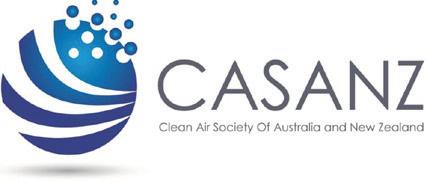
The synthetic fertiliser problem
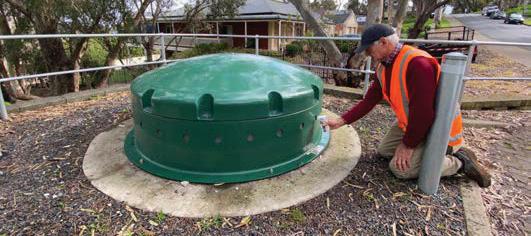
Growing use of synthetic nitrogen fertiliser has helped dramatically increase nitrate levels and the water pollution problems New Zealand faces.
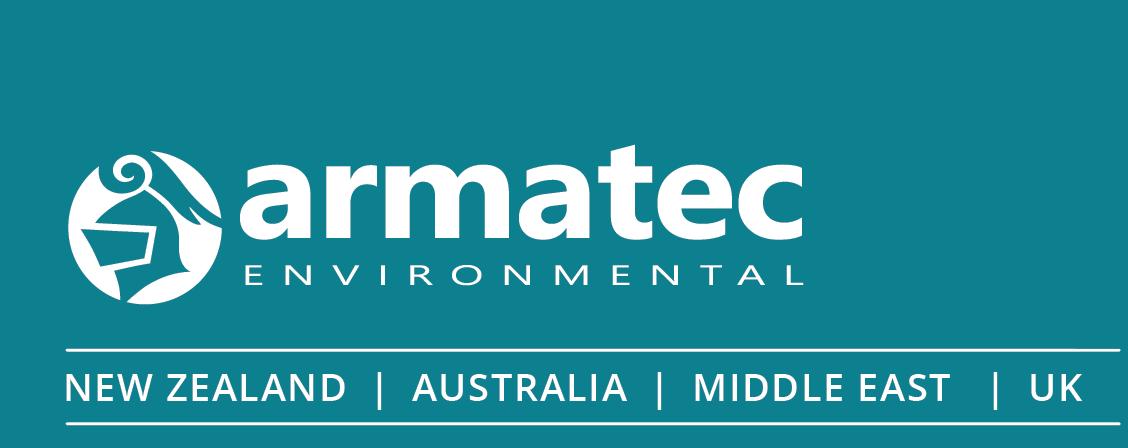
Until the 1990s, reactive nitrogen (a term used for a variety of nitrogen compounds that support growth) in pastures was predominantly obtained through nitrogen-fixing clover plants. But synthetic nitrogen fertiliser from fossil fuels displaced natural systems and drove intensification.

Globally, synthetic nitrogen production has now eclipsed all
that produced by natural systems. This disruption of the nitrogen cycle seriously threatens global human sustainability, not only through its impacts on the climate, but also through localised impacts on fresh water.
The European Science Foundation described the industrialscale production of synthetic nitrogen as “perhaps the greatest single experiment in global geo-engineering that humans have ever made”.
It is clear that water is becoming a defining political and economic issue. Changing attitudes to its quality and accessibility depends on accurate information – including how water is used to dilute agricultural waste.
This article is republished from The Conversation under a Creative Commons license. Read the original article here: bitly.ws/w66J

Award Winning Green Dome Odour Filters (GDOFs)
72 www.waternz.org.nz
We are celebrating receiving the Industry Excellence award at CASANZ 2022 GDOFs were developed by working with our customers to create new solutions for odour issues. Thank you to all who have been involved! | Innovative | Simple design | Known technology | Low capital cost | Low operational cost armatec.co.nz enquiries@armatec.co.nz
WATER NEW ZEALAND FRESHWATER


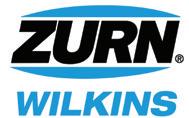

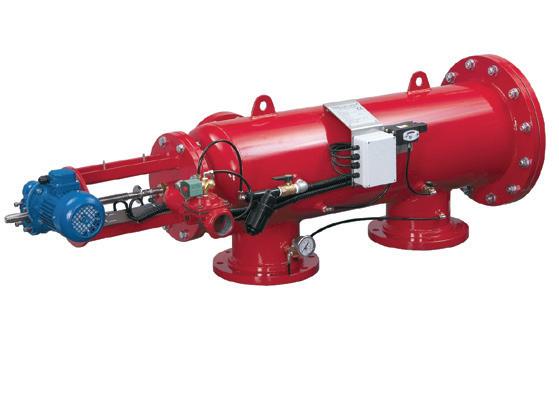

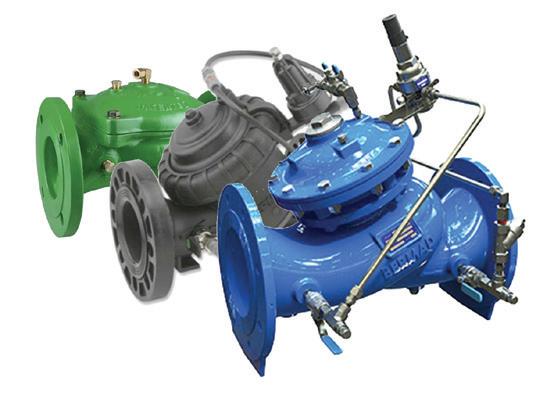
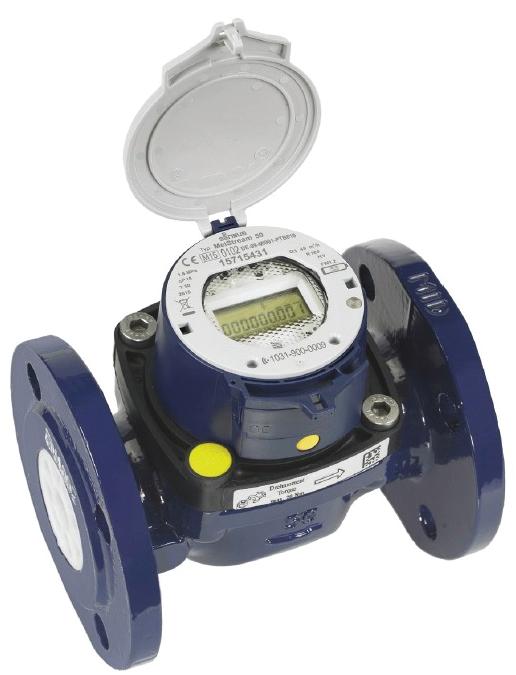
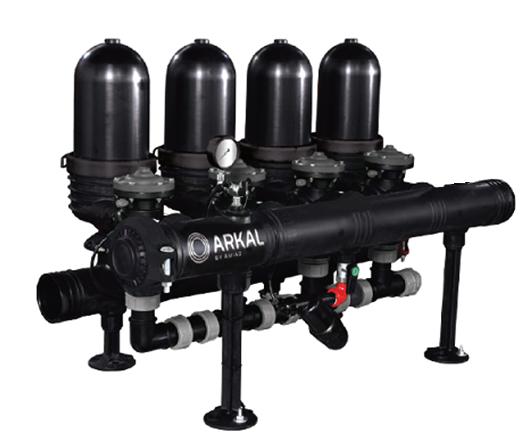

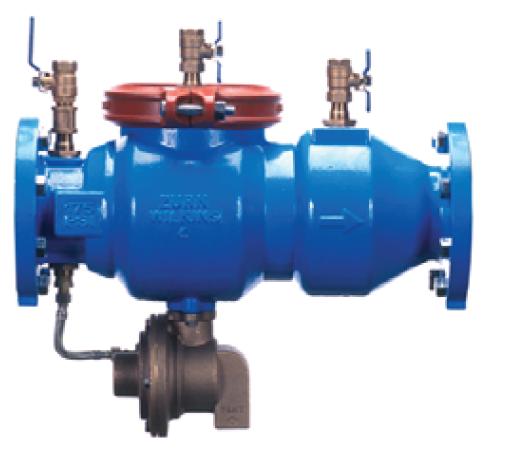
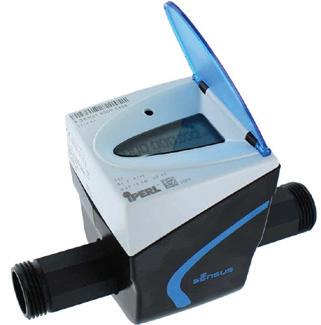

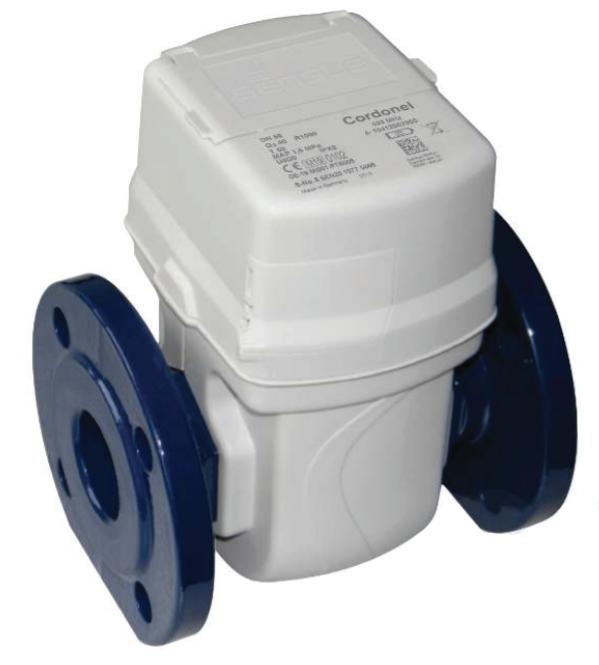



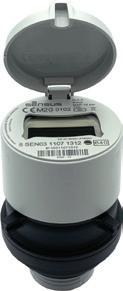
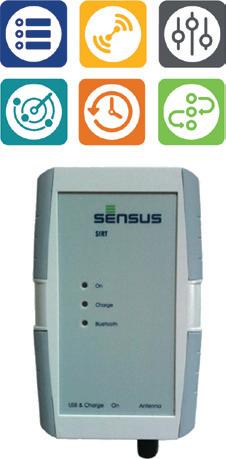
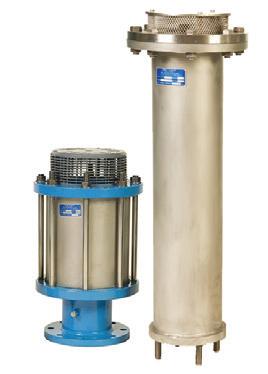































































































































METERING FILTRATION VALVES SMART AUTOMATIC CONTROL Est. 1938 Serving the New Zealand Water Industry since 1938. 640MC 700 SIGMA 375 RPZ RBX / RGX / RGX II SPINKLIN AMF iPerl Meistream RF Cordonel Diavaso Apps METERING FILTRATION VALVES SMART AUTOMATIC CONTROL Irrigation Waterworks Fire Protection Est. 1938 Serving the New Zealand Water Industry since 1938. 640MC RBX / RGX / RGX II AMF iPerl Meistream RF Cordonel Diavaso Apps METERING FILTRATION VALVES SMART AUTOMATIC CONTROL Irrigation Fire Protection Est. 1938 Serving the New Zealand Water Industry since 1938. 640MC 700 SIGMA TORRENT 375 RPZ RBX / RGX / RGX II SPINKLIN AMF iPerl Meistream RF Cordonel Diavaso Apps METERING FILTRATION VALVES SMART AUTOMATIC CONTROL Irrigation Waterworks Fire Protection Est. 1938 Serving the New Zealand Water Industry since 1938. www.deeco.co.nz 640MC 375 RPZ RBX / RGX / RGX II SPINKLIN AMF iPerl Meistream RF Cordonel Diavaso Apps METERING FILTRATION VALVES SMART AUTOMATIC CONTROL Irrigation Waterworks Fire Protection Est. 1938 Serving the New Zealand Water Industry since 1938. 640MC 700 SIGMA 375 RPZ RBX / RGX / RGX II SPINKLIN AMF iPerl Meistream RF Cordonel Diavaso Apps METERING FILTRATION VALVES SMART AUTOMATIC CONTROL Irrigation Waterworks Fire Protection Est. 1938 Serving the New Zealand Water Industry since 1938. 640MC 700 SIGMA 375 RPZ RBX / RGX / RGX II SPINKLIN AMF iPerl Meistream RF Cordonel Diavaso Apps METERING FILTRATION VALVES SMART AUTOMATIC CONTROL Irrigation Waterworks Fire Protection Est. 1938 Serving the New Zealand Water Industry since 1938. www.deeco.co.nz 640MC SAF 700 SIGMA TORRENT 375 RPZ RBX / RGX / RGX II SPINKLIN AMF iPerl Meistream RF Cordonel Diavaso Apps
Using native algae for nutrient pollution mitigation

Filamentous Algae Nutrient Scrubbers, or FANS, is a water management system used to treat agricultural drainage, animal effluent and human wastewater. The system is already in use in the US and NIWA’s Aquatic Pollution Mitigation Group in Hamilton is leading an MBIE Endeavour Fund research project to develop a FANS system for use in New Zealand.
NIWA Water Quality Scientist Dr Jason Park said on-farm trials of the FANS systems are underway in partnership with Tainui Group Holdings and the Paeahu Trust in Waikato.
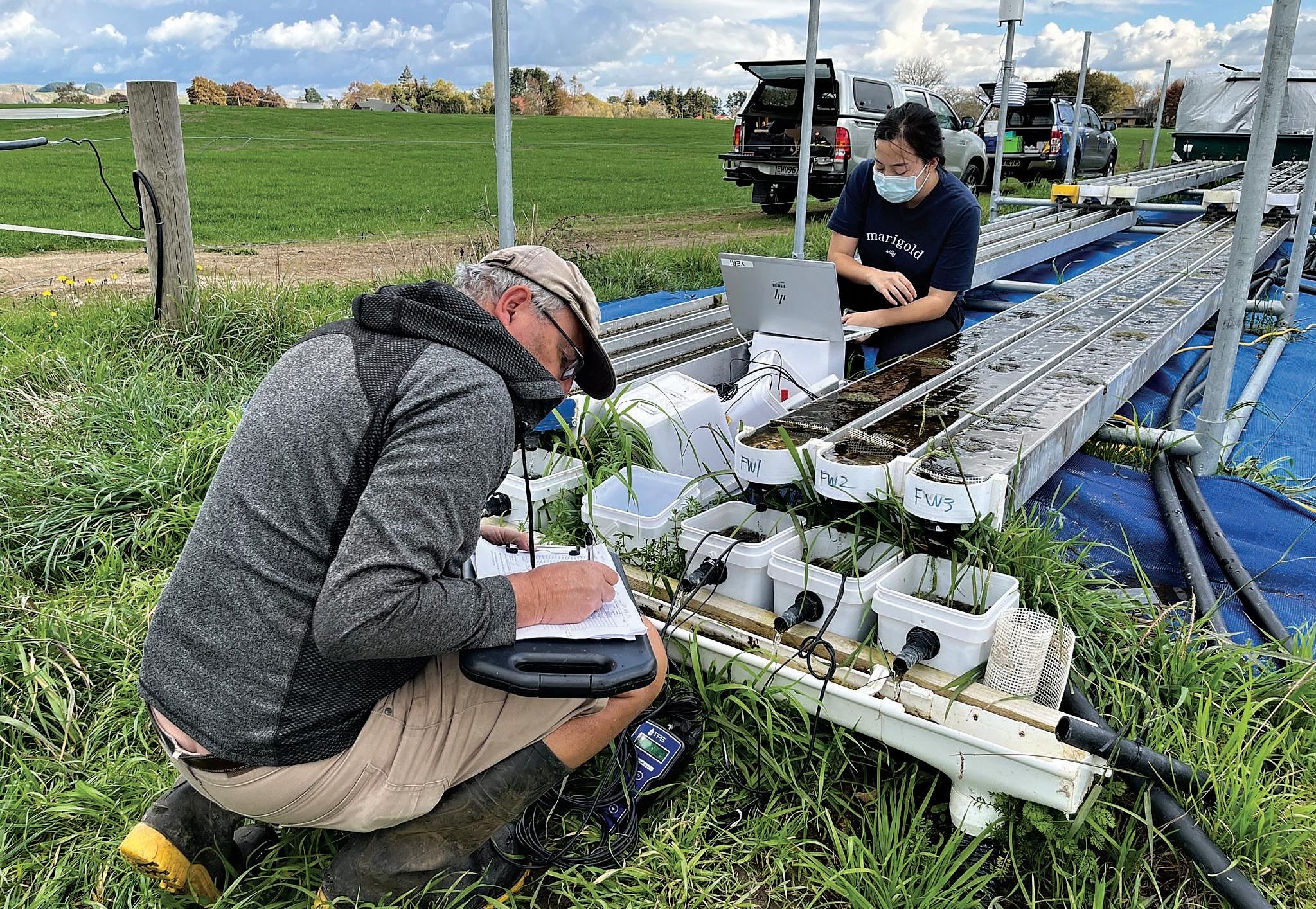

Jason says some pollution mitigation technology was constrained by episodic high drainage flows and nutrient loads which overwhelmed treatment capacity.
“Our aim is to co-develop FANS with Māori, industry, and government partners as a useful option to reduce agricultural losses and associated degradation of freshwater and estuaries.”
He says FANS could help meet the new environmental standards while protecting mahinga kai in accordance with Māori principles of kaitiakitanga. He said the partnership with
74 www.waternz.org.nz WATER NEW ZEALAND NUTRIENT REMOVAL
NIWA is working with Māori farming enterprises on a novel pollution mitigation technology to remove nutrients from agricultural runoff. By Lawrence Gullery of NIWA
Māori and incorporation of Māori knowledge is central to the research project.
“With our iwi partners we will explore the potential of Mātauranga Māori to guide more holistic management of agricultural drainage and enhancement of downstream mahinga kai.”
Mātauranga will be linked with international scientific advances to co-develop innovative approaches.
The project is being guided by a Māori Advisory Panel with involvement of NIWA’s Te Kūwaha, its Māori Environment Research team.
How it works
FANS systems use gently sloping floways, or channels, to convey drainage water through dense stands of attached filamentous algae.
The floways have three different water depths to determine the best depth for algal growth. They are seeded with native algae from streams near the trial sites, including Oedogonium, Spirogyra, Rhysoclonium, and Cladophora.
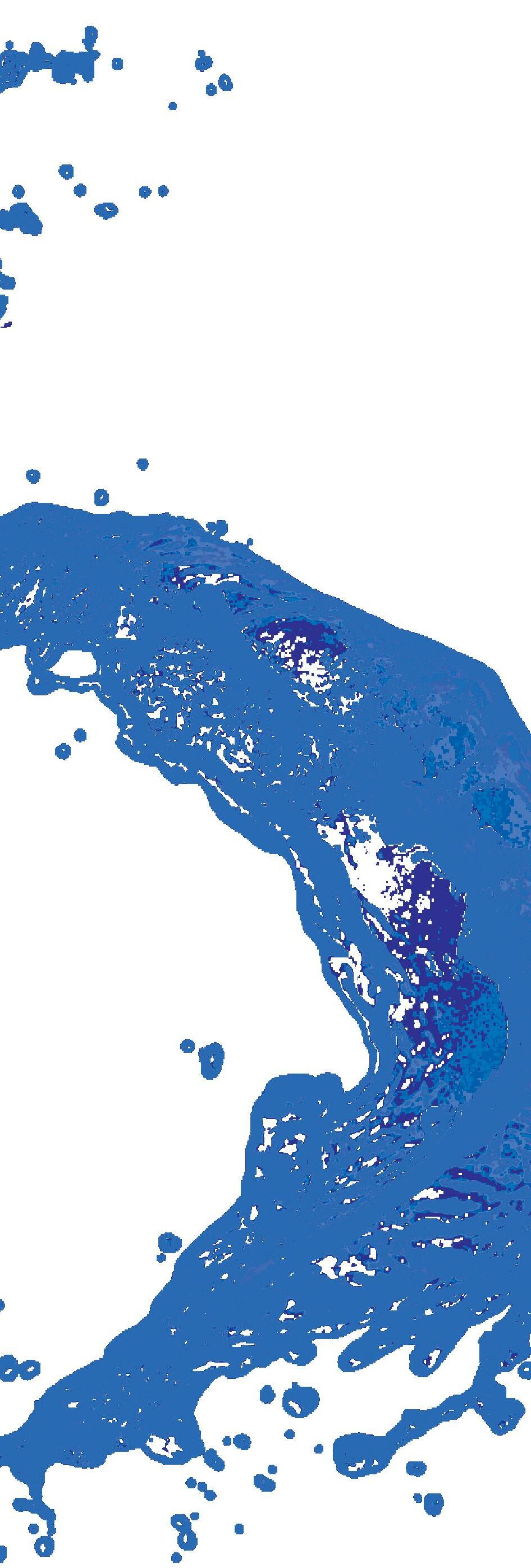
As the drainage water flows down the channel, the algae remove dissolved nitrogen and phosphorus from the water and convert them into algal biomass. As the algae grow a portion of the biomass must be harvested periodically.
The biomass could be used for natural fertilizer and animal fodder; these and other uses are being explored by the research team and iwi partners.
Water samples are taken at the inflow and outflow points of the floways every week to assess the nutrient concentrations before and after FANS treatment.
Trial sites
An outdoor FANS trial was set up at the NIWA Ruakura Algal Research Facility in Hamilton in 2021 and then field scale trials next to streams on two Waikato dairy farms commenced in 2022.
One is on a property owned by the Paeahu Trust near Morrinsville. It has two dairy units: Farm No.1 is 73 hectares and Farm No.2, where the trial is based, is 21 hectares. The herd is 420 cows, managed by a contract milker.
Trust chairwoman Endine Dixon-Harris says the trust’s kaitiaki role is paramount when it comes to environmental responsibility for the whenua and its tributaries.
The Piakoiti Stream runs through Farm No.2 and in the past the trust had discussed riparian planting and wetland options for the stream.

NIWA approached the trust about the FANS systems and after a site visit and presentation to explain more, the trust agreed to support the project.
“The project aligns with our kaitiakitanga and matauranga Māori values towards restoring the Mauri of our ancestral
Aquatic pollution scientist James Sukias and research assistant Yeri Shim. Weekly they take measurements such as dissolved oxygen, pH, conductivity and water temperature, pictured here at the FANS trial site at Tainui Road Dairy.
It’s time to think beyond single components. For top efficiency in residential and light industrial water supply and HVAC applications, you need the right combination of motors, variable speed drives and pumps — ensuring reliable performance, maximum savings and a rapid return on investment. You need the Lowara Smart Pump range.

Call us today to see how Lowara ’s simply smart pumps can assist with your water requirements.

NOVEMBER/DECEMBER 2022 WATER NEW ZEALAND 75 Thinking efficiency? Start with smart systems. IE5 IES2 IE5 IES2
Lowara’s Smart Pump range is a complete system delivering market-leading efficiency.
DELIVERING PUMPING SOLUTIONS ® since 1908
Ph:
4 BBENG 10/22
www.brownbros.co.nz
0508
waterway,” Endine says. “The trust looks forward to positive updates from NIWA in the near future.”
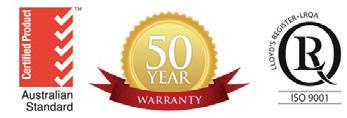



Tainui Group Holdings, on behalf of Waikato-Tainui, owns more than 4000 hectares of Waikato land supporting dairy, sheep, beef and forestry operations. A small stream flows through its 200-hectare, 620-cow Tainui Road Dairy where NIWA has established a FANS trial site.
Taiao manager Taroi Rawiri says sustainability of waterways and taonga species depended on new ideas to help reduce the negative impacts of nutrient runoff.
“As kaitiaki of these whenua, it is vital we demonstrate leadership in improving farming operations to promote positive steps towards restoring the health and well-being of our waterways.
“The vision of our iwi is that we may one day see again the pristine environmental state that was observed by second Maaori King, Kiingii Tawhiao, as he composed his lament for Waikato River and his homelands, noting their significance as a treasure for all generations.”

Tainui Road Dairy Farm manager Greg Boswell says the stream is crucial to the farm because it is the only waterway that runs all year.
“We know watercress grows in the stream and we have seen freshwater crayfish in it too. There’s even an eel that comes out to say gidday near the NIWA trial site, so it is worth the extra attention it’s getting from the research.”
Data collection


Jason says monitoring from March to July 2022 showed the FANS trials had produced 16.4 tonnes of algal biomass.
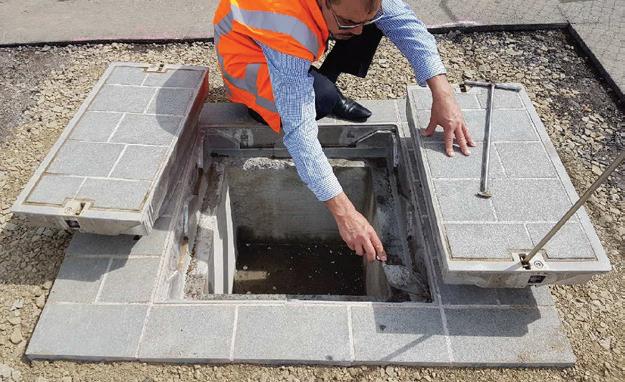
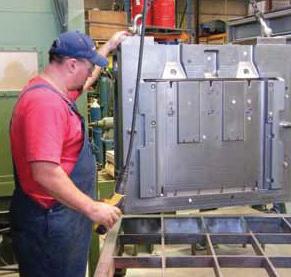
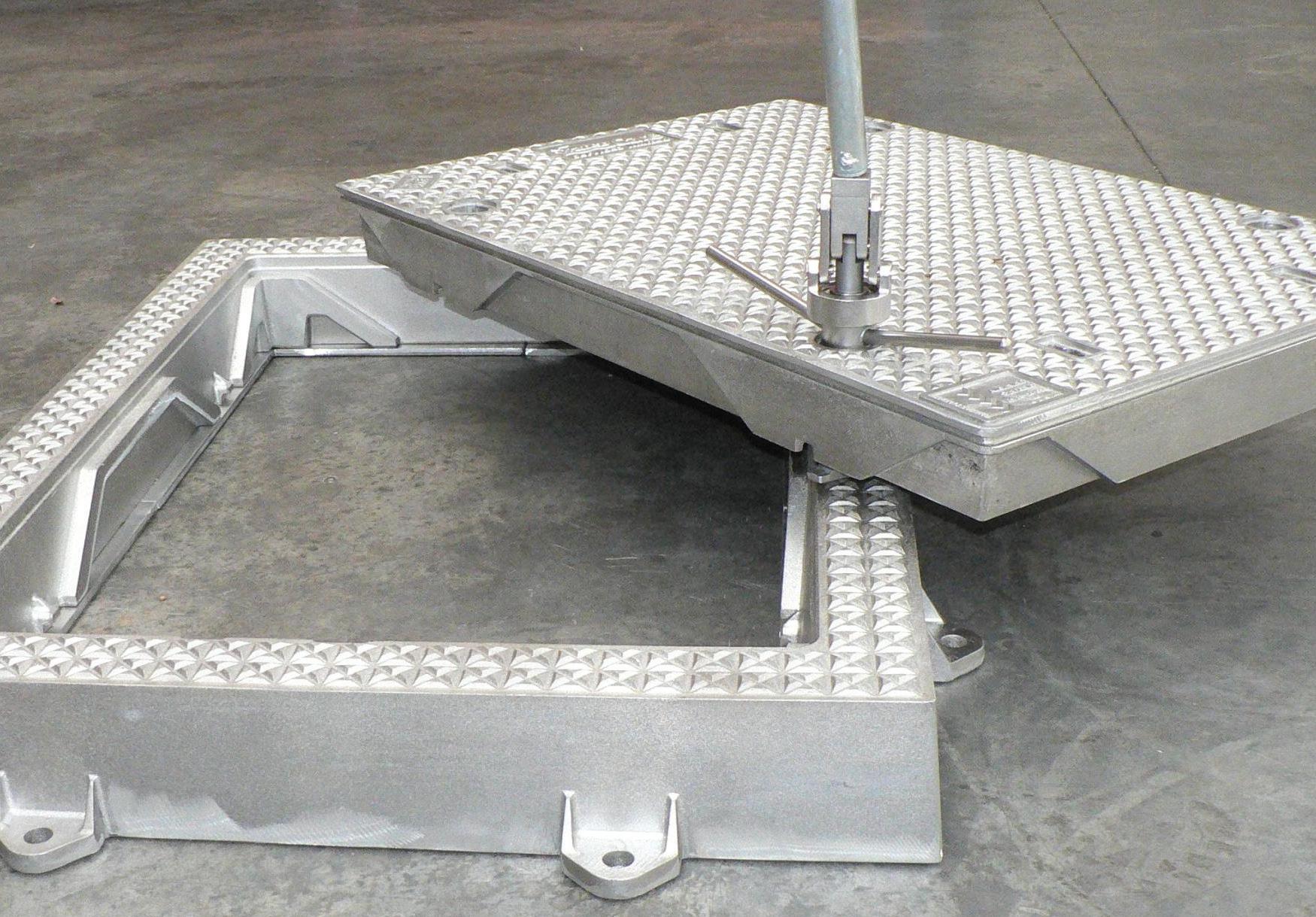


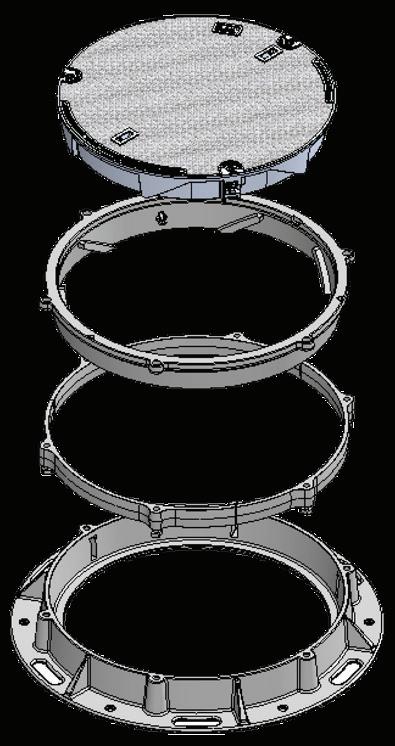
It had removed 370kg of nitrogen and 75kg of phosphorus from the waterway per hectare, per year through subsequent algal biomass harvest.

“We expect the biomass production and nutrient removal will more than double in the upcoming summer.”
Data collected from the field trials will help researchers and the Māori land managers determine the level of nutrients FANS systems can remove.
It can then be compared with other nutrient pollution mitigation systems such as wetlands, woodchip bioreactors and riparian management.
“We know already a FANS system can be established in a few weeks and be operational soon after, much more cost effectively than a constructed wetland, for example,” he says.
“But it requires more maintenance than a wetland, to regularly harvest the algal biomass. We are investigating whether a full-scale model could be harvested every month, quarter, or even just once a year.”

The five-year FANS research project is now into its third year and data to date suggests that FANS could be used across a range of land types and nutrient loads.
Jason says larger trial sites will be established and tested during the 2022-23 financial year.
76 www.waternz.org.nz WATER NEW ZEALAND NUTRIENT REMOVAL
• • • •
M a s o n s i s n o w t h e N e w Z e a l a n d d i s t r i b u t o r f o r M a s o n s i s n o w t h e N e w Z e a l a n d d i s t r i b u t o r f o r
L G S o n i c L G S o n i c
L G S o n i c L G S o n i c
M o n i t o r , p r e d i c t , a n d c o n t r o l a l g a e w i t h u l t r a s o n i c t e c h n o l o g y T h e M P C B u o y u s e s l o w p o w e r u l t r a s o u n d t o s t o p a l g a l g r o w t h w i t h o u t h a r m i n g t h e e n v i r o n m e n t .
M o n i t o r , p r e d i c t , a n d c o n t r o l a l g a e w i t h u l t r a s o n i c t e c h n o l o g y T h e M P C B u o y u s e s l o w p o w e r u l t r a s o u n d t o s t o p a l g a l g r o w t h w i t h o u t h a r m i n g t h e e n v i r o n m e n t .
E l i m i n a t e u p t o 9 0 % o f t h e a l g a e R e d u c e T S S , p H , a n d c h e m i c a l u s a g e S a f e f o r f i s h , p l a n t s , a n d o t h e r a q u a t i c l i f e
E l i m i n a t e u p t o 9 0 % o f t h e a l g a e R e d u c e T S S , p H , a n d c h e m i c a l u s a g e S a f e f o r f i s h , p l a n t s , a n d o t h e r a q u a t i c l i f e


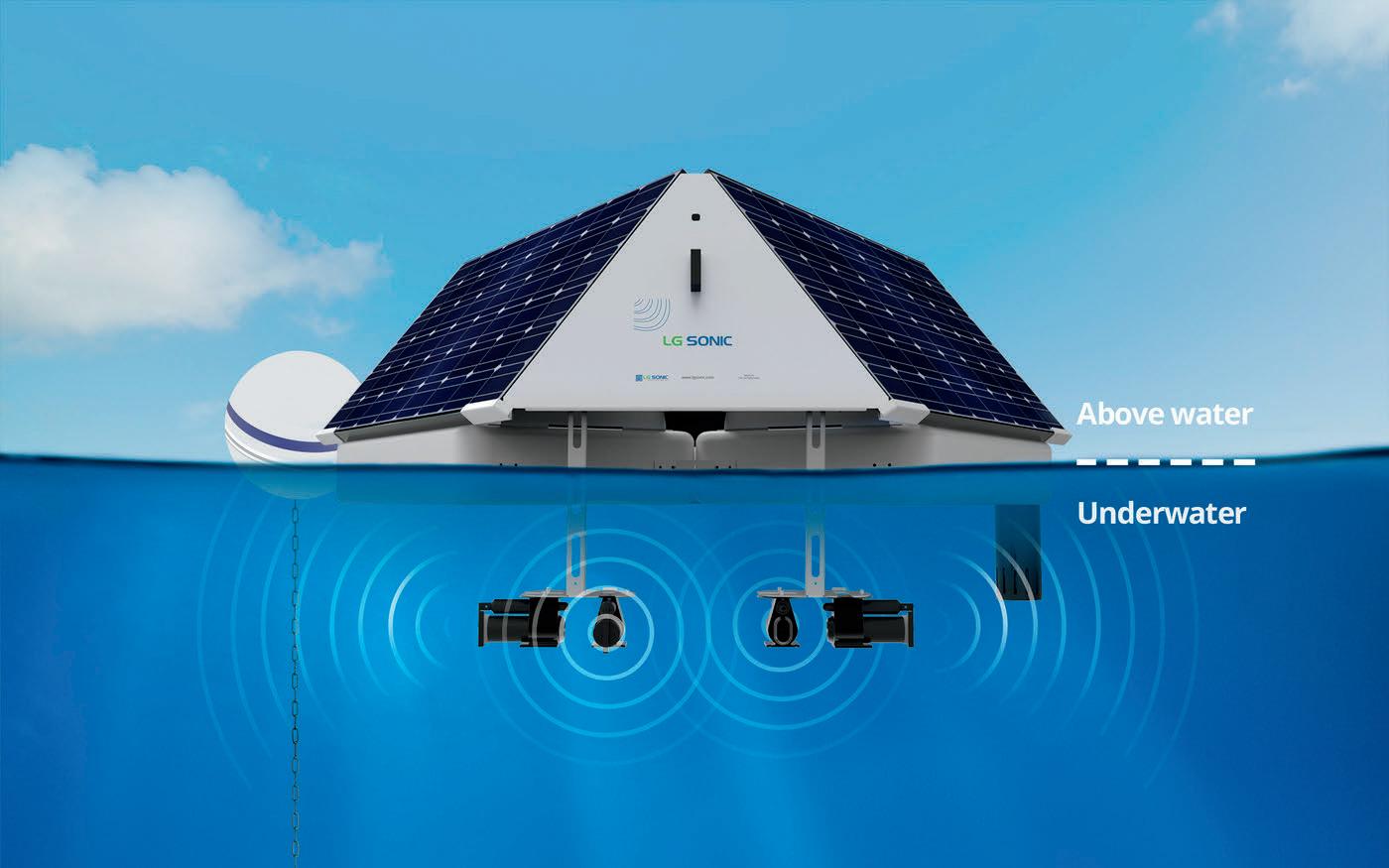

m a s o n s
c o


S o l v e y o u r a l g a e p r o b l e m s w i t h L G S o n i c p r o d u c t s . C a l l u s t o d a y t o s e e h o w w e c a n s u p p o r t y o u .
S o l v e y o u r a l g a e p r o b l e m s w i t h L G S o n i c p r o d u c t s .
C a l l u s t o d a y t o s e e h o w w e c a n s u p p o r t y o u .
P R O V I D I N G W A T E R S O L U T I O N S F O R N E W Z E A L A N D E R S F O R O V E R 3 5 Y E A R S w w w . m a s o n s . c o . n z | P : + 6 4 9 2 7 4 3 1 4 3
M a s o n s i s n o w t h e N e w Z e a l a n d d i s t r i b u t o r f o r M a s o n s i s n o w t h e N e w Z e a l a n d d i s t r i b u t o r f o r
P R O V I D I N G W A T E
O L U T I O N S F O R N E W Z E A L A N D E
V E R 3 5 Y E A R S w
.
z | P : + 6
1
R S
R S F O R O
w w
.
. n
4 9 2 7 4 3
4 3
Estuary health check-up results
now freely available online
Information about the health of estuaries locally and across the country can now be accessed by using a new topic on the LAWA website that makes results from regional and unitary council monitoring programmes freely available.
The new LAWA (Land, Air, Water Aotearoa) Estuary Health topic presents environmental data from the country’s largest estuary monitoring dataset, covering nearly 400 monitoring sites across 80 estuaries.
LAWA estuary health science lead Dr Tarn Drylie says the places where rivers and streams meet the sea are complex, yet there are things councils monitor to understand the pressures that estuaries are under.
“New Zealand’s estuaries are culturally and ecologically significant. We know that many of them are under pressure and the LAWA estuary health topic provides results from regional and unitary council monitoring of contaminants, mud content, and estuary macrofauna.
“Estuary health is impacted when concentrations of contaminants like metals and hydrocarbons get too high. From the monitoring data on LAWA, we see estuaries that are most affected by high loads of contaminants tend to be downstream of built-up areas.
“Another important factor for estuary health is the amount of mud content from the surrounding land that is in the surface layers of the sandflats. Higher mud content is found in places with the most modification to land use.”
LAWA also presents the results of regular estuary macrofauna check-ups. Estuary macrofauna include hundreds of intertidal species such as worms, snails, crustaceans, and shellfish like pipi and cockles.
“We monitor the makeup of macrofaunal communities because some critters only live in pristine environments while others thrive in degraded conditions. Regular monitoring of estuary macrofauna gives us a good indication of the overall health of an estuary and any changes in conditions over time.”
The estuaries along the coastline come in various shapes, sizes, and state of health.
Dr Chris Daughney, chief science advisor for Te Uru Kahika –Regional and Unitary Councils Aotearoa, says estuaries are dynamic and provide a window into the health of the wider catchment.
“Regional and unitary councils monitor estuaries to understand their ecological condition and how this is changing over time, especially in relation to human activities that may degrade them.
“Some regions have been formally monitoring estuaries for three

decades, while others have only recently established programmes in acknowledgement of the importance of estuary health for our collective well-being.
“The health of an estuary can be impacted by sediment, nutrients, and pollution from land use upstream, marine pressures such as overharvesting, dredging, and invasive species, shoreline activity and development, and climate change.
“The results from regular monitoring of these highly connected environments help us to understand whether catchment activities and pressures are being managed effectively and direct future management and restoration efforts.”
Estuaries provide several ecosystem services and support water quality through natural filtration and binding pollutants within sediment. They are home to diverse plants and animals, some of which are only found here.
Department of Conservation marine technical advisor Helen Kettles encourages people to explore the LAWA website and get acquainted with their local estuaries.
“Estuaries are truly special places that provide outsized benefits for us and the planet. If we can look after estuaries, they can look after us.
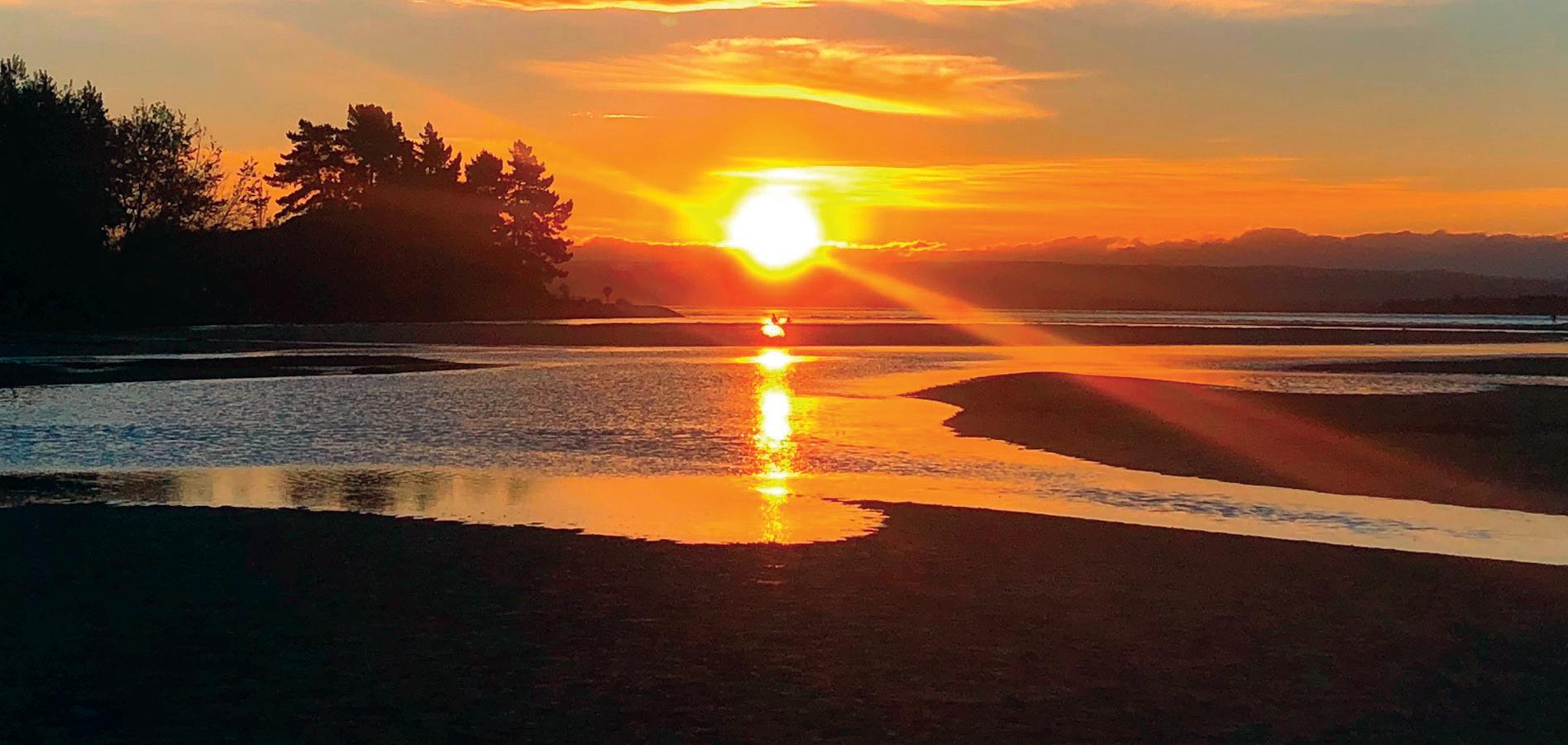
“The new LAWA Estuary Health topic can help us all to better understand our local estuaries and act for them.
“Improving estuary health will take time, so we must continue and extend the good work happening across the motu from riparian planting to reducing the use of pollutants at home and work. I want to recognise everyone that’s involved in estuary restoration and protection.”
LAWA chair Dr Tim Davie said the LAWA website presents quality data and information collected regionally in a way that is nationally consistent.
“We all want the same thing; healthy environments for generations to come. To do this we need accessible, reliable, and quality data to help inform restoration efforts and track improvement over time.
“Through the LAWA project, we’re putting environmental data in the hands of researchers, iwi, government, industry, and communities so they can make informed decisions.”
Article provided by LAWA
78 www.waternz.org.nz
WATER NEW ZEALAND ESTUARIES
ProMinent’s Sigma range of smart motor-driven metering pumps is setting new standards in terms of operating convenience, reliability and safety and is used extensively across New Zealand.

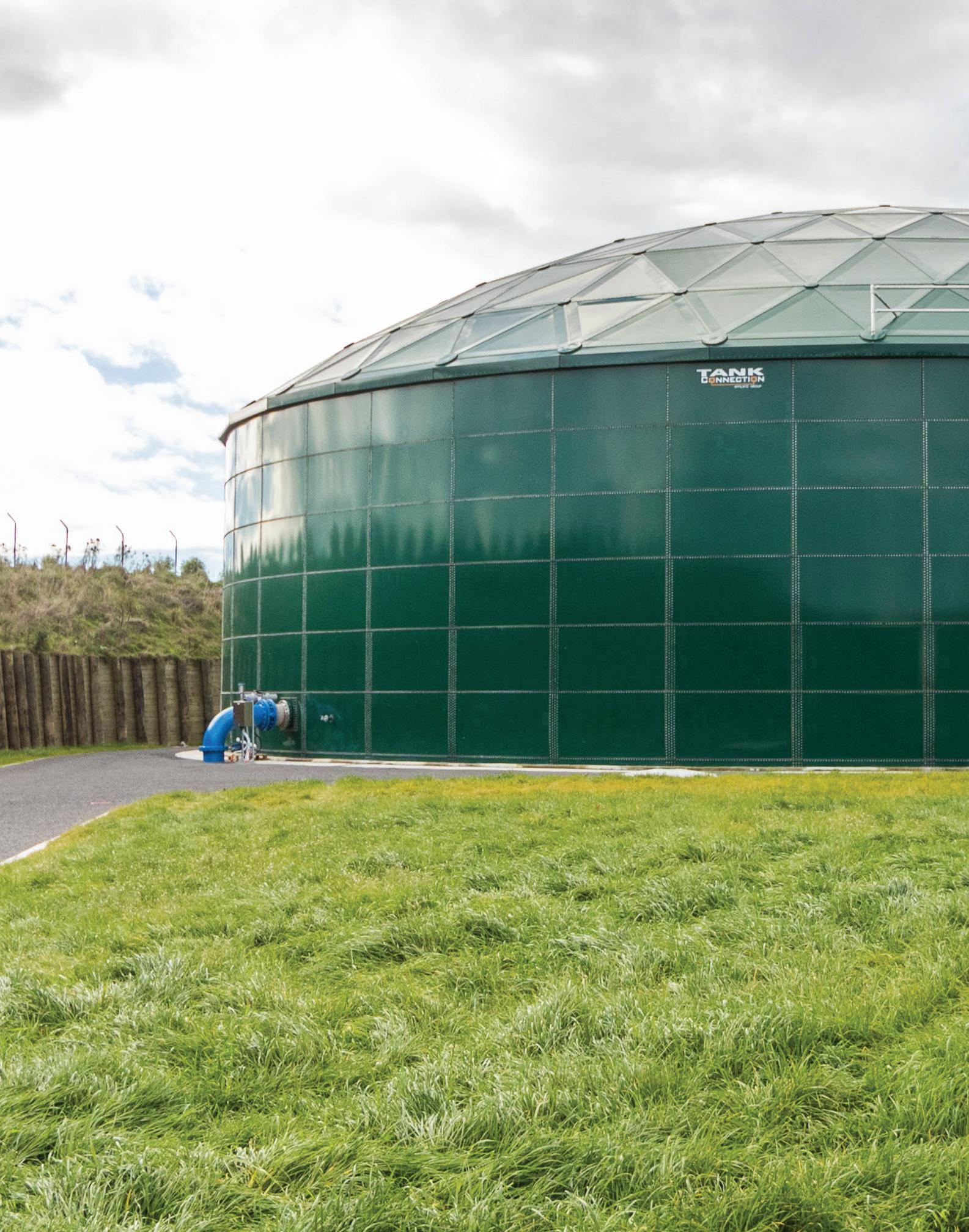

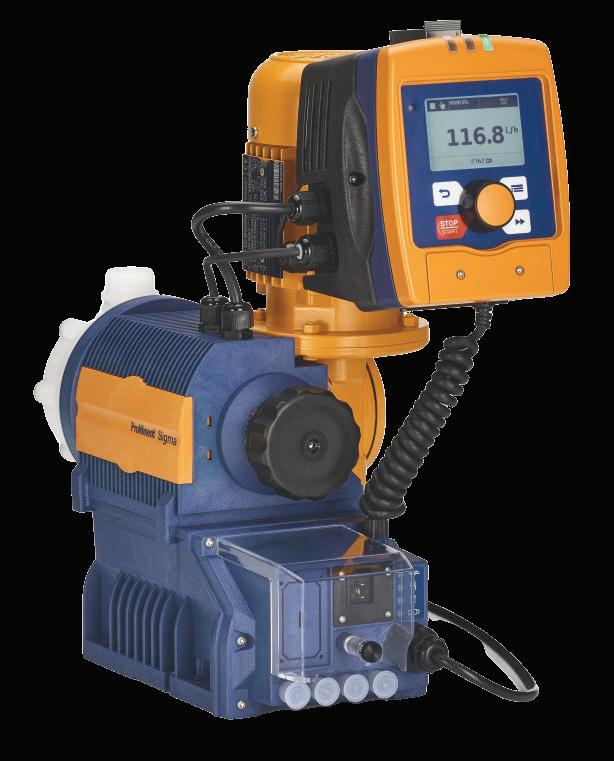
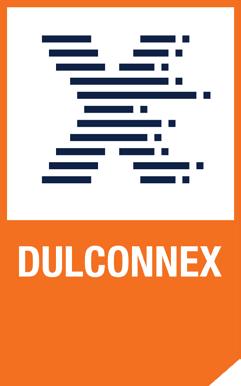
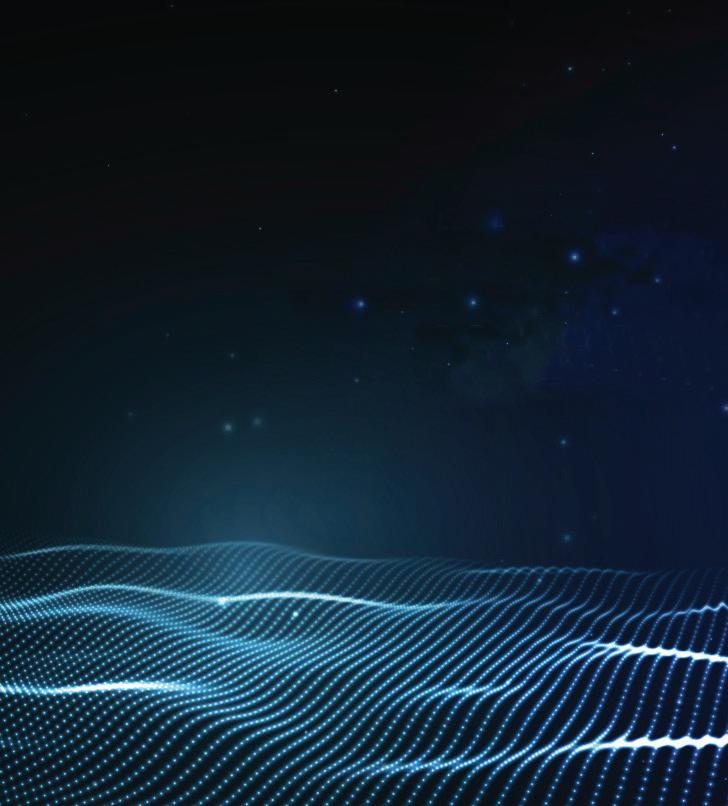
Connection to process control systems is made easy with traditional pulse and/or analog inputs, or optional fieldbus interfaces, such as Profibus®, CANopen, and DULCONNEX.
ProMinent’s Sigma range of pumps is getting a facelift and now features an intuitive operator interface and DULCOnneX for digital fluid management: integrated into a networked solution, Sigma/ X allows you to monitor, analyse and optimise metering processes with ease. Find
NOVEMBER/DECEMBER 2022 WATER NEW ZEALAND 79
the future today.
Find out
today.
RENDERTECH.CO.NZ
out more www.prominent.com/ dulconnex Experience
Sigma/ X with DULCOnneX Extended Connectivity
more www.chemfeed.co.nz Experience the future
Sigma/ X with DULCOnneX - Extended Connnectivity.
speed
simplicity.
tanks are a proven alternative to concrete for potable water and wastewater storage. They are quick and easy to erect, more cost effective, and have real design flexibility.
the regional
for Tank Connection premium, bolted steel storage tanks and aluminium domes we design solutions for even the largest applications. POTABLE WATER TANK NEW ZEALAND 10,000m3
Steel storage tanks for
and
Steel
As
agent
Sunflowers and squash
to brighten Kaipara water demonstration sites

Kaipara District Council has confirmed sunflowers and squash for the second growing season of the Kaipara Water demonstration sites.
The two sites are located at Te Kopuru on private land, and further north at Maunganui Bluff on iwi land. Both are set up as practical working examples of the ways in which different irrigation techniques can support land diversification and higher-value crops in the Kaipara. Council has contracted Northland Inc. to manage both sites.
Squash was chosen for Site 1 after consultation with Te Roroa, who own the land at Maunganui Bluff. The squash crops will be watered using sprinklers, with a control area set up with no irrigation on the crops.
Snow Tane, Te Roroa general manager operations, says Te Roroa is keen on sowing squash as it has export potential as well as the ability to feed those closer to home.
“There are currently no registered growers of squash in Northland, so if this season is successful we will certainly be looking to grow squash on a bigger scale. We are always looking to diversify our mahi and it looks like irrigation in this instance may help us do that.”
In 2018 there were 24 growers producing 88,179 tonnes on 6642 hectares, returning $58.6 million from exports.
“We know squash needs two things to grow well – a frost-free site and a constant supply of water. There are no frosts in Kaipara from October to March so that’s an automatic tick, and with the sprinklers we have in place we can tick that off too and grow with more certainty.”
Delica is an adaptable hybrid kabocha squash. The fruit is vineripened, sweet and flavourful, maturing 45-50 days after flowering, and hand-picked from December through to June. Kabocha is an Asian variety of squash, sweeter than butternut squash with a firmer, less watery flesh. It has less calories than butternut squash, and has an edible rind once cooked.
Come November, visitors to the Te Kopuru site (Site 2) will see the first green stems of high-oleic sunflowers reaching for the sky. The site hosts a 242 metre centre pivot irrigator, which can irrigate up to 10 hectares.
Greg Hall of Northland Inc. and the site manager for both demonstration sites, thinks this is an opportunity to show that Kaipara could grow high yields of sunflowers with irrigation. Sunflowers are currently grown in Northland for animal consumption only.
Sunflowers are also known for their lecithin production. Lecithins are often used for emulsifying, smoothing food textures, homogenizing liquid mixtures, and repelling sticking material.

Soybean has traditionally been the primary source of lecithin worldwide; however, sunflower lecithin is naturally free of gluten, soy, and dairy, and is a promising non-GMO product alternative. Irrigation has proven in some instances to increase sunflower production and yield.
“Non-irrigated sites that are dry when planted out have shown significant delays in the emergence and early growth of sunflowers when sown in November. So we hope that there will be a big difference in growth and yield between the irrigated and non-irrigated sections of the site, demonstrating a larger yield with the right smart-water use.”
There will also be a shoulder crop grown in December to demonstrate higher yield when irrigated over the peak summer months.
The Kaipara Water demonstration sites are part of Kaipara KickStart, led by Kaipara District Council and supported by the government’s Kānoa – Regional Economic Development & Investment Unit, with funding from the Provincial Growth Fund.
Article provided by Kaipara District Council.
80 www.waternz.org.nz WATER NEW ZEALAND IRRIGATION


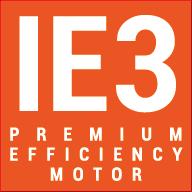





























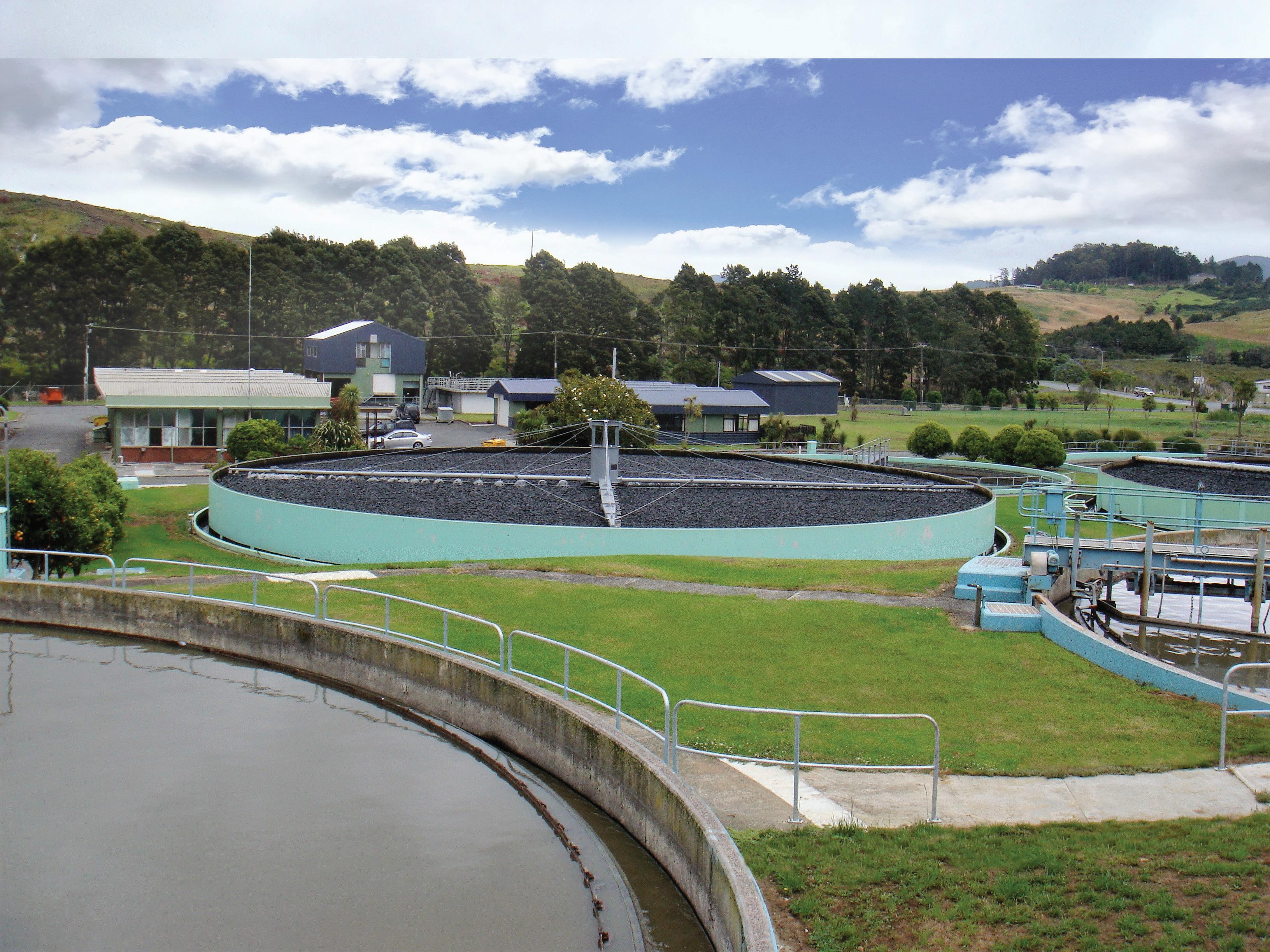
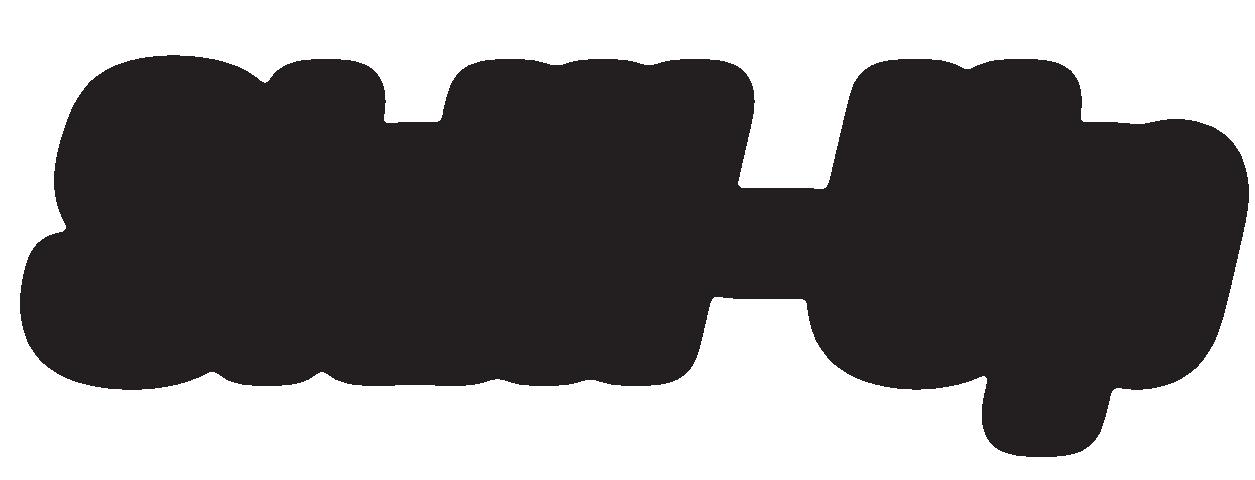

NOVEMBER/DECEMBER 2022 WATER NEW ZEALAND 81 Tsurumi’s New Avant Series MQ Contact us Today Wet or Dry Up to 355kW 0800 786 7464 Submersible Wastewater Pumps Premium Grade Skill-Up WITH NZ DIPLOMA & NZQA MICRO-CREDENTIALS Elevate the industry standard and promote skill growth by training on the job in wastewater, storm water and drinking-water services. GET IN TOUCH FOR MORE PROGRAMME DETAILS THREE WATERS INDUSTRY TRAINING
Looking at water
through a different lens
By Rod Naylor, chair, Water Advisory Group, Infrastructure Sustainability Council
The Te Mana o te Wai philosophy rests on the notion of restoring and preserving the balance between water (wai), the wider environment (taiao), and people (tāngata). But how do we measure this philosophy in real world outcomes?
A healthy population cannot be separated from the health of our water. Each of us instinctively understands this. But most water infrastructure is also hidden from view and that makes it much easier for governments to be recognised for expenditure on swimming pools and parks than on pipes. This public attitude has led to significant under-investment in
water is piped into people’s homes in the developed world.
While the infrastructure sector is major project driven, the water industry is largely sustained by programmes of capital investment. The work of delivering water never stops. It is, as Sue Murphy, the former CEO of Western Australia’s Water Corporation astutely observed, a “forever business”.
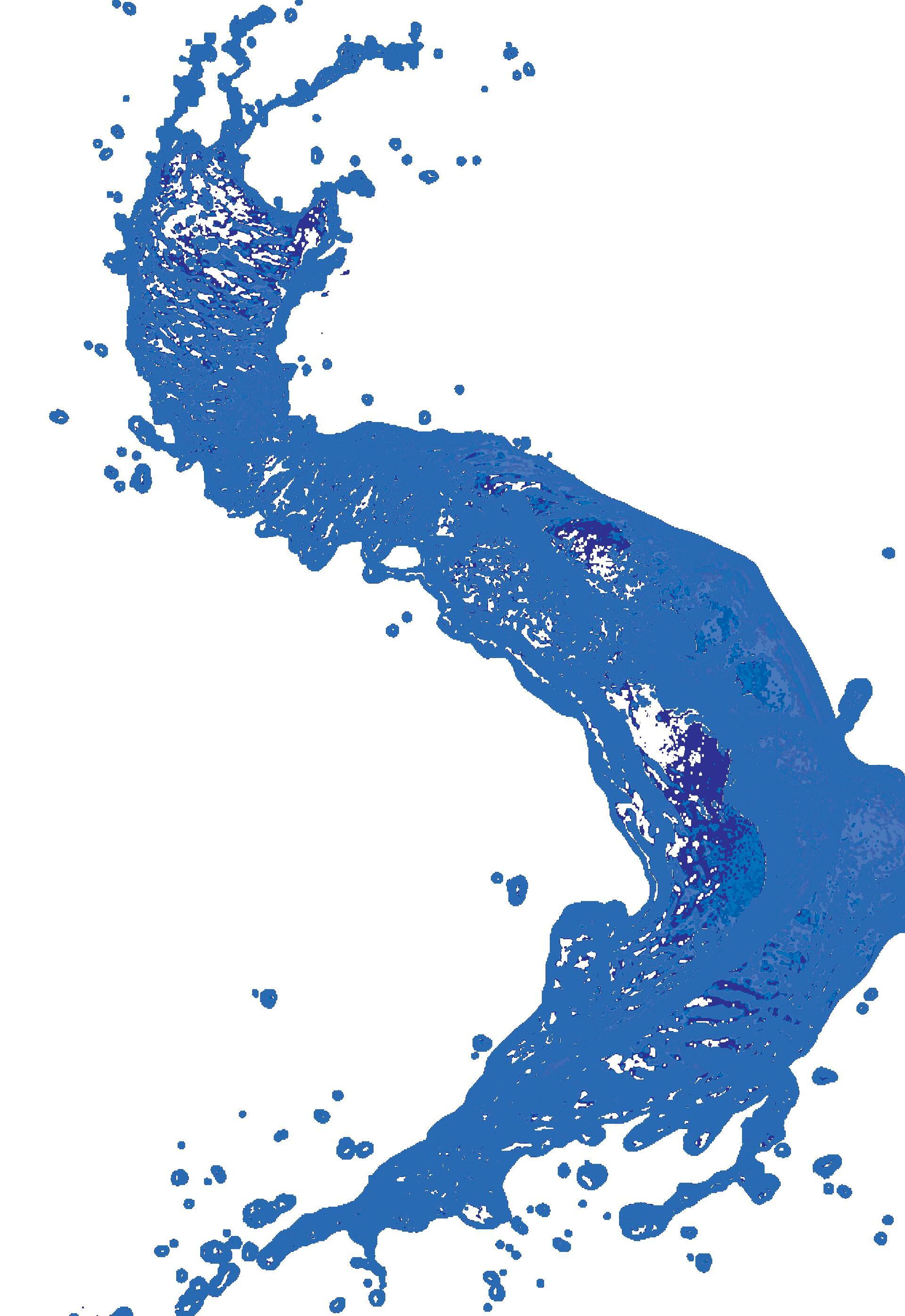
How does a forever business evolve its practice to ensure it is delivering sustainable outcomes forever, and that those outcomes are valued by the communities that they serve?
Our reputation as a verdant and water-rich country is under threat as climate, rainfall, and water availability patterns shift. Climate change is already influencing the liveability and security of cities and towns, cultural, agricultural, and environmental practices and the long-term security of the country’s most precious resource.
The Three Waters Reform Programme aims to address the country’s mounting water woes across drinking, stormwater, and wastewater. Everything from ageing infrastructure and historical underinvestment to source water contamination and climate change impacts are under the microscope.
Super-sized projects, like Watercare’s Central Interceptor in Auckland, are delivering exceptional outcomes for human and environmental health.
The Central Interceptor – the design of which has been verified as ‘leading’ by the Infrastructure Sustainability (IS) Rating Scheme – is intrinsically about sustainability. The 14.7-kilometre tunnel will reduce the wastewater and stormwater
that currently flow into Auckland’s urban waterways and beaches.
But its impressive sustainability achievements are both macro and micro, ranging from whole-of-life energy and water reductions of 41 percent and 40 percent respectively, to a laundry service that ensures employees don’t take potentially contaminated PPE home.
Since it was launched in 2012, the Infrastructure Sustainability Council’s IS rating scheme has transformed the way infrastructure is designed and delivered in Australia and New Zealand. More than $220 billion worth of assets like the Central Interceptor have undertaken an IS rating and delivered best practice, helping shift the benchmarks for sustainability performance.
But few water projects are of the magnitude of the Central Interceptor. On both sides of the Tasman, the dollar value of water projects is more commonly measured in the millions – cumulatively, they amount to billions of dollars of investment.
Here – where an estimated 80 percent of publicly-funded infrastructure projects have a capital value of less than $100 million – benchmarking tools need to be accessible, scalable, and cost-effective. So how do we systematise, standardise, and simplify processes that deliver consistent sustainable outcomes on a small scale?
The IS Council has established a Water Advisory Board, which I chair. Together, we are exploring the applicability and sustainability benefits of IS ratings. Our goal is to prove the return on investment to the water sector and drive largescale transformation of sustainability performance.
Among our biggest challenges is supporting the water industry to embrace assured performance measurement to Infrastructure Sustainability Council –Chair of Water Advisory Group Rod Naylor.
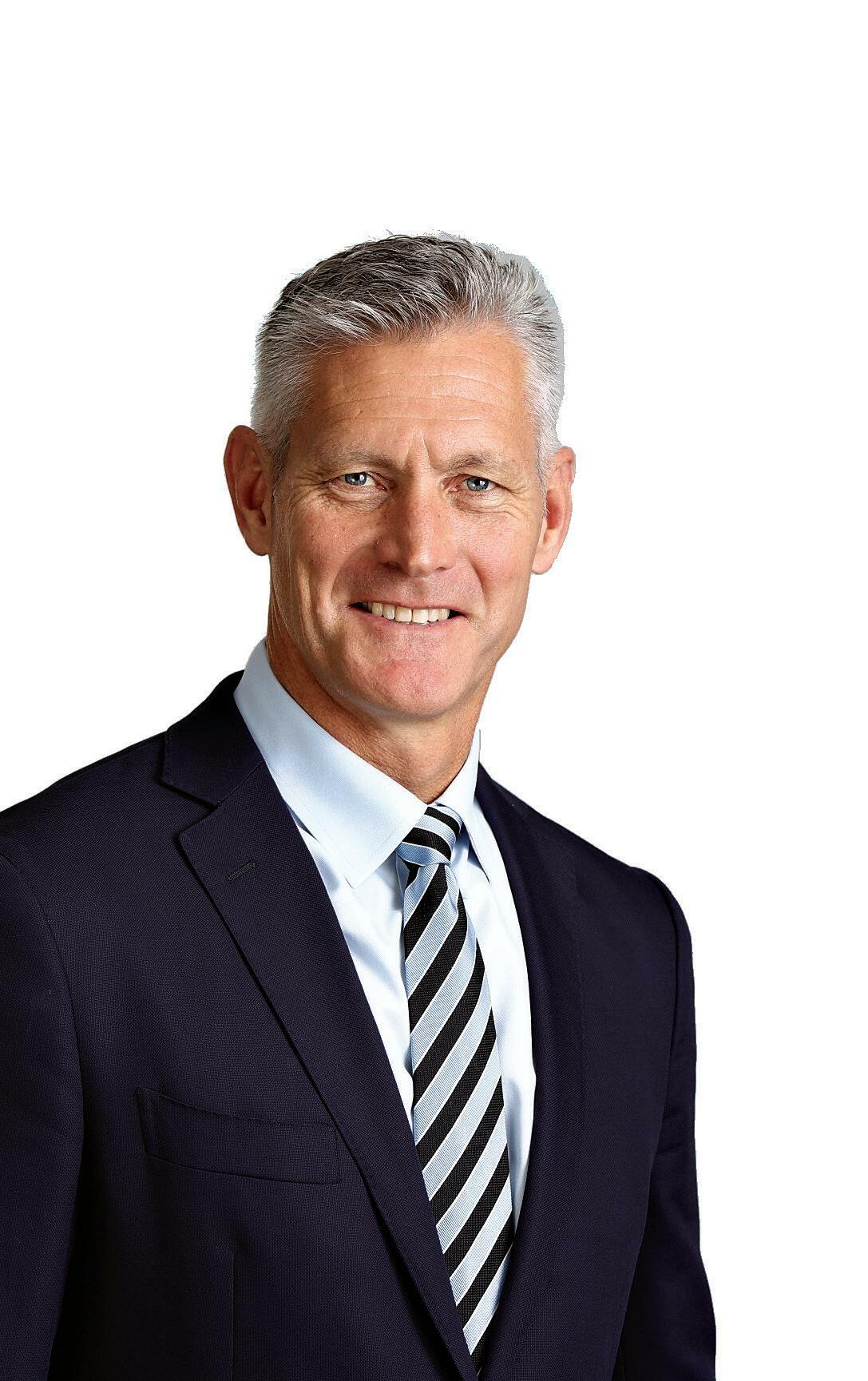
WATER NEW ZEALAND COMMENT
enhance every programme, rather than see it as a one-off cost only for the ‘hero’ projects.

Most of the water industry’s capital expenditure aligns with its purpose and impact. But how does a water utility validate pillars of liveability, resilience, and contribution to communities? How does a water utility show the communities it serves that it is delivering more for them than the bare minimum required by the regulator?
When pursuing sustainability in infrastructure, it is tempting to chase points and plaques – but the value of integrating the IS rating scheme into planning delivery and operations is not to receive a certificate but to influence thinking at the front end of projects and systematise the practice.
The IS Council challenges teams to identify opportunities that drive more sustainable outcomes – and then provide a mechanism to demonstrate, during the operational phase, that a project lives up to its promise.
IS Essentials will be the secret weapon to help the water industry validate their contributions to community.
With investment from the Westpac NZ Government Innovation fund, the IS Council is streamlining the IS rating scheme for infrastructure programmes and projects with a capital investment of less than $100 million. This includes digitalising the rating process and developing an embodied carbon calculator especially for local infrastructure.
Aligned with the UN Sustainable Development Goals and Living Standards Framework, IS ratings can help government agencies, private asset owners and investors to measure, improve and report on the economic, environmental, cultural, and social impact.
Analysis undertaken in 2020 found every $1 spent on infrastructure projects rated by IS will deliver up to $2.6 return through improved materials efficiency, reduced energy emissions, and better environmental, social and cultural outcomes.
We are currently piloting IS Essentials
with 20 projects on both sides of the Tasman, including five water projects.
From this process we hope to better understand how to deliver costeffective and efficient assessment and to uncover new sources of value for water infrastructure.
We know a radical shift in mindset will be required to transform the water sector. Sustainability is not a box to be ticked or a certificate to be framed. It is a collaborative continuous improvement journey across the planning, design, construction, and long-term operation of infrastructure.
New Zealanders are already known for thinking differently about water. In 2017, the Whanganui River became the world’s first waterway to be granted legal personhood. The country’s third-longest river could then be represented in court by guardians appointed to speak on its behalf.
This powerful example shows that, when we look at our most precious resource through a different lens, it changes the way we value it.
Amarex KRT - Jacket-Cooled Waste Water Pump
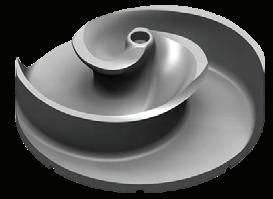
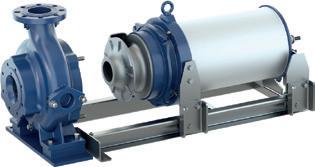

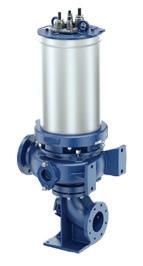
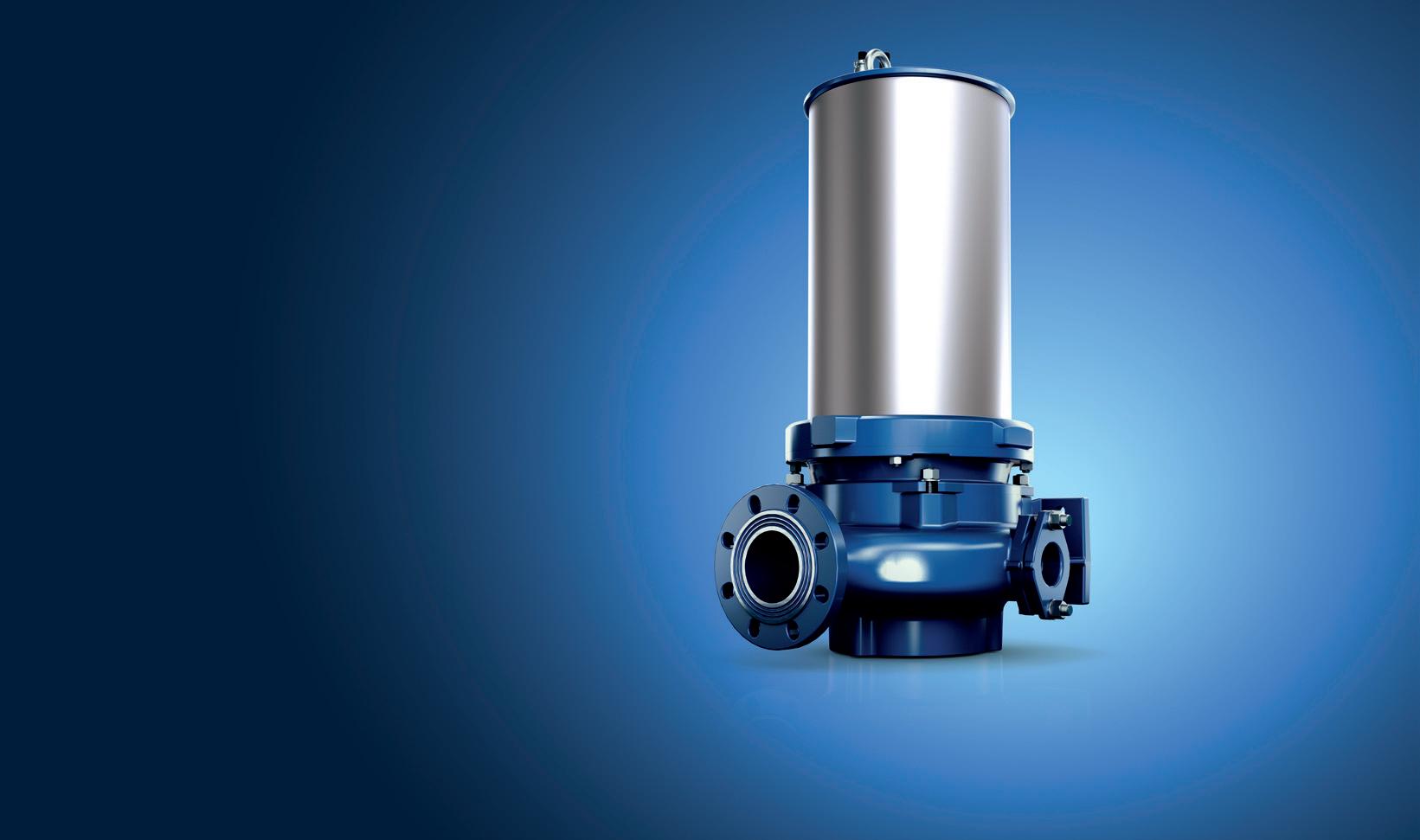

The compact Amarex KRT is now suitable for an even greater variety of applications: with innovative impellers and new motor sizes from 10 to 850kW, the waste water pump meets additional requirements. And thanks to its cooling jacket, the pump can even be used for dry installation.
Find our more at ksb.co.nz
NOVEMBER/DECEMBER 2022 WATER NEW ZEALAND 83
GOT THAT COOL FACTOR.
Wet Installation with guide rail(s) Vertical Dry Installation Amaslide
Aid
D-Max Impeller
Maintentance
Roadmap to a circular economy –
What is needed for New Zealand’s three waters in a time of transformation
The following article is a summary of a paper written by Emma Botha of GHD.
Water is considered our planet’s most valuable resource and vital to the existence of life. In managing the water needs of a population, its collection, distribution, and management must ensure the water is safe, reliably available and undertaken with minimal impact on the environment.
As populations grow, and effects from climate change continue, the challenges on water systems are set to increase. As such, there is an urgent need for transformational change in the management of water here, involving a move away from a linear mindset where resources are taken from nature, used, and disposed of, to a more sustainable and cyclical approach.
In July 2020, the Government announced the Three Waters Reform Programme, which will see drinking water, wastewater, and stormwater services transferred from councils to four new Water Service entities. This transition provides an opportunity to implement a more holistic framework for the management of water; both at a central government and local organisational level.

The Three Waters Reform Programme integrates a Māori perspective, creating the framework for a more holistic approach by providing an alternative lens for the management of resources. Te Mana o te Wai –the vital importance of water – recognises that water is a critical natural resource for the health and well-being of both people and the environment.
The water body’s health is prioritised, followed by the needs of the people, and then commercial interests. This is a significant perspective shift from the historical prioritisation of business and people first.
This aligns well with a circular economy which follows three principles: reduce waste and pollution through design, keep products and materials in use, and regenerate natural systems.
The transition to the Three Waters Reform Programme offers a unique opportunity to actively integrate circular economy practices into infrastructure and water management practices.
How is New Zealand’s water management placed for a circular economy?
Currently there is a strong desire to address climate change and the impact it has on water infrastructure at the central and local government levels. However, research revealed that the circular economy framework is not being considered in council sustainability initiatives.
Encouragingly, some councils do adopt measures that could fall under the circularity umbrella such as the adoption of energy neutral treatment processes, resource recovery, carbon emission tracking, and metering water usage. But there is yet to be a consistent approach across all regions.
While the technical knowledge exists to implement a circular economy into water reform, the issue lies in how to go about it.
A strategy for New Zealand
We can use international case studies to inform a circular economy
strategy here. Broadly, key strategies have been identified to fall into one of four themes:
1. Creating an explicit water infrastructure circular economy strategy
A circular economy is already included in the First Emissions Reduction Plan – the next step is to detail it in a water infrastructure strategy. Central government can provide the overall vision and guidance for a framework to drive systemic change while industry/water service providers can simultaneously create their own strategies and start forming partnerships with other organisations.
There are successful examples of this, such as an initiative by Watercare to recover a fertiliser from biosolids and provide pasteurised biosolids with bark as a potting mix for nurseries.
2. Data collection to understand where the biggest impacts can be made
Data collection allows us to understand where our material flows are, not just in water but in other business/sectors where synergies could exist. Being able to quantify performance around decarbonisation and resource efficiency is an important aspect within a circular economy.
A useful example of data capture and use is through the Infrastructure Sustainability Rating Scheme tool, which lets you look at a range of sustainability metrics throughout the infrastructure project life cycle (see page 82).
3. Form partnerships and collaborate with different organisations
The water sector will not be able to implement a circular economy on its own, but it is achievable through partnerships. Partners can provide inputs or outlets for innovative products. Many circular economy initiatives begin as small-scale ventures and may not ever scale up; however, many small successes can lead to a significant cumulative outcome.
This differs from a traditional engineering approach which would seek one all-encompassing solution. Instead, success can be found through the combination of a range of varied approaches.
4.
Initiatives to ease the transition to circularity
To facilitate the implementation of circular economy initiatives (either through voluntary or mandated requirements), financial support from central government will be needed. Funding can prompt organisations to act where they would not have otherwise.
In addition, change can also be driven through government procurement processes, where more sustainable processes have greater weighting.
Making it happen
The transition to the government’s proposed Three Waters reform provides a unique opportunity to make positive change.
With strategic leadership from central government, mobilised by plans simultaneously implemented at an organisational level, there is an opportunity to make a significant, and urgently needed shift to a more sustainable future via a circular economy framework.
WATER NEW ZEALAND COMMENT
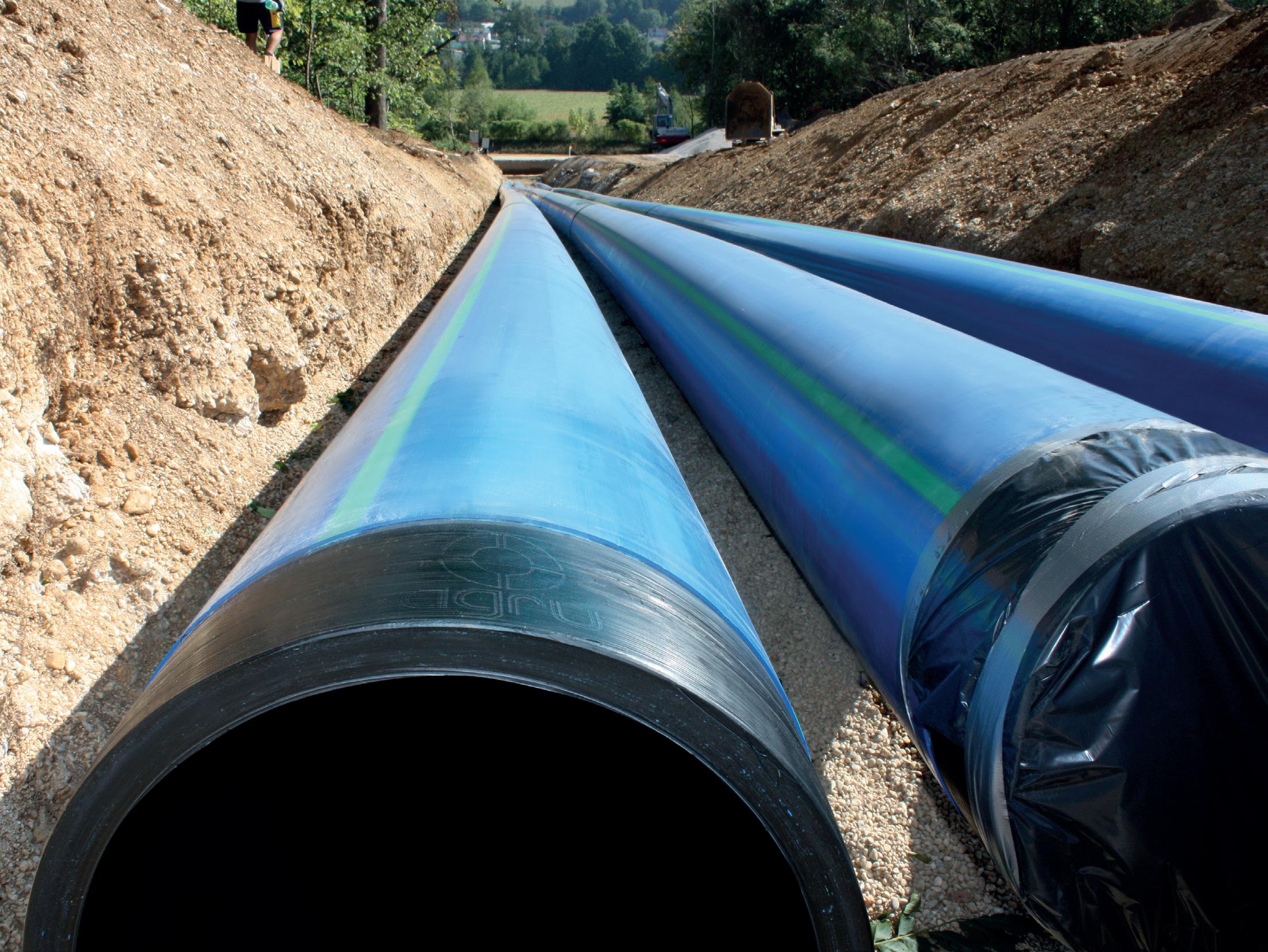
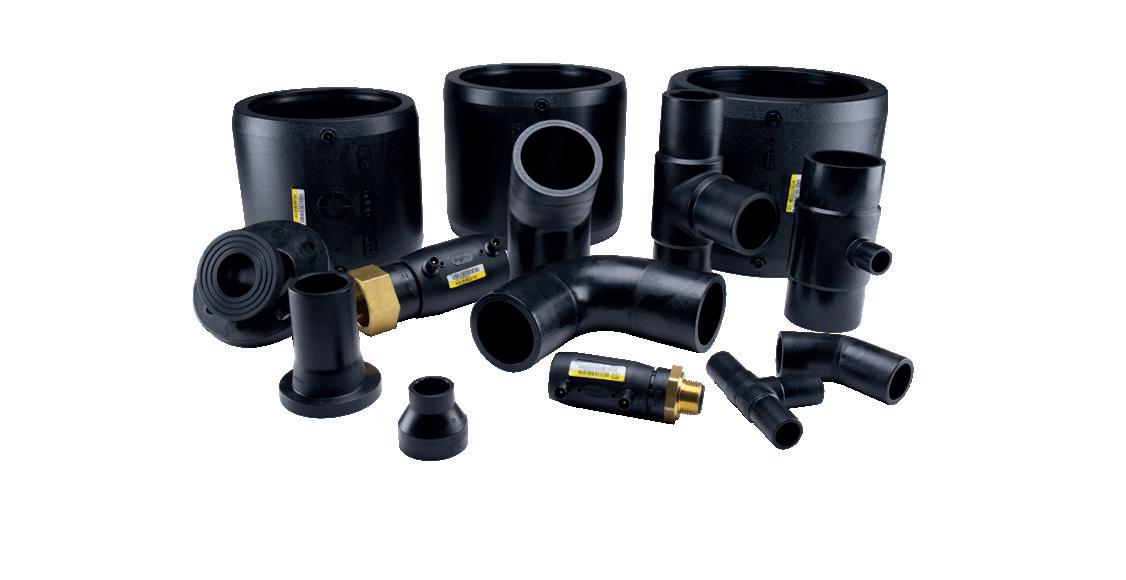
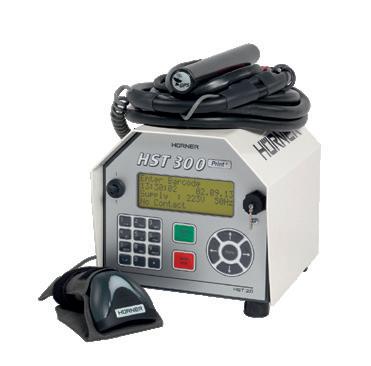
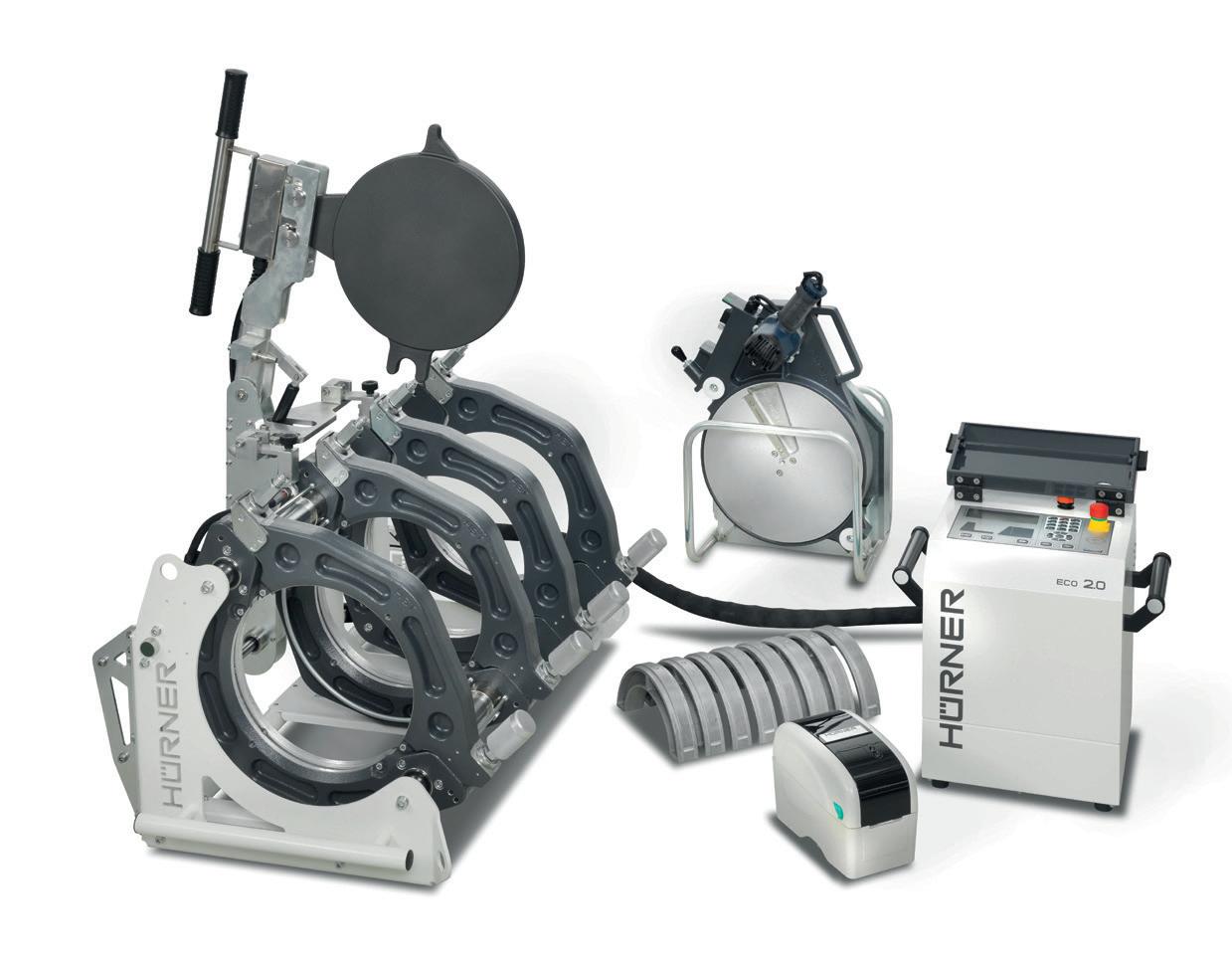
HUERNER | Welding Technology NZ Ltd AGRU New Zealand Ltd | 12 Croskery Road, Papakura, Auckland 2110, New Zealand | Phone (09) 299 3640 Email admin@agru.co.nz | admin@huerner.co.nz AGRULINE PE 100-RC Fittings & pipes resistant to cracks LONGER SERVICE LIFE crack resistant PE 100-RC HIGH ECONOMIC EFFICIENCY sandbed-free installation LASTING CONNECTIONS better welding results ONE STOP SHOPPING complete PE 100-RC piping system Specialisation in butt welding, electro-fusion equipment & tools
Recent case law and an update on reformsfreshwater
 By Helen Atkins, director, and Amelia Scharting, solicitor, Atkins Holm Majurey.
By Helen Atkins, director, and Amelia Scharting, solicitor, Atkins Holm Majurey.
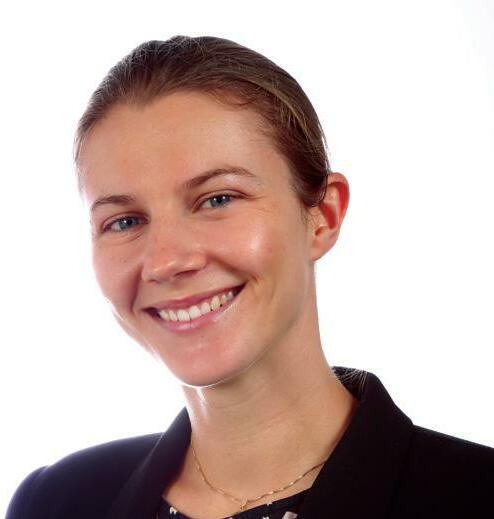
under the proposed Natural Resources Plan for the Wellington Region (PNRP).
The GRWC then contested this consent, arguing that the extent of wetlands was greater than had been identified by Wildland. GRWC asserted that the works undertaken during predevelopment stages had created atypical conditions, leading to inaccuracies in the Wildland’s report.
The Environment Court was required to determine whether there were in fact atypical conditions, and whether the thresholds under the PNRP and the NPS-FM wetlands provisions had been met.
The last few months have been busy, with many in the sector starting to come to grips with the Water Safety Plans, which were due on 14 November 2022, and preparing to attend the recent Water New Zealand Conference and Expo. It’s a vibrant and exciting time to be in the water sector, as we see a great deal of innovation and change. In this edition, we review recent case law relating to the water sector, and provide an update on the status of freshwater reforms and plans.
Adams v. Greater Wellington Regional Council
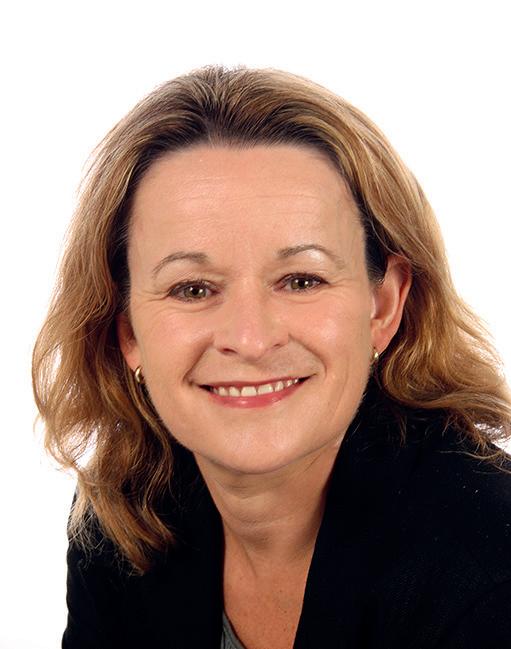
In the landscape of changes to freshwater management, the Environment Court furthered the discourse on the definition and application of ‘wetland’ under the National Policy Statement on Freshwater Management 2020 (NPS-FM).
The defined term has received criticism from the water sector for difficulty in application. This case dealt with further complexity of having to apply two wetland standards to the land, alongside the involvement of both the district and regional councils.
Developers in Wellington began undertaking works in 2019 to subdivide and construct a set of 12 new residential dwellings from a larger plot of land, previously used for rural purposes. This work included the clearing of vegetation in preparation for construction.
Officers of the Greater Wellington Regional Council (GRWC) conducted a site visit amidst concern that the site contained wetlands, prompting the developers to contract ecologists, Wildland Consultants, to undertake an assessment.
The resulting identification of specific areas of wetland were accepted by Upper Hutt City Council (UHCC) in the consent granted in early 2020. At this time, the wetlands were protected
The Court held that the clearing activities undertaken by the developers had not resulted in an atypical environment. These activities included the clearing of vegetation, drainage work, and the ripping of soil pans. Though not uncommon on farms, the GRWC argued that they are not typical for developers.The Court held that the effects of the activities were as expected, and these effects were acceptable regardless of who undertook them.
Further on this point, the GRWC asserted that the activities had resulted in pasture species outgrowing wetland rushes, leading to the inaccurate identification of areas as pasture. Such a theory required evidence of the species composition prior to the clearing work.
Given the lack of evidence to support this theory, the Court held that the site did not present atypical conditions, and therefore met the pasture exclusion provision under the PNRP.
Finally, the Court considered the improved pasture exclusion available under the NPS-FM, which includes a ‘bright-line’ test focusing on both the make-up of vegetative species, and on the temporal nature of water pooling in the area. The GRWC was unable to provide sufficient evidence to prove that the alleged wetland areas were subject to more than temporary rain-derived pooling.
It was held that the site sufficiently met the exclusion criteria, and hence the developers were not required to retrospectively apply additional wetland protections.
The Court included commentary on the difficulties of applying the improved pasture exclusion from the NPS-FM, which is a simple test at face value, but in practice has proved troublesome to interpret and apply. In evaluating the temporary nature of rain-derived water pooling, the Court rejected the inundation/saturation test contained in the hydrology tool as an appropriate legal test.
86 www.waternz.org.nz WATER NEW ZEALAND LEGAL
Left: Helen Atkins and Amelia Scharting.
It is worth noting that the proposed amendments to the NPSFM 2022 were released for public consultation earlier this year and included changes to the wetland exclusion. Though Adams assists in applying the original NPS-FM 2020 definition, this may be more concretely addressed when the Minister makes his recommendation on the proposed changes.
Peter Hugh McGregor Ellis v. R : The Place of Tikanga Māori in Our Legal System
As many readers may recall, Peter Ellis was convicted of 16 counts of sexual offending in 1993. He unsuccessfully appealed this decision to the Court of Appeal in 1994, and again in 1999. In July 2019 the Supreme Court granted leave for Mr Ellis to appeal the Court of Appeal decisions. However, Mr Ellis passed away in November of that year, prior to either of the two hearings scheduled to take place.
The Supreme Court then considered whether Mr Ellis’ appeal should still be heard despite his death. While this case ultimately concerned alleged criminal conduct, its findings on Tikanga Māori and its place in the legal system have wide reaching implications for all areas of law, including the water sector.
The Court found that Mr Ellis’ appeal should be allowed to continue, partially on the basis that the mana of those involved would continue to be in a state of imbalance due to either the alleged offending, or the potential miscarriage of justice in Mr Ellis’s conviction.
The majority reasoning affirmed that tikanga was the first law of Aotearoa and had not been extinguished by the advent of colonisation. Furthermore, the Court discussed how tikanga is becoming increasingly integrated into the legislation, case law, and everyday lives of New Zealanders.
Tikanga can be understood as including values, principles, standards, or norms within the Māori community, which help to determine appropriate conduct.
The Court did not attempt to give a comprehensive answer on exactly how, or in what circumstances, tikanga will be applicable to an issue. This is due to the intricate, interconnected nature of tikanga principles, and the complex intersections between tikanga and the common law, or western legal system.
Ultimately, the Court found that the applicability of tikanga will be case dependant.
The Court did provide guidance on the weight tikanga will be given when it is relevant. For example, where a piece of legislation, such as the Resource Management Act 1991, specifically references tikanga as a mandatory consideration, it may become a determinative factor in the resolution of an issue.
This is pertinent to the water sector especially in the context of incoming water reform, and in the new core concept of Te Mana o Te Wai, as introduced in the NPS-FM 2020. This principle, which asserts that the health of the water is paramount, must be given effect to by Taumata Arowai, as well as in the new water services entities to be created under the Water Services Entities Bill once passed.
There is an increasing shift towards crown and iwi/māori partnership, and this explicit recognition of tikanga principles shows that the courts intend to play their part in this. For practitioners, giving effect to Te mana o Te Wai is one way that
tikanga can be seen to take its place within laws and science. National Policy Statement on Highly Productive Land (NPSHPL)
The NPS-HPL was gazetted on 19 September 2022, providing an advance look into the provisions which then came into force on 17 October 2022. This long-awaited policy statement seeks to protect highly productive land (HPL) for primary production uses.
The objective and policies provide clear avoid policies against inappropriate subdivision, use, and development of HPL, in order to protect these areas of land and provide greater security for our growing population.
The NPSHPL has one Objective: Highly productive land is protected for use in land-based primary production, both now and for future generations.
Nine policies provide support to the objective, and set a clear pathway that HPL is to be protected - urban rezoning, rezoning and development as rural lifestyle, and subdivision, are activities to be avoided. In addition, the policies provide for reverse sensitivity effects to be managed so as not to constrain land based primary production on HPL.
The NPS-HPL requires ‘active involvement’ of tangata whenua (to the extent they wish to be involved) and must include consultation with tangata whenua. This reflects the broader law and policy movement towards greater partnership with iwi/māori, and recognition of tikanga and mātauranga māori through this relationship.
The NPS-HPL seeks to protect HPL by restricting the rezoning of such land for urban purposes, and by providing for continuation of existing productive use activities.
On the face of it, the NPS-HPL appears quite strict in protecting HPL, however some have noted it appears to lack teeth.
For Water New Zealand members, this policy statement is relevant to water infrastructure used in primary production, and may affect the future water use as land zones affect the changing needs of community.
Freshwater reform
The Water Services Entities Bill (WSEB) is currently with the finance and expenditure committee going through the select committee review process. At the Water New Zealand conference and expo, Local Government Minister Nania Mahuta advised that we can expect the second bill to be available towards the end of November.
We hope also to see more information regarding the governance structures of the entities, as well as the mana whenua requirements which are to be placed upon them.
Freshwater plans
We thought it would be timely to remind everyone that there is a lot of work being undertaken around the regions in relation to freshwater planning. There is a plethora of plans at various stages of development and consideration. We also have a number of plans that have utilised the new(ish) freshwater planning process.
We will provide a more detailed update in our next article.
NOVEMBER/DECEMBER 2022 WATER NEW ZEALAND 87
Astronomers find massive water reservoir
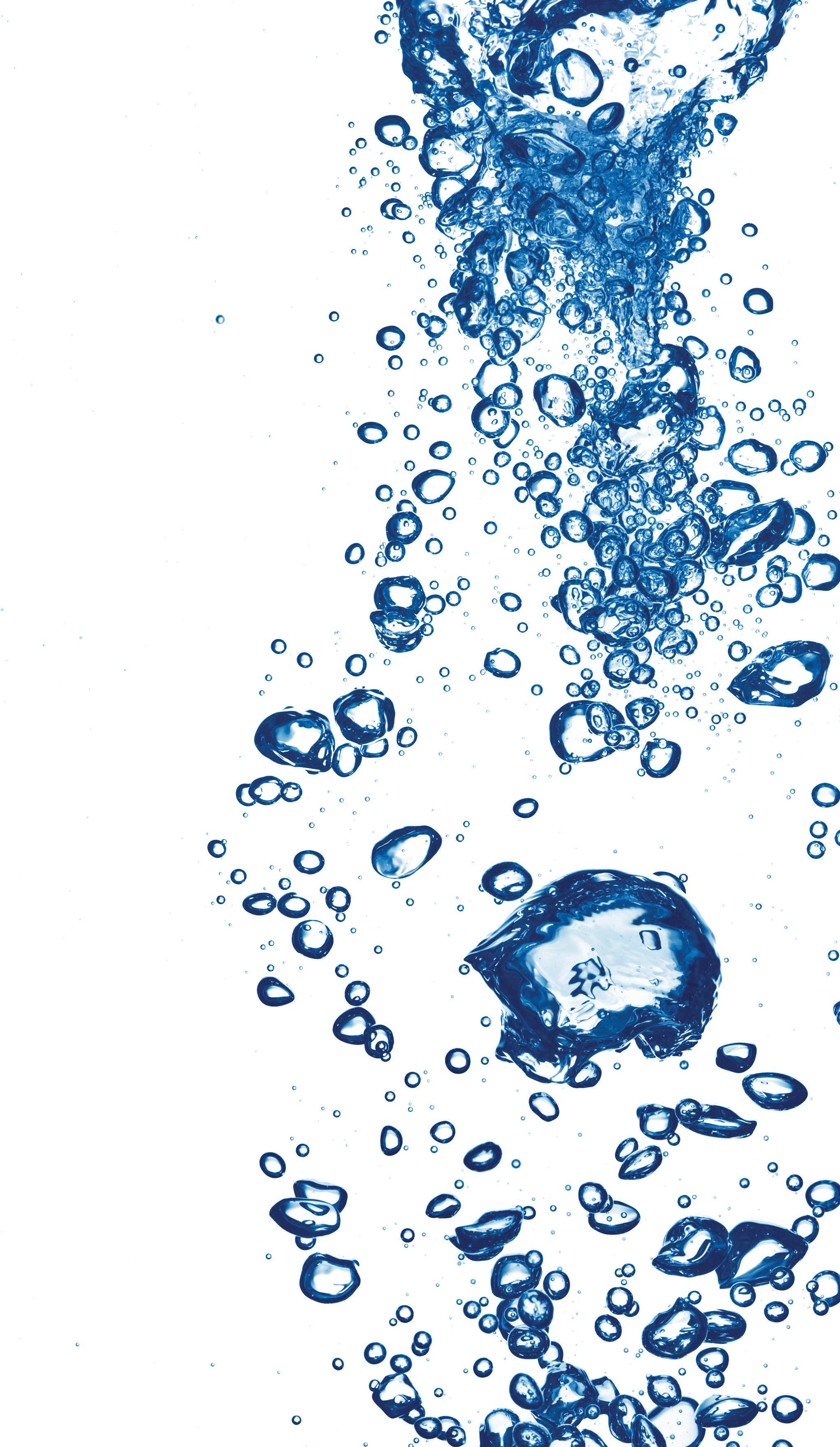
Two teams of astronomers have discovered the largest and farthest reservoir of water ever detected in the universe. Nasa says the water, equivalent to 140 trillion times all the water in the world’s ocean, surrounds a huge, feeding black hole, called a quasar, more than 12 billion light-years away.
“The environment around this quasar is unique in that it’s producing this huge mass of water,” says Matt Bradford, a scientist at Nasa’s Jet Propulsion Laboratory in Pasadena, California, and who leads one of the teams that made the discovery. “It’s another demonstration that water is pervasive throughout the universe, even at the very earliest times.”
A quasar is powered by an enormous black hole that steadily consumes a surrounding disk of gas and dust. As it eats, the quasar spews out huge amounts of energy.
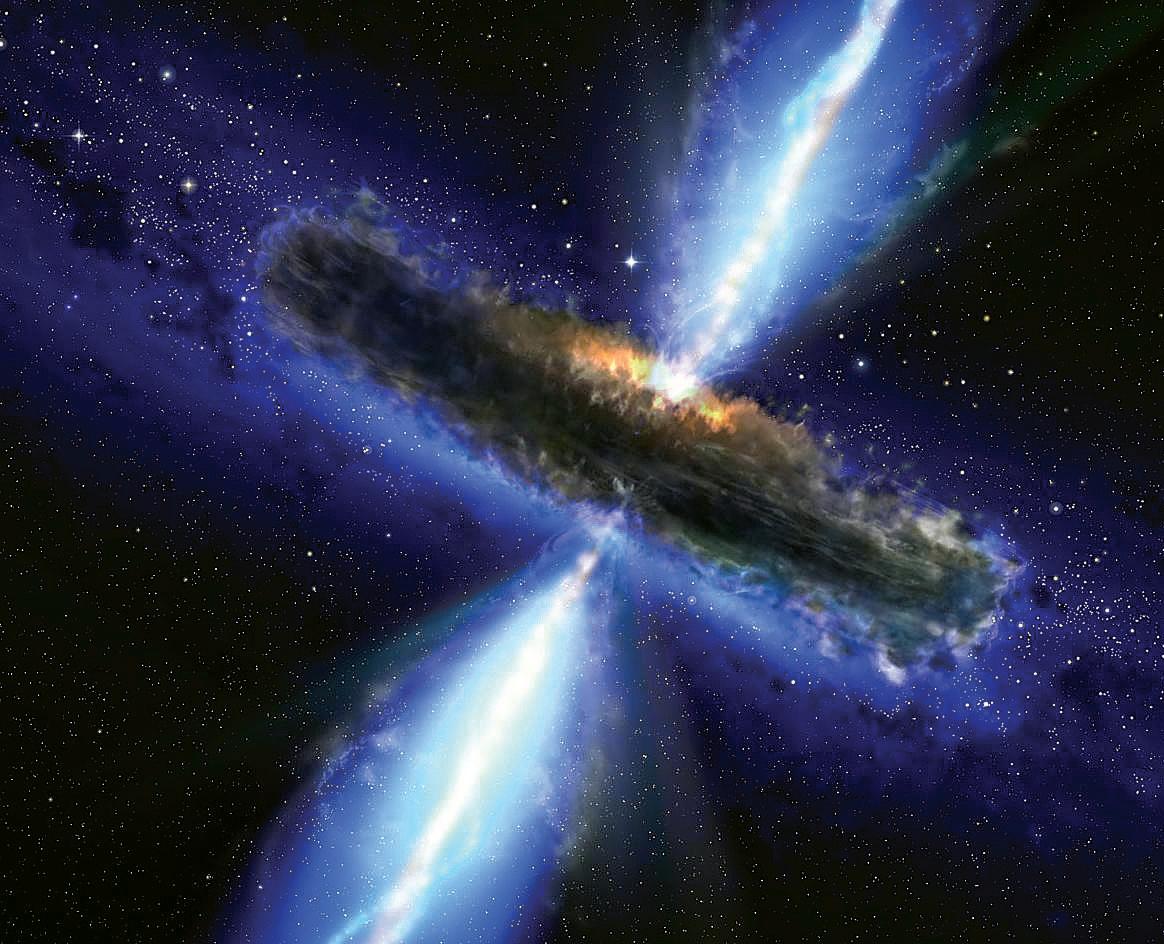
Both groups of astronomers studied a particular quasar called APM 08279+5255, which harbours a black hole 20 billion times more massive than the sun and produces as much energy as a thousand trillion suns.
Astronomers expected water vapor to be present even in the early, distant universe, but had not detected it this far away before. There’s water vapor in the Milky Way, although the total amount is 4000 times less than in the quasar, because most of the Milky Way’s water is frozen in ice.
Water vapor is an important trace gas that reveals the nature of the quasar. In this particular quasar, the water vapor is distributed around the black hole in a gaseous region spanning hundreds of lightyears in size (a light-year is about six trillion miles). Its presence indicates that the quasar is bathing the gas in X-rays and infrared radiation, and that the gas is unusually warm and dense by astronomical standards.
Although the gas is at a chilly minus 53 degrees Celsius and is 300 trillion times less dense than Earth’s atmosphere, it’s still five times hotter and 10 to 100 times denser than what’s typical in galaxies like the Milky Way.

Measurements of the water vapor and of other molecules, such as carbon monoxide,
suggest there is enough gas to feed the black hole until it grows to about six times its size. Whether this will happen is not clear, the astronomers say, since some of the gas may end up condensing into stars or might be ejected from the quasar.
Matt’s team made their observations starting in 2008, using an instrument called ‘Z-Spec’ at the California Institute of Technology’s Submillimeter Observatory, a 10-metre telescope near the summit of Mauna Kea in Hawaii.
Follow-up observations were made with the Combined Array for Research in Millimeter-Wave Astronomy (CARMA), an
array of radio dishes in the Inyo Mountains of Southern California.
The second group, led by Dariusz Lis, senior research associate in physics at Caltech and deputy director of the Caltech Submillimeter Observatory, used the Plateau de Bure Interferometer in the French Alps to find water.
In 2010, Dariusz’s team serendipitously detected water in APM 8279+5255, observing one spectral signature. Matt’s team was able to get more information about the water, including its enormous mass, because they detected several spectral signatures of the water.
88 www.waternz.org.nz WATER NEW ZEALAND
This artist’s concept illustrates a quasar, or feeding black hole, similar to APM 08279+5255, where astronomers discovered huge amounts of water vapor. Gas and dust likely form a torus around the central black hole, with clouds of charged gas above and below. X-rays emerge from the very central region, while thermal infrared radiation is emitted by dust throughout most of the torus. While this figure shows the quasar’s torus approximately edge-on, the torus around APM 08279+5255 is likely positioned face-on from our point of view.
PHOTO COURTESY OF: NASA/ESA
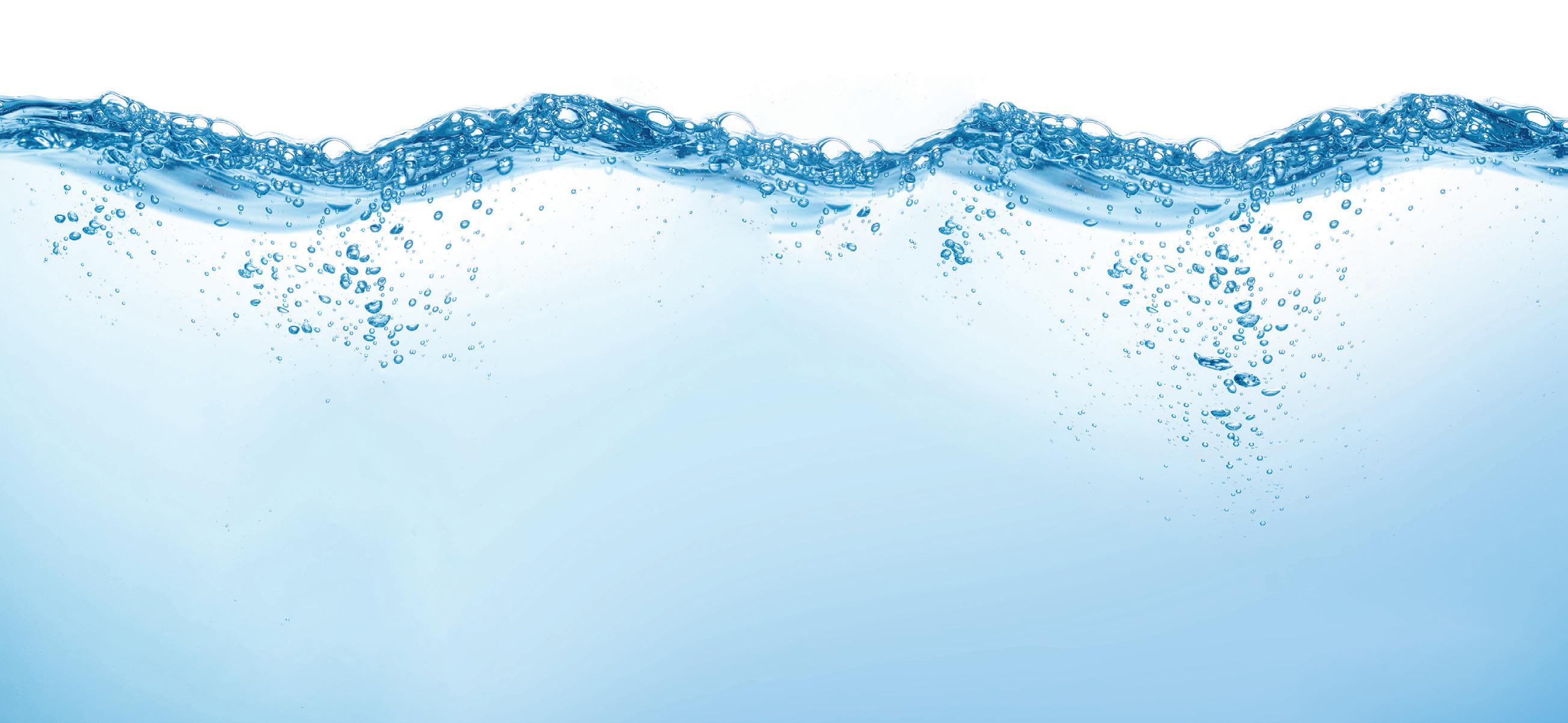










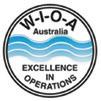



WORLD’S LARGEST SUPPLIER OF UV-C LED DISINFECTION SYSTEMS PearlAqua Deca™ Whole house PearlAqua Micro™ Point of use aquisense.co.nz • sales@aquisense.co.nz • 09 213 7191 PearlAqua Tera™ Municipal Safe drinking water without the use of harmful chemicals THE FUTURE IS MERCURY-FREE! LED UV-C IS HERE! Certified by NSF International against NSF/ANSI 55 AMI Labour savers: 4 Minimum maintenance 4 3 year electronic warranty 4 Minimum down time 4 Pre-factory calibrated - plug & play 8”to18”≈7.5m3/Dayto30m3/Day Complete drinking water monitoring systems AMI Turbiwell (Turbidity) AMI Codes-II CC Analyser (Chlorine) AMI SAC254 (UVT/Organics) AMI Trides (Chlorine) Drinking water, waste water, recycled water and environment monitoring Swiss Design Swiss Manufacture Swiss Quality Swiss Reliability We are proud members of the below associations: Other parameters we can measure: Total Alkalinity • Aluminium • Ammonium • Colour • Total Hardness COD (Permanganate) • Chloride • Total Iron (Dissolved) • Manganese • Phenol SWAN Analytical New Zealand Ph: 09 213 7191 • sales@swan-analytical.co.nz swan-analytical.co.nz Coming Soon! AMI Solicon 4 Analyser (with Delta T) (Conductivity)
Plan to reshape the
South East Queensland water cycle

As the deadline for achieving net zero by the 2032 Olympic Games hovers just one decade away for South East Queensland, one water utility has launched its plan to help meet this goal while also creating a secure water future – a plan that leans heavily into engendering a more circular water cycle. By Cecilia Harris
Urban Utilities’ water leadership plan, called Our Water Way, outlines the role the utility and its customers will play in ensuring a plentiful, affordable and diverse water supply for the future, along with the steps the utility will take to establish itself as a leader in environmental stewardship.
Urban Utilities executive leader of integrated solutions Chris Bulloch says the new plan is keenly focused on achieving and protecting liveability for South East Queensland communities, and making sure the utility continues to enrich people’s lives through its services.
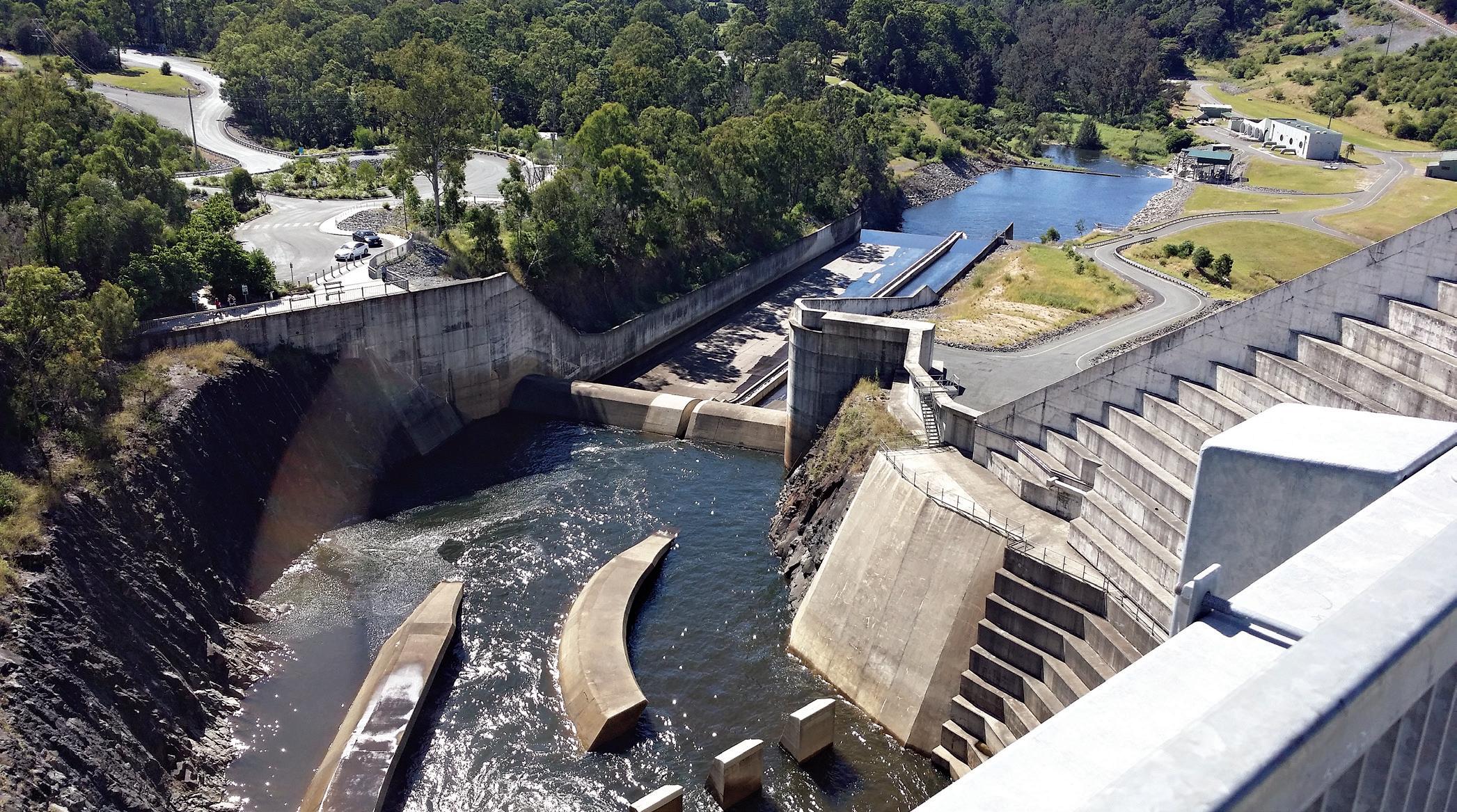
“Water is at the heart of our much-loved lifestyle in South East Queensland. Our quality of life – our jobs, businesses and our communities – depend on it. Water security is about having enough water for everyone including homes, business, industry and agriculture now, and into the future,” he says.
“We can’t take water for granted. Although we’re no longer in drought, our population is expected to grow by two million people over the next 25 years and our climate is changing, which will mean more and longer droughts in the future.
“At Urban Utilities, we’re planning well ahead to ensure water security for our region for generations to come. We’ve developed our water leadership plan, Our Water Way, which will ensure a safe, reliable and sustainable water future for the communities in our service region.
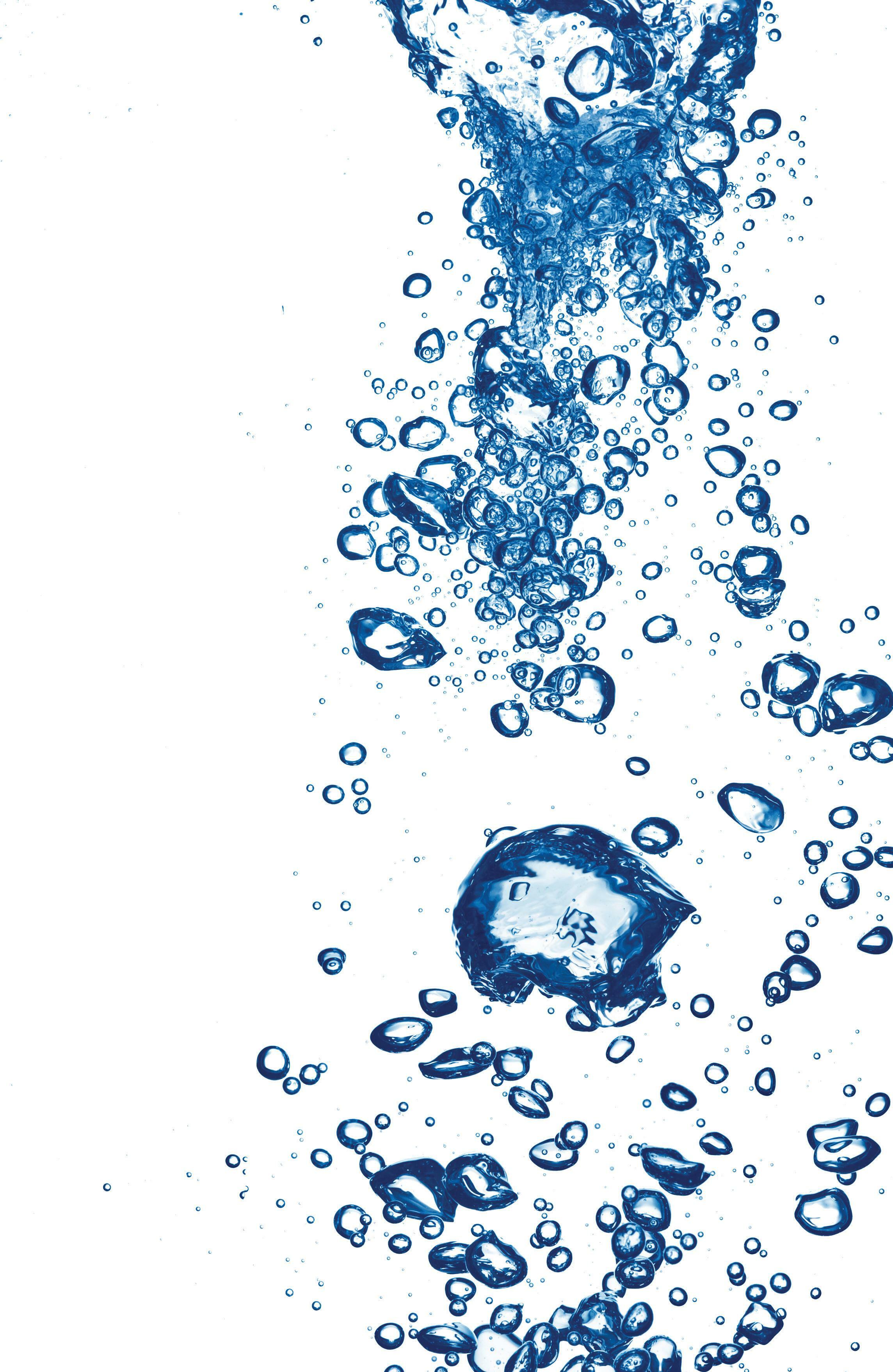
“It harnesses the opportunities and challenges before us, so we have the water we need to maintain the lifestyle we love. And we want to make sure that we can provide plentiful water that’s also affordable.
“Our plan also outlines our environmental leadership responsibilities and that’s something we take very seriously.”
90 WATER NEW ZEALAND AUSTRALIA
The main drinking water supply for the Gold Coast region, the Hinze Dam was originally constructed in 1976. Raised in 1989, it was again upgraded in 2011 doubling its capacity to provide increased water security and flood mitigation.
Water, now and tomorrow

Chris says the utility’s water leadership plan has two overarching focuses, including caring for water we have today and creating the water we need for the future.
“We all have a role to play in caring for the water we have today, and I think about all the great work that Queenslanders have already done. We’ve retained many of the water-wise behaviours we learned during the Millennium Drought and as a community we’ve reduced our water usage significantly.
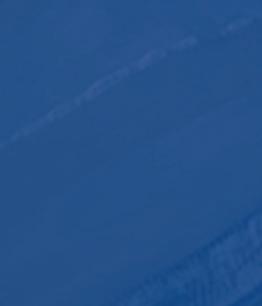
“This work has put us in a great position as we go forward. We are already quite used to conserving water, which is all about caring for this precious, finite resource. But there are plenty of avenues for taking this further, including supporting our customers further in their water-wise journey.”

When talking about creating the water needed for the future, Chris says it would mean increasing water reuse and looking to other more resilient sources of water to help supplement drinking water supplies.


As part of this approach, Urban Utilities is focused on increasing its use of recycled water for industry, agriculture and irrigation.
“We’re already supplying recycled to water customers right across our region, including one of Australia’s most iconic race tracks, the Kilcoy Race Track. The recycled water ensures the track is lush all year round, whatever the weather. It’s a place that connects people and increases the economy of the town.
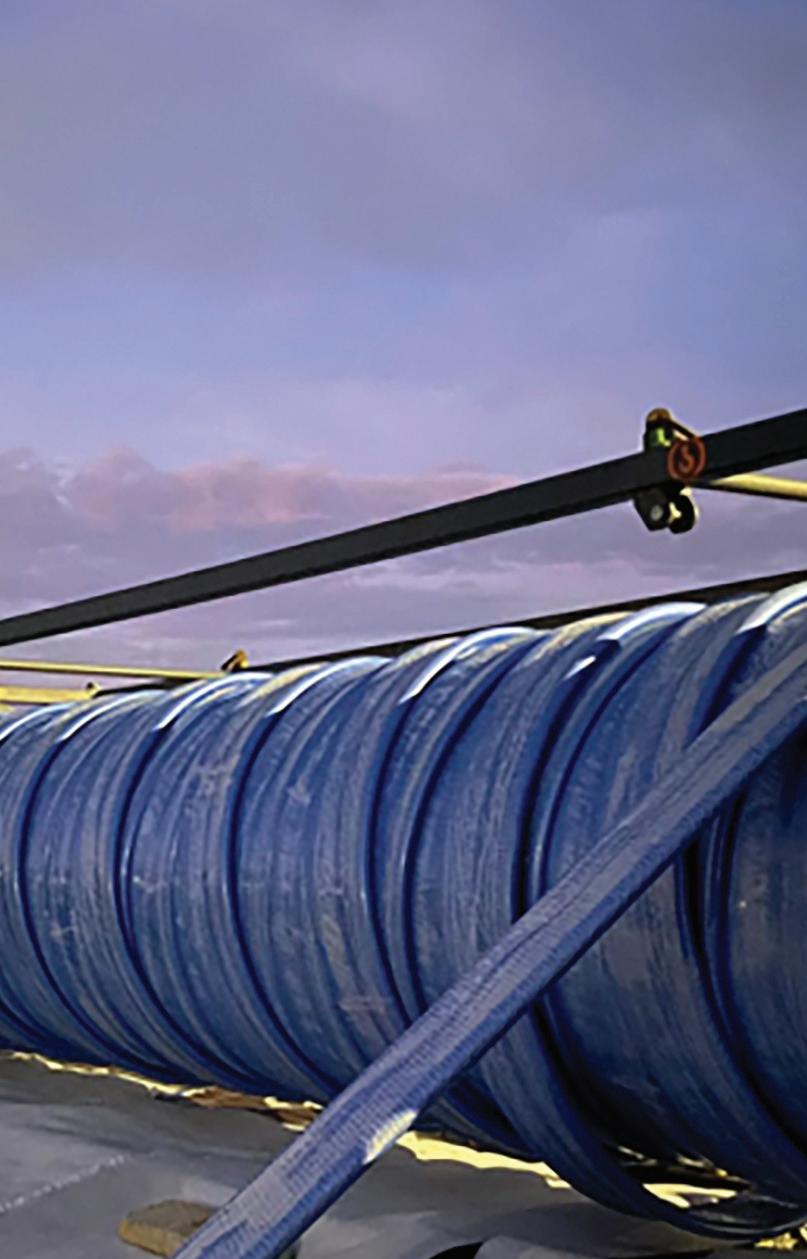
“Circular and sustainable water solutions are good for everybody involved. By supplying recycled water for industry, agriculture and irrigation, we’re easing pressure on our drinking water supplies, reducing nutrients to waterways and delivering benefits for our customers and communities.”
Across the region, creating the water needed for the future was about ensuring a diverse mix of water sources to provide water security.
“We know that dams will continue to be a major drinking water source in South East Queensland, but dams can only store water if it rains when and where we need it. But climate change means we’re more likely to have more and longer droughts into the future, periods of low rainfall and low inflows into our dams, and less water available in our dams, due to factors including increased evaporation.
“We need other options in addition to rainfall and water storage in our dams – it’s important we have climateindependent water sources such as desalination and purified recycled water for a secure water supply in the future.
“South East Queensland already has access to the climateindependent infrastructure built during the Millennium Drought, including Seqwater’s Gold Coast desalination plant and the Western Corridor Recycled Water Scheme. This infrastructure will help safeguard our water supply when we can’t rely on the rain. Diversifying our water sources will be key to becoming more resilient, and the more options we have the better.”
NOVEMBER/DECEMBER 2022 WATER NEW ZEALAND 91
Reshaping the water cycle

As part of its focus on creating the water we need for the future, Urban Utilities also aims to reshape the water cycle from the traditional ‘catchment to sea model’ of water use, to a more circular model that manages water more sustainably.
Chris says the traditional catchment-to-sea water model relies on rain falling over catchments and then using long pipes to move water around our service region.
“This model has served us well in the past, but new advanced technologies, as well as challenges such as climate change, means there is a better approach going forward.
“The cost of installing and owning these pipelines is one of the big drivers of the cost of water. These pipelines also require ongoing maintenance and eventual replacement. We’re aiming to reshape the water cycle to a more circular model that manages water more responsibly and uses it more than once.
“At Urban Utilities, we call this ‘keeping our water closer to home’. This means treating and managing our water closer to where we use it, reducing the need for these long pipelines to move water around our region.
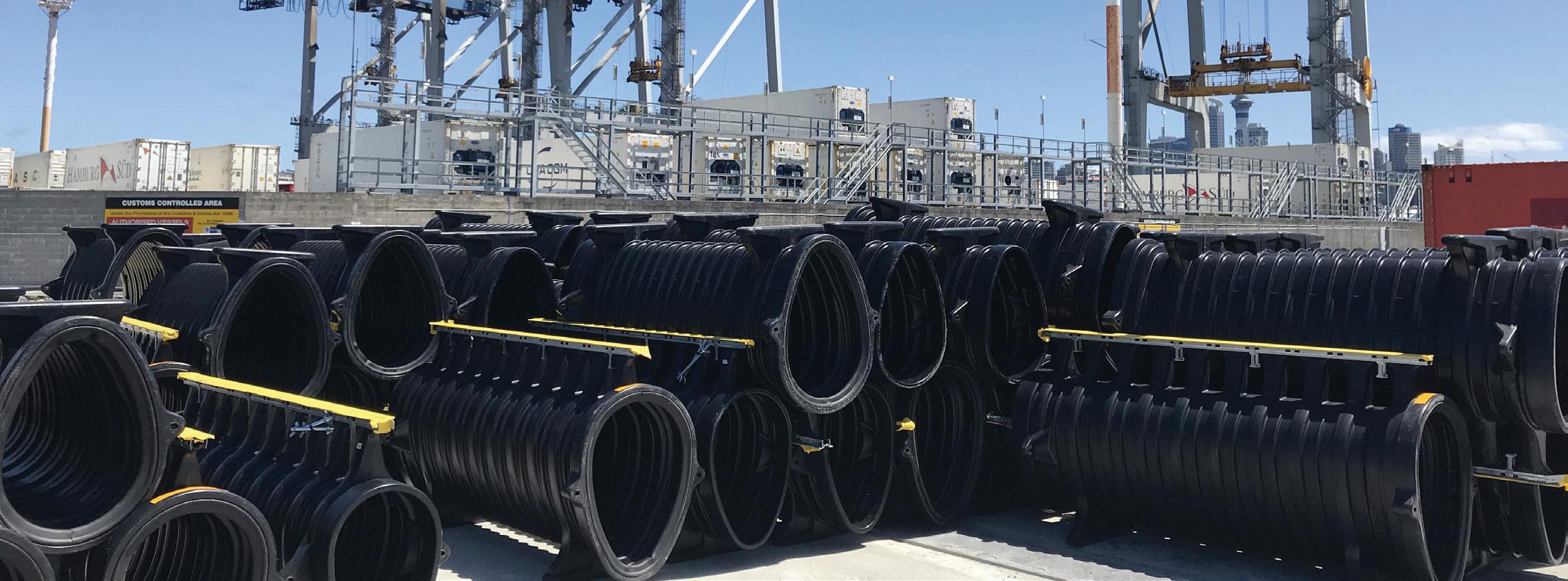
“We’re already exploring opportunities to design and build innovative and sustainable water and wastewater infrastructure for key Olympic and Paralympic precincts that will form part of our network to support activities such as cooling and greening.
“I’m very conscious that we will be on the world stage in 2032 during the Olympic and Paralympic Games.
“We want to do the most we possibly can to contribute to breathable and green buildings and cityscapes, and make sure we have plenty of urban cooling and green spaces in and around our region.”
He says a more circular approach to water management is also a boon for the environment, one of the most important focus areas of the utility moving forward.
“Our waterways connect us to the sea, joining waters in our creeks and streams to the ecosystems of Moreton Bay and the Pacific Ocean. Our environmental leadership focus connects with our overarching strategy around reshaping the water cycle.
“We are focused on how we impact our waterways and the health of our waterways. But we are also focused on devising new and innovative ways of helping to keep our environments healthy and happy.
“Urban water runoff is a big contributor to sediment and nutrient loads in our bays. We plan to work more with our communities and our partners on developing stream bank rehabilitation. And we already have a great digital twin model that we use to monitor our waterways.”
Environmental protection is an important piece of the water leadership plan: “We want to be leaders in environmental stewardship. We intend to achieve net zero, but we also intend to contribute proactively to creating a healthier environment, too”.
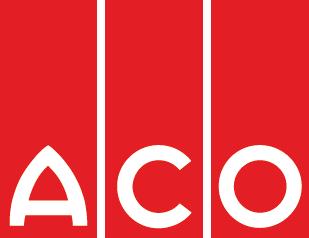

Reprinted with the permission of the Australian Water Association
ACO Qmax® is made from recyclable Polyethylene (PE) and therefore lightweight and easy to handle. The system forms an integral part of any modern, sustainable surface water management solution. It was developed to satisfy the demand for a versatile, high capacity slot drainage system for a wide range of applications involving small to large catchment areas to any load class. Scan the QR Code to find out more!
92 www.waternz.org.nz WATER NEW ZEALAND AUSTRALIA
slot drainage
ACO Qmax
polyethylene
system
Heavy-duty yet lightweight?
ACO Limited · 0800 448 080 · www.aconz.co.nz ACO. we care for water
Ports of Auckland
ABLOY Super Weather proof padlocks are designed to withstand the harshest of environments, and will operate smoothly for many years. ABLOY padlocks are available in both mechanical and electro-mechanical versions, enabling the correct levels of security and protection for your sites.

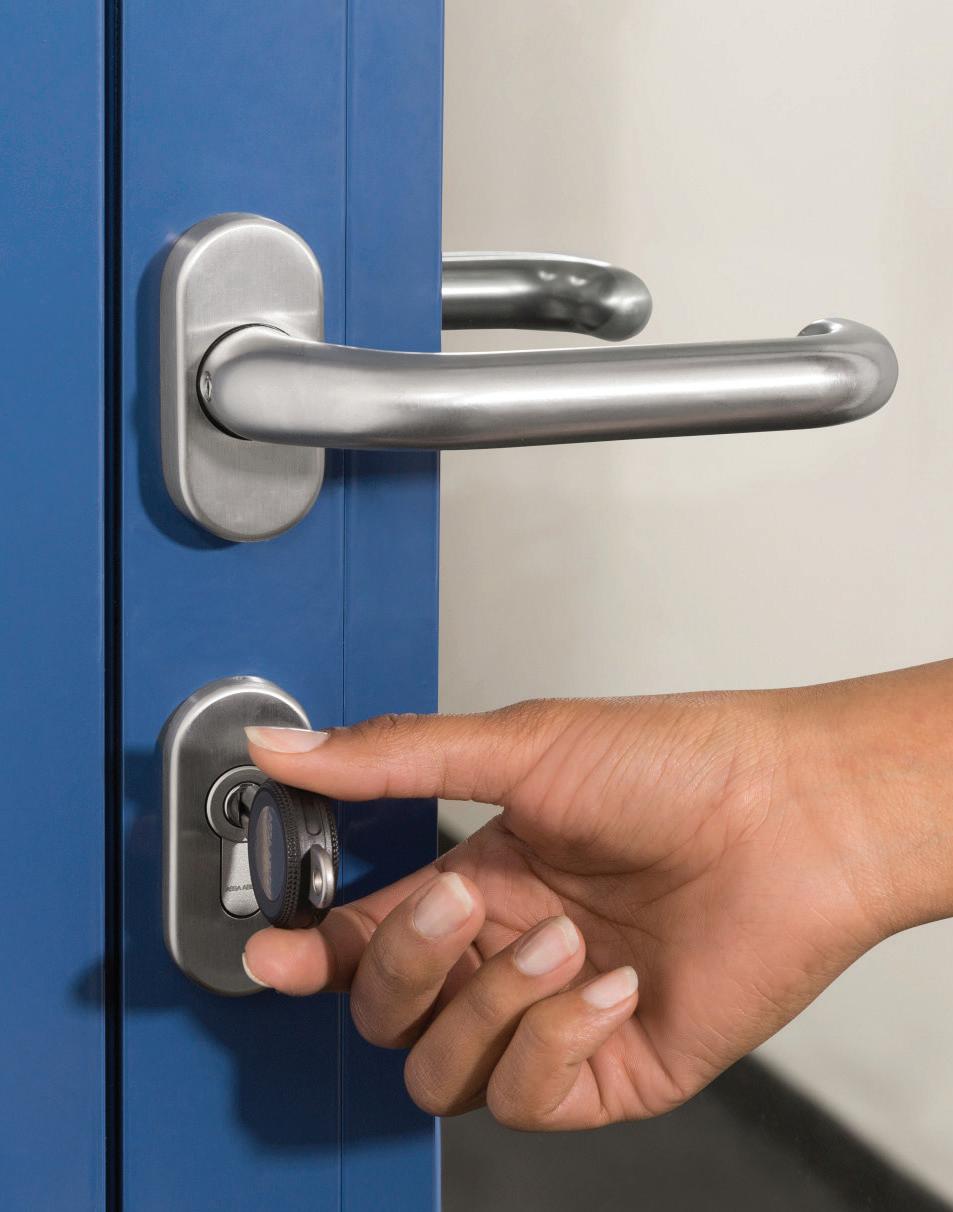
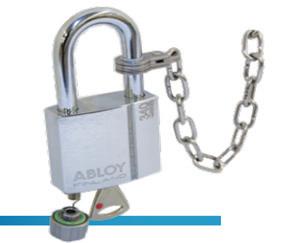
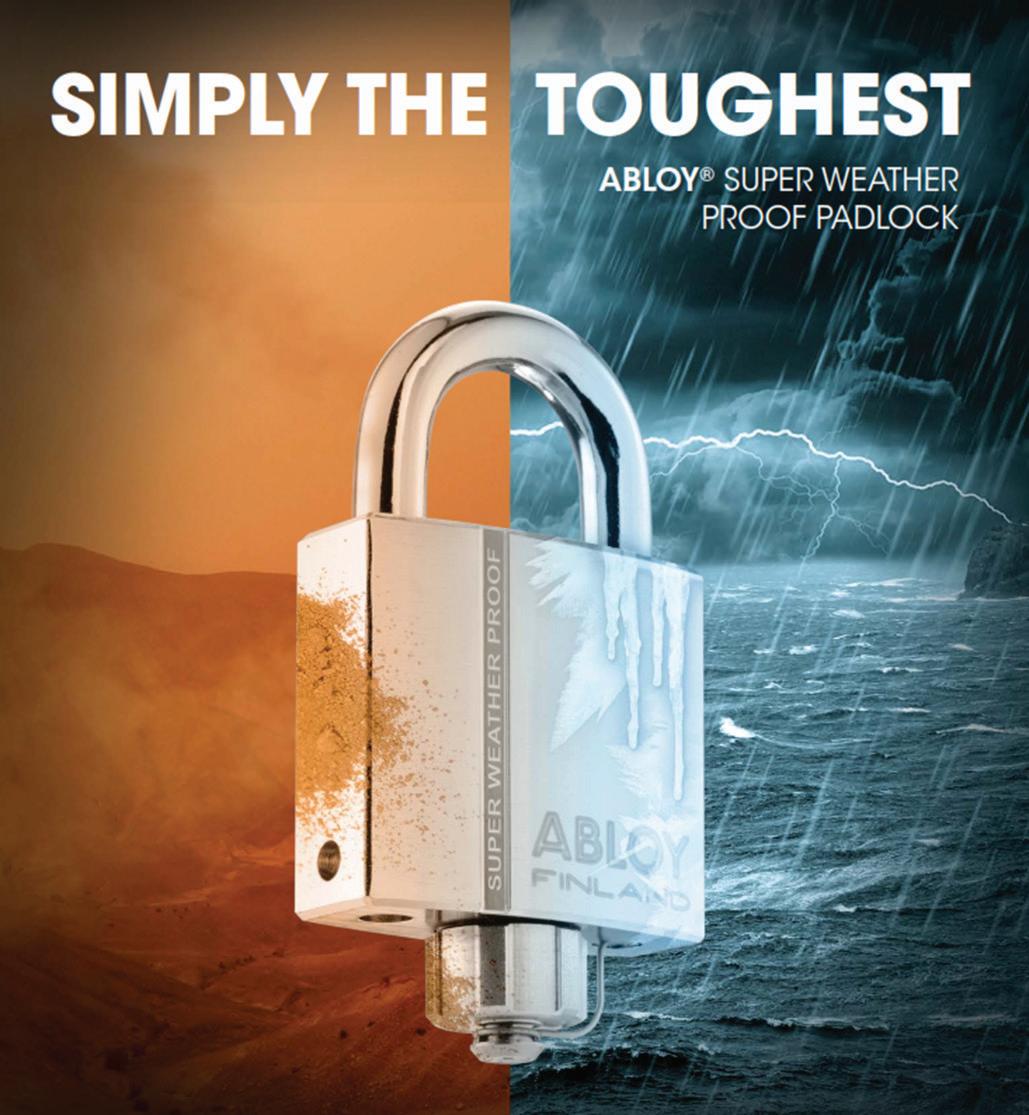


The smarter, electronic way to run key-based access control
eCliq is a wireless access control system which enables schools to regain and maintain control of their locking system.
It may be surprising that one of the most sophisticated, up-todate access and security devices looks, at first glance, like one of the oldest. Based on the traditional lock and key, eCLIQ retrofits seamlessly into existing locking systems; cylinders are made to the same dimensions, and all electronics are self-contained, powered by a battery within the key.
• Lost keys – Block or eliminate any lost or stolen keys to maintain the integrity of your system without having to replace the locks
• No wiring – Gain the functionality of access control without the hassle and expense
• Audit trails – See who opened what door and when
• Change access – Easily change a person’s access rights by
Find out how we can help you create more accessible and habitable environments. www.assaabloy.com/nz
Mechanical Highly durable locks which will open first time, every time –regardless of usage ElectroMechanical Advanced electronics give access control functionality without the need for a power supply Padlock Accessories
the toughest ABLOY® Super weather proof padlock
Simply
Federal Court throws out pipeline permit for Cadiz Water Project
The project threatened to drain the Mojave Desert of 16 billion gallons of water annually, an unsustainable outflow the plaintiffs asserted would have disastrous impact on Tribal Nations, local communities, and nearby protected lands like Mojave Trails National Monument and Mojave National Preserve.

The court’s ruling vacates the pipeline rights-of-way issued to Cadiz and grants the Bureau of Land Management (BLM) motion for voluntary remand following a lawsuit filed by the Native American Land Conservancy and the National Parks Conservation Association.
The pipeline rights-of-way were issued to Cadiz by the BLM in the last days of the Trump administration.
The court agreed with the Biden administration that the prior administration fast-tracked approvals of the pipeline permit without required tribal consultation or review of environmental impacts on national parks, national monuments, and sacred sites. In its filing with the court, the Biden administration noted that the “legal errors were serious”.
In its ruling, the Court stated:
“This is not a scenario in which an agency – for example –compiled a full NEPA record, came to a well-supported opinion, and then reversed its opinion mere months later. Here, there is no Environmental Assessment (EA), Environmental Impact Statement (EIS), or accompanying record of decision, for example – only what appears to be a rushed, cursory decision to grant the rights-of-way under categorical exclusions. Cadiz’s argument that the legal errors are illusory and thus frivolous is unavailing.
“In light of the fact that no complete reviews under the relevant statutes were undertaken for Cadiz’s application, the Court would conclude that vacatur is particularly proper here because the grant of the rights-of-way have not benefited from a full agency review and decision-making process. The BLM’s action below was a decision not to engage in review. None of Cadiz’s arguments persuade the Court that vacatur is improper here.”
Lisa Belenky, a senior attorney at the Center for Biological Diversity says she is pleased the court vacated this illegal Trump-era decision, which would have allowed this massive water pipeline to move forward without the necessary environmental review.
“Cadiz’s water-privatization scheme would dry up irreplaceable desert springs and seeps that are crucial to wildlife, even more so now because of climate change. These public lands and resources must be protected.”
Cadiz’s project would pump water from an aquifer under the Mojave Trails National Monument and near the Mojave National Preserve.
Hydrologists from the U.S. Geological Survey have found the pipeline’s water use unsustainable. They also found that Cadiz’s

privately funded study vastly overstates the aquifer’s recharge rate.
“Cadiz has failed to materialize for decades because it would be a major environmental justice disaster, inflicting harm on tribal nations and California communities that are already feeling the impacts of drought and climate change,” said Chris Clarke, associate director of the National Parks Conservation Association’s California desert programme.
When the Trump administration acted to ensure the pipeline permit would be approved before the change in presidential administrations, it blocked legally required review by scientists at the National Park Service and U.S. Geological Survey.
Federal scientists have previously found that the Cadiz project would extract up to 25 times more groundwater than is naturally recharged. This unsustainable pumping would severely damage resources throughout the Mojave Desert, including habitat for rare desert wildlife such as tortoises and bighorn sheep.
Anthony “Butch” Araiza, a lifelong Rialto resident who worked for the West Valley Water District for 52 years before retiring, says a study published in the Journal of Environmental Forensics confirms that Cadiz pumping may well damage Bonanza Spring, one of the most important water sources in the whole Mojave Desert.
“In conducting that study, independent scientists measured the chemical makeup of Bonanza Spring, and compared it to Cadiz’s well water, the large underlying aquifer that Cadiz proposes to pump from, and a handful of small, local springs.
“The results: unlike the small springs, which are fed by local rainfall and share the same chemical fingerprint, Bonanza Spring shares its tell-tale fingerprint with Cadiz’s well water and the underlying aquifer. The only valid way to interpret these results is that Bonanza Spring and Cadiz’s wells are connected to the same aquifer.
“That means that Cadiz’s pumping stands to dry up Bonanza Spring, depriving desert animals, plants and people of a crucial water source.”
In November 2020, the National Congress of American Indians adopted a resolution opposing the Cadiz project, joining numerous California desert tribes in this fight for indigenous rights and cultural survival.
“This Court ruling blocks the Cadiz project from harming the sacred ancestral lands and water sources that tribal peoples in the California desert region depend greatly on for their spiritual and cultural practices and way of life,” said Michael Madrigal, president of the Native American Land Conservancy.
“We thank the Biden administration for its support and recognizing that our peoples have been here since the beginning of time and that we continue to visit, gather, and utilize these special areas in the desert for our cultural survival.”
94 www.waternz.org.nz
A federal court has ruled to scrap an important pipeline permit for the controversial Cadiz water mining project, siding with the Biden administration and tribal communities
WATER NEW ZEALAND INTERNATIONAL


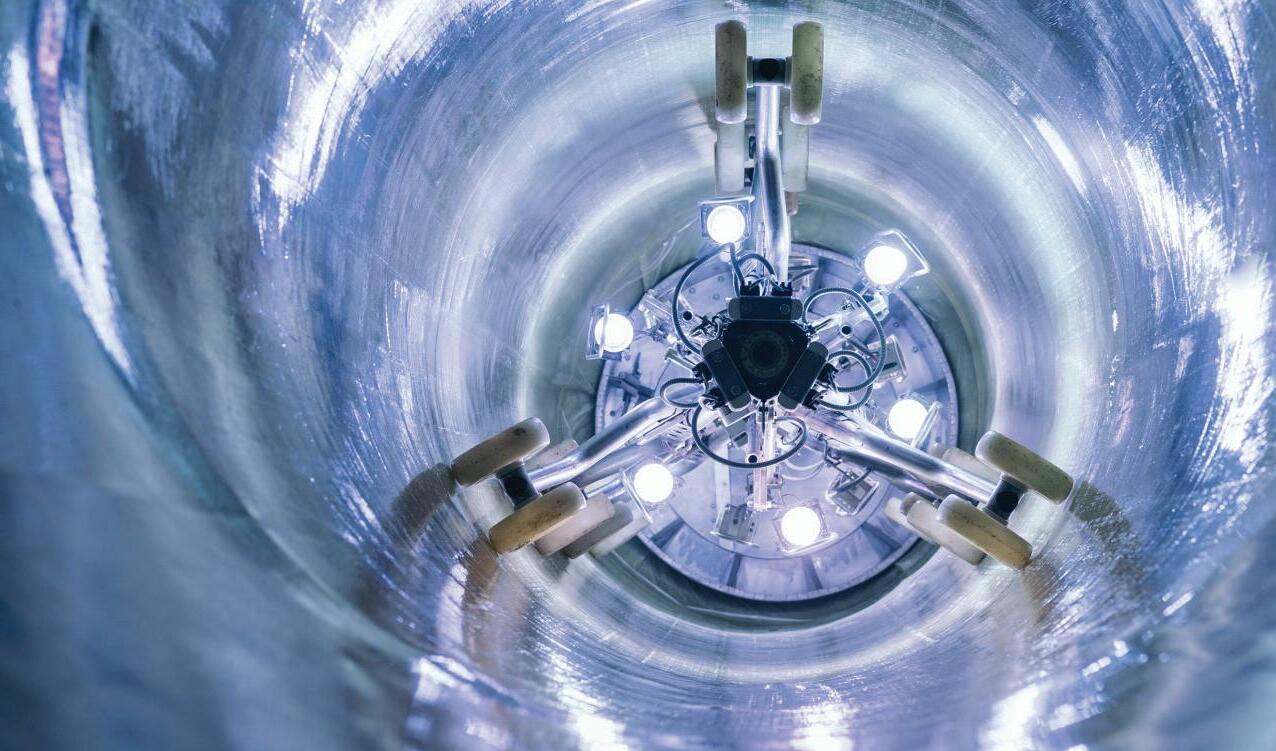

NOVEMBER/DECEMBER 2022 WATER NEW ZEALAND 95 Formerly NDA, our new name Tira is Maori for steel - the core material at the heart of our business. It reflects our long heritage and commitment to our country, people, partners and environment. Tira is the largest group of stainless steel fabrication companies in New Zealand. Strengthened by innovation, unrivalled knowledge and engineering expertise, we design, develop and deliver bespoke stainless steel and alloy solutions across multiple industries, including Water. With our world leading spiral tank building technology we’ll build you an API 650 or AWWA compliant fully welded stainless tank on site in under 4 weeks • Fully welded stainless steel construction up to 30m diameter • Importance Level 4, 100 year design life • Greatly reduced whole of life cost due to minimal ongoing maintenance requirements Bringing Steel to Life 0508 500 632 sales@tira.co.nz www.tira.co.nz
Robots in reservoirs
Using a robot to clean and inspect a water tank or other water storage facility eliminates the risks associated with putting a human diver underwater, avoids the need to turn off the water supply or drain the facility, can save a significant amount of money, and allows a detailed routine maintenance inspection using sophisticated technology to pick up issues. By
Until recently, the search for a tank-cleaning robot which does all this effectively has been a bit hit and miss, with the technology often performing better in concept than in reality.
Now, highly sophisticated robotic technology is gaining traction around the world and a number of organisations are adopting it to clean water storage facilities by removing organic, bacteria-attracting sediment and, at the same time, undertake detailed asset condition inspections without interrupting water supply.
Traditional reservoir cleaning methods have relied heavily on specially-trained commercial divers to enter water storages on a regular basis to clean them and remove sediment. It’s a high risk activity that typically requires the asset to be taken offline.
By using a fleet of intelligent robotic craft that can simultaneously inspect the tank or reservoir for integrity, conduct other maintenance checks, and identify issues using a range of sophisticated visual and non-destructive testing techniques, the risks and downtime are removed, and it can be a more cost-effective option.
Singapore has been one of the countries at the forefront of the search for a viable robotic technology able to do the work at least as well as a person.
In 2020, Singapore’s national water agency, the Public Utilities Board (PUB), released its inaugural Global Innovation Challenge
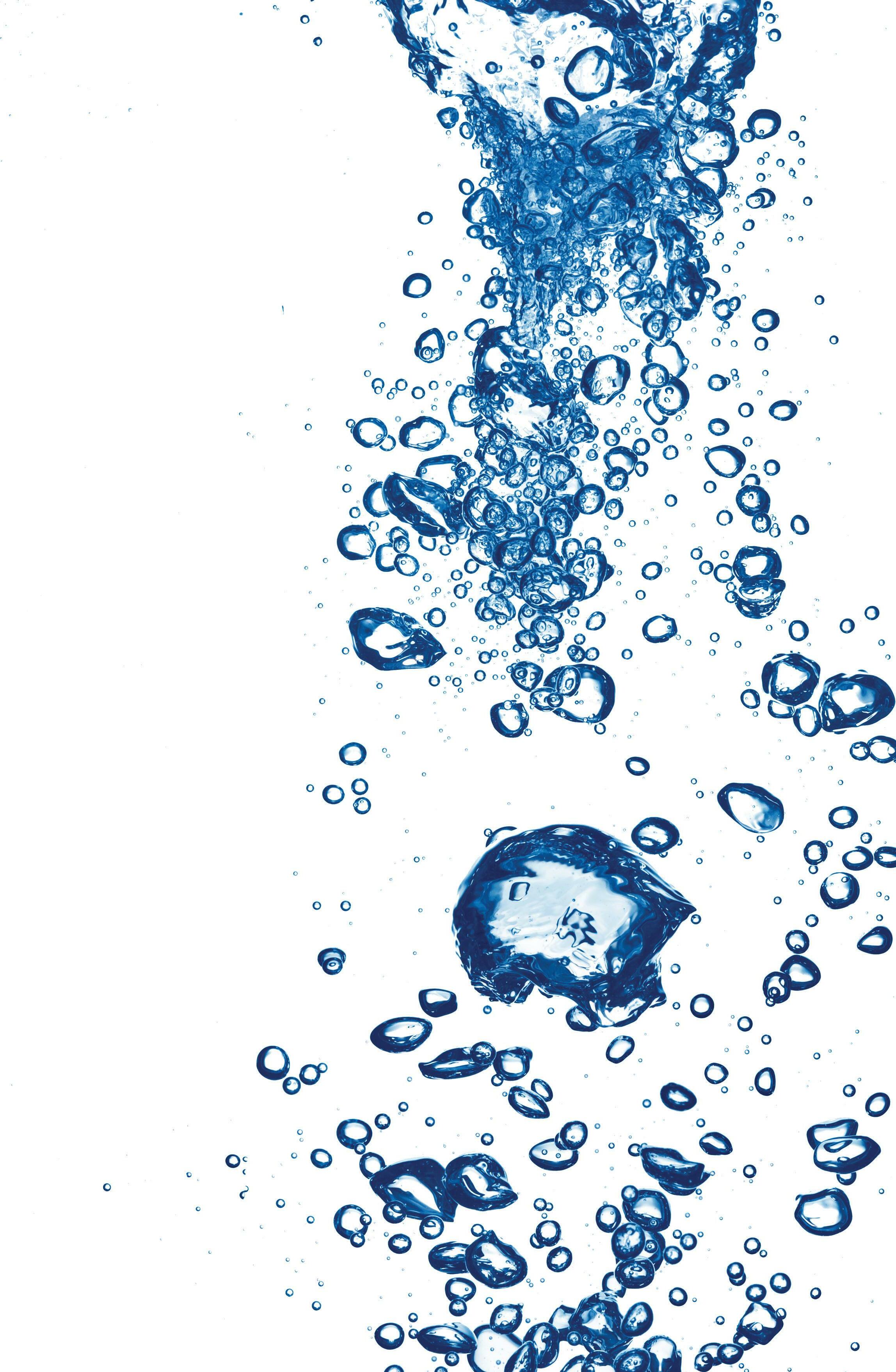

calling on the global water community to solve four problems PUB itself had not been able to resolve despite significant effort. One of these challenges was the effective cleaning of potable water tanks using robots.
With over 100 entrants from around the world, Australia’s Watertight Robotics ultimately won the challenge, receiving prize money to undertake a demonstration of their winning technology in Singapore.
Back in 2016, Watertight Robotics decided to buy and trial robotic tank cleaners. It found about 14 companies that claimed to make suitable robotic devices, however, as it quickly became apparent only four of them had actually constructed a robot.
Things went further downhill when the subsequent trials found none of the seven robots it had purchased from these four manufacturers was up to the task.
The company spent a year of intensive testing in real world conditions –systematically measuring key metrics such as turbidity generation, water consumption, clean quality, operator safety, cost of cleaning, and more. In the end, it reached the conclusion none of the imported robotic products were viable in the Australian market.
Among other things, the overseas robots had major issues with creating turbidity (stirring up sediment) with the flow-on effects of reducing chlorine levels
Heather Douglas
and allowing pathogens to replicate.
Back at square one, but with a great deal more insight into the requirements and a real world understanding of the work needed, Watertight Robotics created its own robotics lab and started designing and building robots to clean and inspect drinking water tanks to very high standards without impacting water quality.
Focusing on water quality as the primary consideration for the design and construction of its fleet, the company conducted multiple trials with leading Australasian utilities, showing robotic technology can reliably and consistently provide reservoir cleaning and inspection with no measurable impact on key water quality parameters such as turbidity and chlorine residuals.
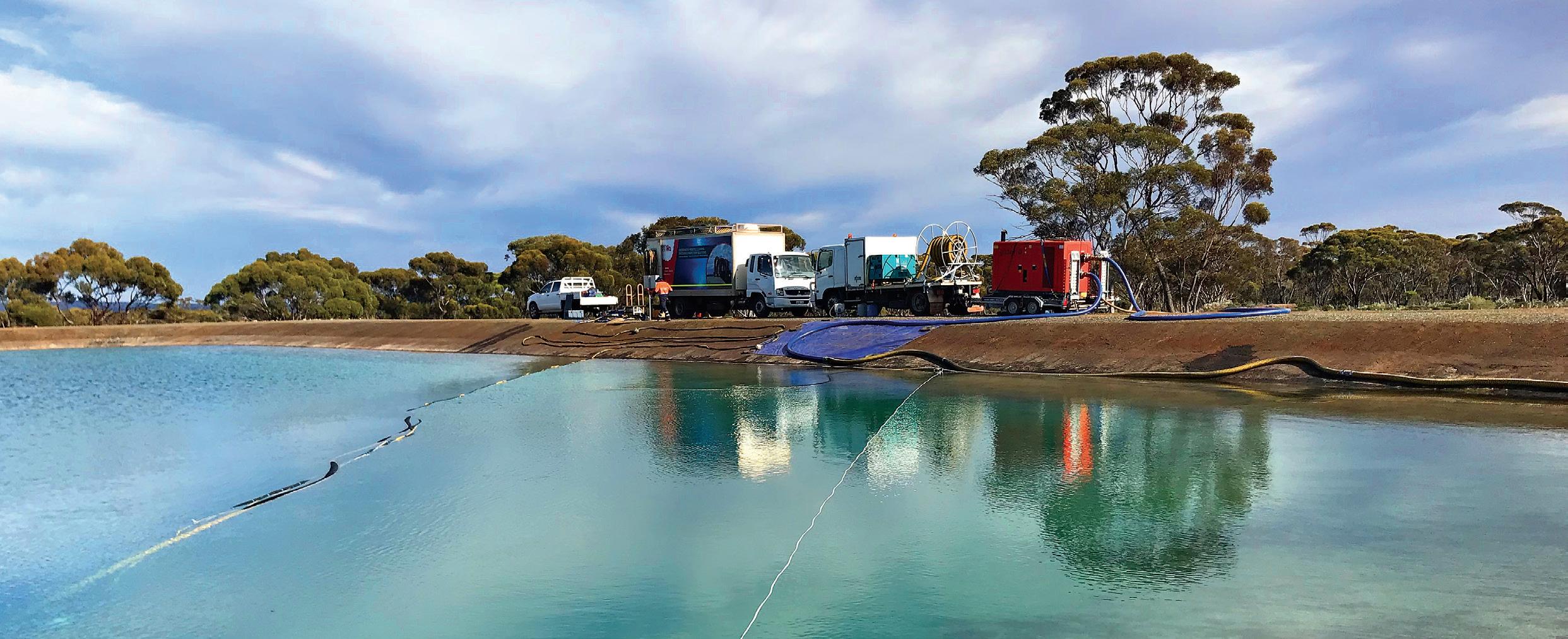
It also demonstrated the use of robotic systems could lower the cost of cleaning an asset and eliminate traditional risks associated with diving or confined space entry while obtaining a range of highquality asset data in a systematic fashion.
As the robotic cleaning market matures, adopters have realised not all robots are equal and it pays to do some research before committing to an expensive and often longterm solution.
While the quality of clean is an obvious criterion for evaluation – and some robots are better at this than others – it turns out
96
WATER NEW ZEALAND TECHNOLOGY
that some can also consume as much as 70 percent of the tank volume when cleaning an asset.
Keeping an eye on water consumption is therefore also important, with more efficient equipment typically using around seven percent to clean smaller to medium sized assets and some robotic cleaners demonstrating potential to consume only three percent of the volume on larger assets.
Of course, robots also have non-potable applications such as wastewater, mining, power, and desalination, where they may be used for tasks such as wastewater desludging and maintenance of challenging water assets such as lined ponds.
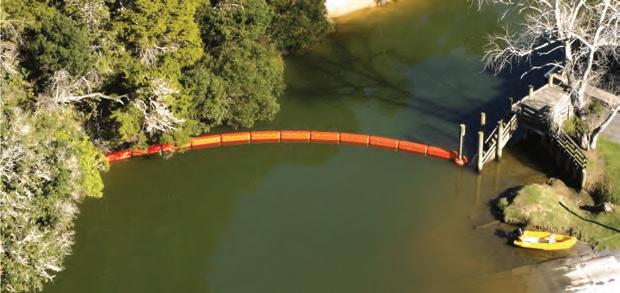
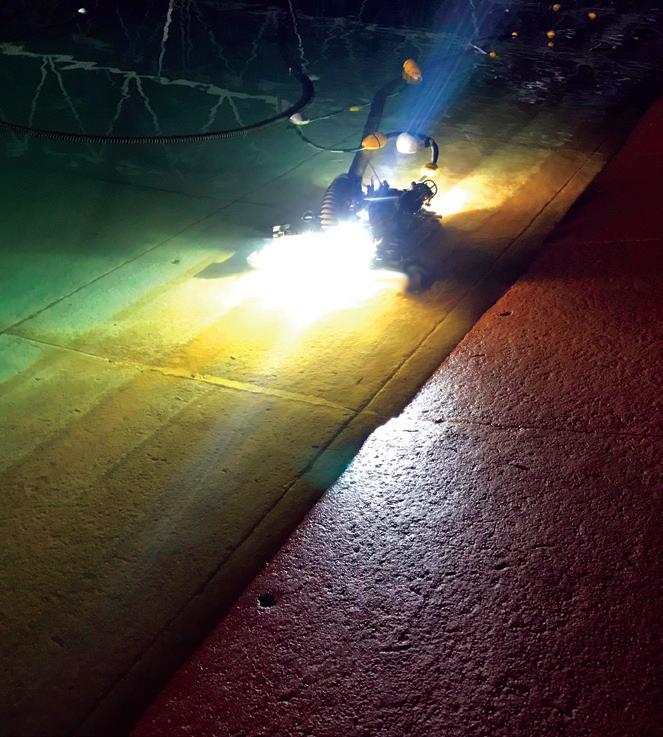
By using a fleet of intelligent robotic craft that can simultaneously inspect the tank or reservoir for integrity, conduct other maintenance checks, and identify issues using a range of sophisticated visual and non-destructive testing techniques, the risks and downtime are removed, and it can be a more cost-effective option.
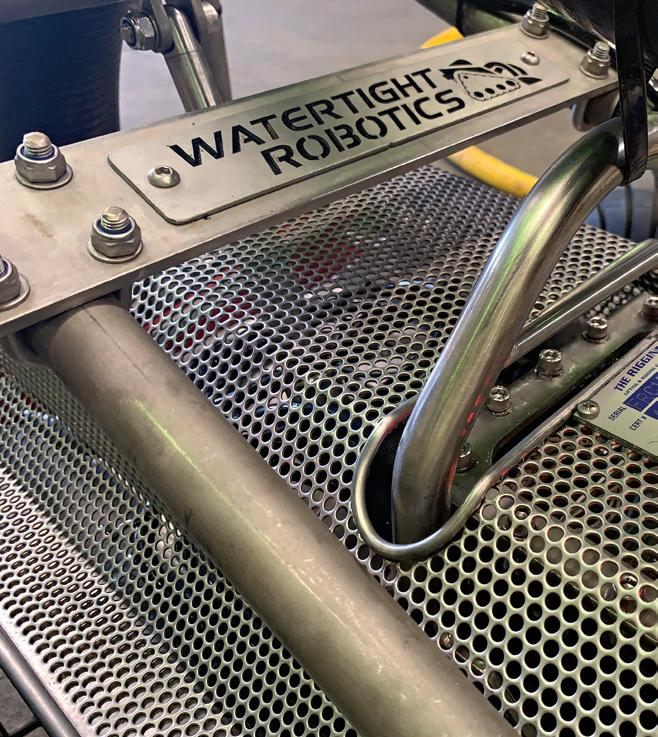
However, when a robot is introduced into a drinking water asset, it’s important that every piece of equipment is suitable for use in potable water.
For instance, equipment should use oilfree designs and be dedicated solely for use in potable water. All equipment should be properly marked to indicate its purpose and should be thoroughly cleaned and
chlorinated prior to each use, supported by a robust quality assurance regime.
Providing a high-quality service using robotic technology relies as much on the people using the equipment as it does on the machines themselves.
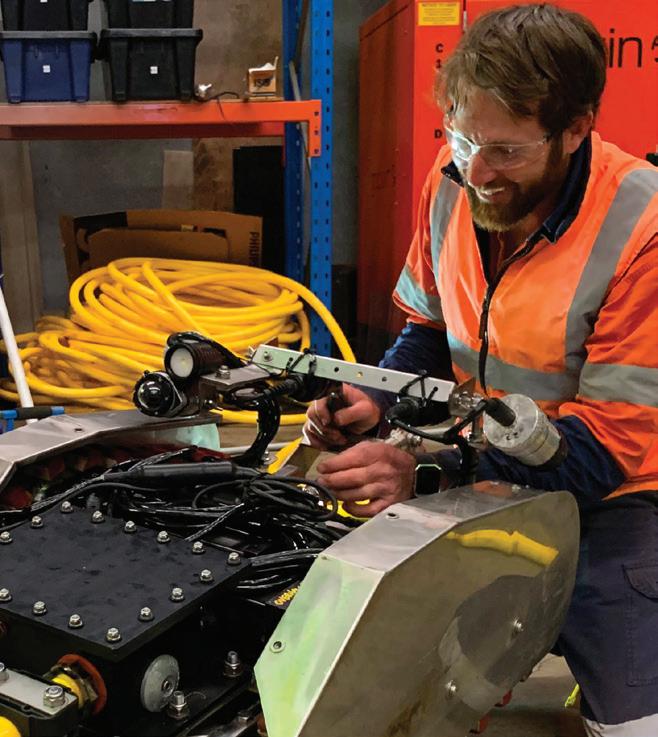
While early adopters have been using robots with differing degrees of success in water storage facilities in this part of the world for a while now, the huge strides which have recently been made in development has seen Australasia firmly cementing its place as a leader in the rapid evolution of robotic water storage cleaning equipment as a viable, effective and costefficient mainstream option.
MARINAQUIP
Barrier Floats
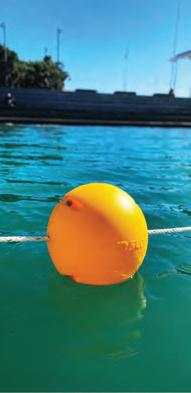
• Adaptable for use in lakes, rivers, dams, marinas, harbours and hydro-electrics
• Debris collection, separation, segregation, delineation on any body of water
• Safety barrier for boats, commercial craft, aquaculture and recreational areas
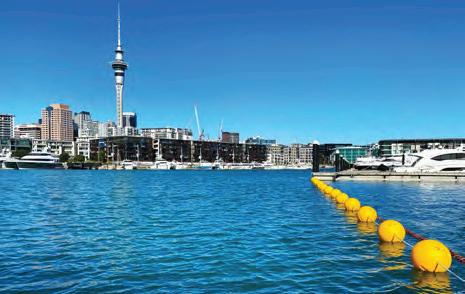
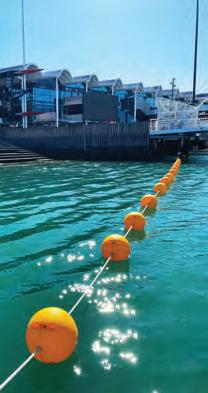

NOVEMBER/DECEMBER 2022 WATER NEW ZEALAND 97
• Spheres • Debris Booms Made in New Zealand www.marinaquip.com





98 www.waternz.org.nz
Responding to the Ukraine conflict
Disease can spread fast in a time of Covid and war, and the Ukraine is no different. Story supplied by Oxfam.
When crisis hits and large groups of people move or congregate to one place in an effort to flee to safety, one of the biggest issues people face is having access to clean drinking water, and access to water for sanitation and hygiene.

Since the beginning of the war in Ukraine more than four million people have fled the country, leaving behind family and friends, their houses and, until recently, their comfortable and safe lives. More than 800,000 refugees crossed the Medyka border into Poland.
Ukrainian families found a warm welcome and easing of their journey onward to their preferred destination in Europe. At the Polish side of the Medyka border crossing a flamboyant mix of volunteers, religious groups and other organisations created a ‘Festival Humantaire’ where new arrivals can find everything they need to survive and much more: from a Polish sim card, toiletries, and a new travel basket for their pet, to wood fired pizza, local soup, and Japanese ramen.
The handwashing point at a registration centre in an old Tesco building.
This chaotic and overwhelming welcome is heartwarming, but at the same time holds severe dangers for the refugees. There is a lack of clear coordination and an overload of unverified information mostly available via QR codes and websites. Without a charged smartphone and internet connection you are lost.
And among the countless benefactors, there are people with insidious intentions that can easily mingle. Sadly, cases of human trafficking and sexual harassment are on the rise.
Oxfam is now well established at these camps, responding and implementing basic sanitation needs, like handwashing stations, toilets for disabled people and showers. Oxfam is collaborating with 11 Polish organisations to meet the growing protection needs as well as water, hygiene, and sanitation (also known as WaSH) challenges.
Most refugees are in transit when they reach Poland. They contact
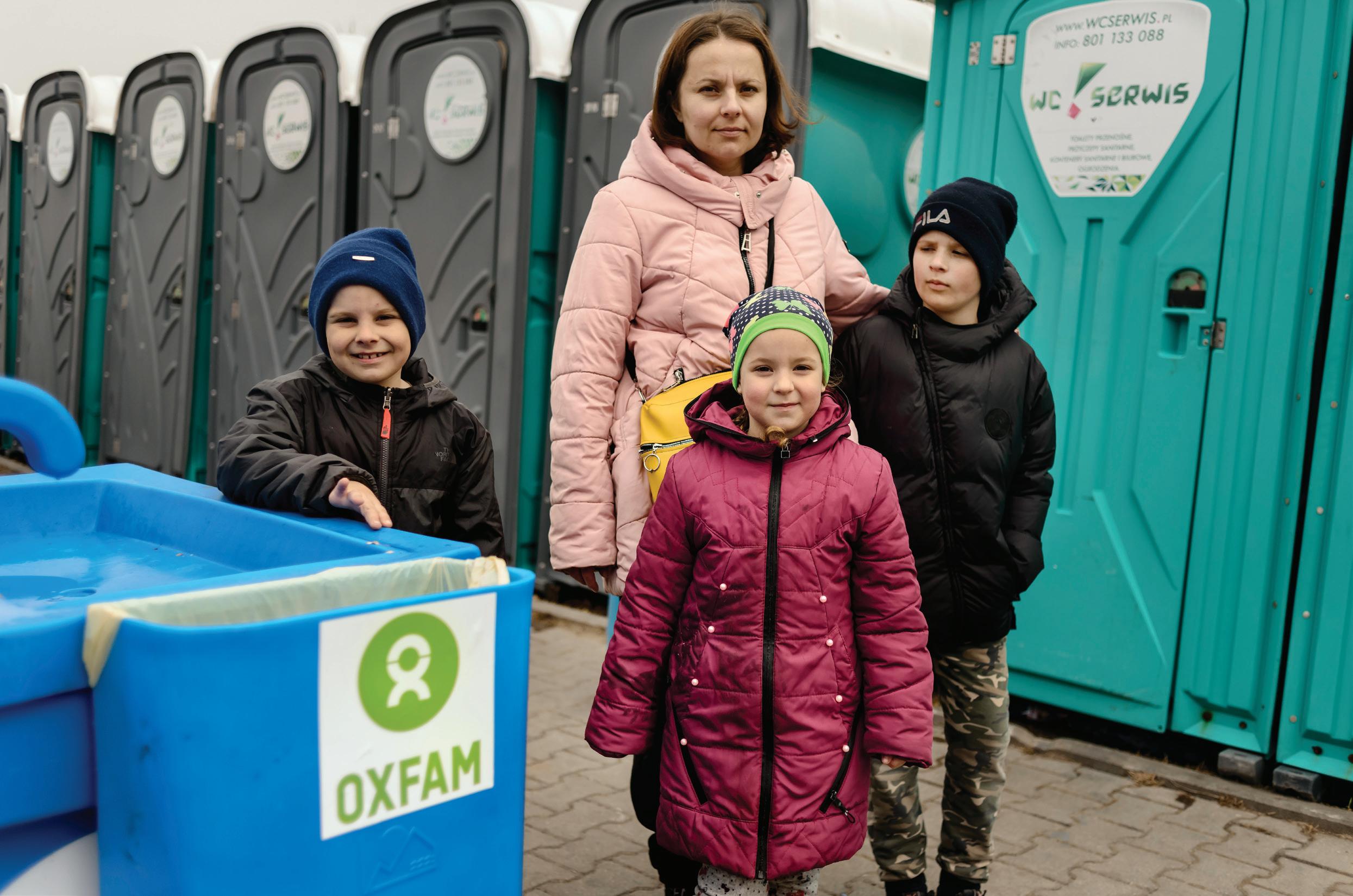
NOVEMBER/DECEMBER 2022 WATER NEW ZEALAND 99
HUMANITARIAN WATER NEW ZEALAND
PHOTO COURTESY OF: TINEKE DHAESE, OXFAM.
family or friends in Europe that are willing and able to host them for the first period, and European countries have opened their borders to take in refugees.
The average time people spend in the reception centres near the border is two days. But in the centre Oxfam has set up, people stay longer because of various reasons. Either they are stuck because of bureaucratic hiccups or they simply want to stay as close to their home country as possible.
Commenting on this response, Angus McBride, WaSH coordinator in Poland says, “This context we are working in here in Poland is totally different from other situations I have ever been working in.
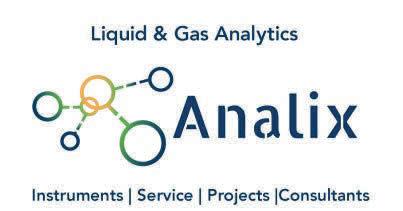


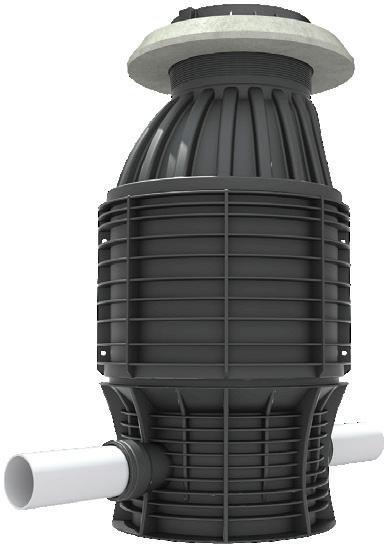
“The two main differences are that people are not staying here for long so needs and numbers change day by day. Another difference is that people are staying inside in buildings like shopping centres which already have some facilities like water and toilets.
“To adapt these facilities to the needs of the refugees we are applying innovative ways of working like installing standalone toilets. The value that Oxfam is bringing is taking the basic facilities in water and sanitation to a higher level and adapt them to the needs of the refugees.

“We have installed showers here at Korczowa because people have already been on the move before the come here and need to be able to shower for hygiene reasons but also to relax and find comfort. In this way we also give them back their dignity after the traumatic experiences they have gone through.”
Three women who reached the reception center at Ukrainian House, a centre set up by Oxfam for refugees fleeing Ukraine, talked about their experience to us. Although these women have made friends, are seen hanging out, playing with the many pet dogs at the camp, eating pizza and smiling, you can see the pain of the last few months on their faces.
Milla cannot stop talking about the horrific memories she has of the last weeks in her once so peaceful town Polohy in the Zaporizhia region. Her face still shows the scars of the wounds caused by the glass of the exploding windows after a bomb hit very close to her house.
“After the house became uninhabitable, we moved from one basement to another for a month. It was the longest nightmare I ever had. Our town and our normal life has disappeared. My daughter was a teacher, but her school was destroyed.”
Milla’s daughter cannot stop crying while her mother is telling
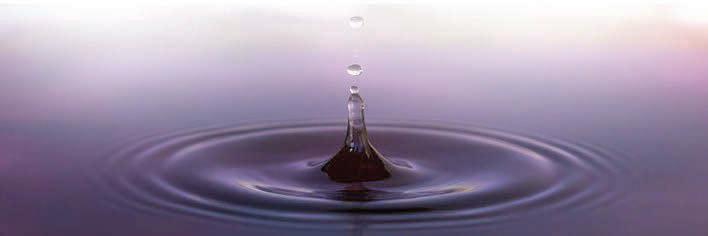
us their story. She, like many of the women in the reception centre still looks very neat, her clothes in matching colours, her hair nicely done and her nails polished.
“It is the only thing I can do to hide the wreck I am inside,” says Milla.



Oxfam is one of the world’s leading providers of humanitarian aid in emergencies, with well-recognised expertise in clean water, sanitation, public health, food security, and the protection of civilians.
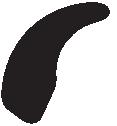
We launch rapid responses after tropical cyclones, earthquakes and volcanoes, and support those who have been displaced by conflict. And we stay for the long-term to help people rebuild their livelihoods and reduce the risk of future disasters, so that everyone has what they need not just to survive, but thrive.
It’s from donations that we’re able to continue this work. Head to Oxfam.org.nz to learn more.
100 www.waternz.org.nz WATER NEW ZEALAND HUMANITARIAN
09 394 3705 info@analix.co.nz www analix.co.nz Liquid Measurement pH/Cond/ORP Turbidity/TSS DO/Nutrients Alkalinity/Hardness And many more.. Gas Measurement CEMS SOx/NOx Low level O2/H2S Toxic/Flammable PID and many more.. Process, Lab and Portable equipment
Angus McBride, wash coordinator, checks a handwashing point.
PHOTO COURTESY OF: TINEKE DHAESE, OXFAM.


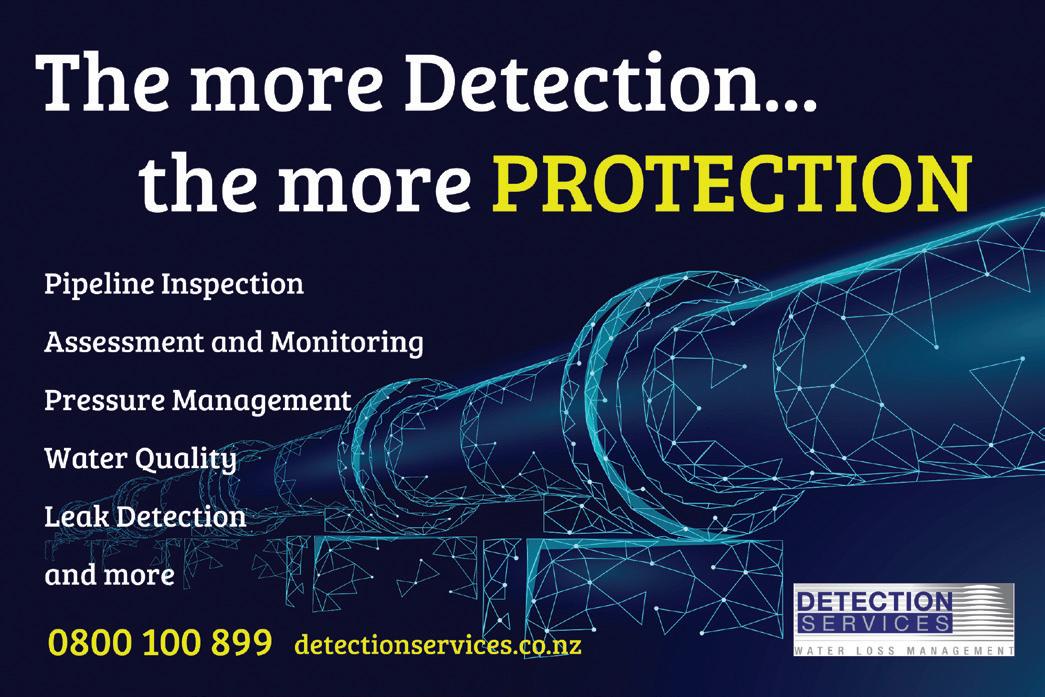











NOVEMBER/DECEMBER 2022 WATER NEW ZEALAND 101 Bay of Plenty Regional Council’s work guides and supports the sustainable development
the Bay of Plenty. Our laboratory and sampling services team is registered with Taumata Arowai and can provide IANZ accredited testing and sampling for a number of different chemical, microbiological and drinking water parameters. For further information on our laboratory testing services go to www.boprc.govt.nz CIWEM HAS A NETWORK OPERATING IN NEW ZEALAND. The Chartered Institution of Water and Environmental Management If you’d like to explore how to become a chartered professional in NZ go to: It is the only Royal Chartered professional body dedicated to water and the environment sector. www.ciwem.org Contact Dan Stevens: dan.stevens@beca.com or Peter.Brooks@greenscenenz.com Wayne Telfer General Manager Mobile: 027 491 4697 Office: 09 278 7109 Email: wayne@conhur.com Web: www.conhur.com 34 Oakleigh Avenue, Takanini, Auckland 2112 PO Box 204021, Highbrook Mail Centre, Manukau 2161 Dredging, Dewatering, Biosolids Cartage and Beneficial Reuse, Sludge Surveys, Wet / Dry Hire of Mechanical Dewatering Equipment Member Water NZ Member PWWA Member ANZBP Member AWA Member WIOA AGRU New Zealand Ltd Huerner Welding Technology Ltd Specialisation in PP, PE, Specialisation in Butt Welding , fittings & piping systems Electro fusion equipment & tools www.agru.co.nz www.huerner.co.nz Ph: 09 299 3640 Mob: 021 329432 @: r.gruen@xtra.co.nz • Waste Treatment Ponds • Marinas • Dams • Lagoons • Lakes 07 868 1129 admin@hydracare.co.nz ◆ DESLUDGING ◆ DESILTING ◆ EXCAVATING SBR Process Systems Thickening Systems Dewatering Systems Consultancy Aeration, Mixing, SBRs, Dewatering Aeration, Mixing, SBRs, Dewatering Aeration Blowers Aeration Diffusers High Efficiency Mixers Sludge Conditioning P: 09 479 3952 E: info@jipl.co.nz www.jipl.co.nz JONASSEN INDUSTRIAL PROJECTS LIMITED Process, Design & Environmental Engineers
of
Acuflo Industries Ltd IFC
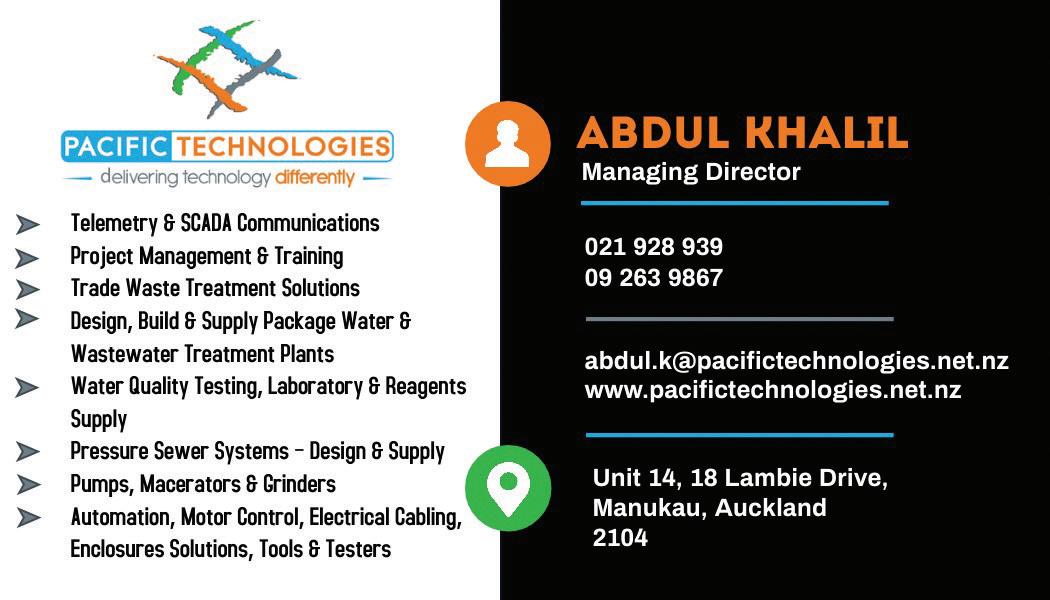
43South 31
ACO Limited ................................................................................................................................92
Agruline 85 Apex Water 61
Applied Instruments Group Ltd 67
AquiSense (Swan) .....................................................................................................................89
Armatec 72
Arthur D Riley & Co Ltd 05
ASSA ABLOY 93
Aussie Trenchless 69 Brown Bros 75 Burkett Fluid Control 70 Chemfeed ......................................................................................................................................79
Cirtex Industries 59 CKL 37 Cla-Val Pacific 27 Connexis ......................................................................................................................................... 81
Deeco Services Ltd 73 Demden 68
Environment Products Int Ltd 47 Filtec 57
Guaranteed Flow Systems 41 Hynds 51
ifm electronic ............................................................................................................................... 51 Interflow 91 KSB Pumps 83 MacEwans 81
Marinaquip ....................................................................................................................................97
Mason Engineers 77 Moddex 23 NZ Controls 23 P and F Global 52 Pattle Delamore 45 Phathom 15
Pipecore 95 Prime Pump 33 Promains 98 Pump Supplies 70 Reliant Solutions
Rendertech 79 Sika Technology 76 Stormwater 360 53
Taumata Arowa
Teltherm Instruments 42
ThermoFisher Scientific 28 Tira 95
Trenchless Supplies & Equipment 98
Water Supply Products IBC Waterpro 35

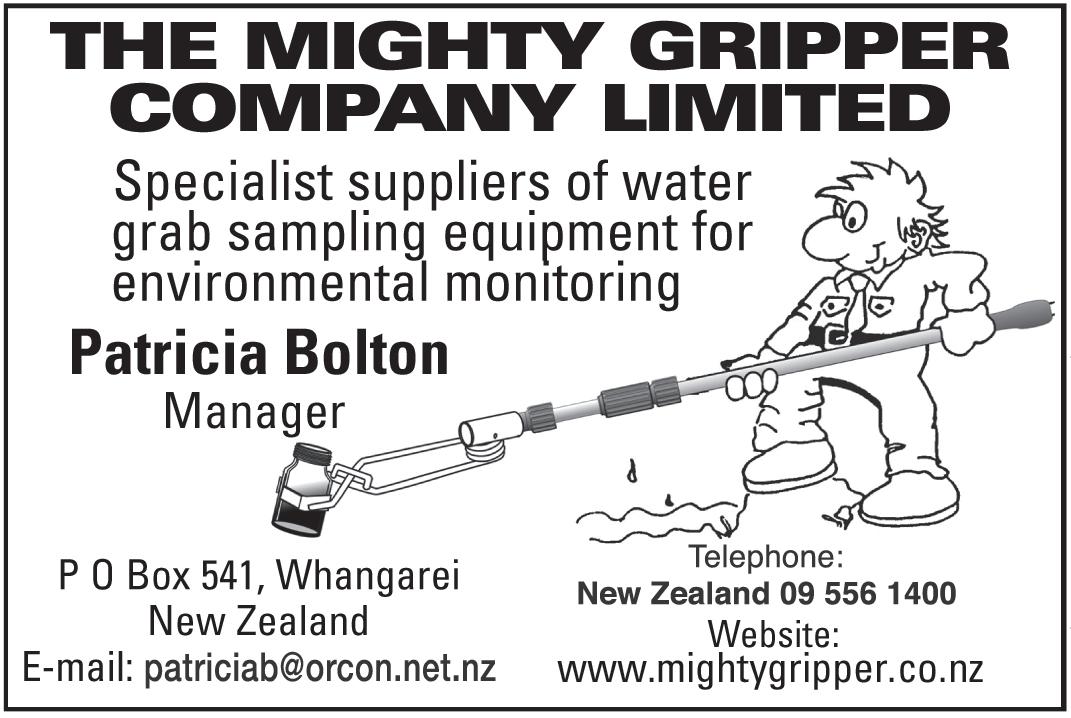
CLASSIFIEDS
Analix ............................................................................................................................................. 100
Australasia Moulding Ltd 100 Backflow Prevention 101
Bay of Plenty Regional Council ..................................................................................... 101
CIWEM 101 Conhur 101
Detection Solutions 101
Huerner Welding Technology Ltd 101 Hydra-Care 101
Jonassen Industrial Projects Ltd 101 Pacific Technologies (NZ) Limited 102 The Mighty Gripper Company Ltd ............................................................................. 102
Laing
102 www.waternz.org.nz
.......................................................................................................................63
.........................................................................................................................43
WATER NEW ZEALAND ADVERTISER'S INDEX YOUR AD HERE FOR JUST CONTACT Debbie
M:
27 455 0223 Email:
plus GST $240
Xylem .......................................................................................................................................... OBC
+64
advertising@waternz.org.nz

HIGH RELIABILITY LOW MAINTENANCE
WTW IQ Sensor Net digital monitoring system for water and wastewater combines many innovative features to provide you flexibility, reliability and durability in continuous monitoring. It is designed and built to last, providing you with many benefits and guaranteeing the quality you choose today will remain long into the future.
Our innovative digital Plug & Play system is suitable for installations of all sizes, making connecting and hot-swapping a breeze. What’s more, the network flexibility of our modular system means you will save on equipment, cable, and installation costs.
The IQ Sensor Net is available with controllers suitable for one, all the way up to 20 sensors, and is easy to install, operate and maintain. Providing a wide range of measuring parameters for both water and wastewater, the IQ Sensor Net offers multiple output options including 4-20mA, Modbus, Profibus, and EthernetIP - as well as an optional built-in web-server for remote access.
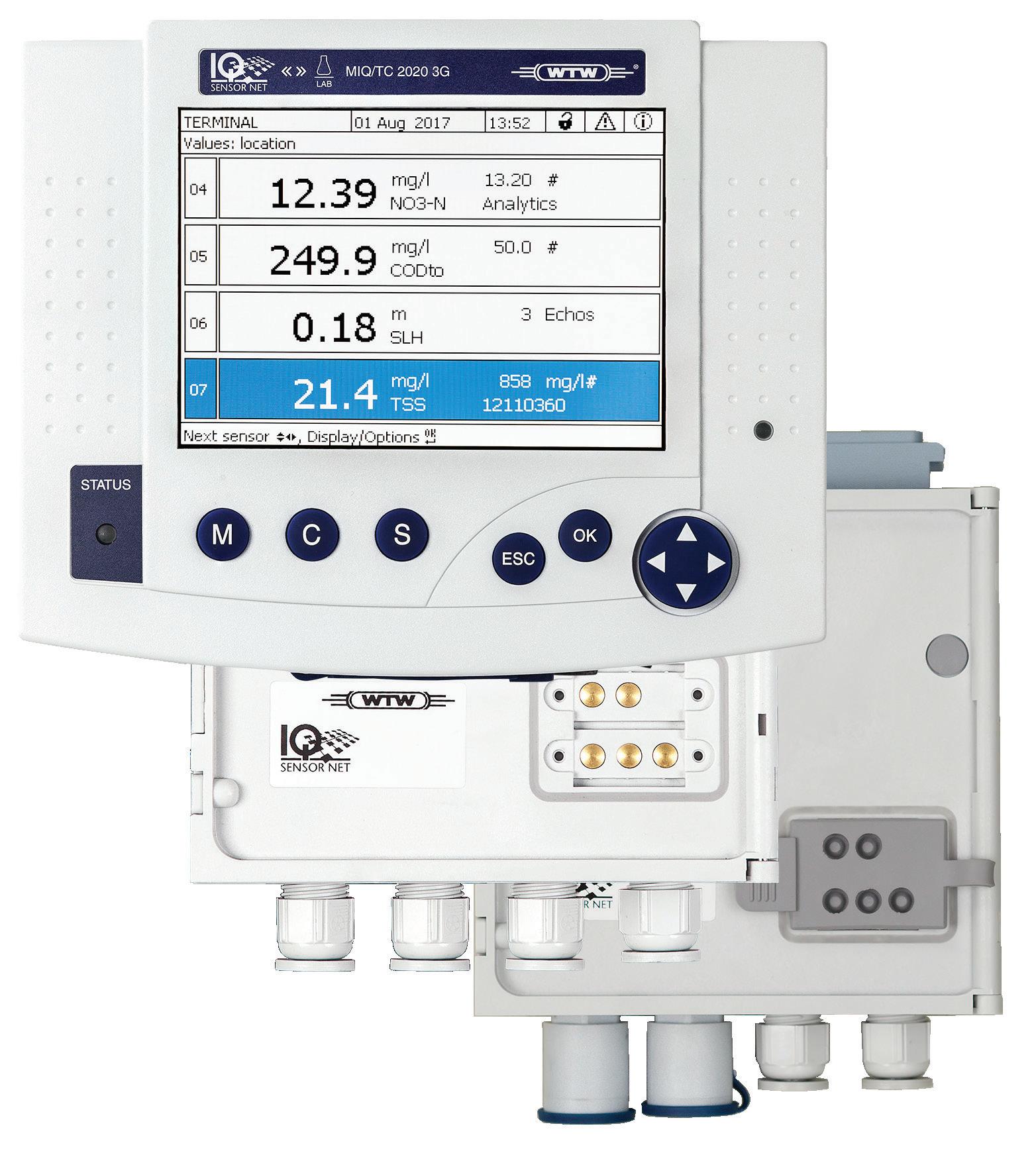
Rugged, reliable, and requiring low maintenance, the WTW IQ Sensor Net is the perfect solution to your water quality measuring needs.

0800 33 19 14 | xylem.com/nz






























































 insight underwater
insight underwater

















 The Pipeline and Civil Project Award Frankton Flats Trunk Main Rehabilitation. With their trophy are Jason Climo and Simon Mason of Veolia Water. (Read about the project on page 24.)
The Hynds Paper of the Year Award ‘Using Remote on-line Data Analytics to Identify Your Sewer Rats’, by Hugh Ratsey of The Wastewater Specialists, Andre Dine and Phil de Groot of Trility.
The IXOM Operations Award for the Waiohine Treated Water Reservoir: Nick Hewer-Hewitt of Wellington Water
The Pipeline and Civil Project Award Frankton Flats Trunk Main Rehabilitation. With their trophy are Jason Climo and Simon Mason of Veolia Water. (Read about the project on page 24.)
The Hynds Paper of the Year Award ‘Using Remote on-line Data Analytics to Identify Your Sewer Rats’, by Hugh Ratsey of The Wastewater Specialists, Andre Dine and Phil de Groot of Trility.
The IXOM Operations Award for the Waiohine Treated Water Reservoir: Nick Hewer-Hewitt of Wellington Water




 Environmental Sustainability Project Award , sponsored by Morphum Environmental, was won by Christchurch City Council for the Eastman Wetland and Cashmere Stream Restoration Project. With the trophy are Mark Penrace and Peter Christensen of Storm Environmental. (Read about the project on page 29.)
The Water New Zealand Poster of the Year BRANZ et al., University of Auckland and Water New Zealand for ‘How Kiwis use Water in their Homes’. With the trophy are Lesley Smith and Gillian Blythe of Water New Zealand. (See the winning poster on page 19.)
The Hynds Paper of the Year Silver Award ‘The Benefits of Formalised Condition Assessment Programmes for Water Utilities Based on Lessons Learned’, by Steven Apeldoorn of ProjectMax and Robert Blakemore of Wellington Water.
The Hynds Presentation of the Year Dr Matt Savage of Apex Water for ‘Innovative Wastewater Treatment Systems for Extreme Alpine Environments’.
Site Safe New Zealand Health and Safety Innovation Award Wellington Water for its Water Industry Specific Asbestos Awareness Training. With the trophy are Anna Bridgeman of Stantec and Robert Mackie, Wellington Water.
Environmental Sustainability Project Award , sponsored by Morphum Environmental, was won by Christchurch City Council for the Eastman Wetland and Cashmere Stream Restoration Project. With the trophy are Mark Penrace and Peter Christensen of Storm Environmental. (Read about the project on page 29.)
The Water New Zealand Poster of the Year BRANZ et al., University of Auckland and Water New Zealand for ‘How Kiwis use Water in their Homes’. With the trophy are Lesley Smith and Gillian Blythe of Water New Zealand. (See the winning poster on page 19.)
The Hynds Paper of the Year Silver Award ‘The Benefits of Formalised Condition Assessment Programmes for Water Utilities Based on Lessons Learned’, by Steven Apeldoorn of ProjectMax and Robert Blakemore of Wellington Water.
The Hynds Presentation of the Year Dr Matt Savage of Apex Water for ‘Innovative Wastewater Treatment Systems for Extreme Alpine Environments’.
Site Safe New Zealand Health and Safety Innovation Award Wellington Water for its Water Industry Specific Asbestos Awareness Training. With the trophy are Anna Bridgeman of Stantec and Robert Mackie, Wellington Water.



























































































































































































































































































































